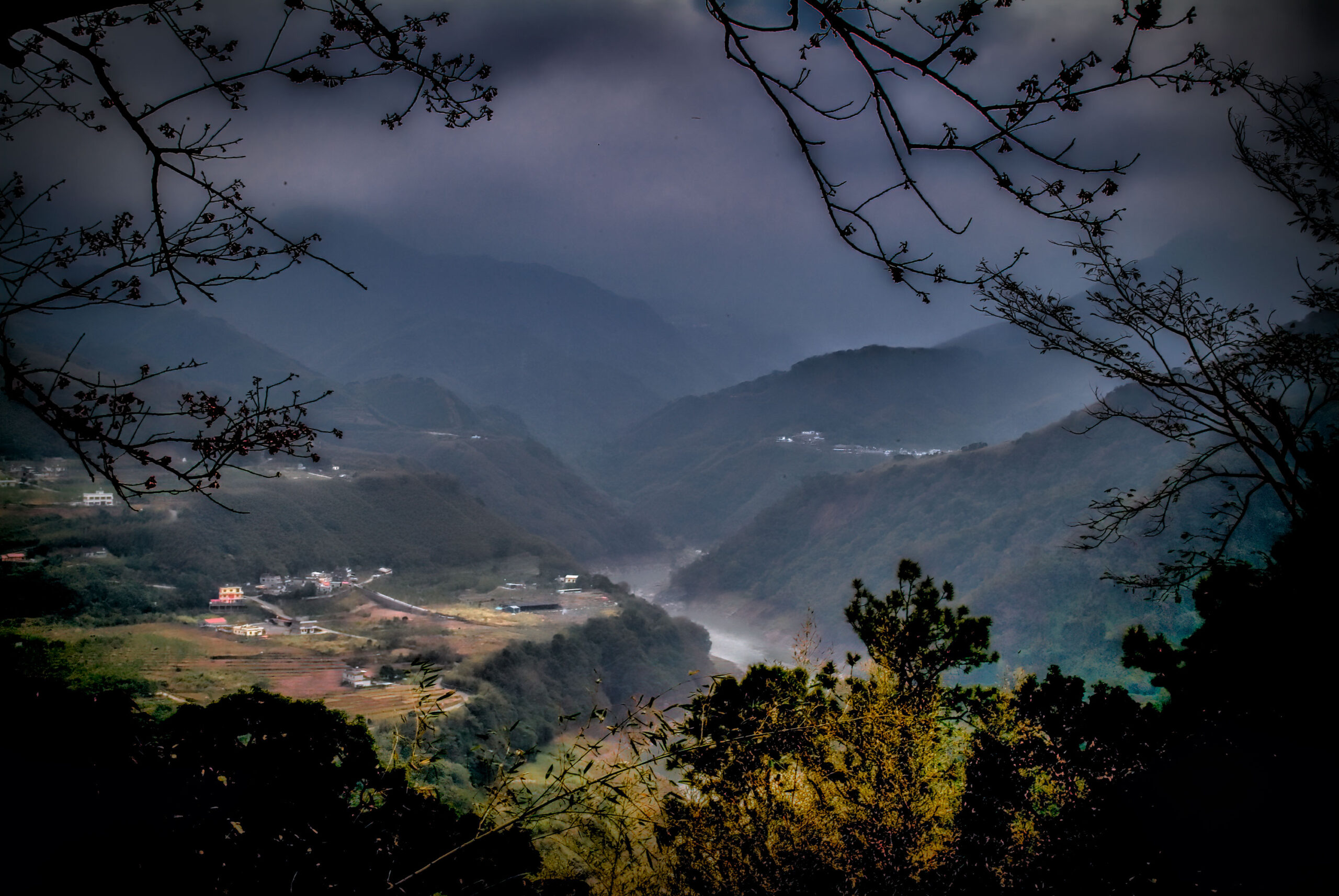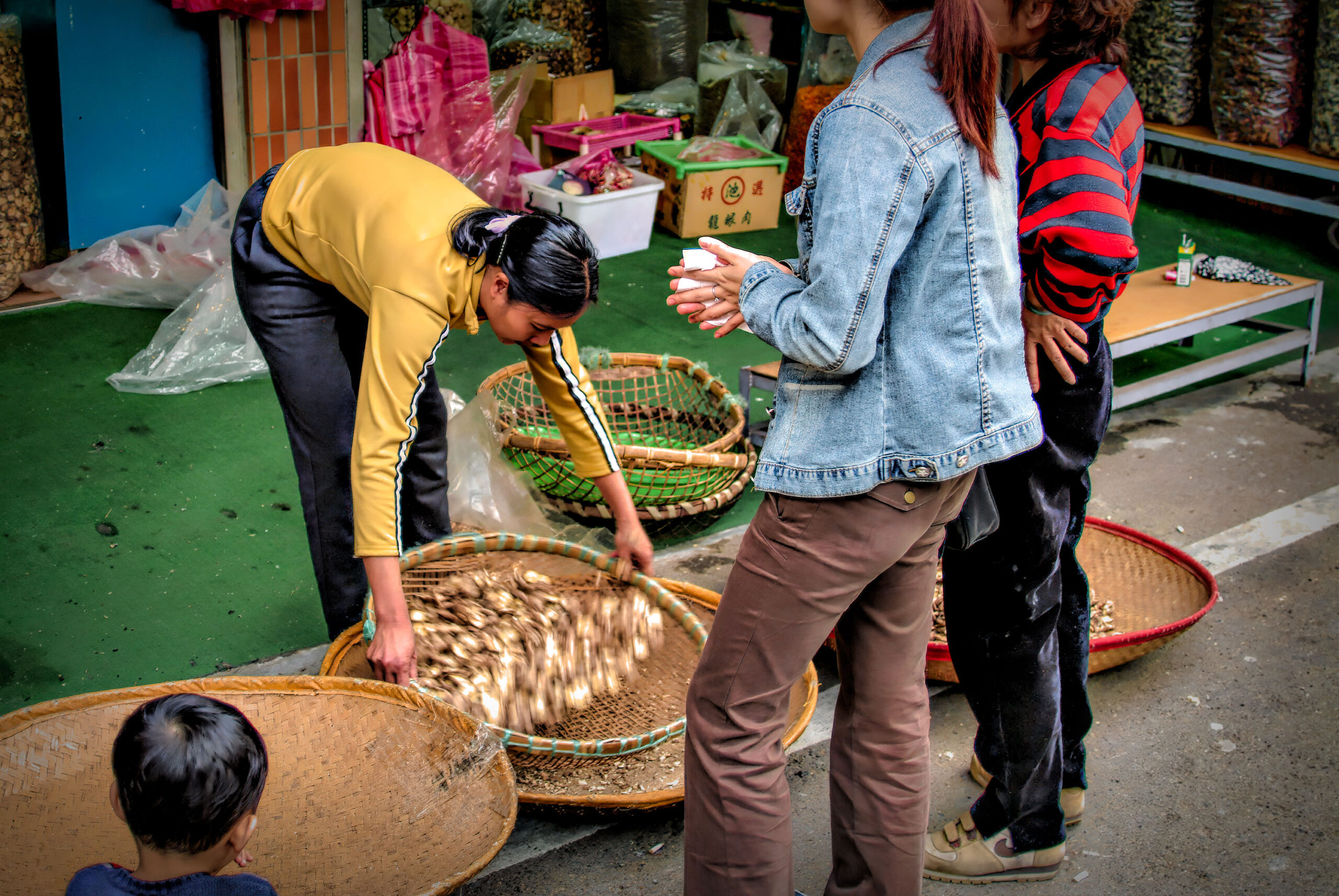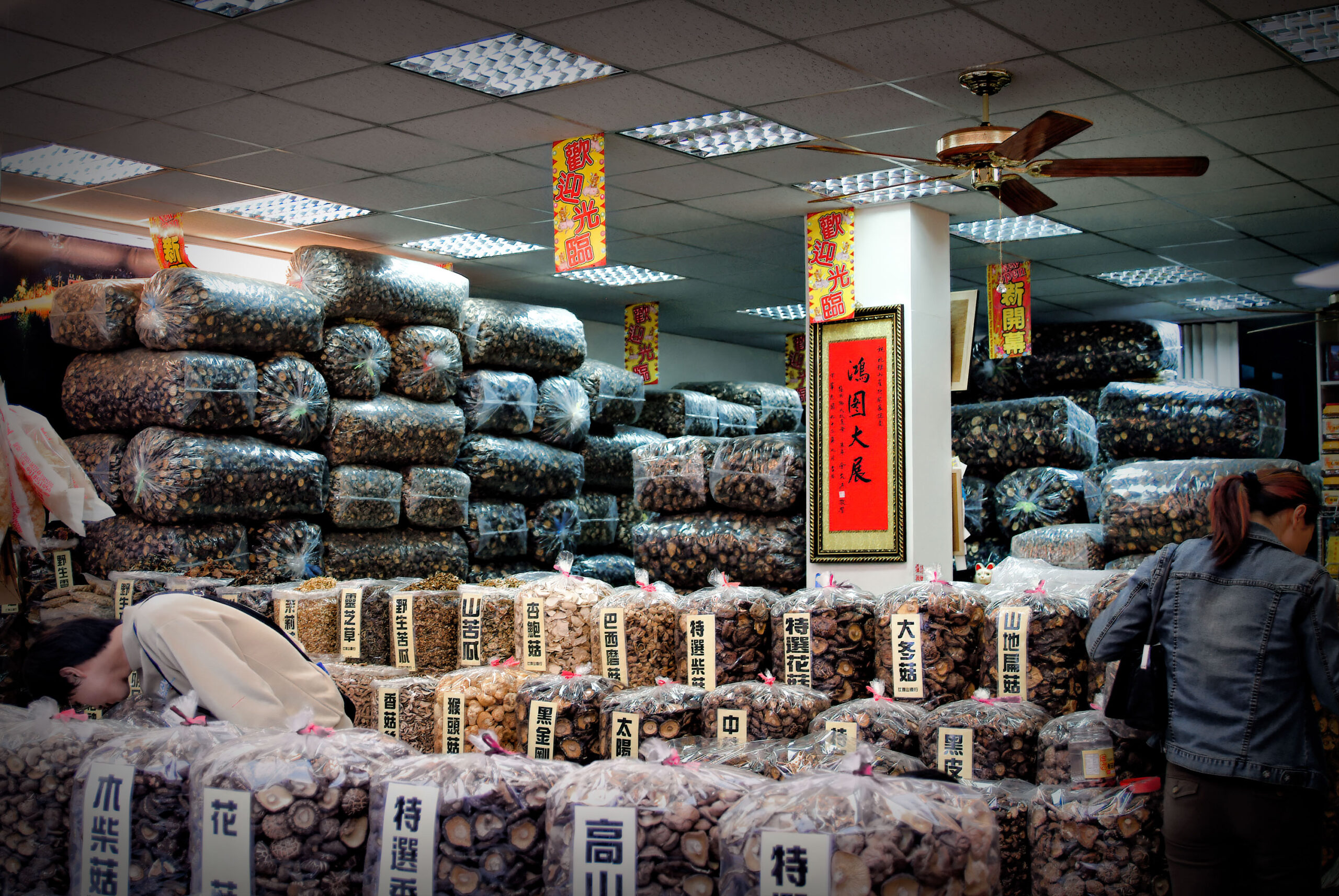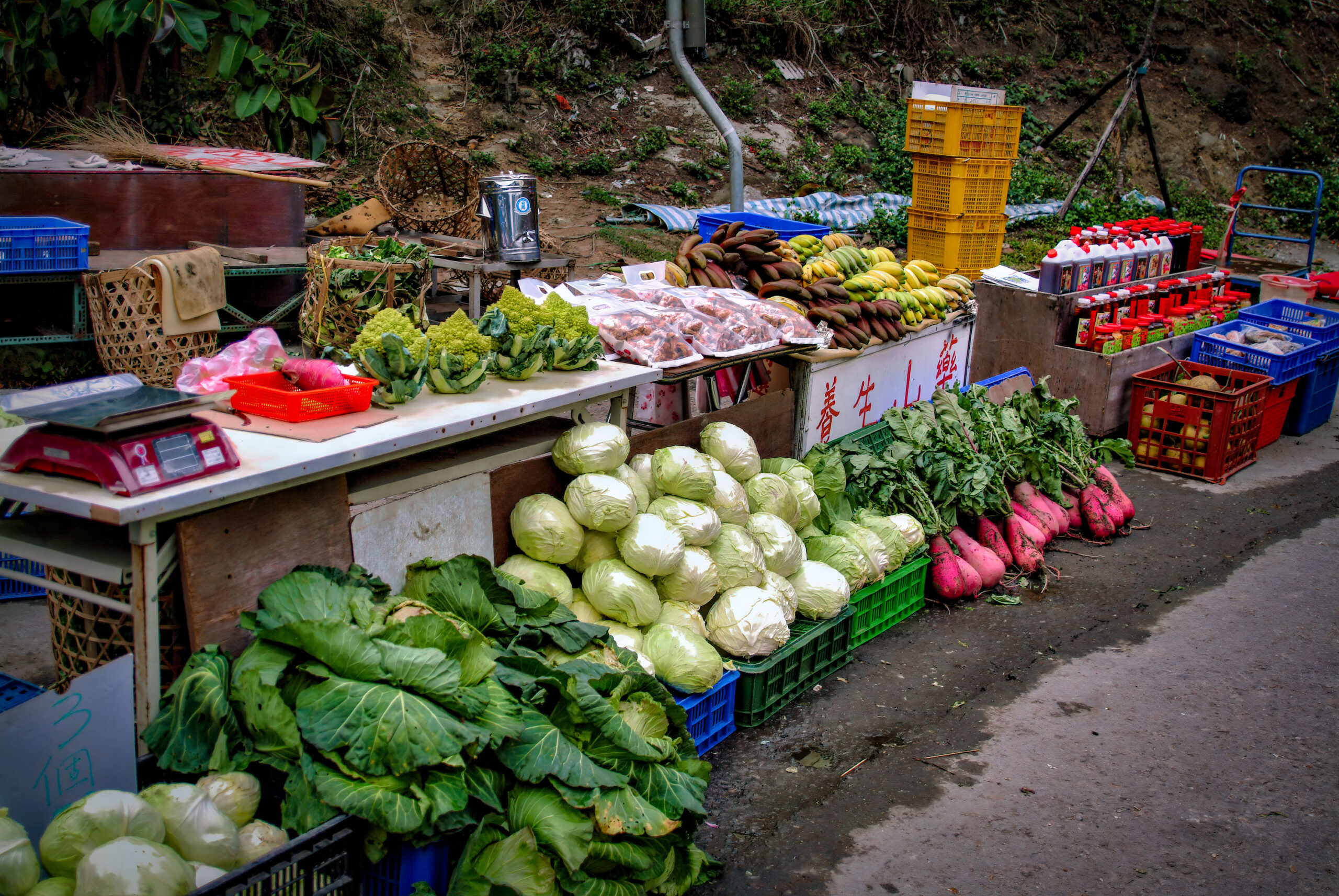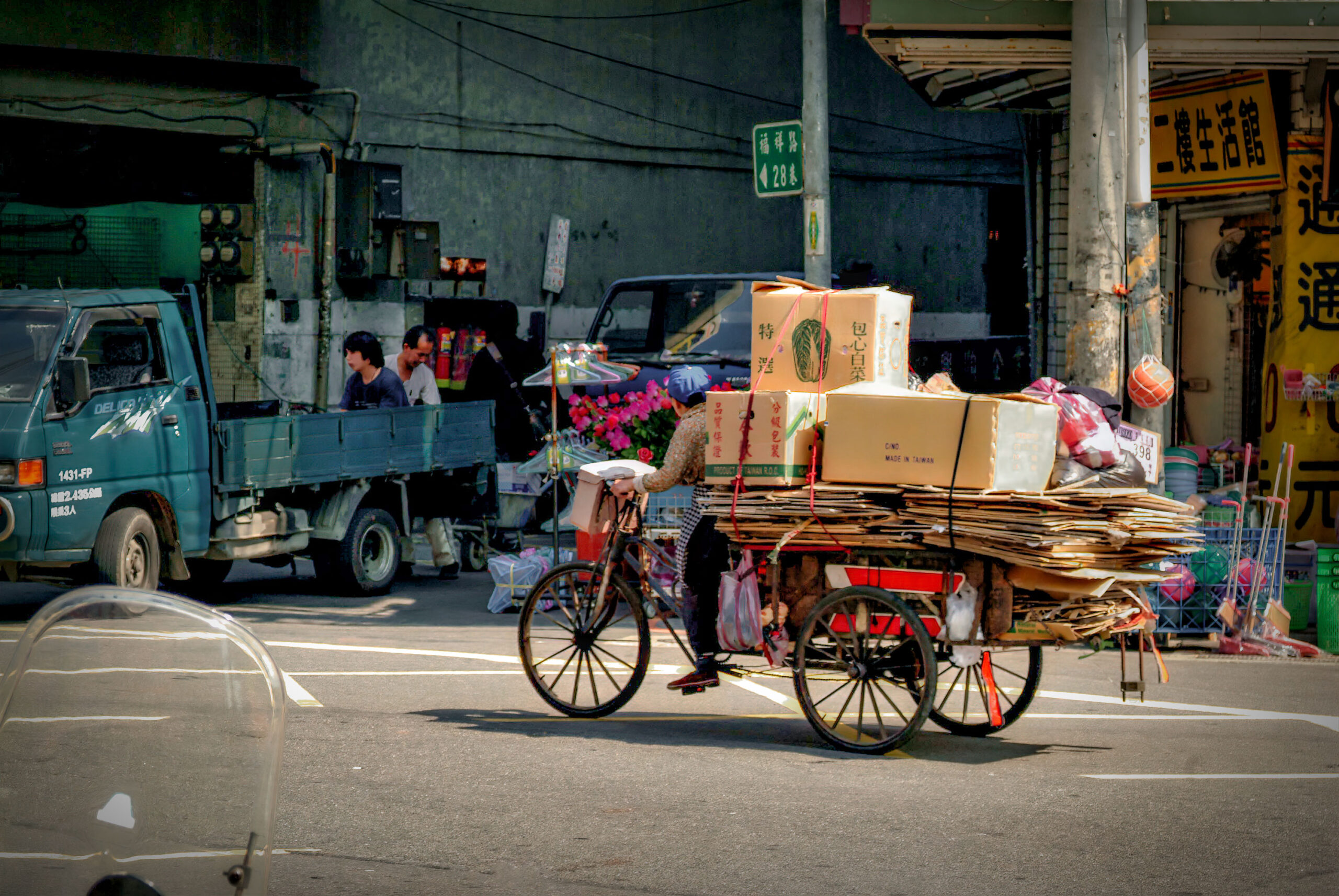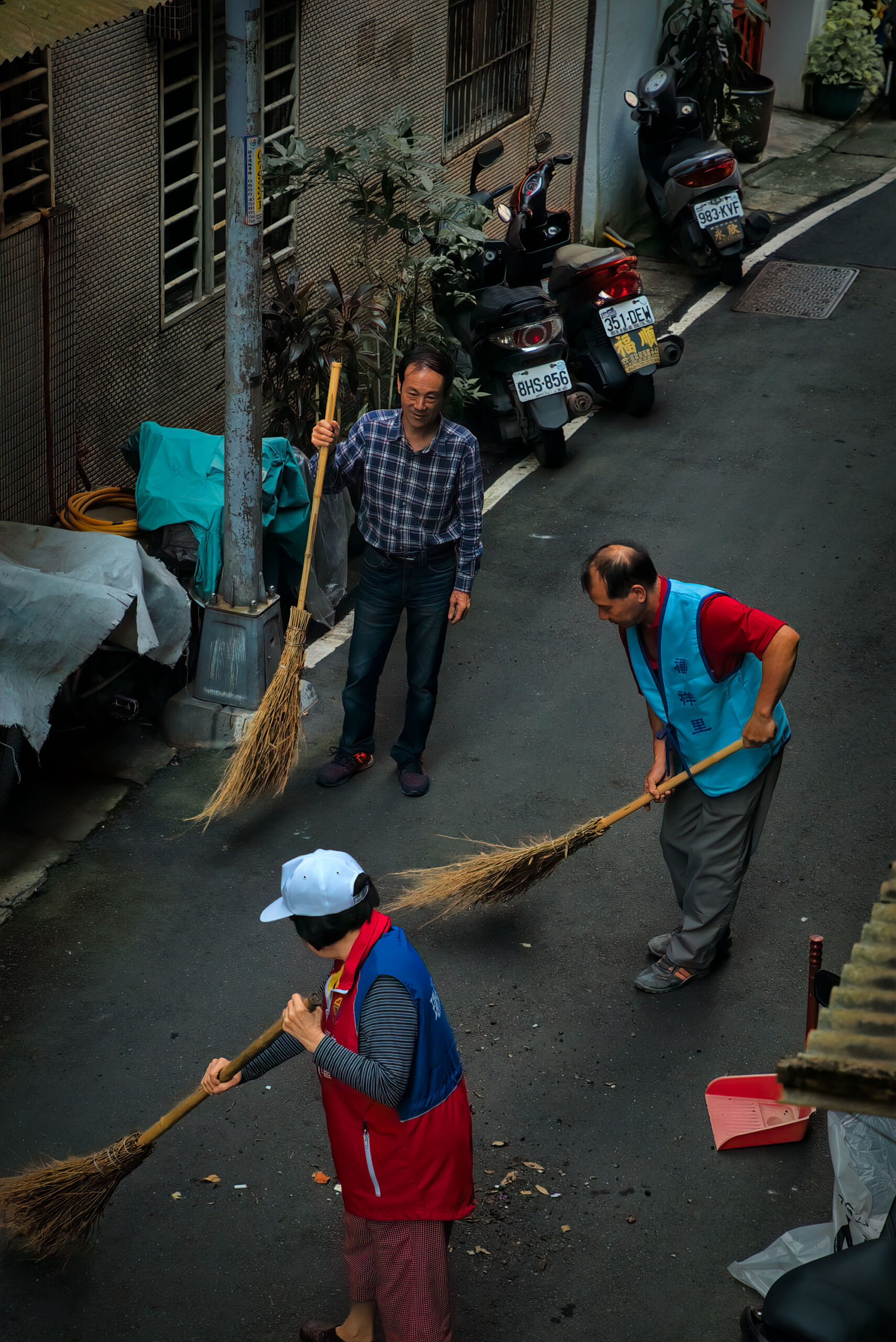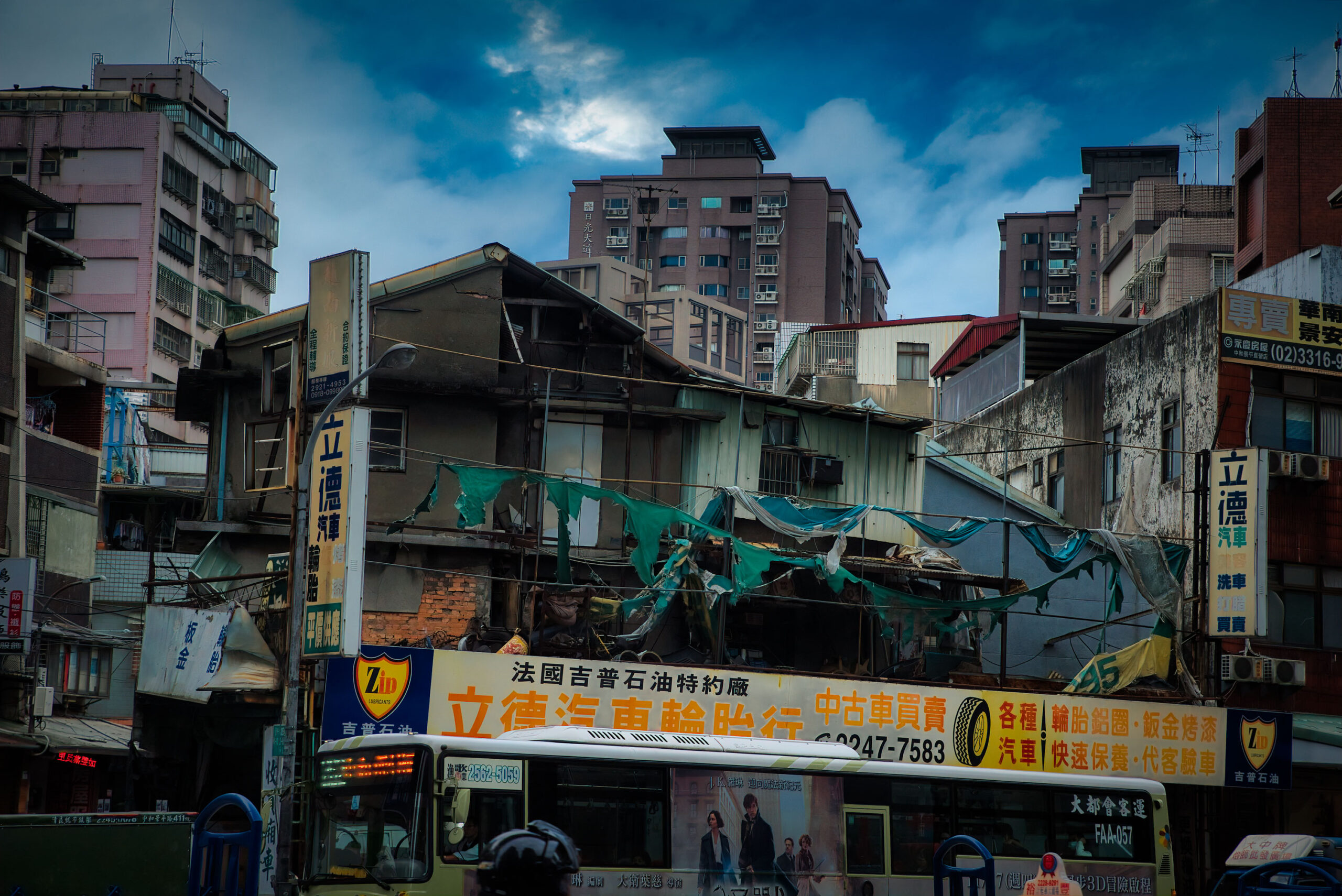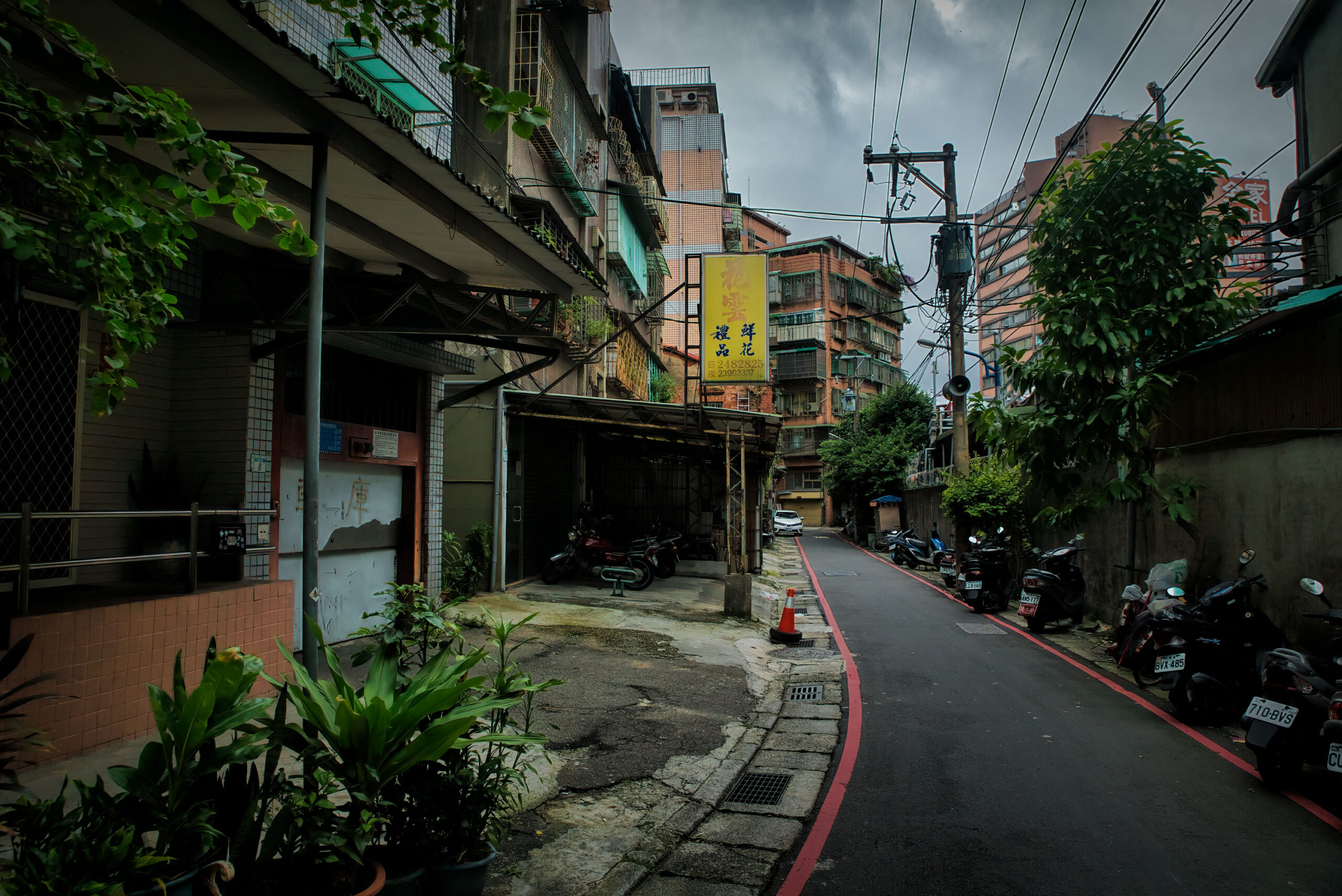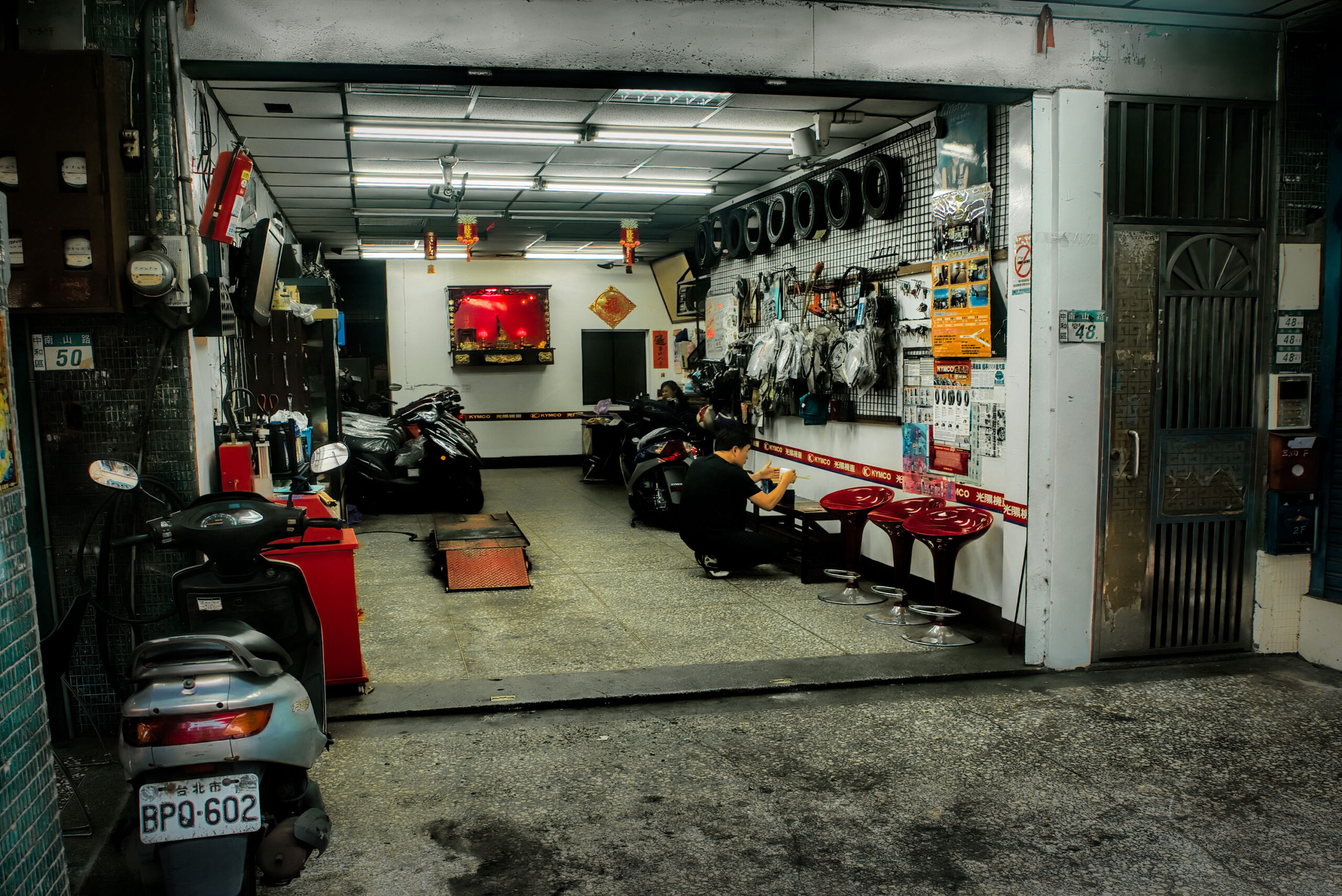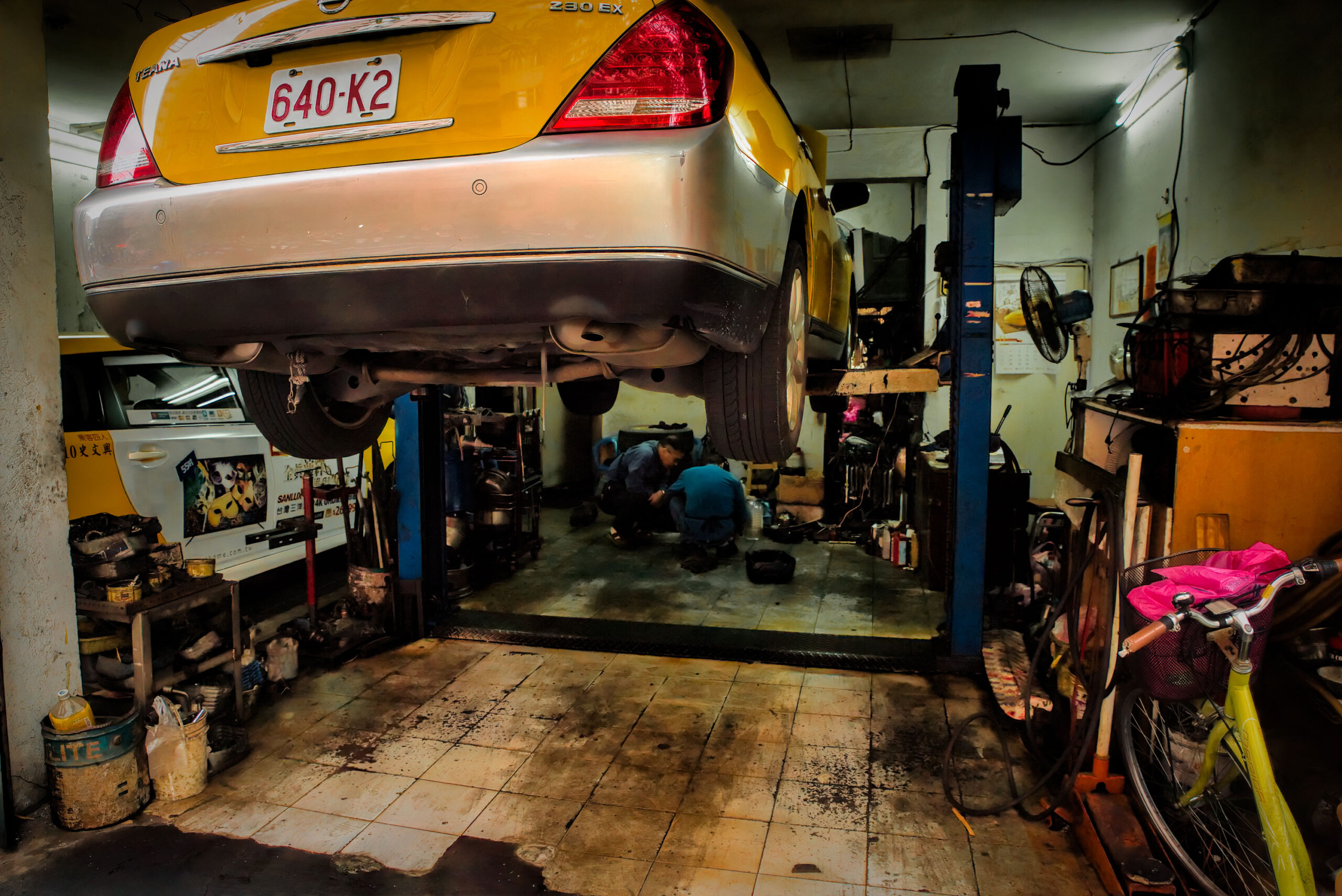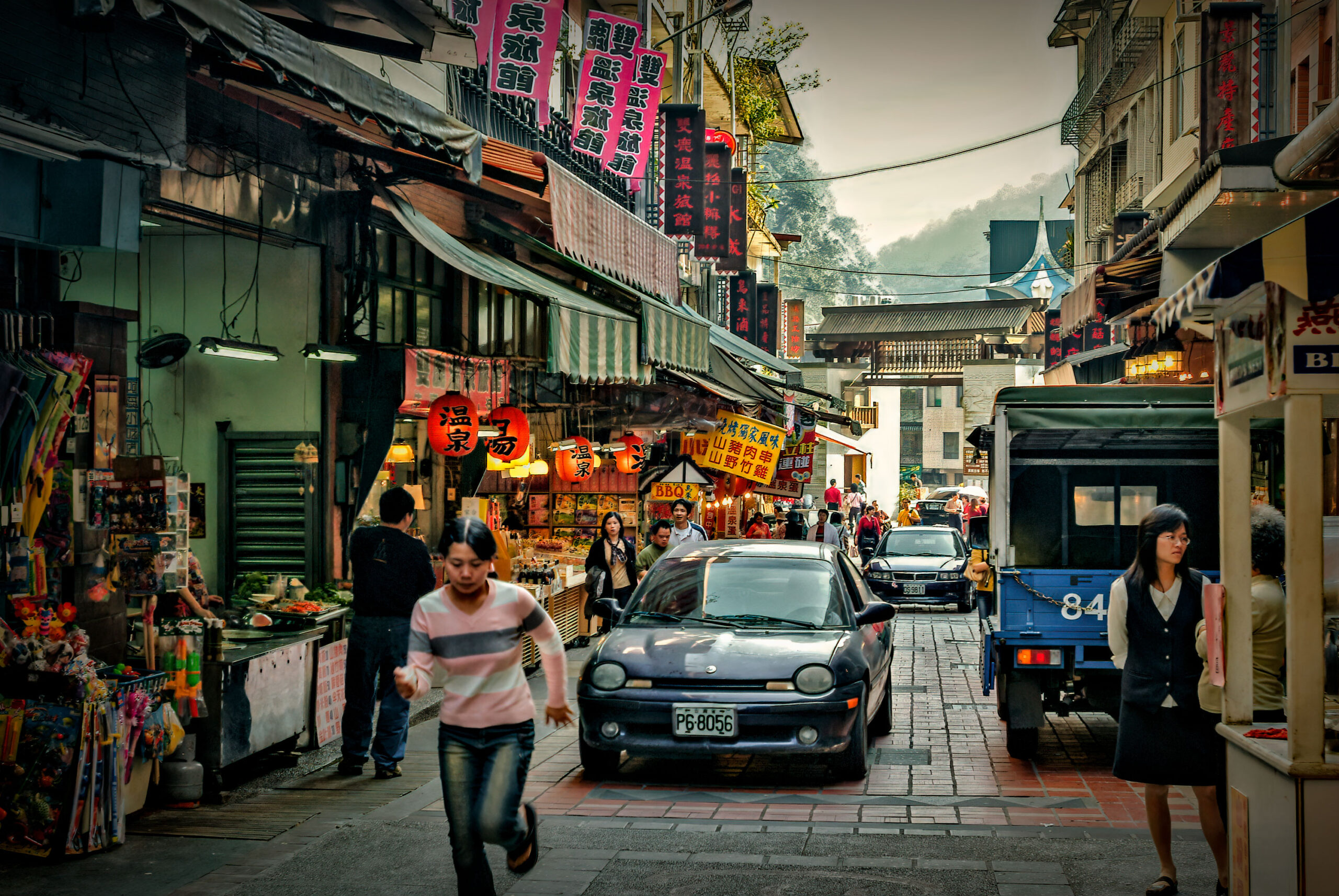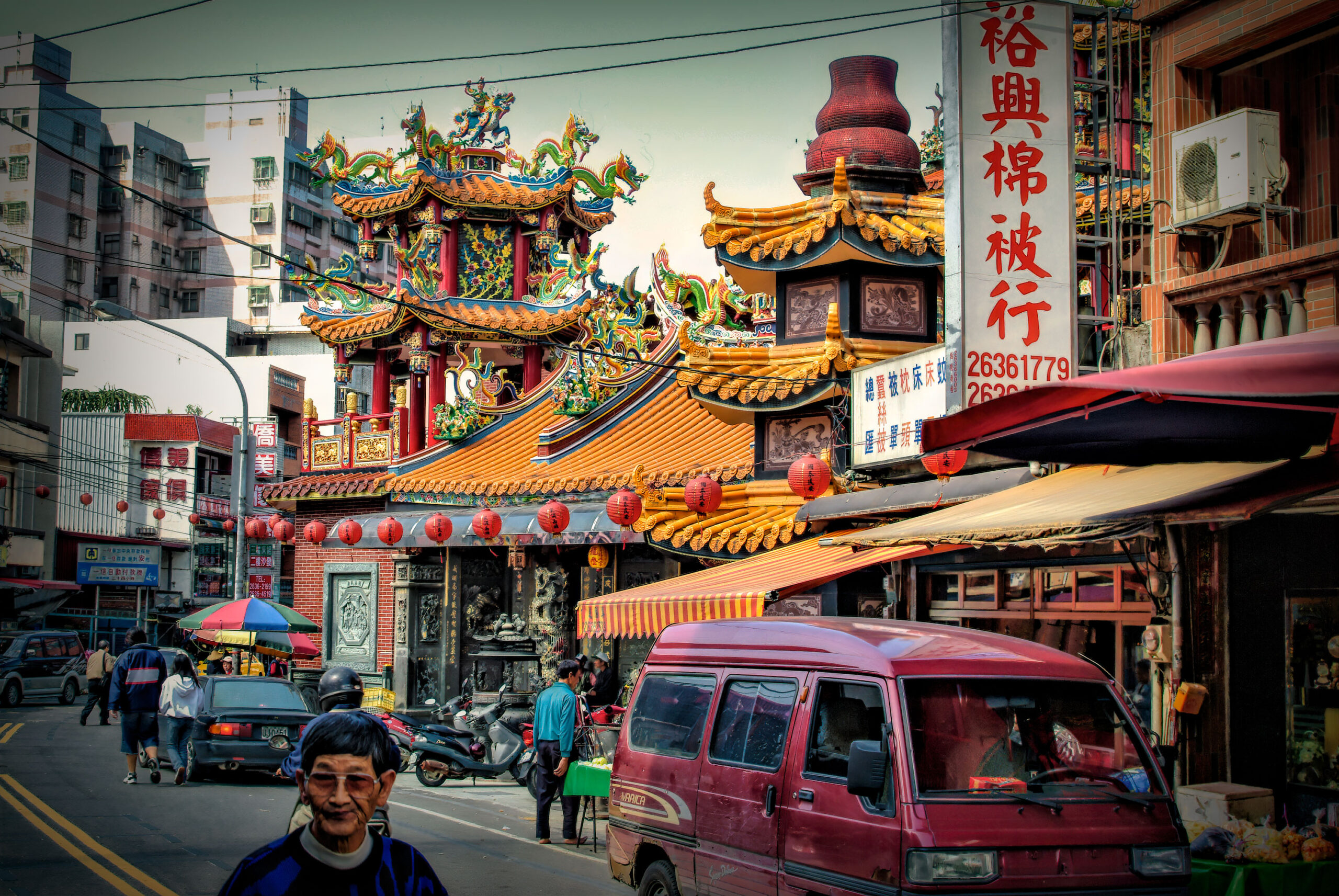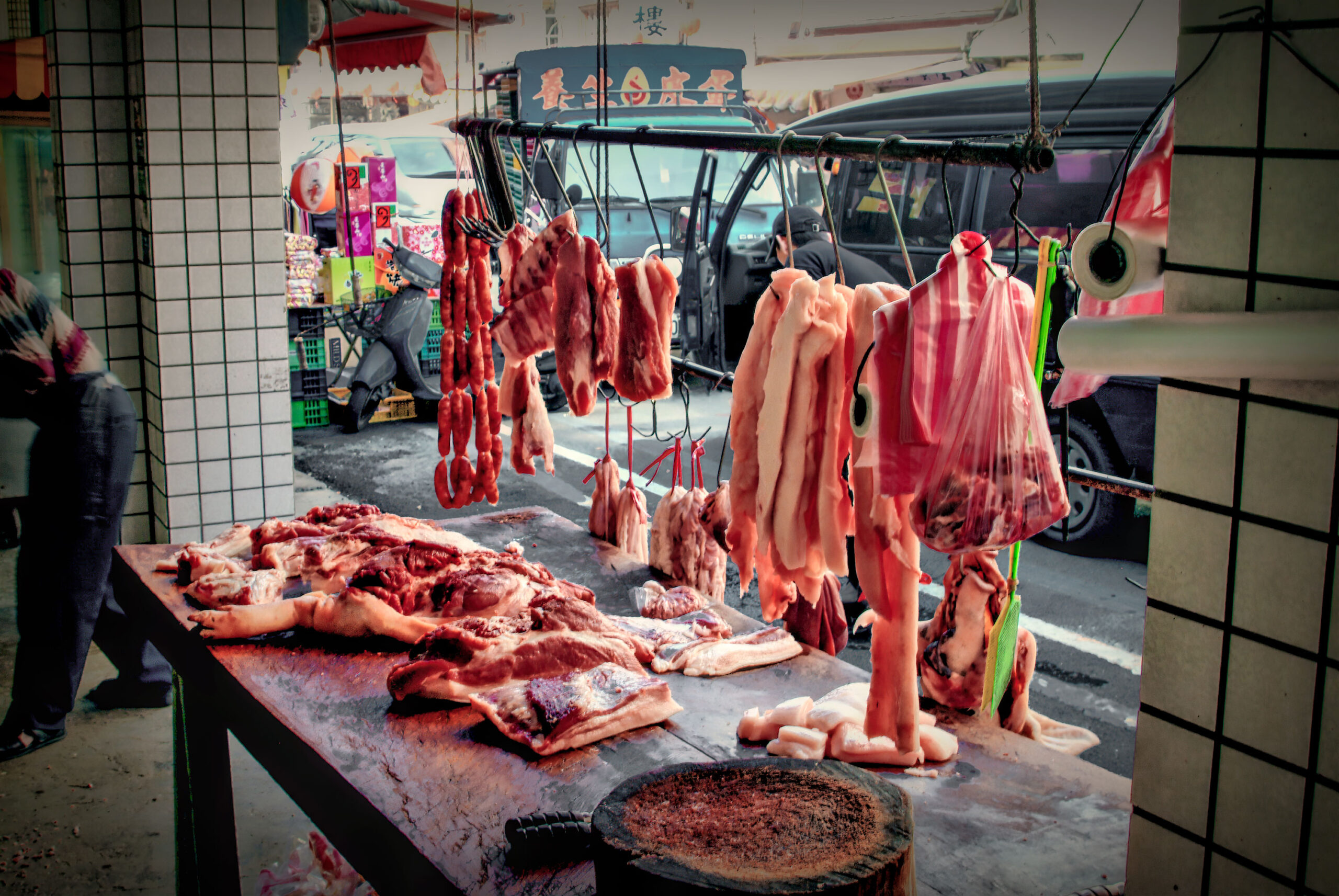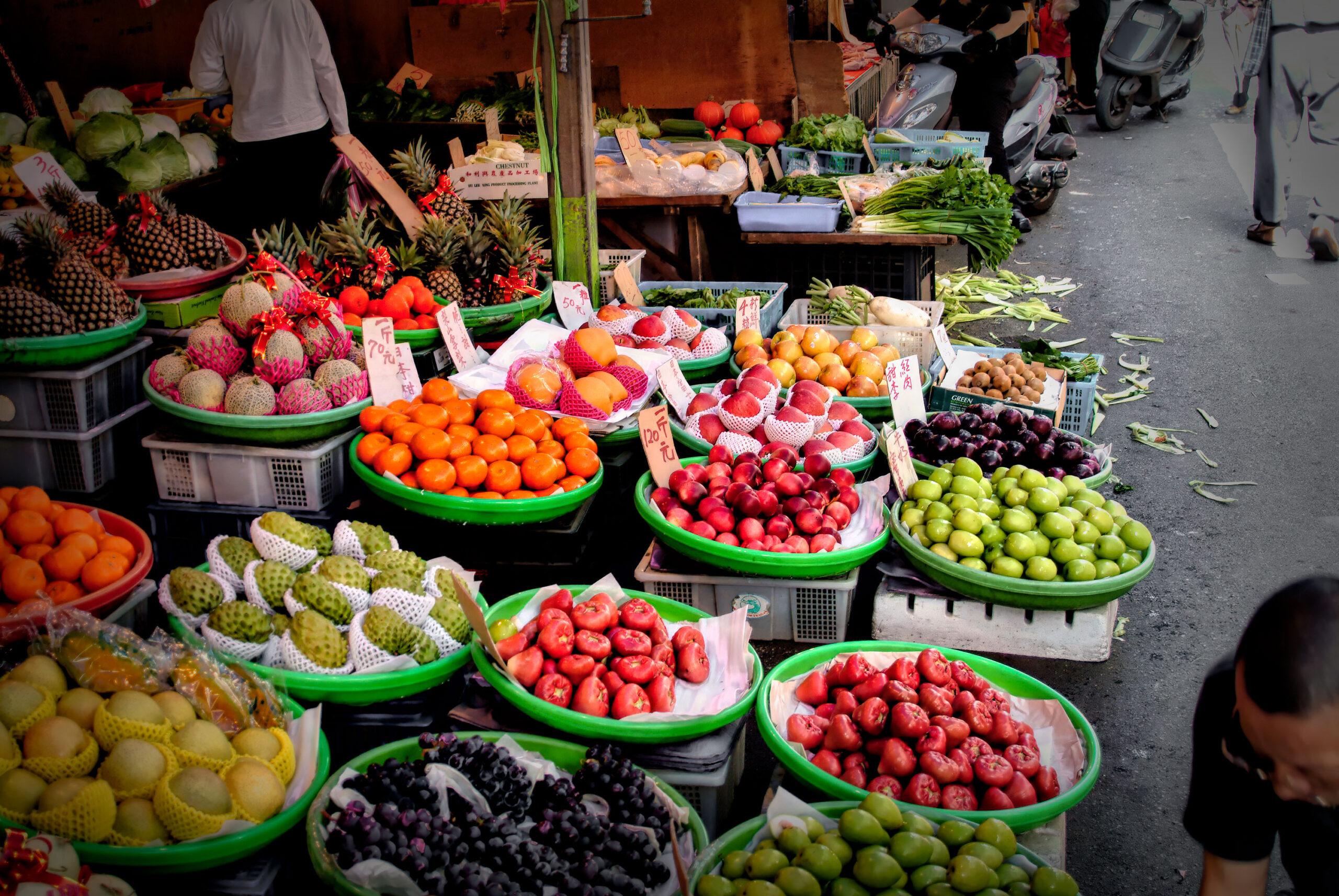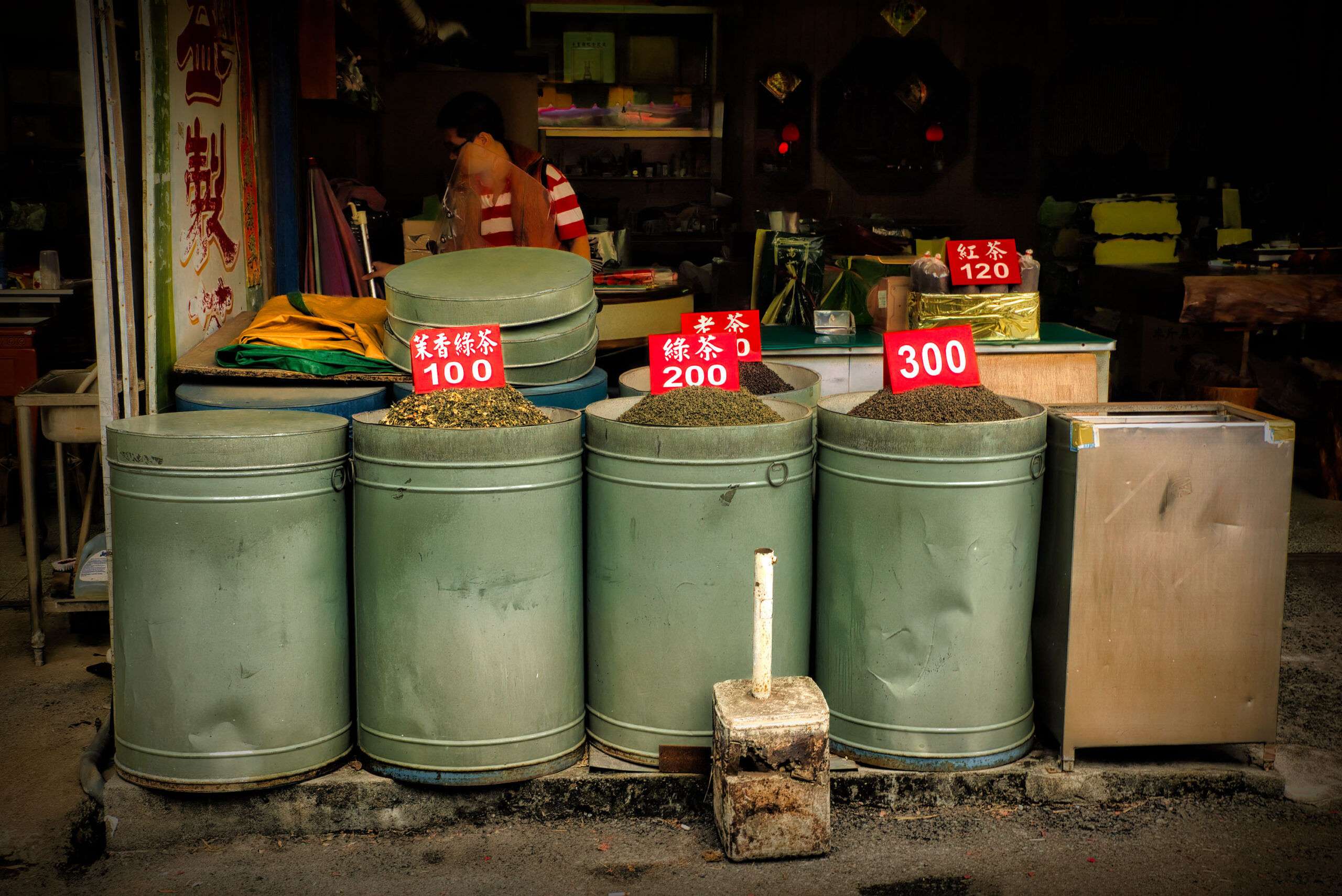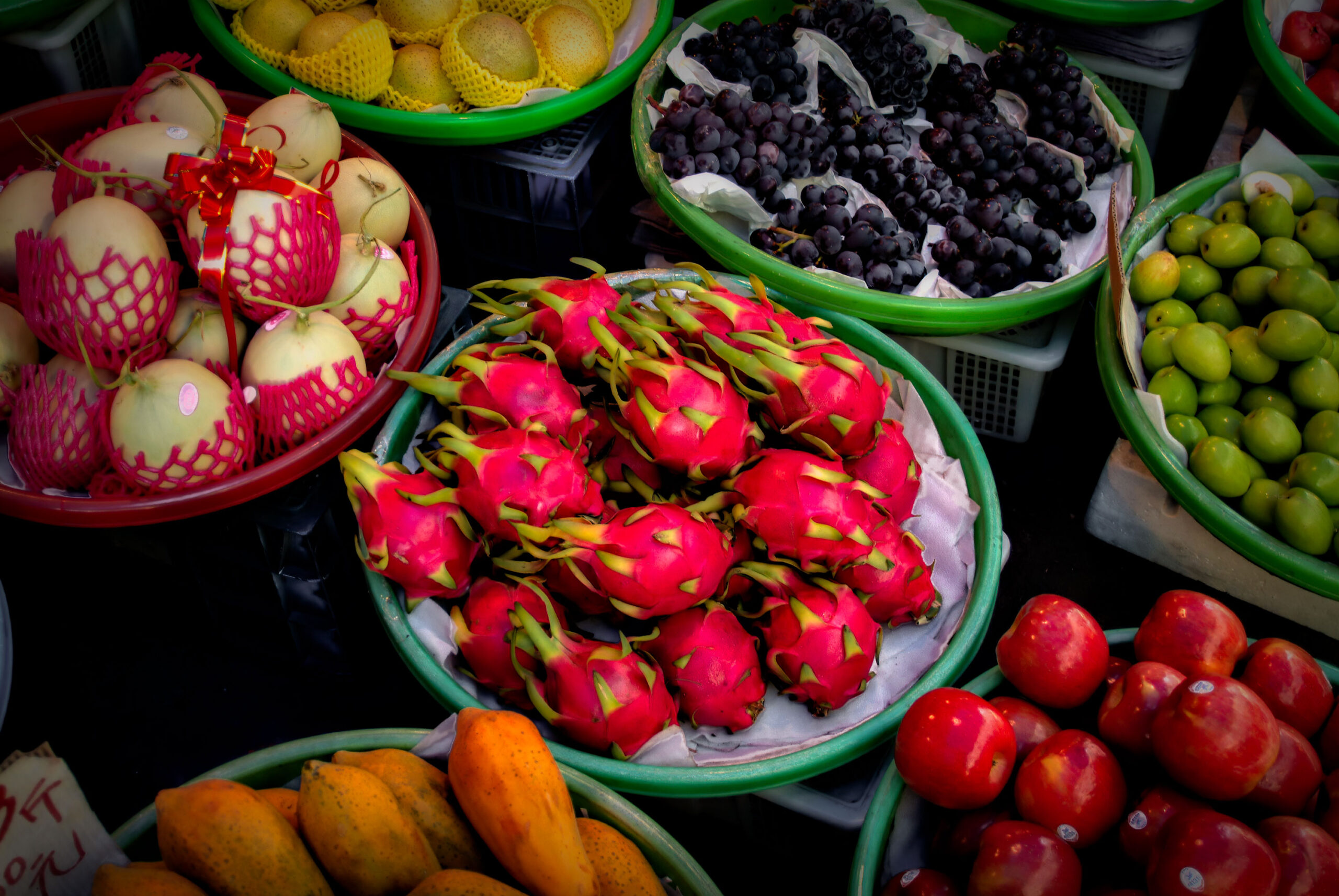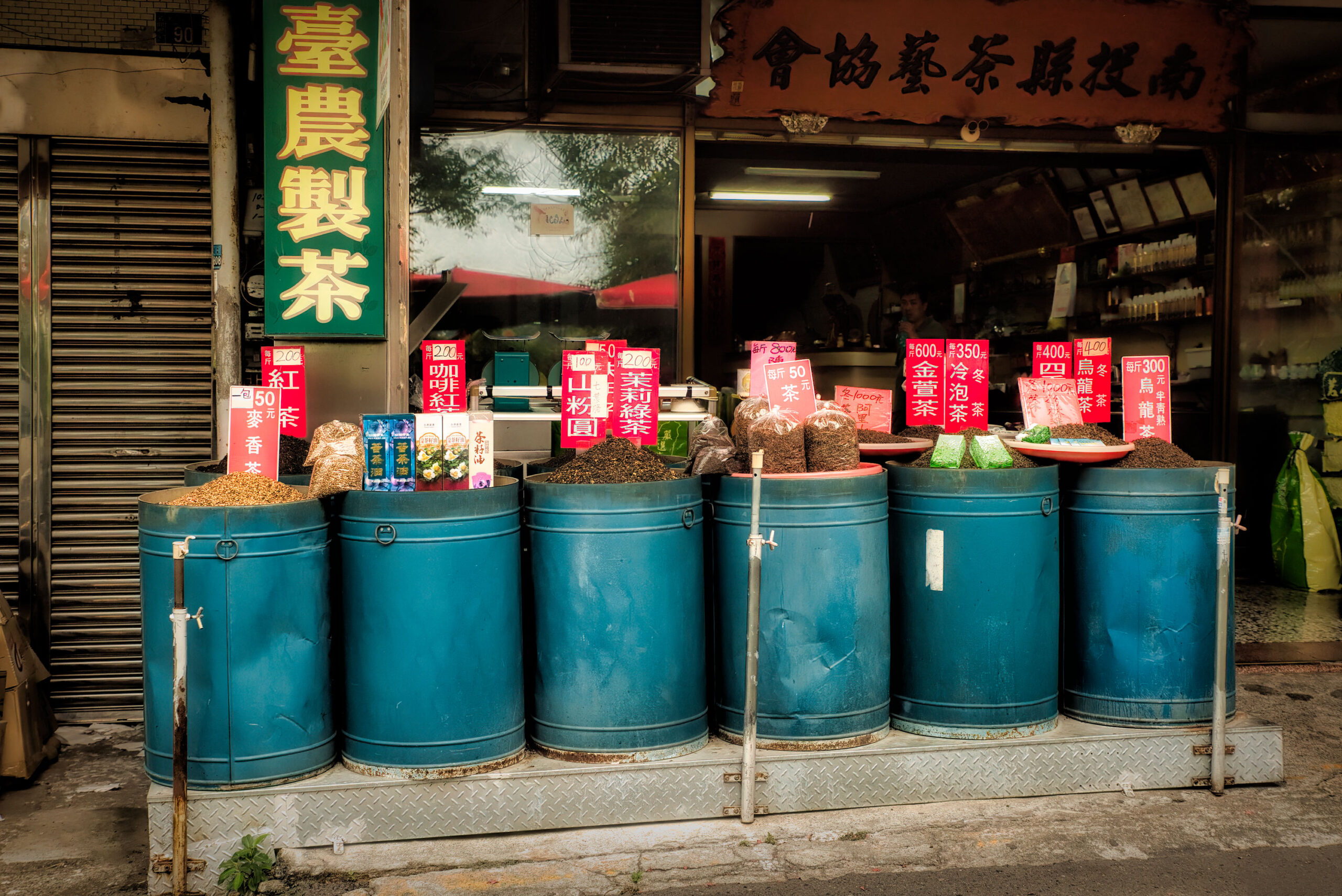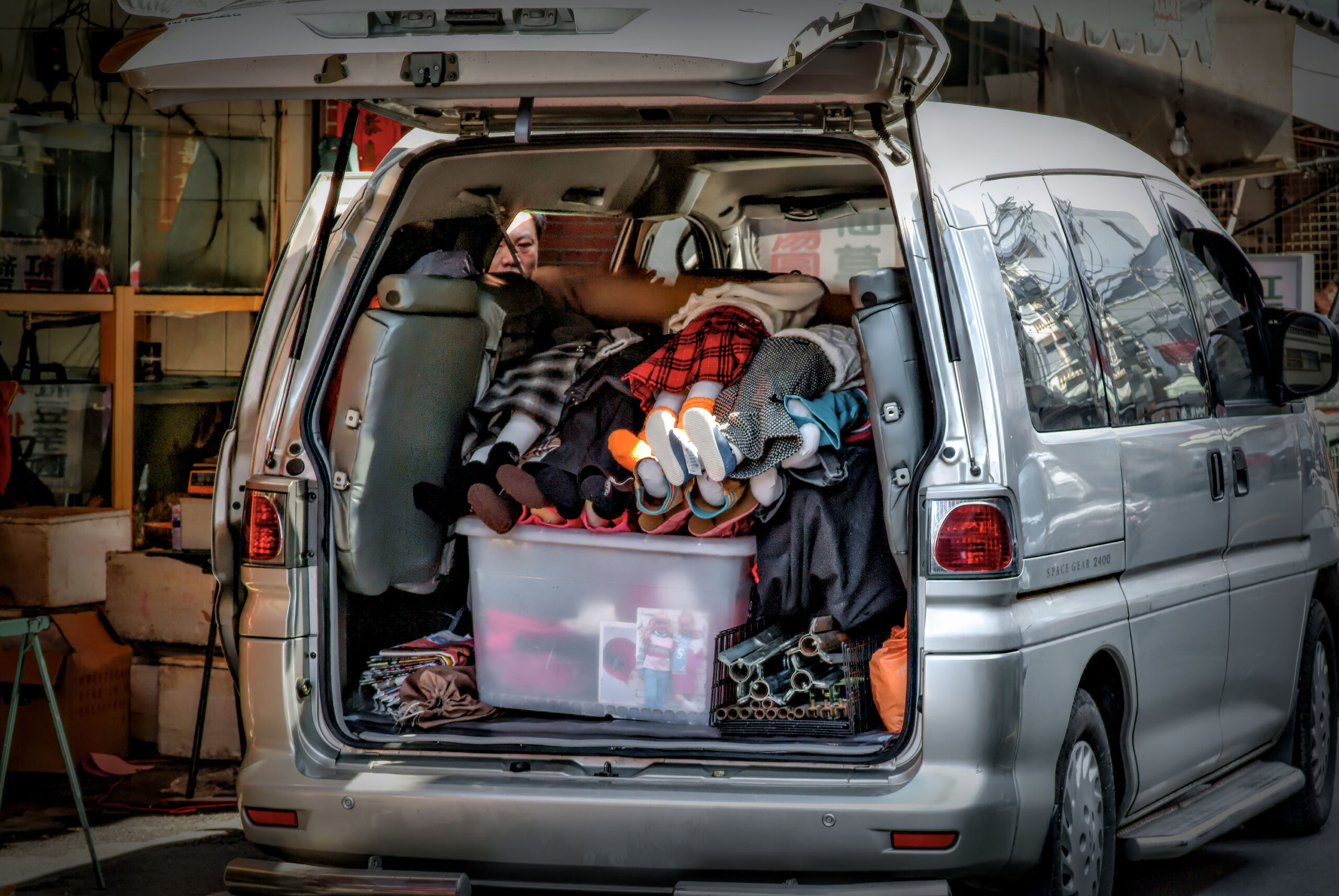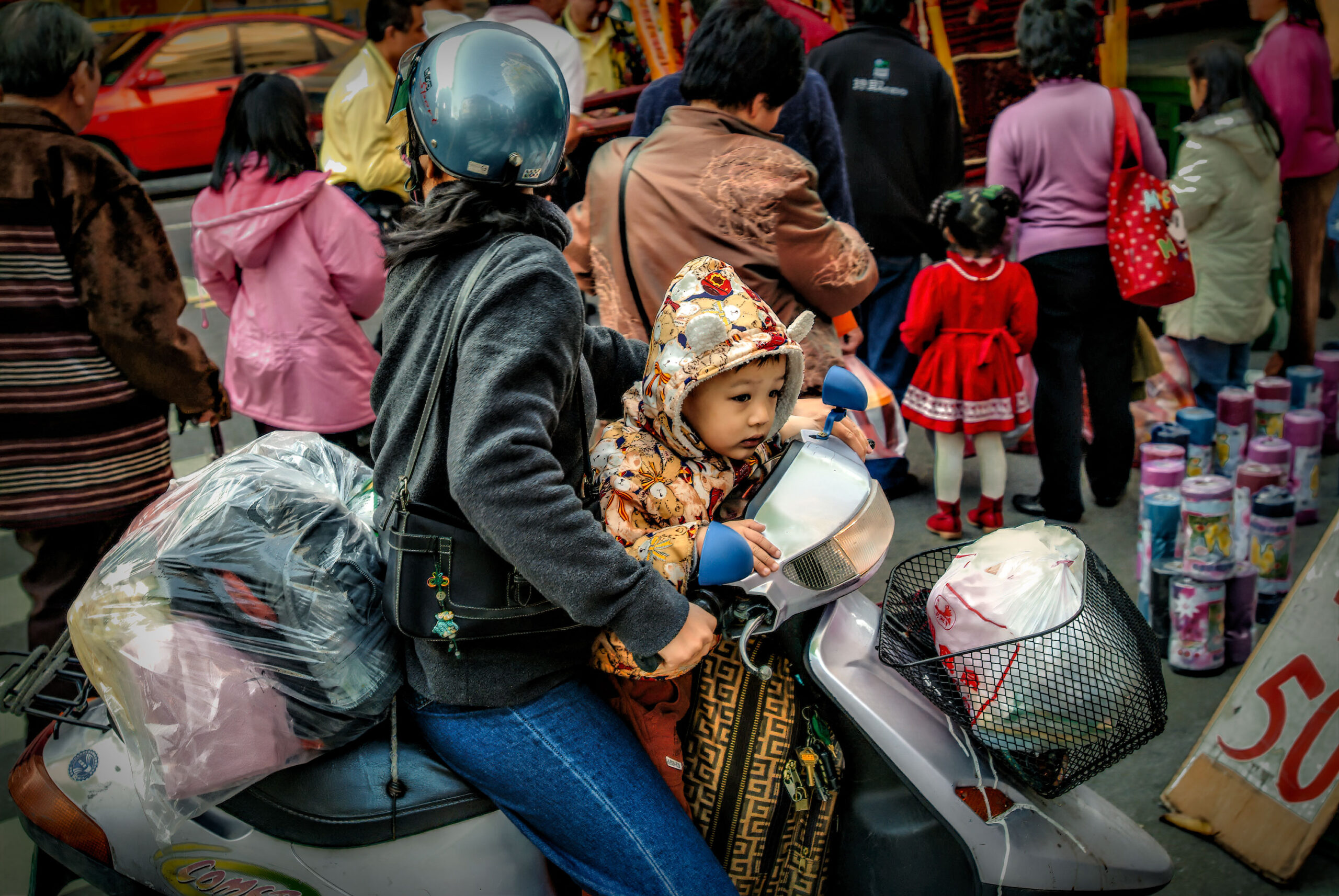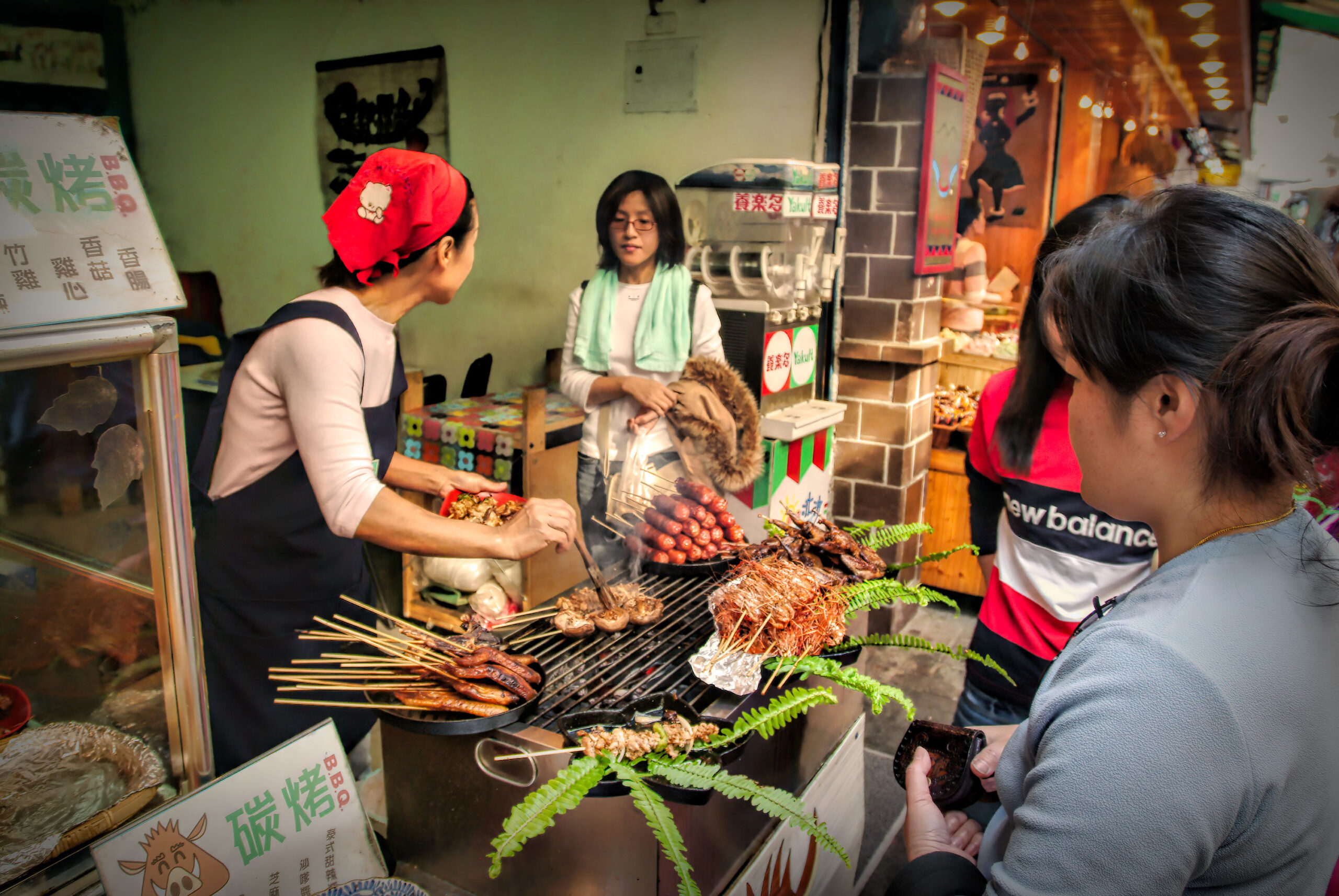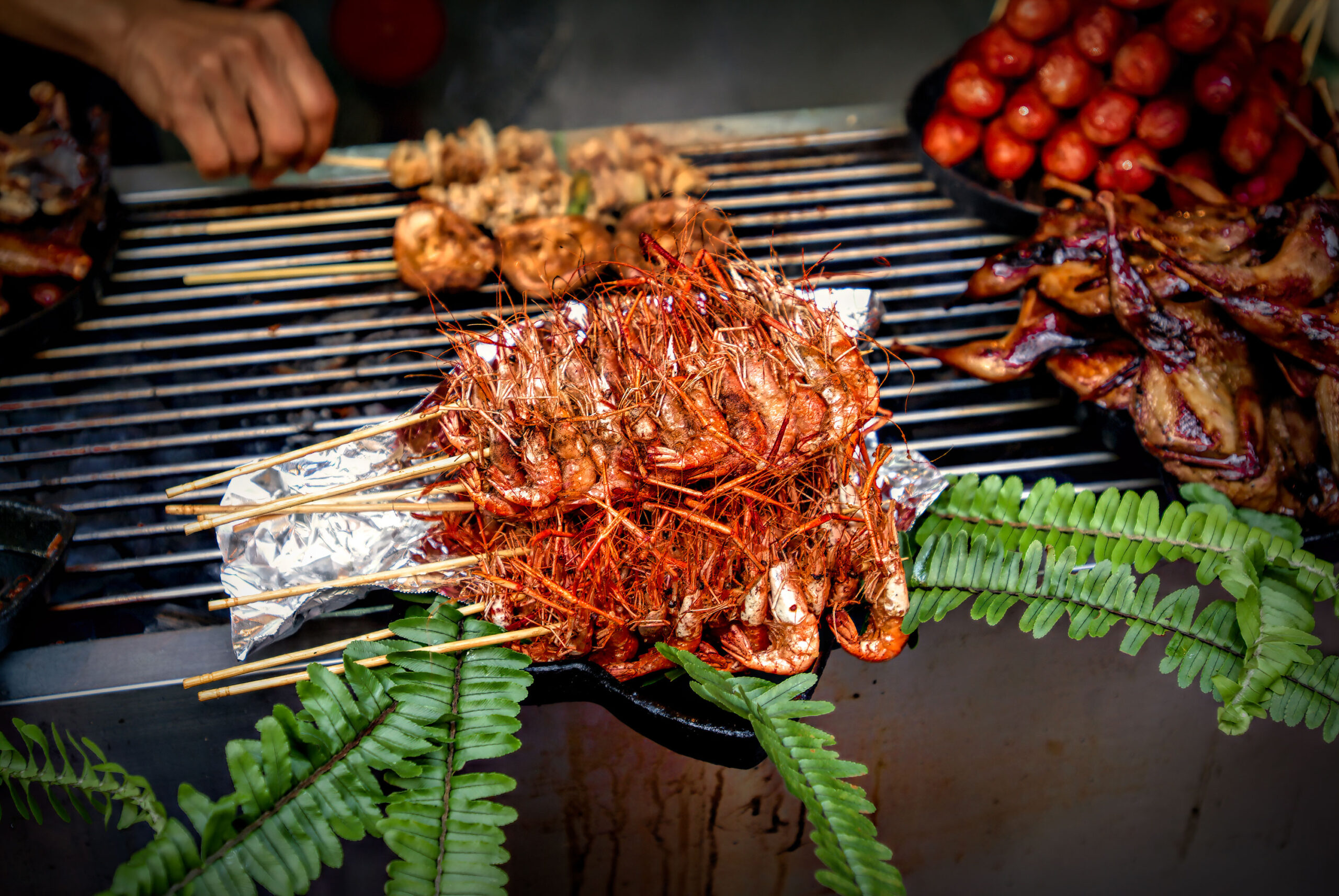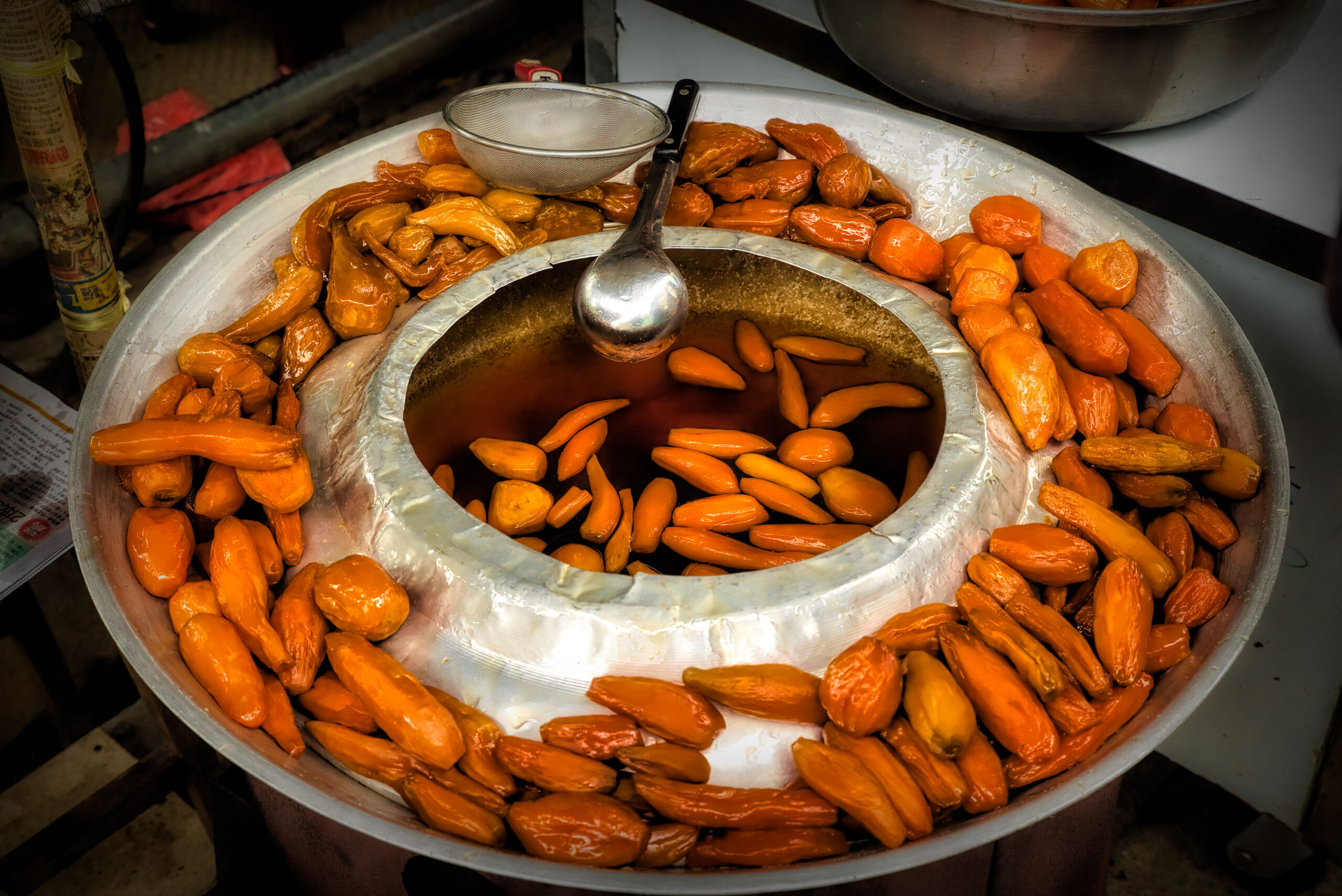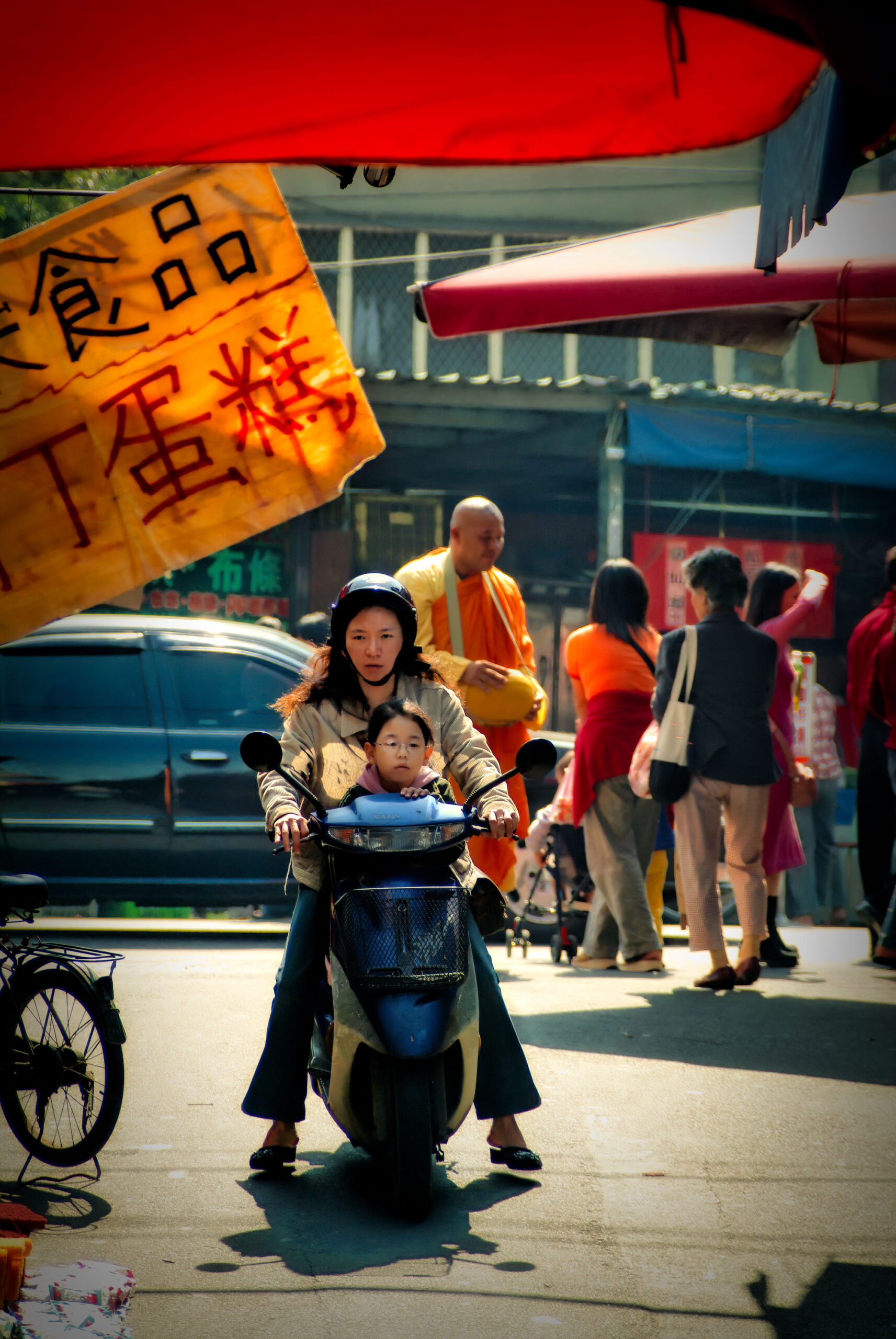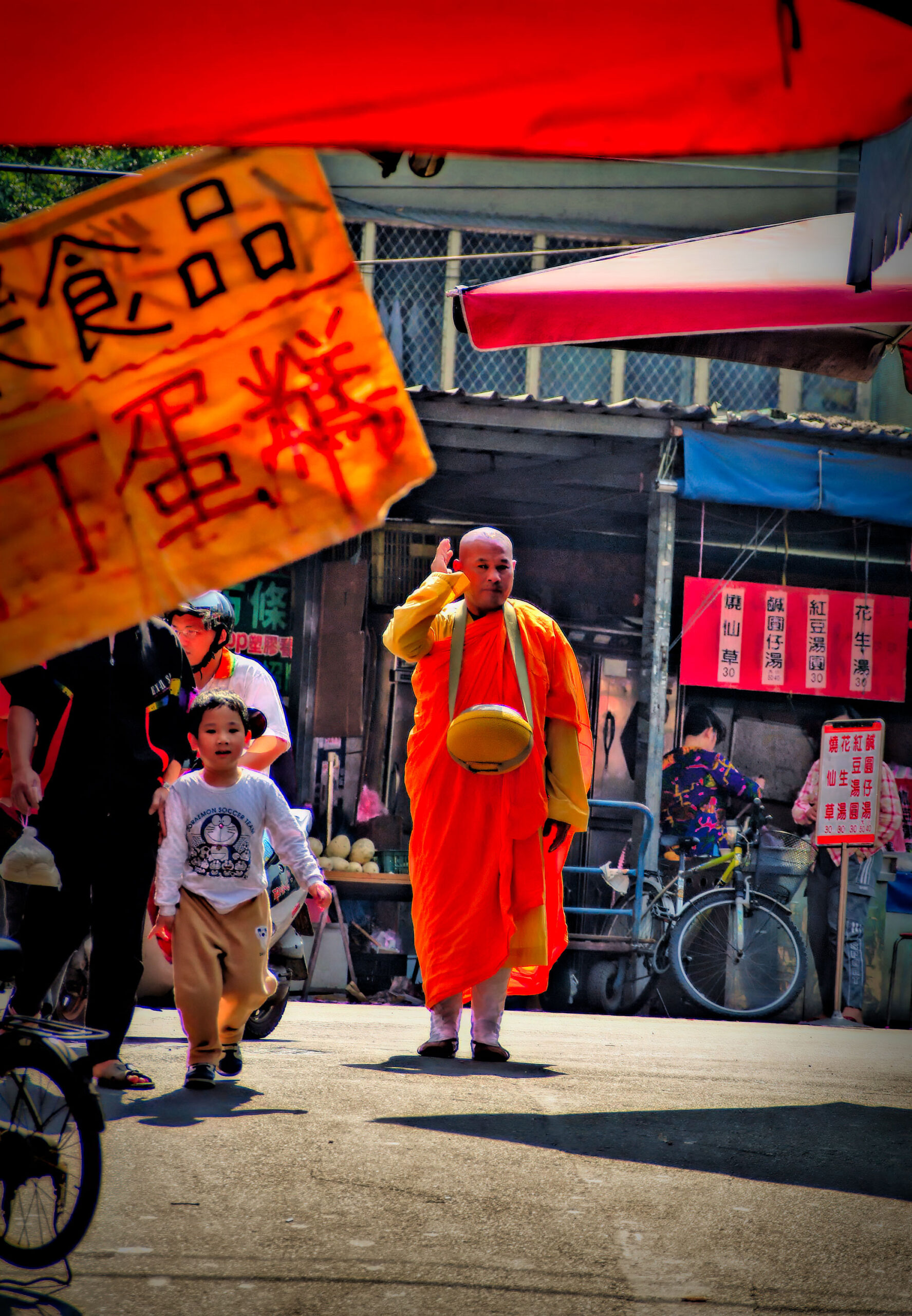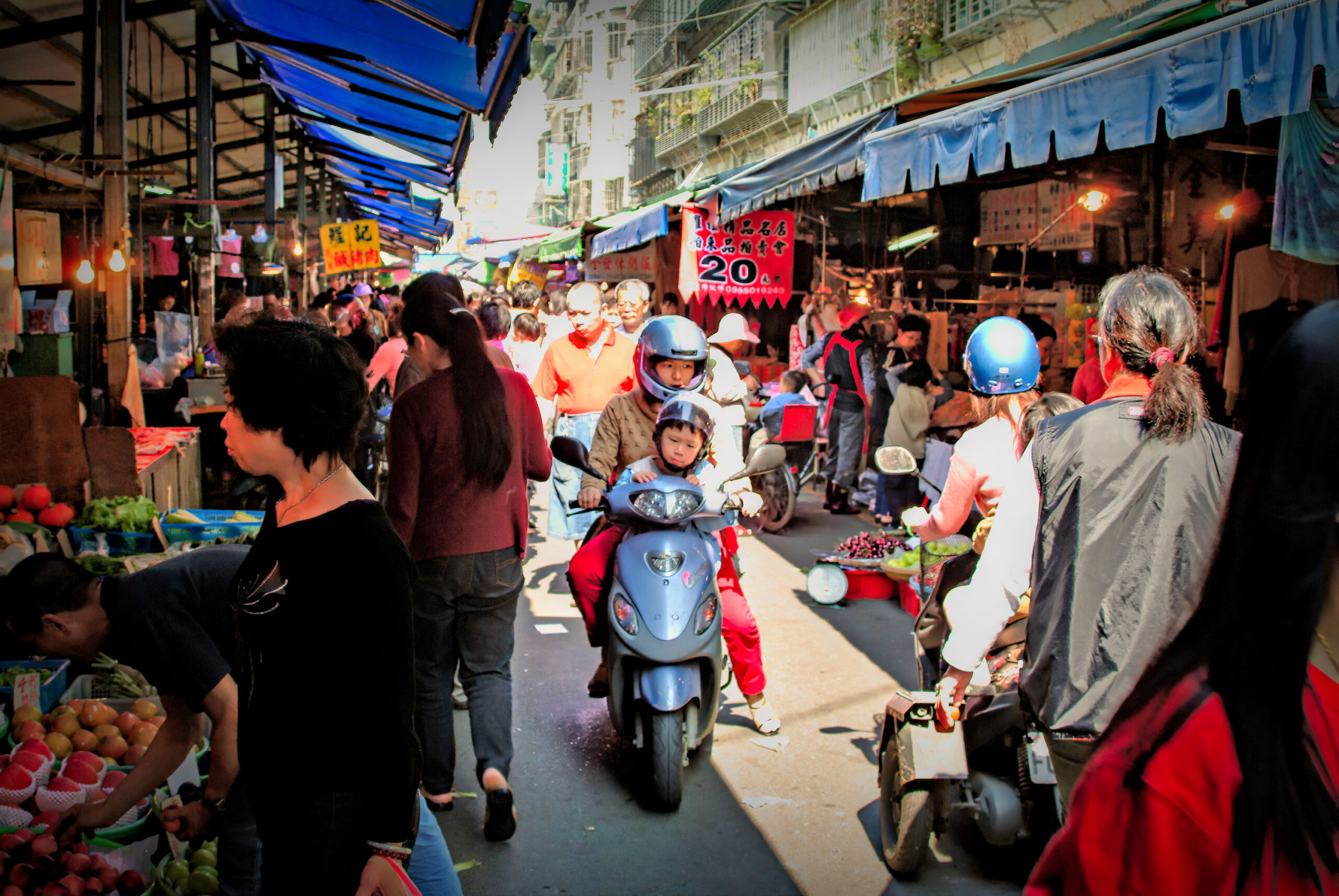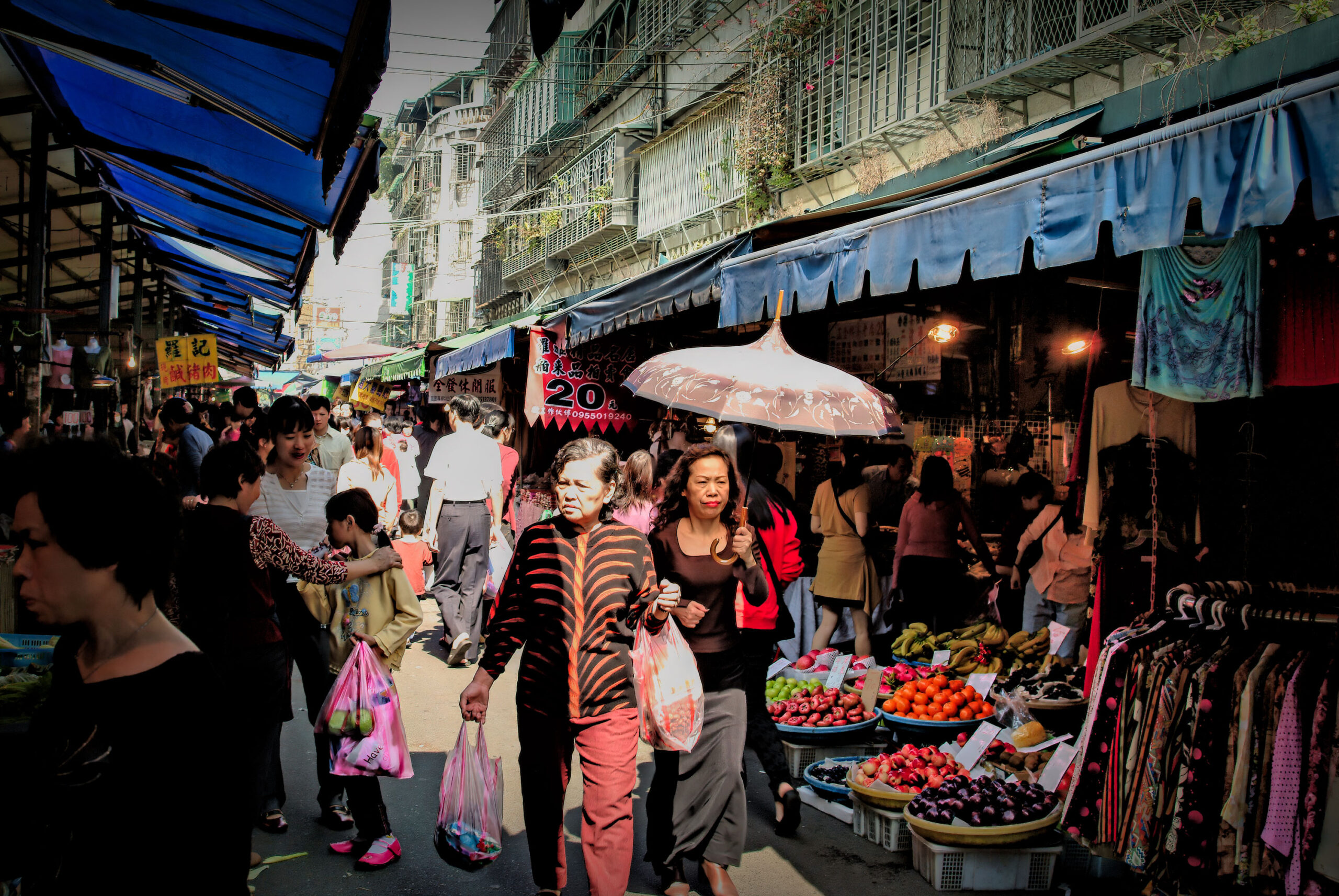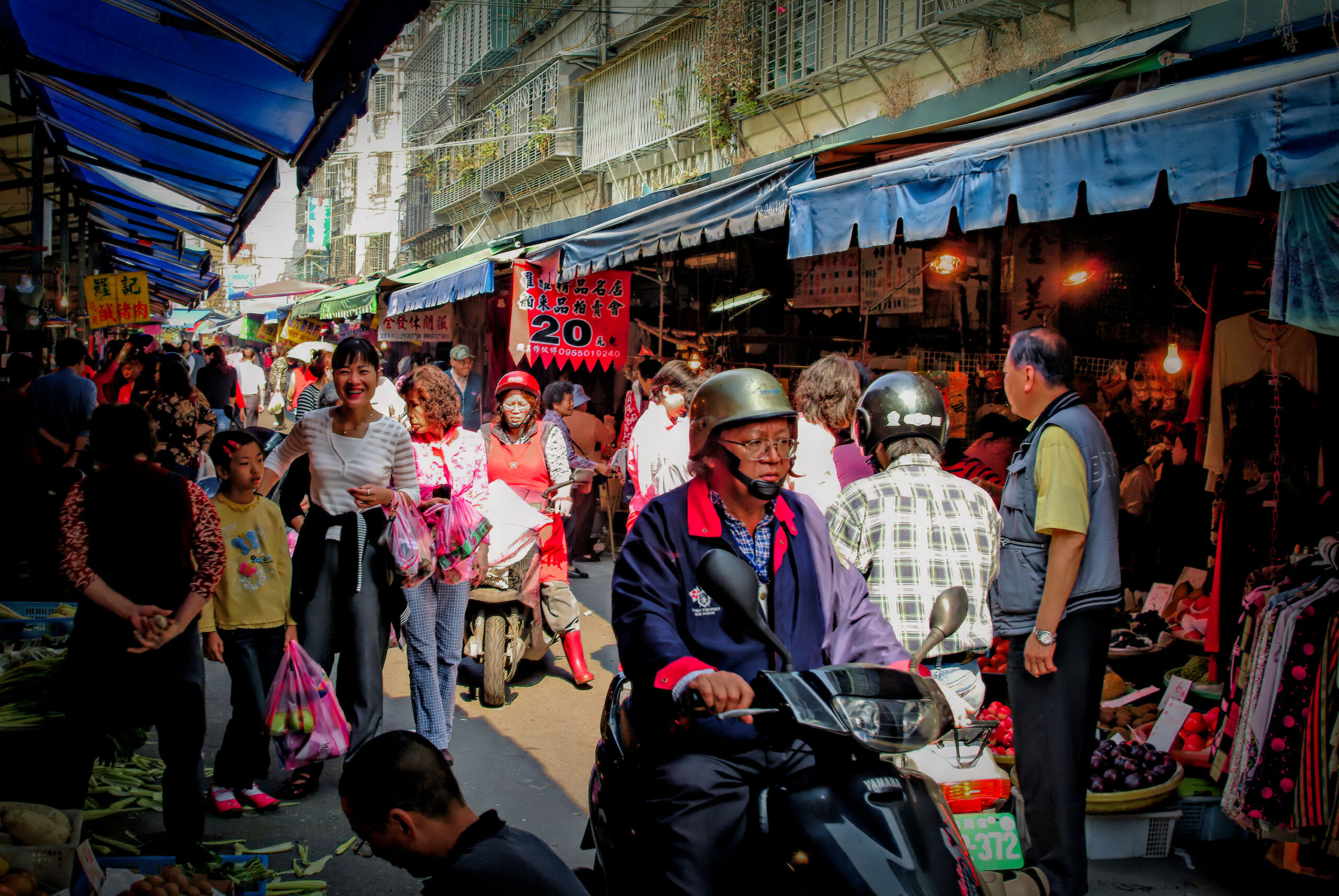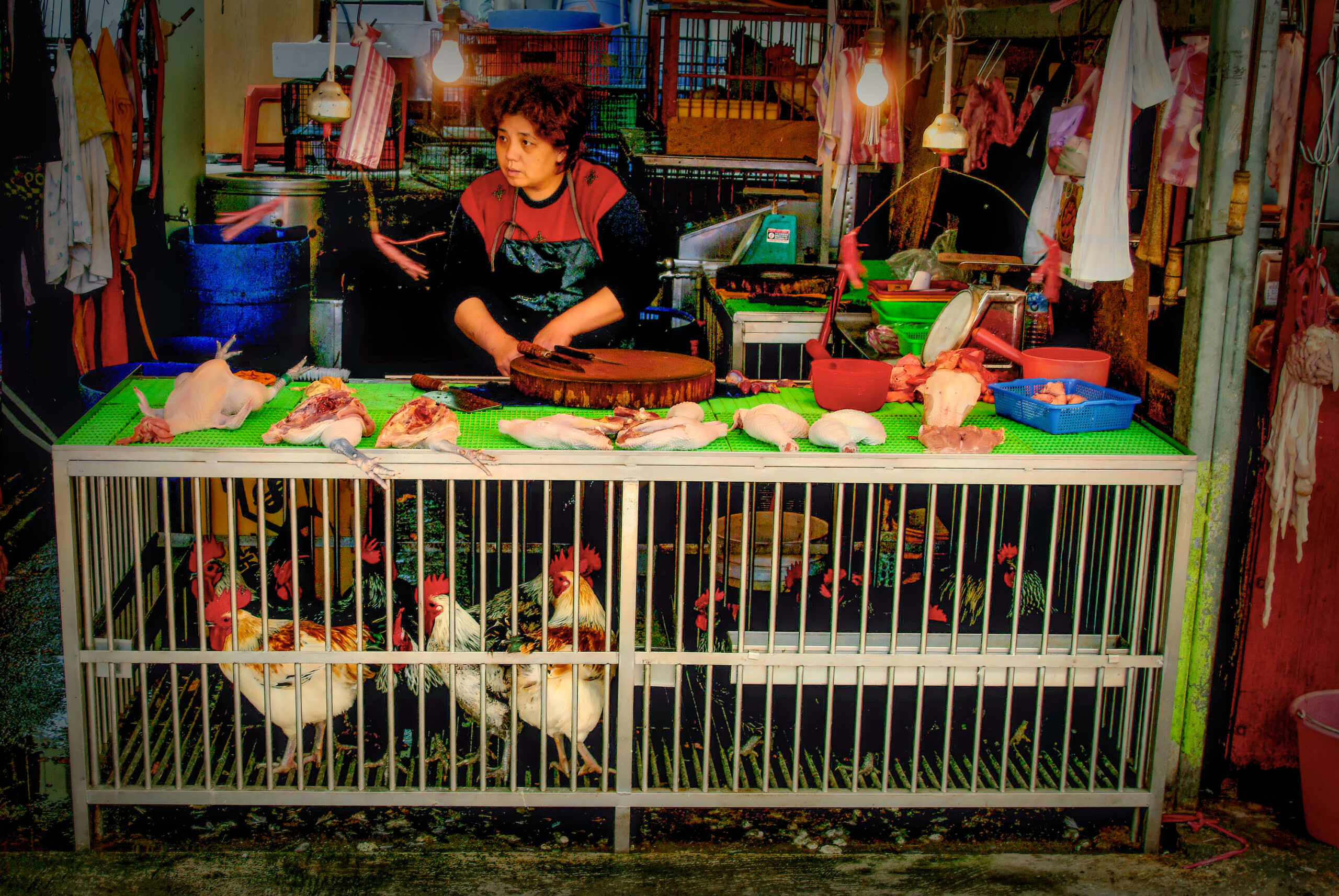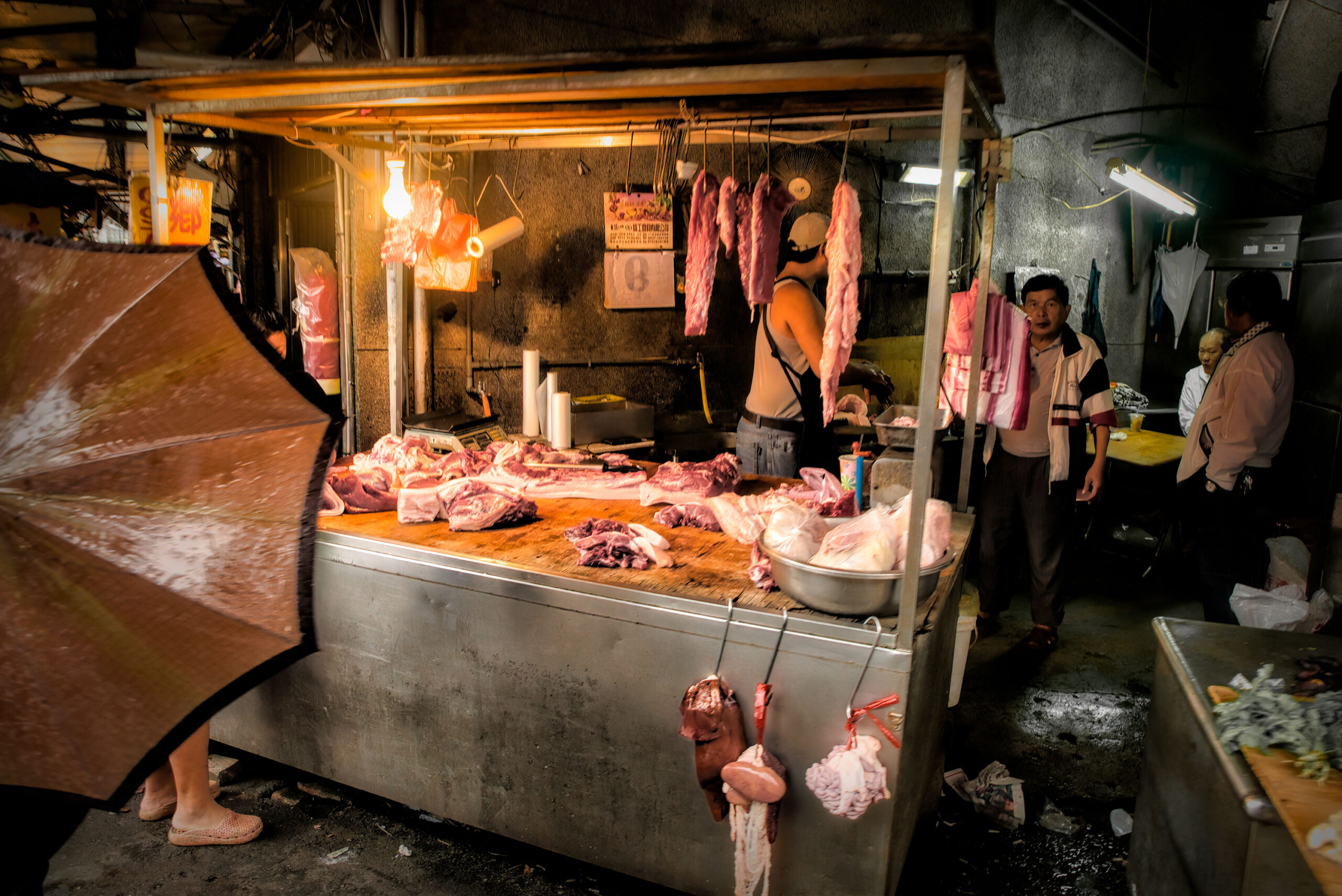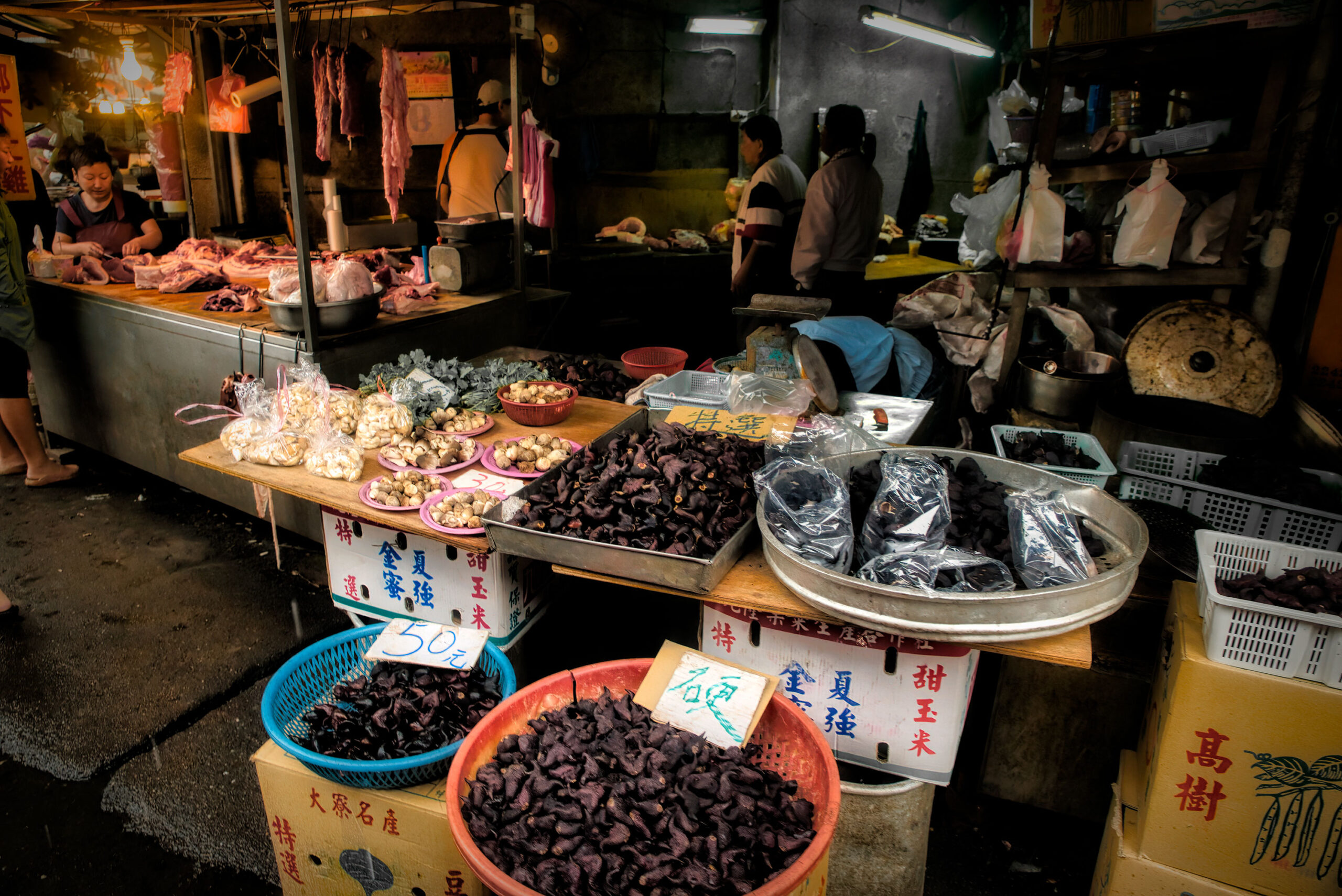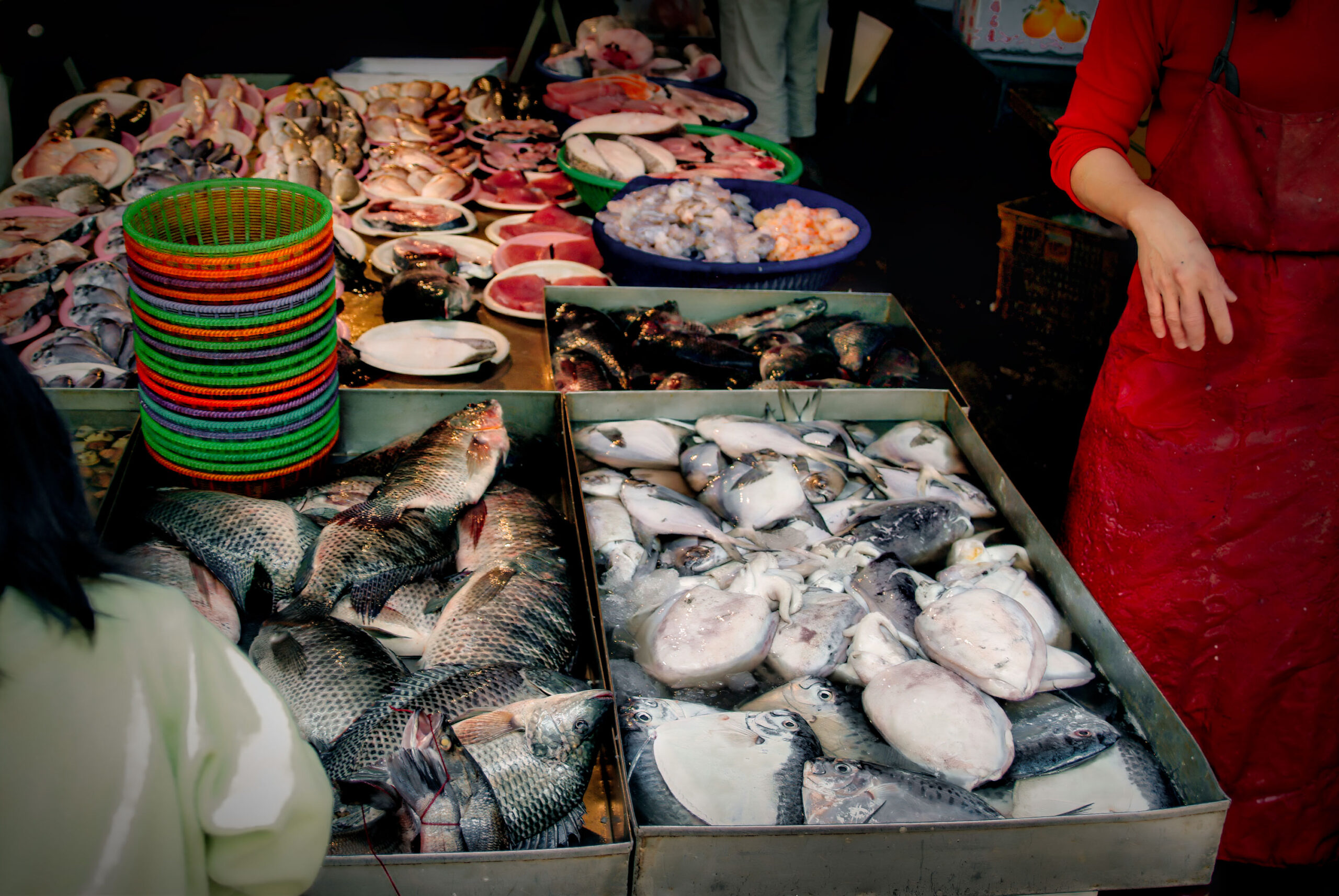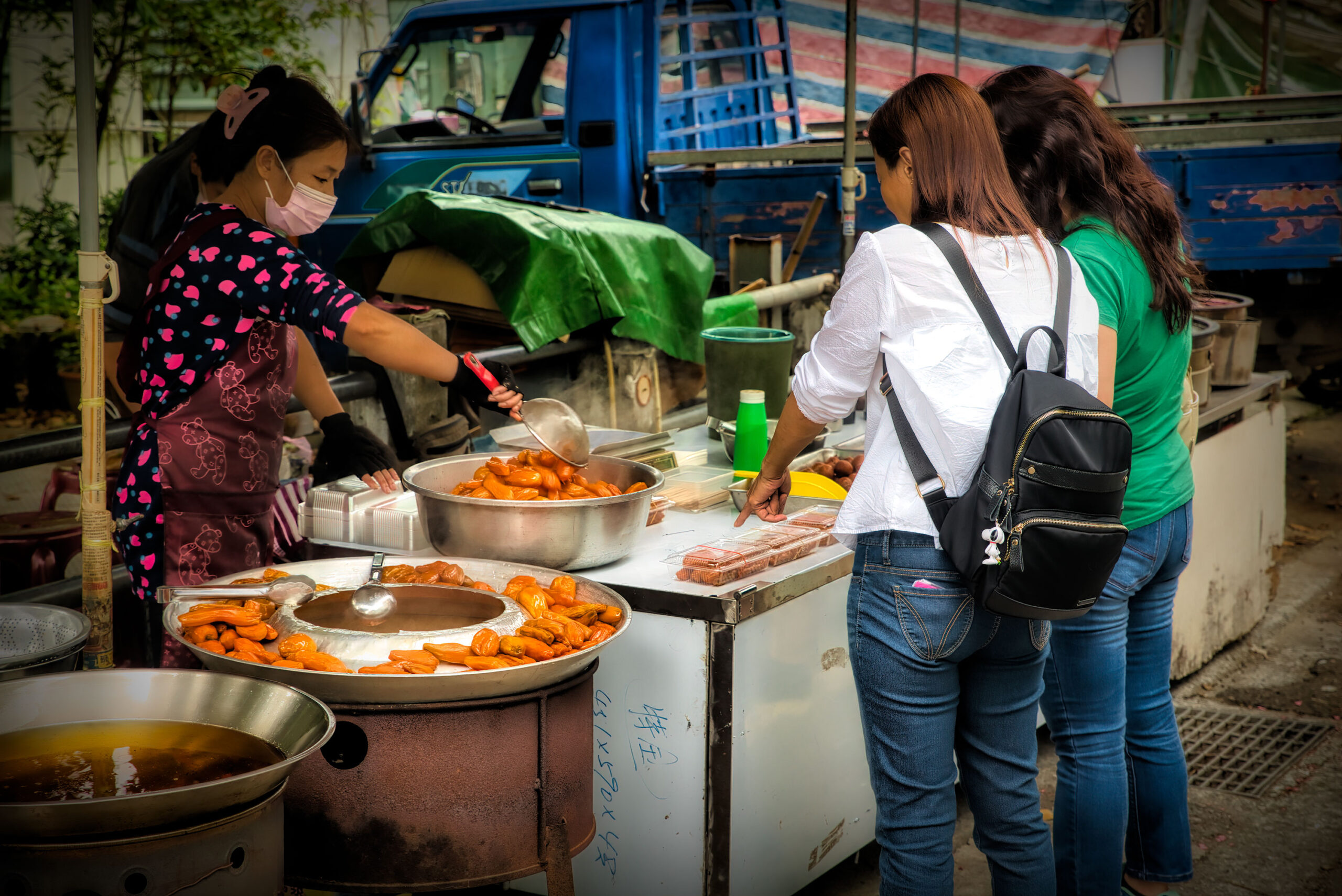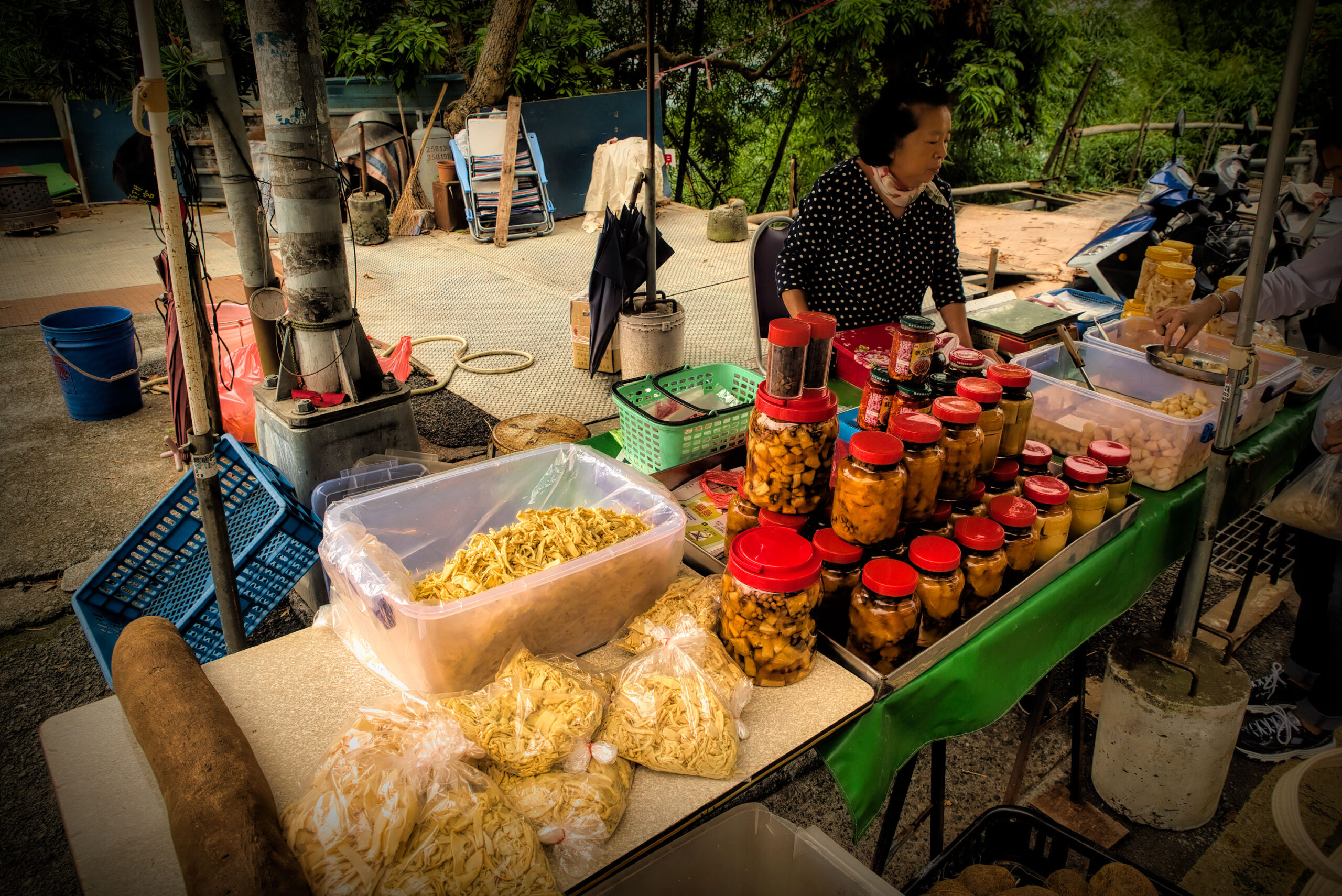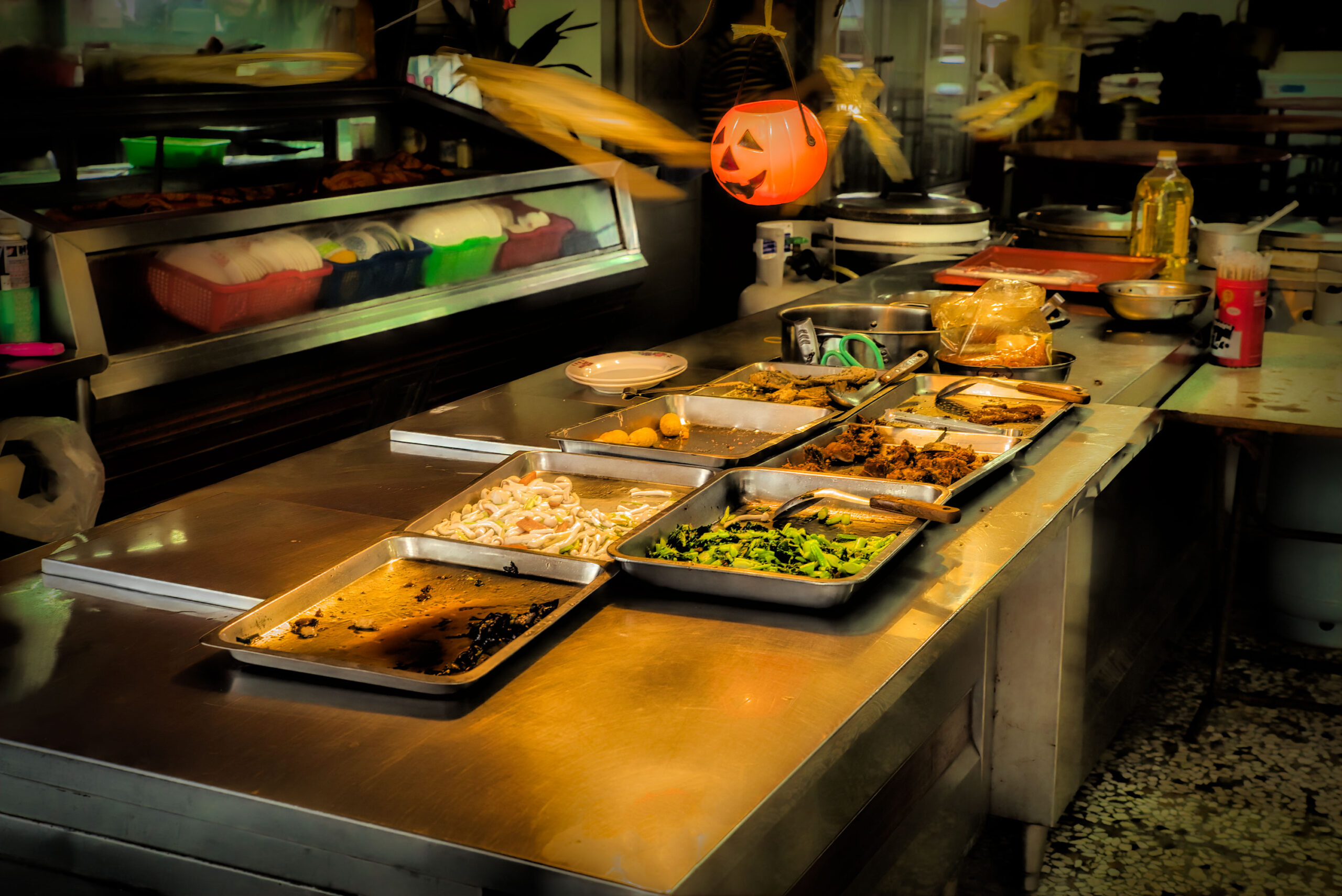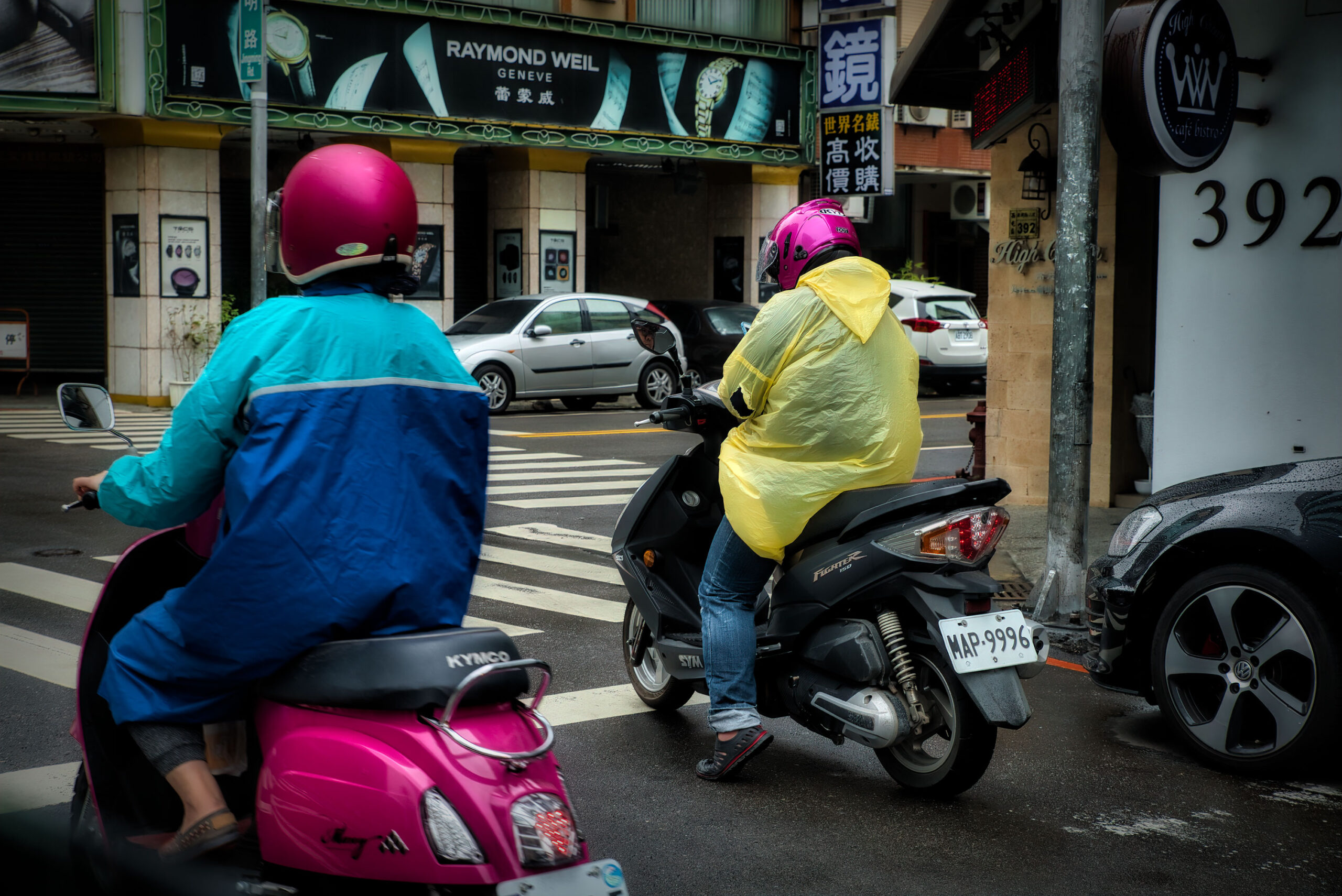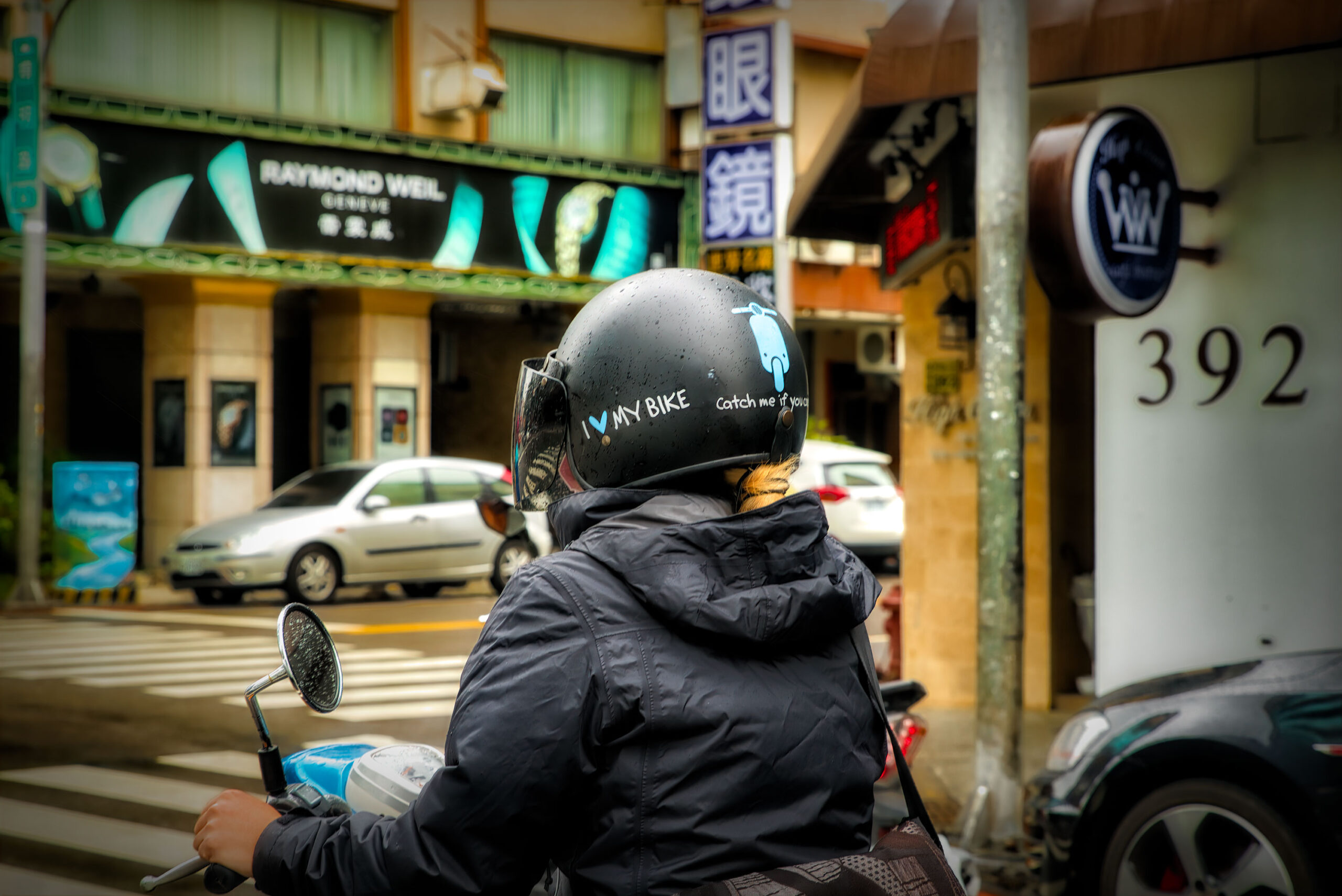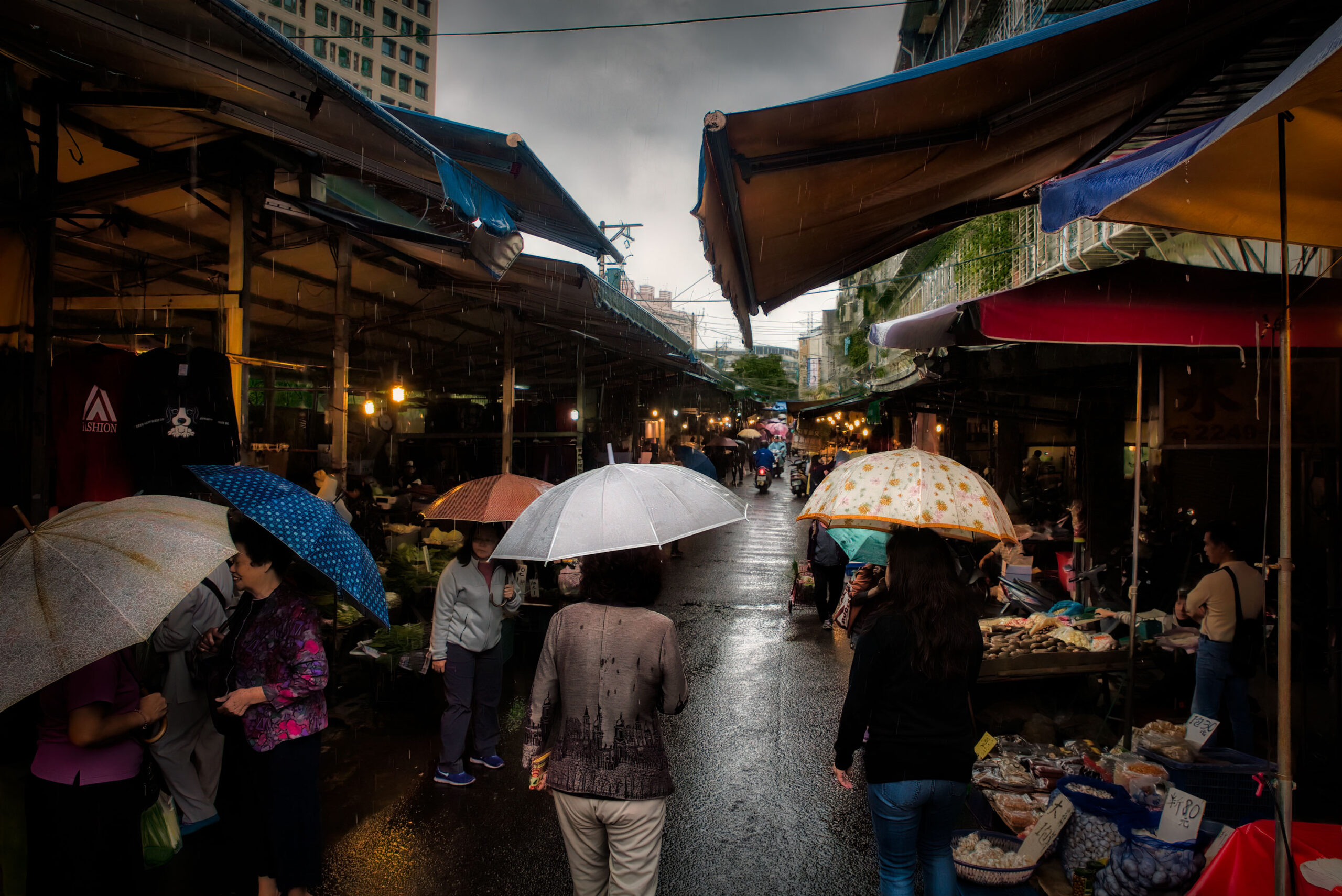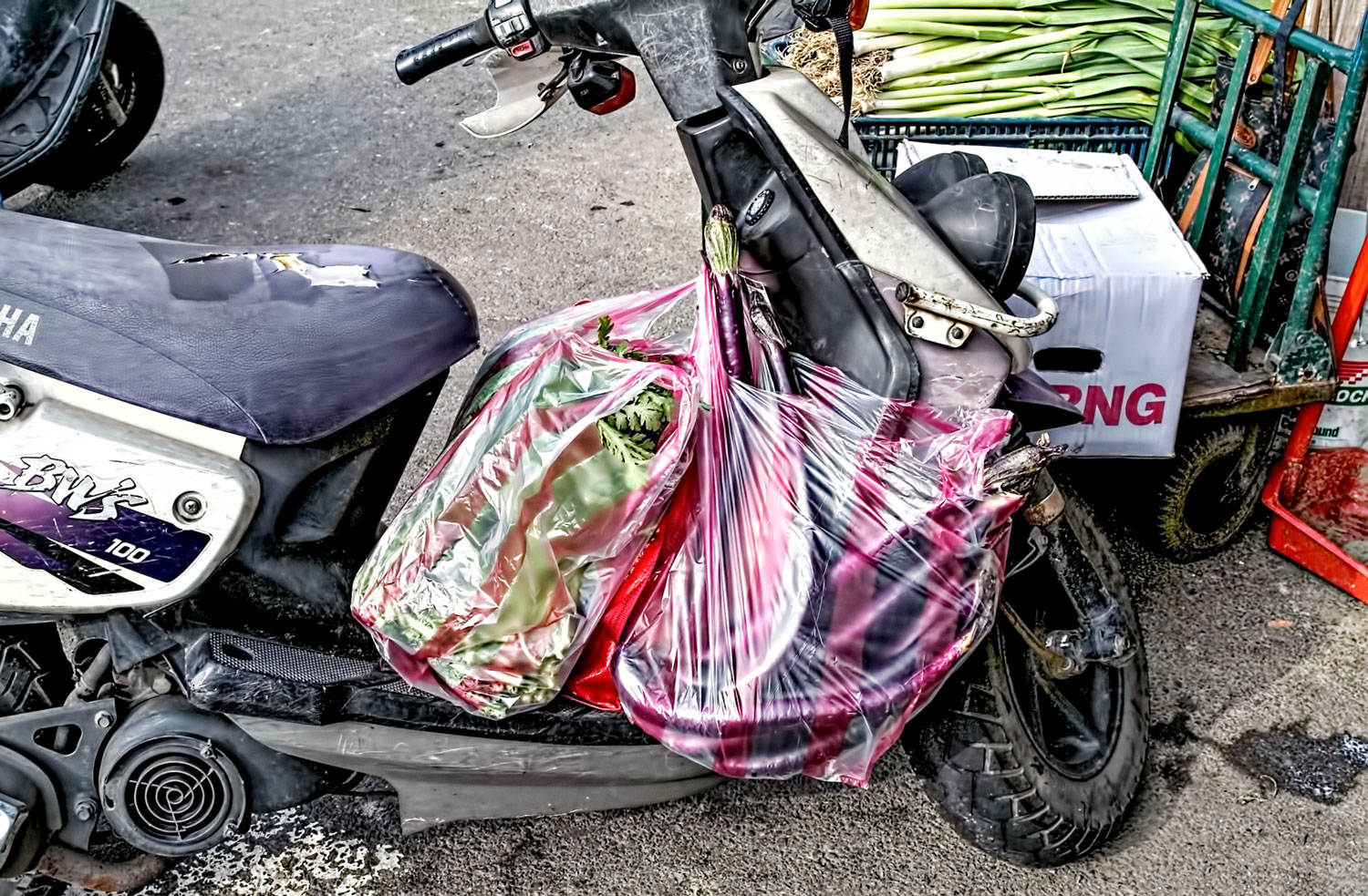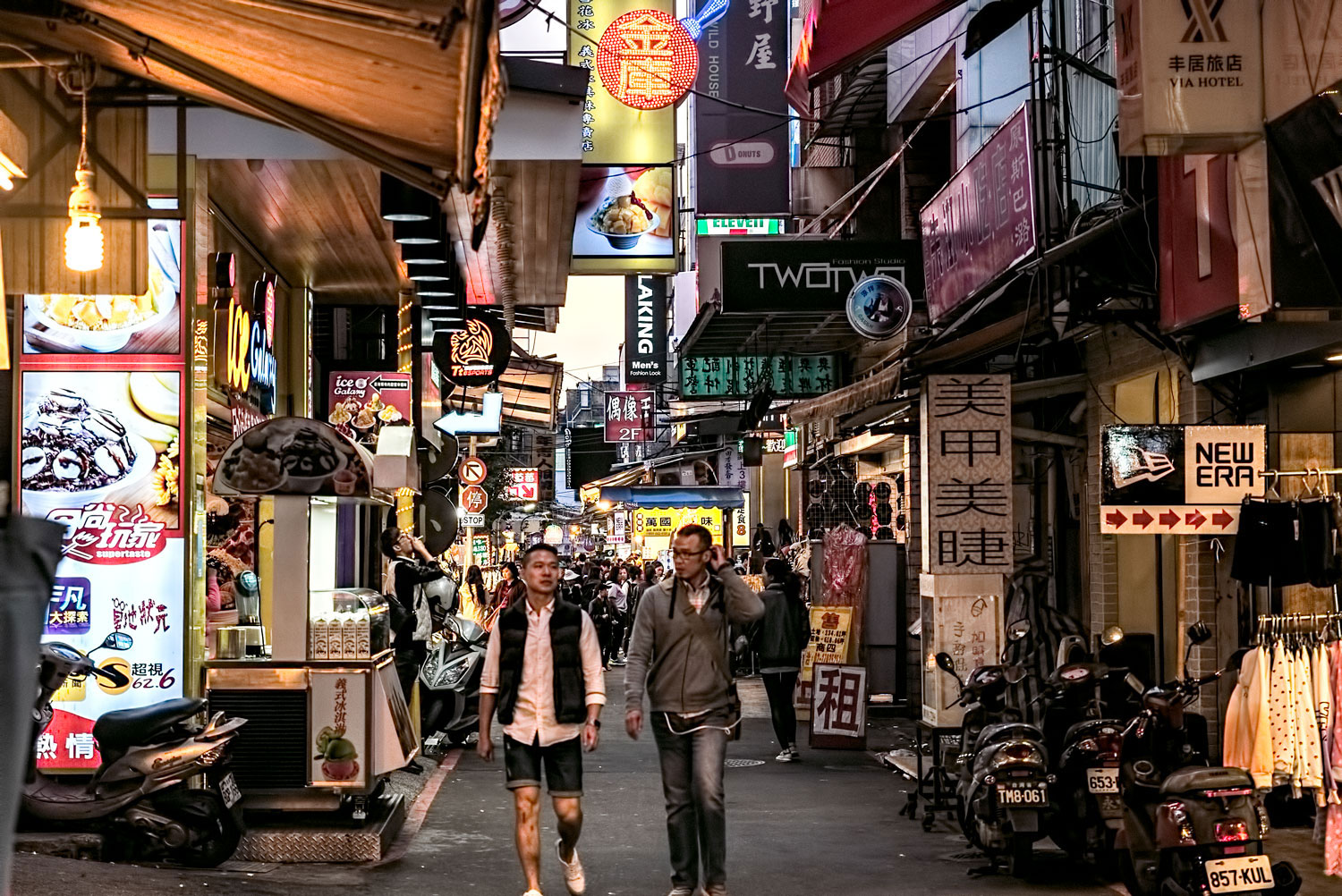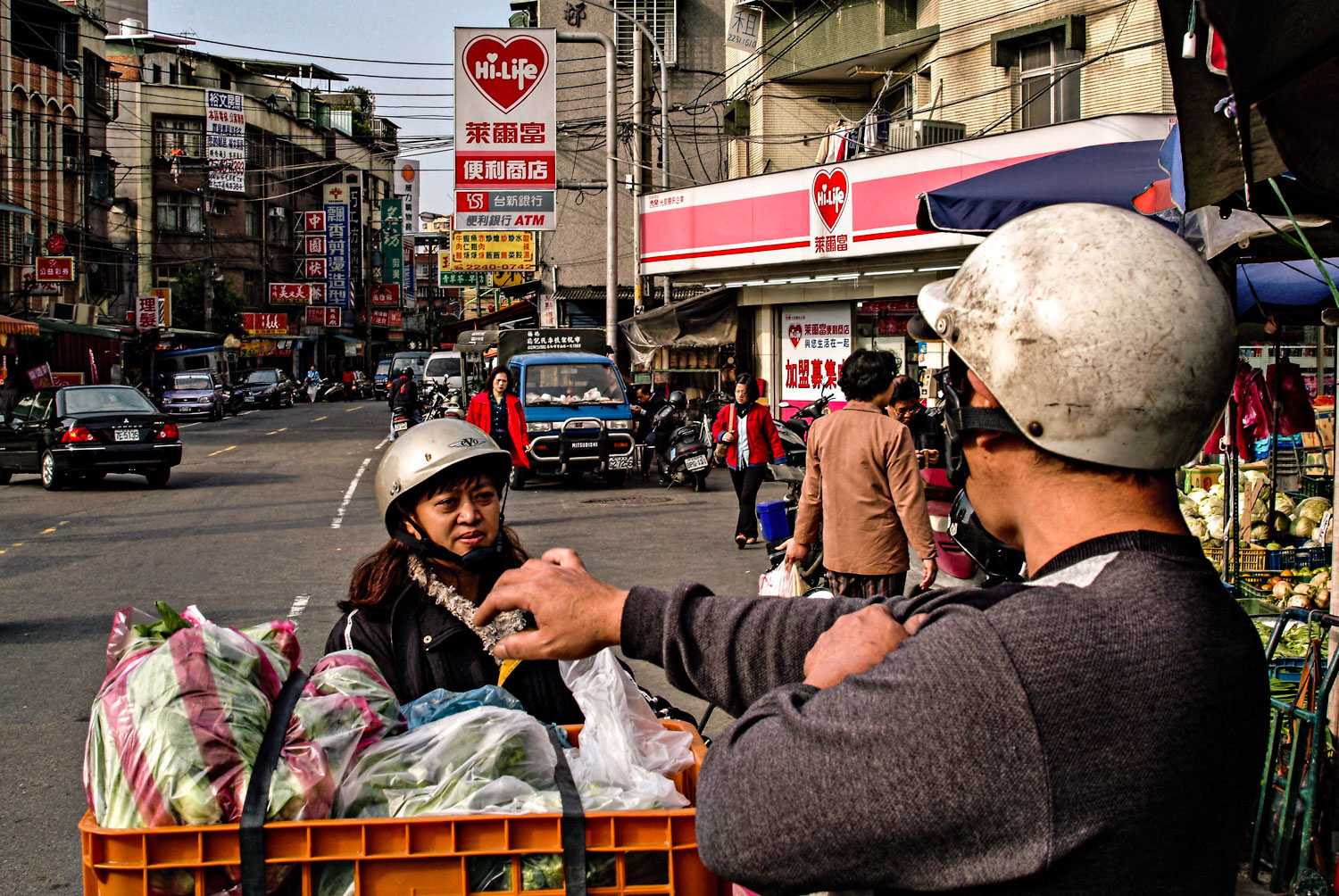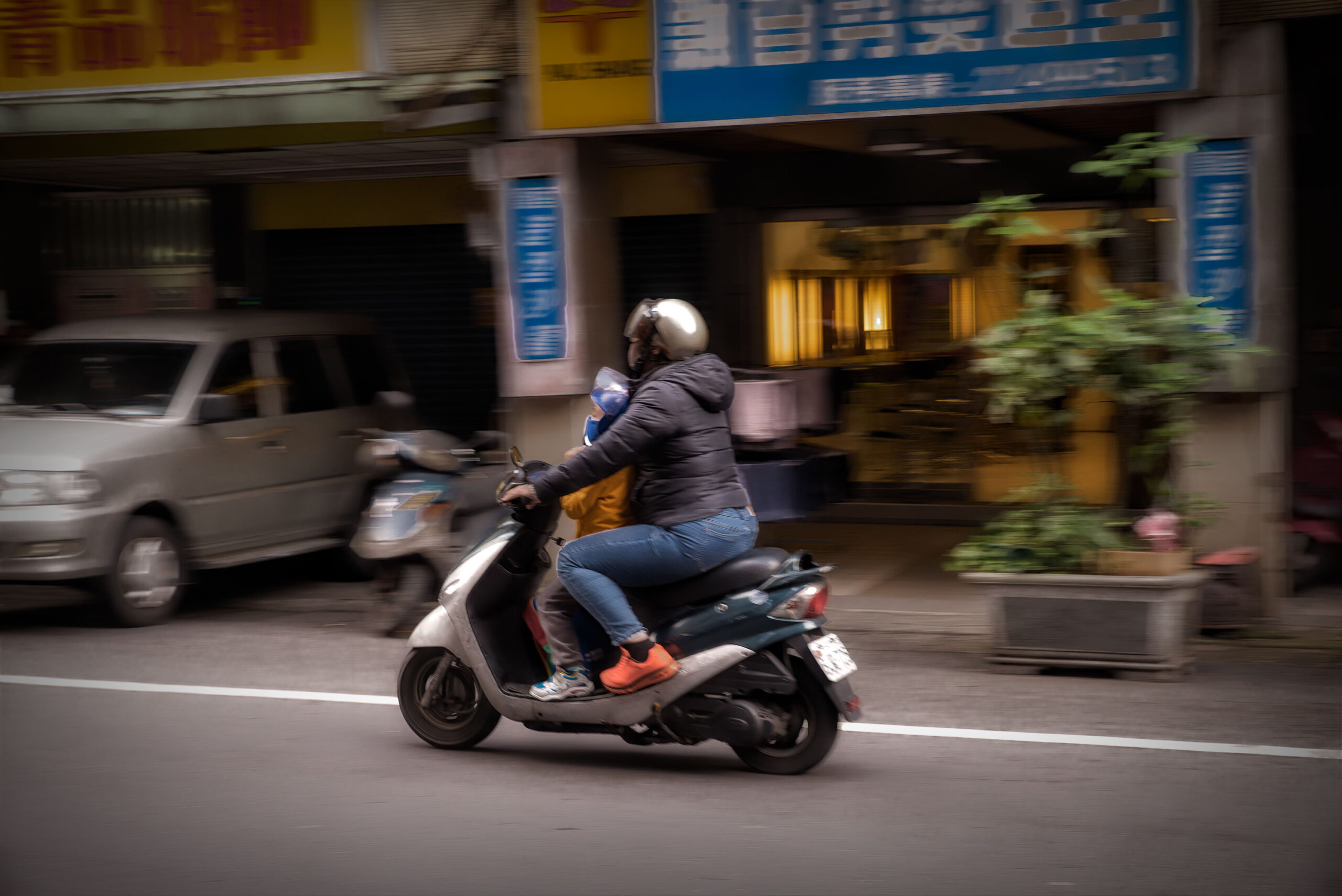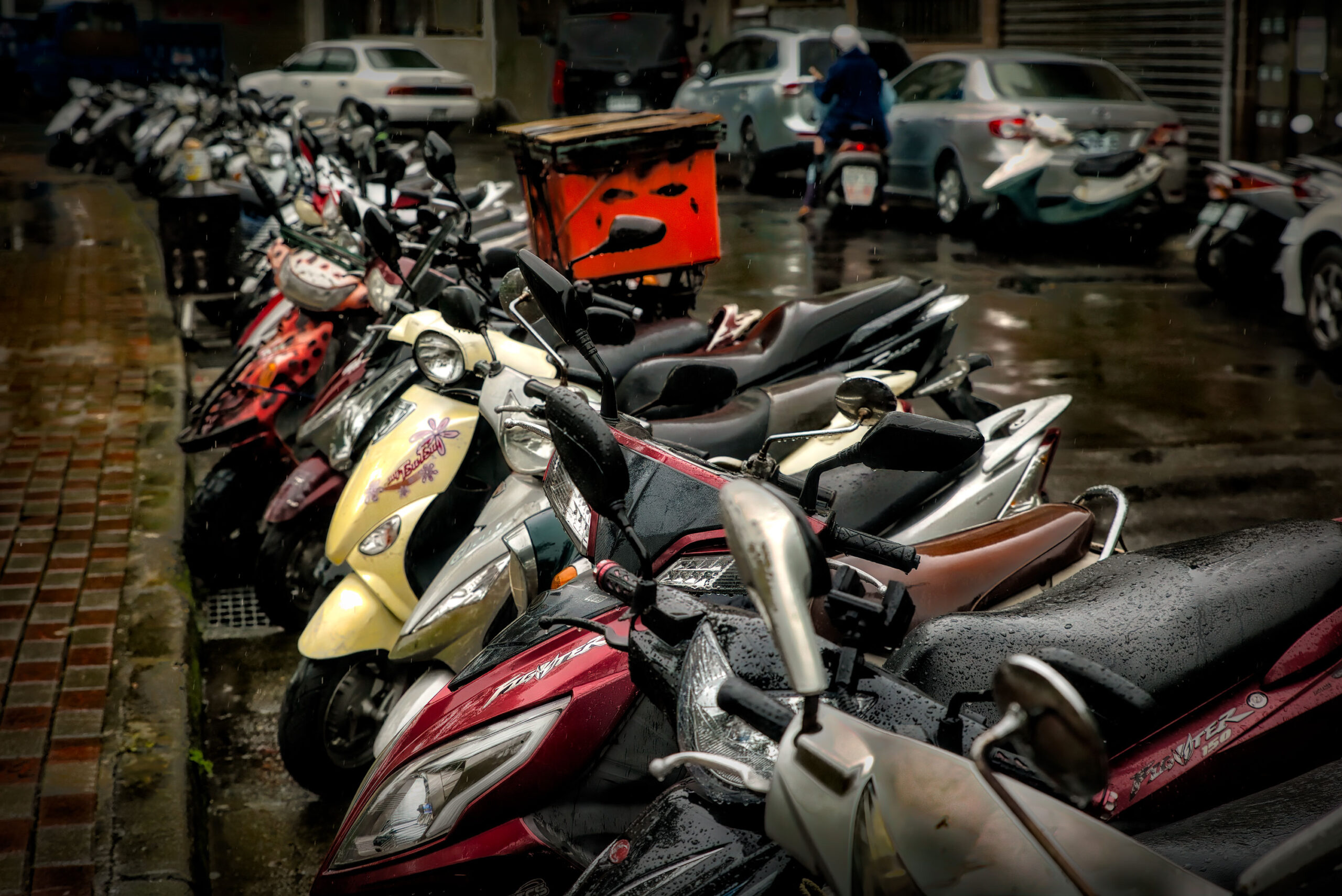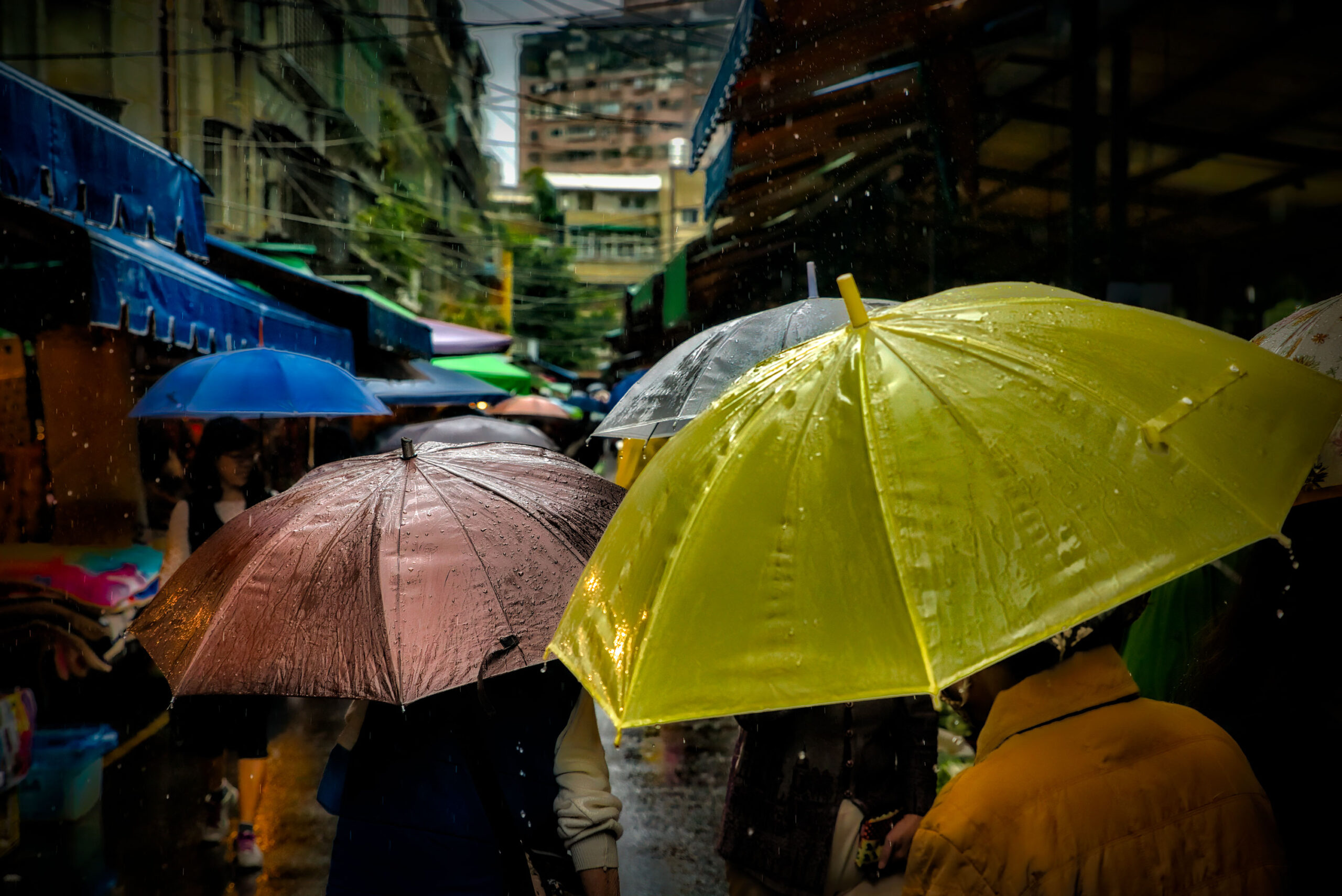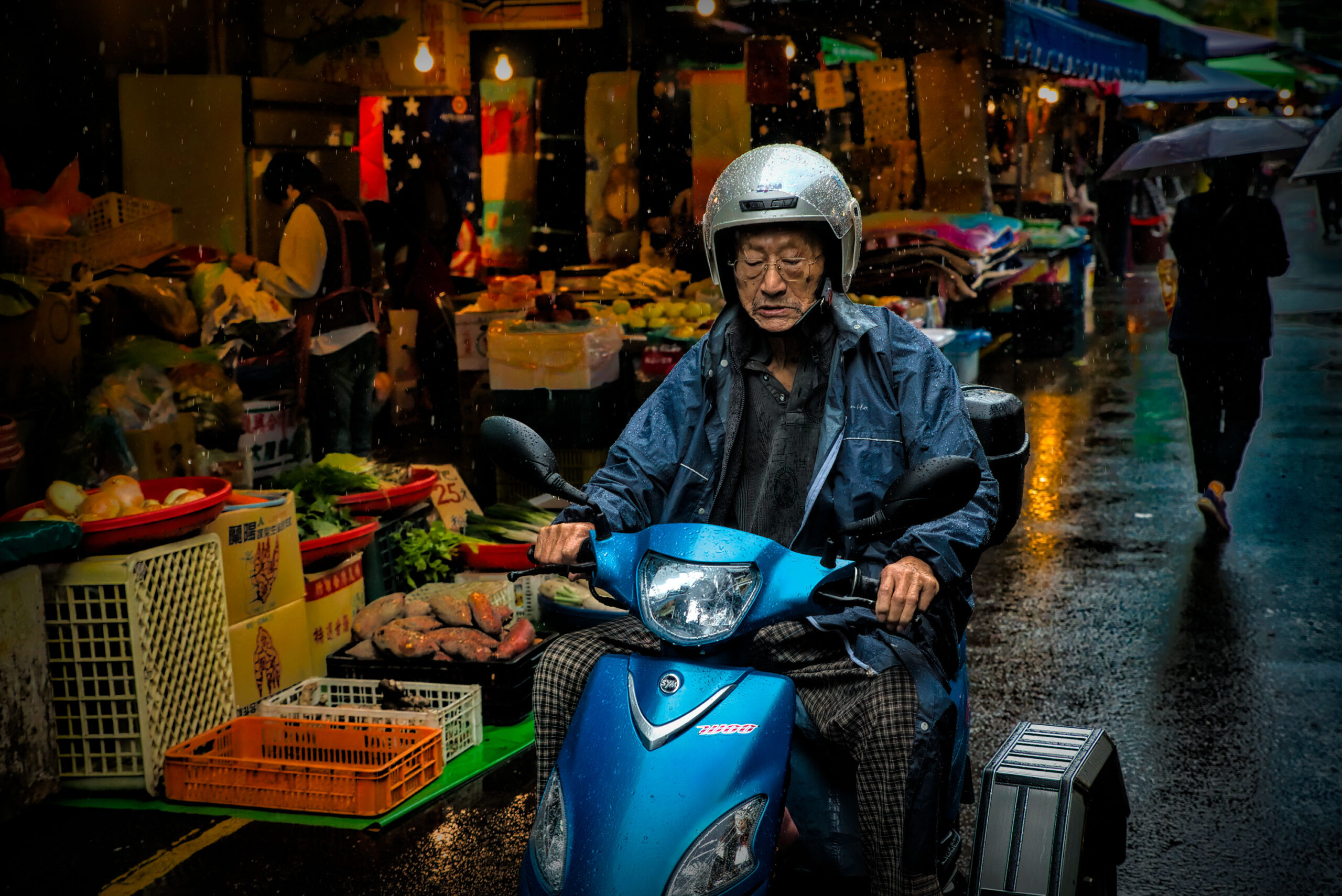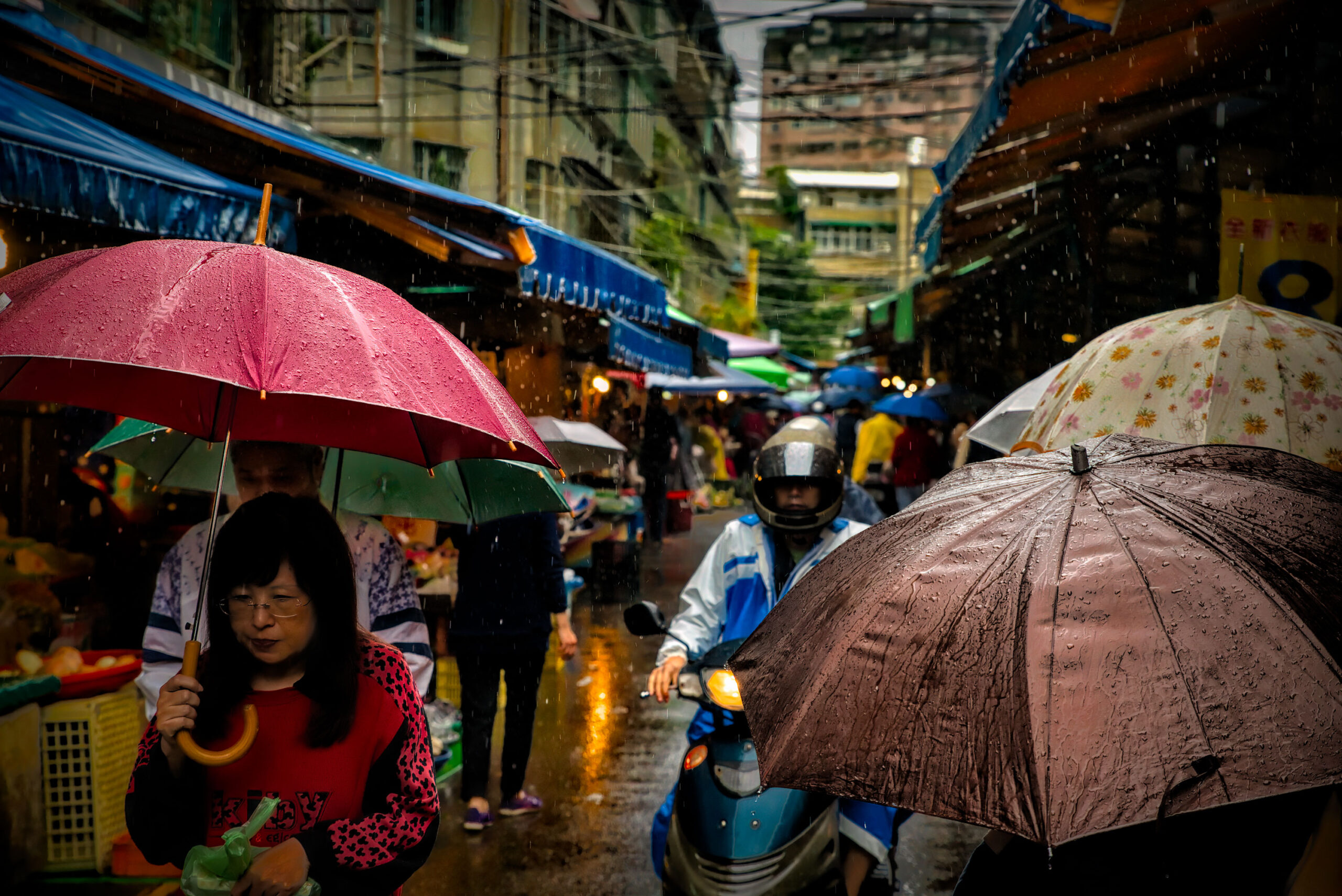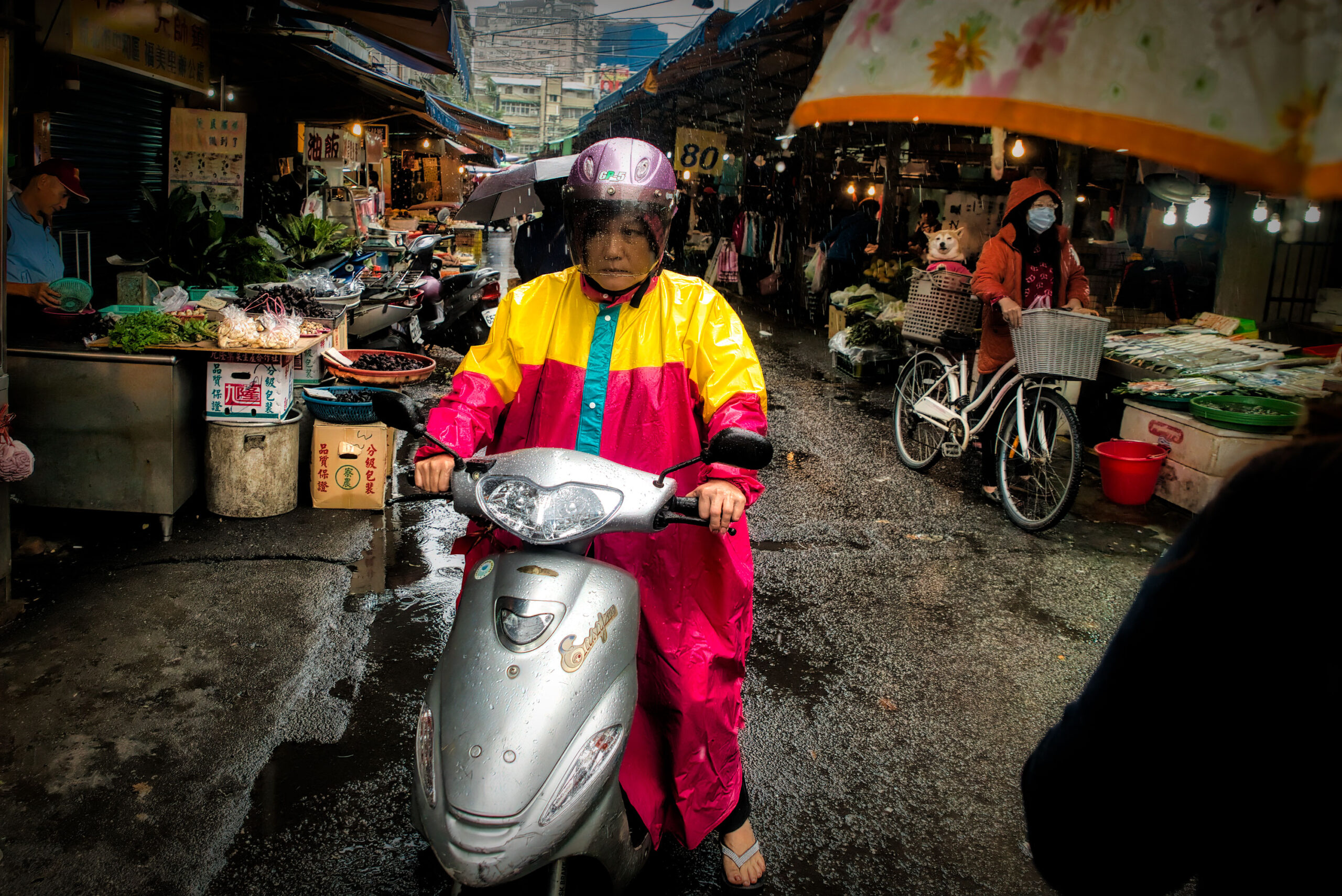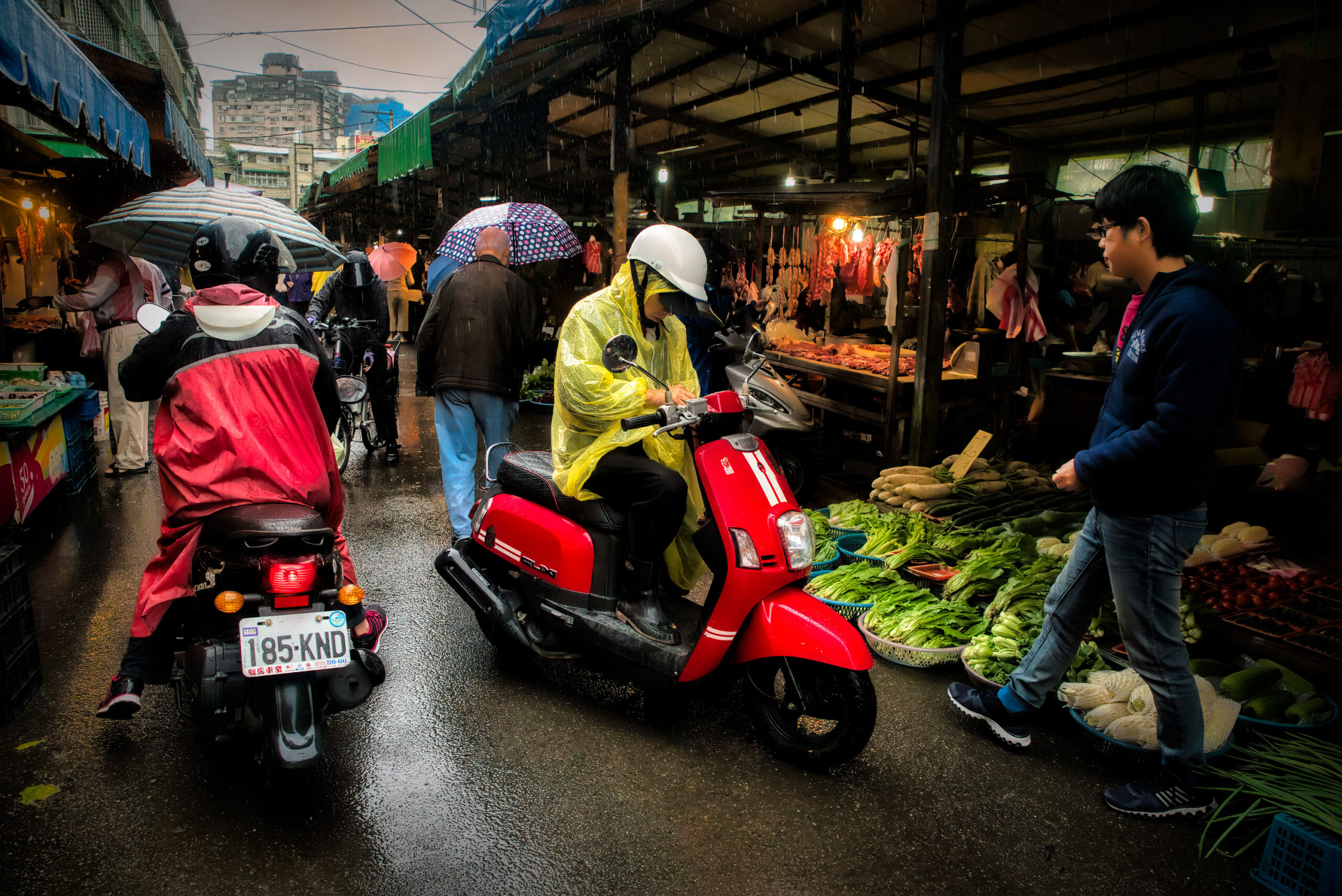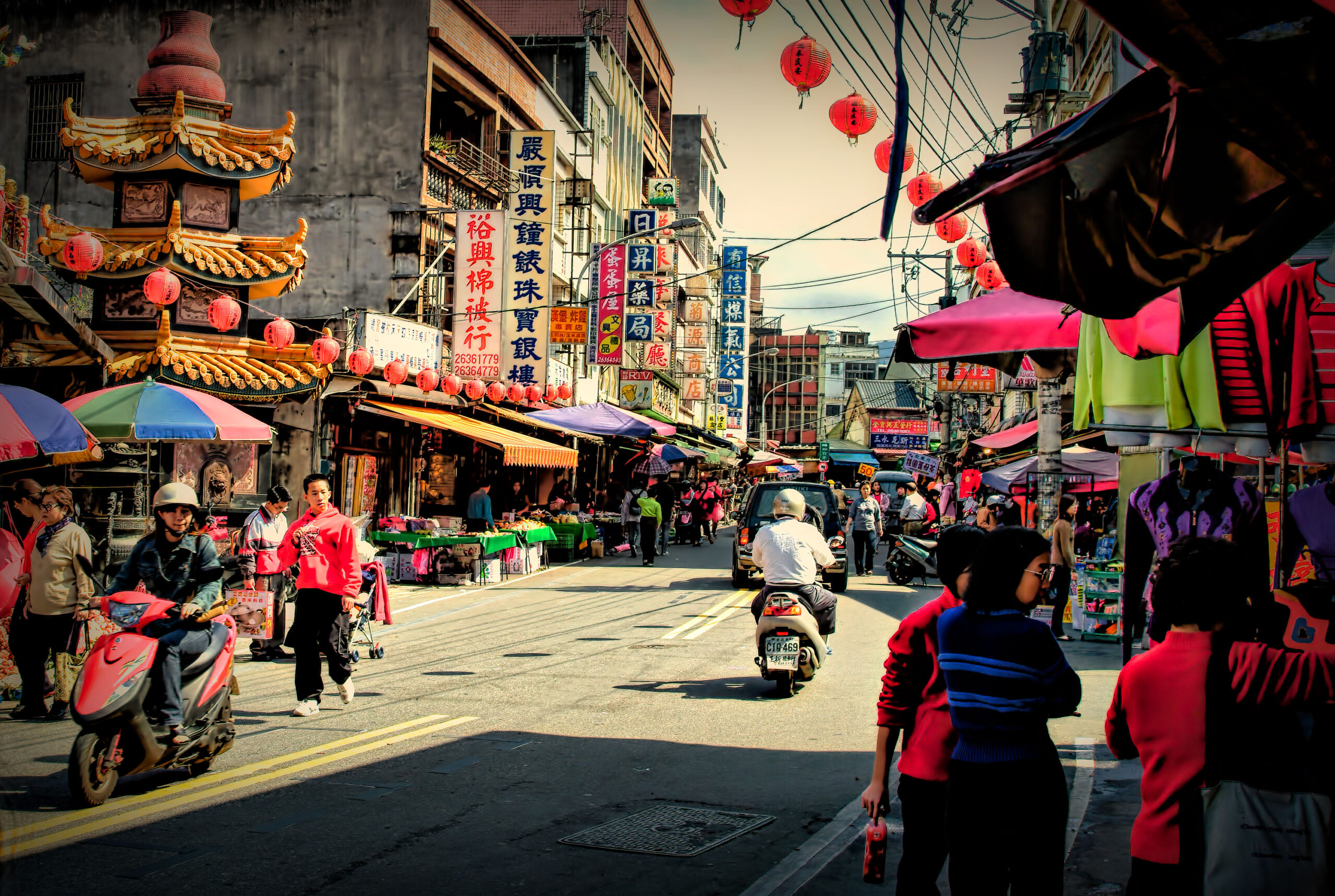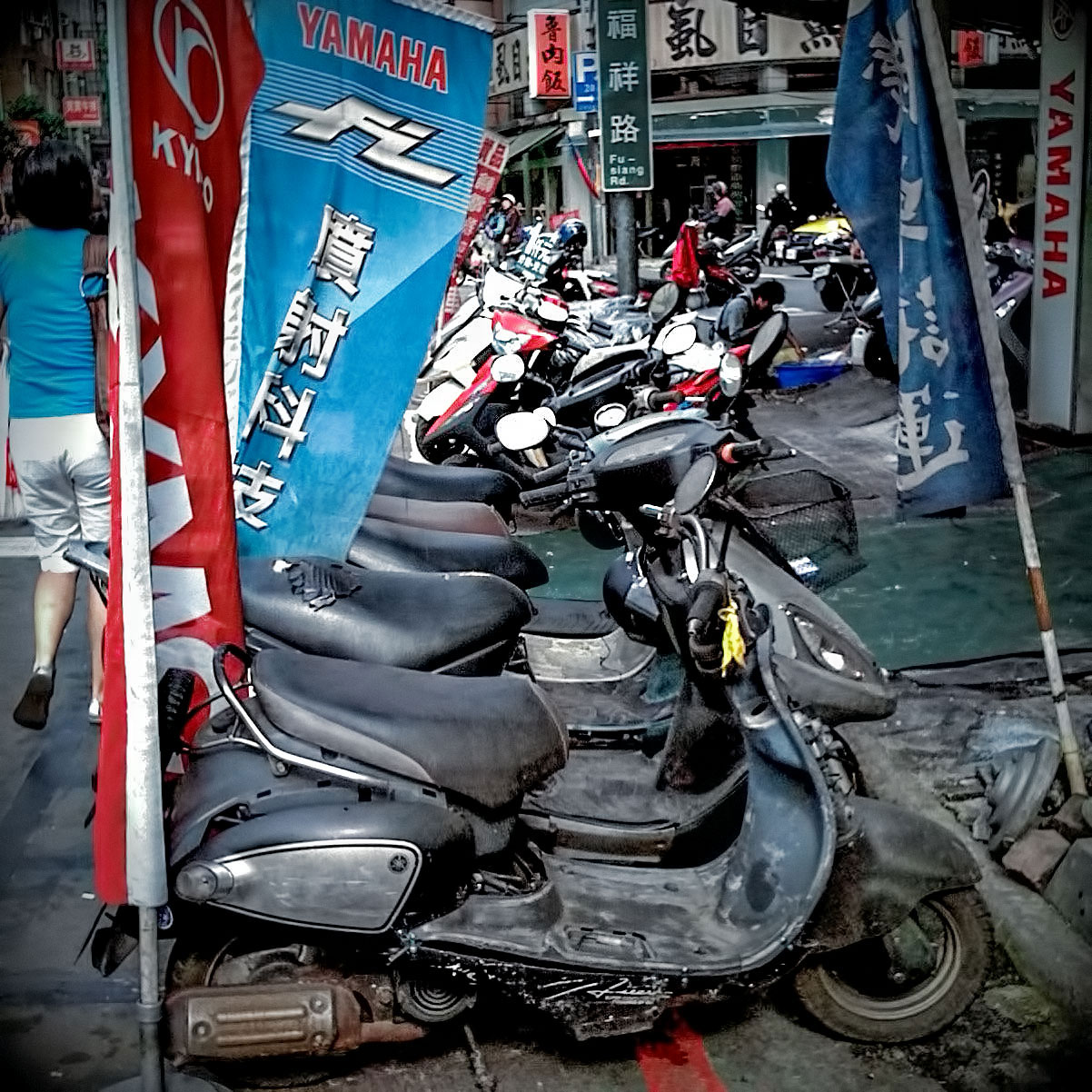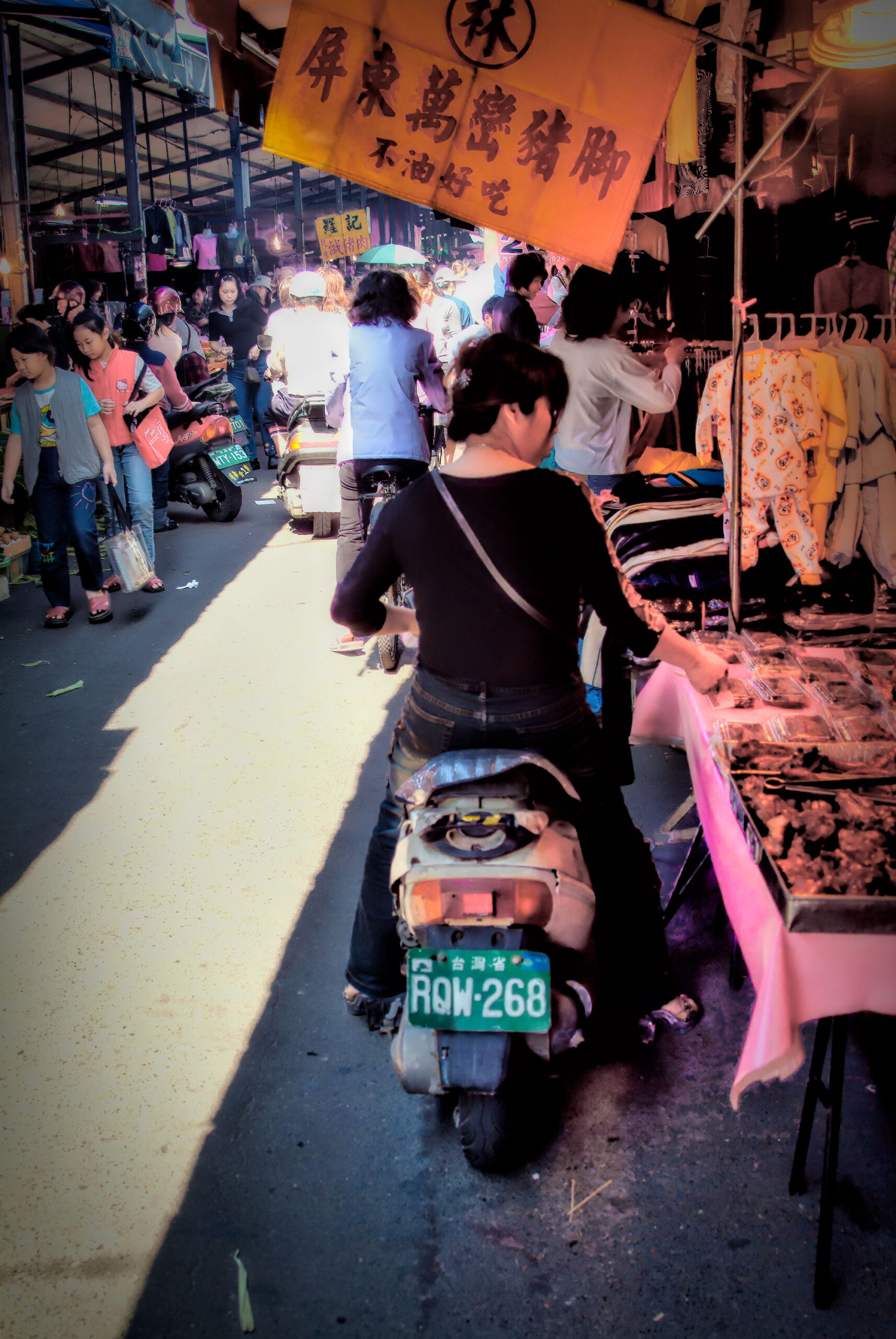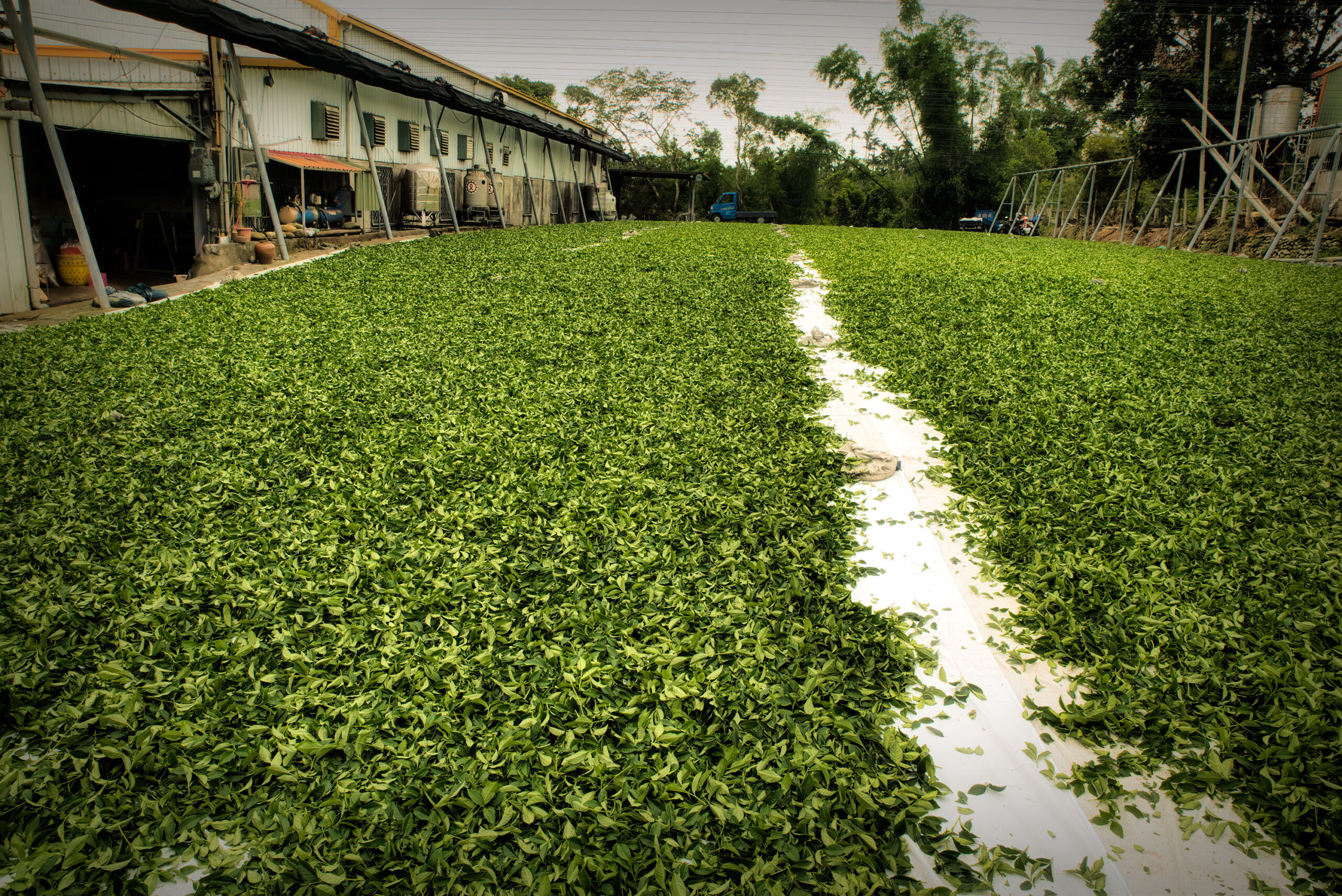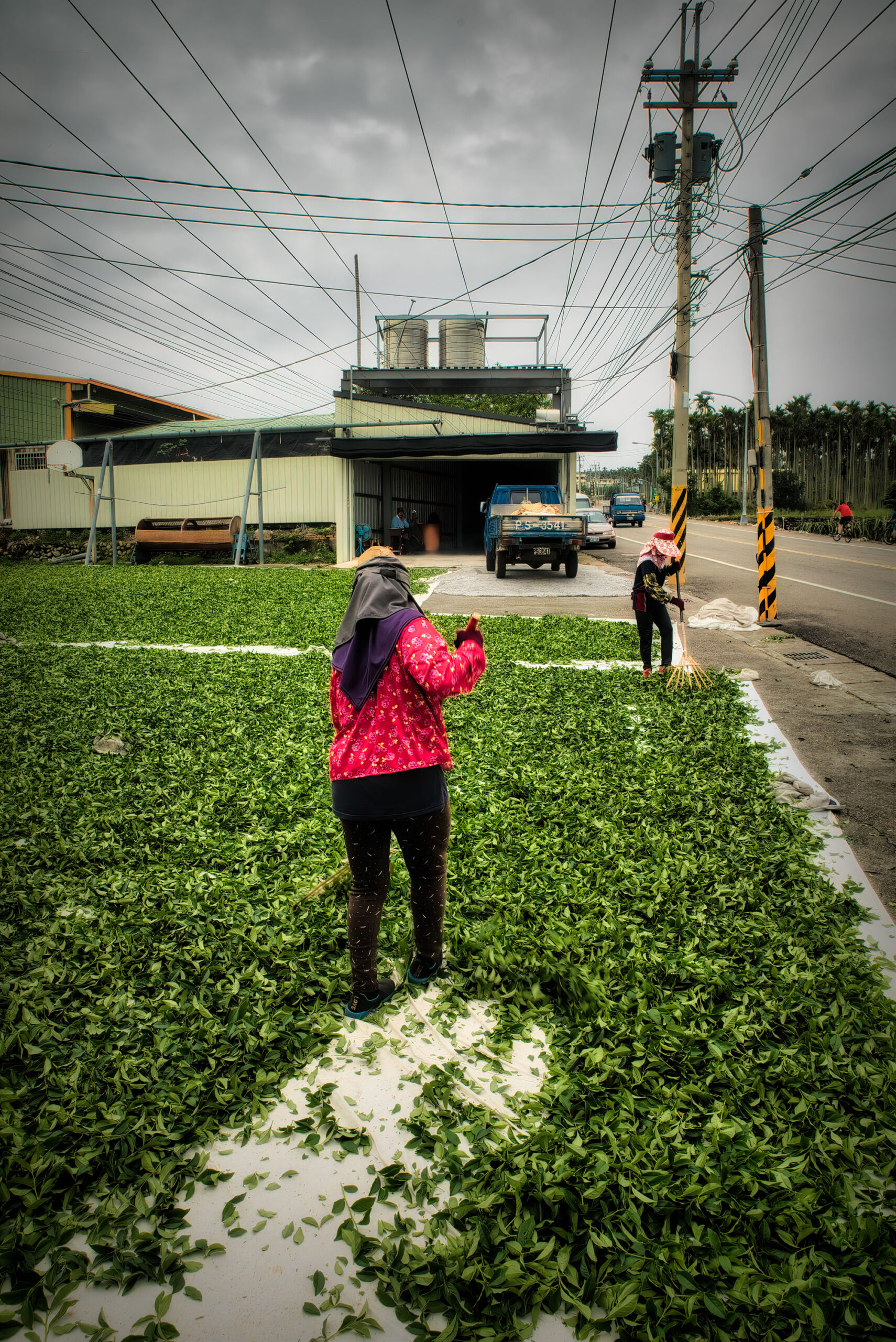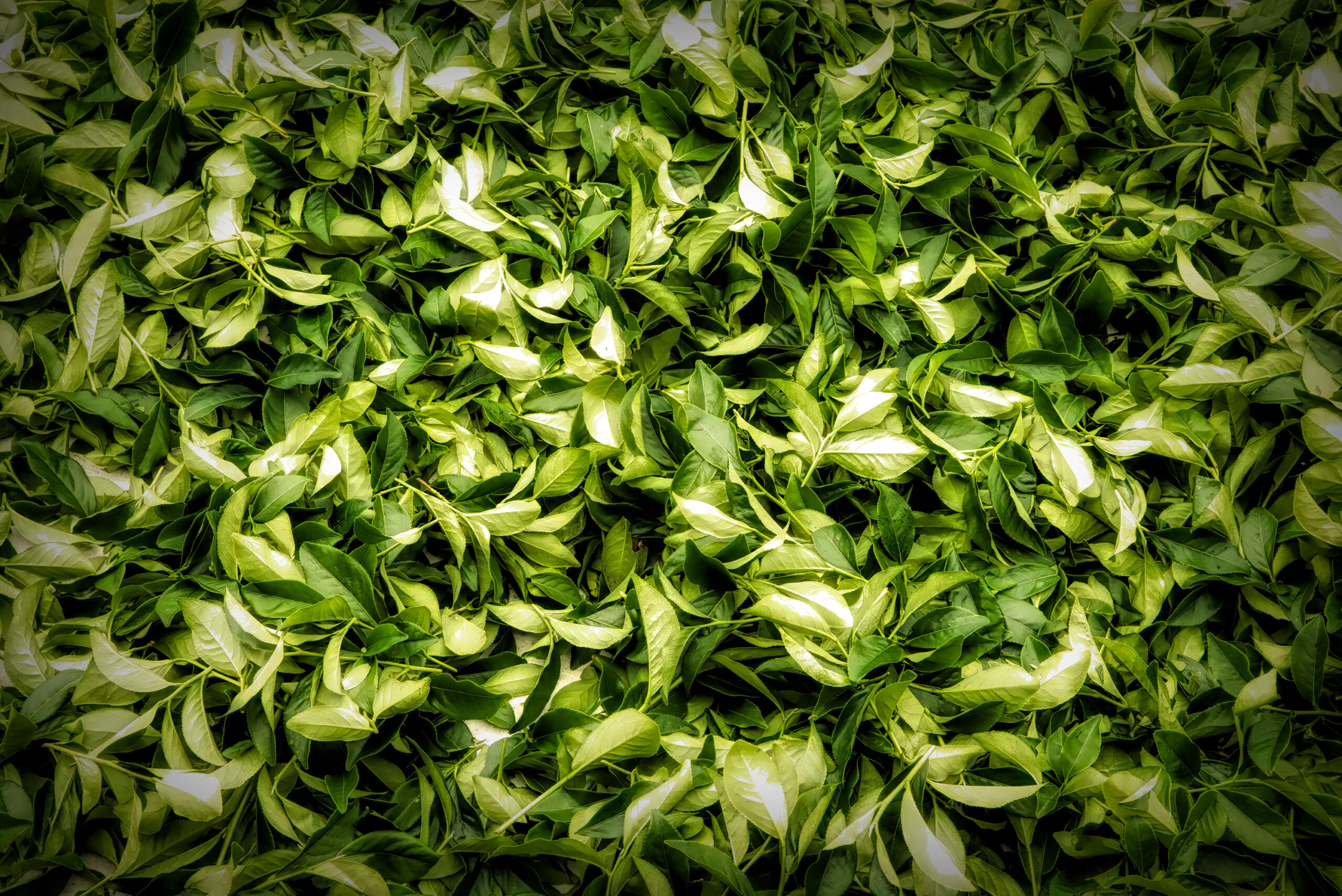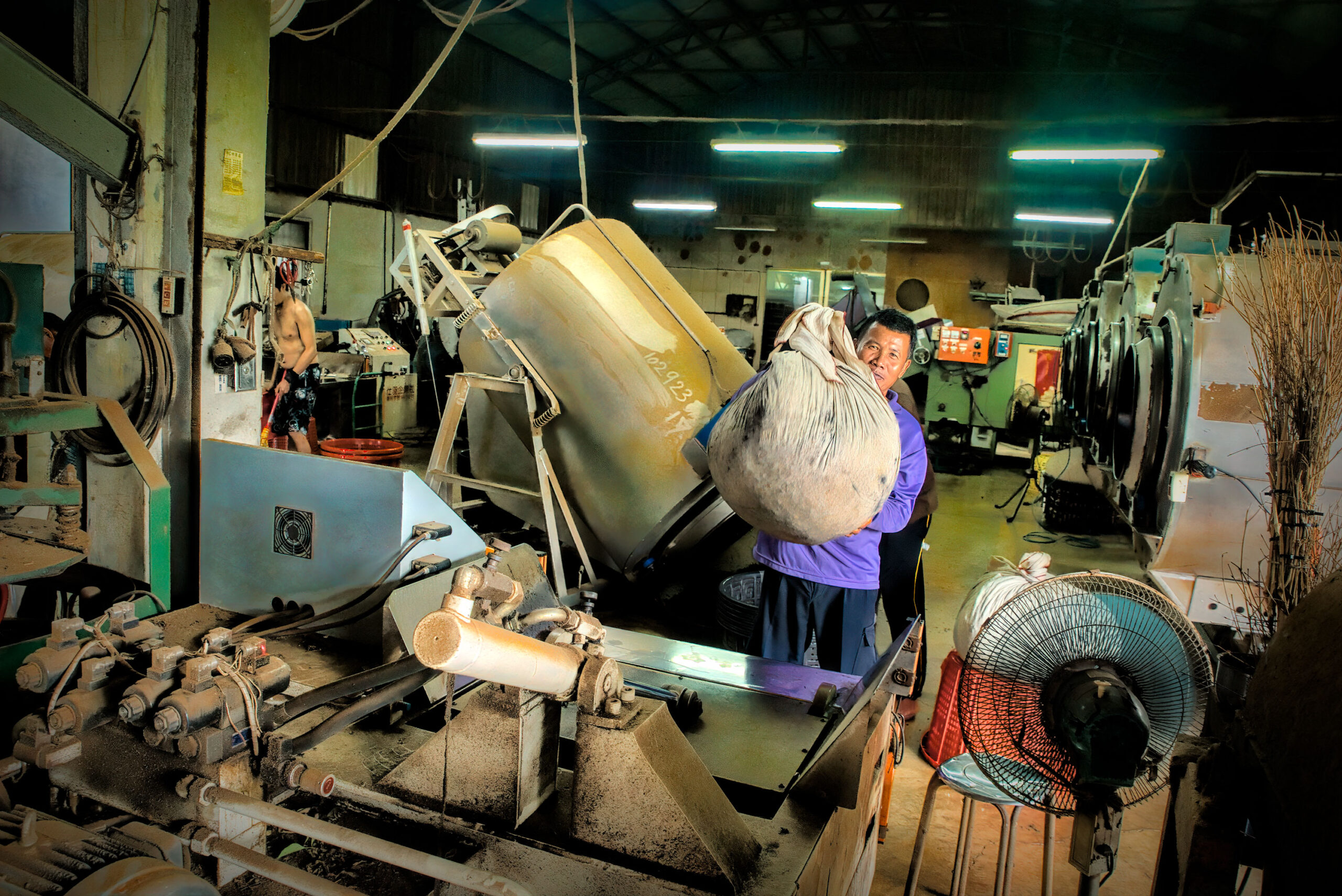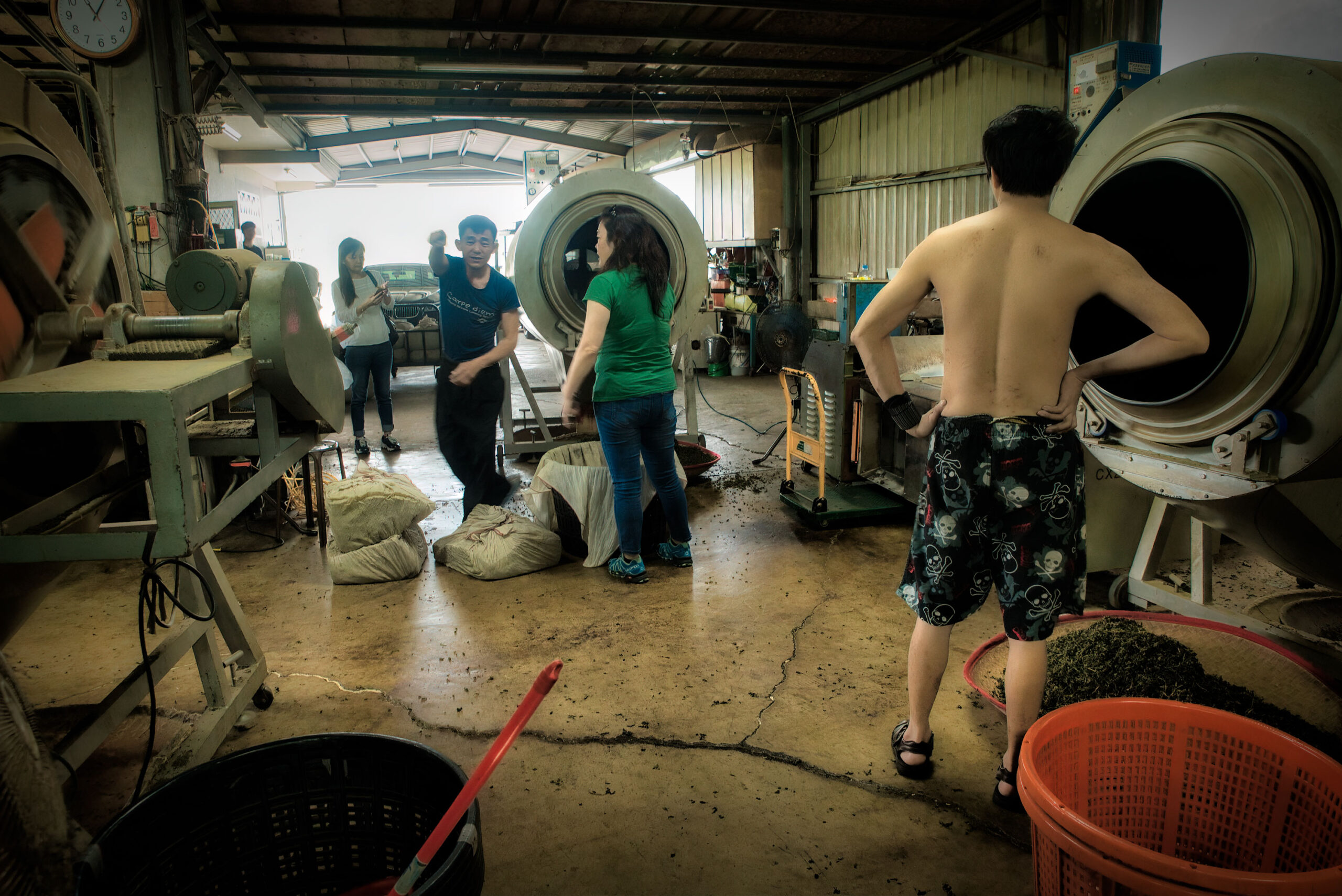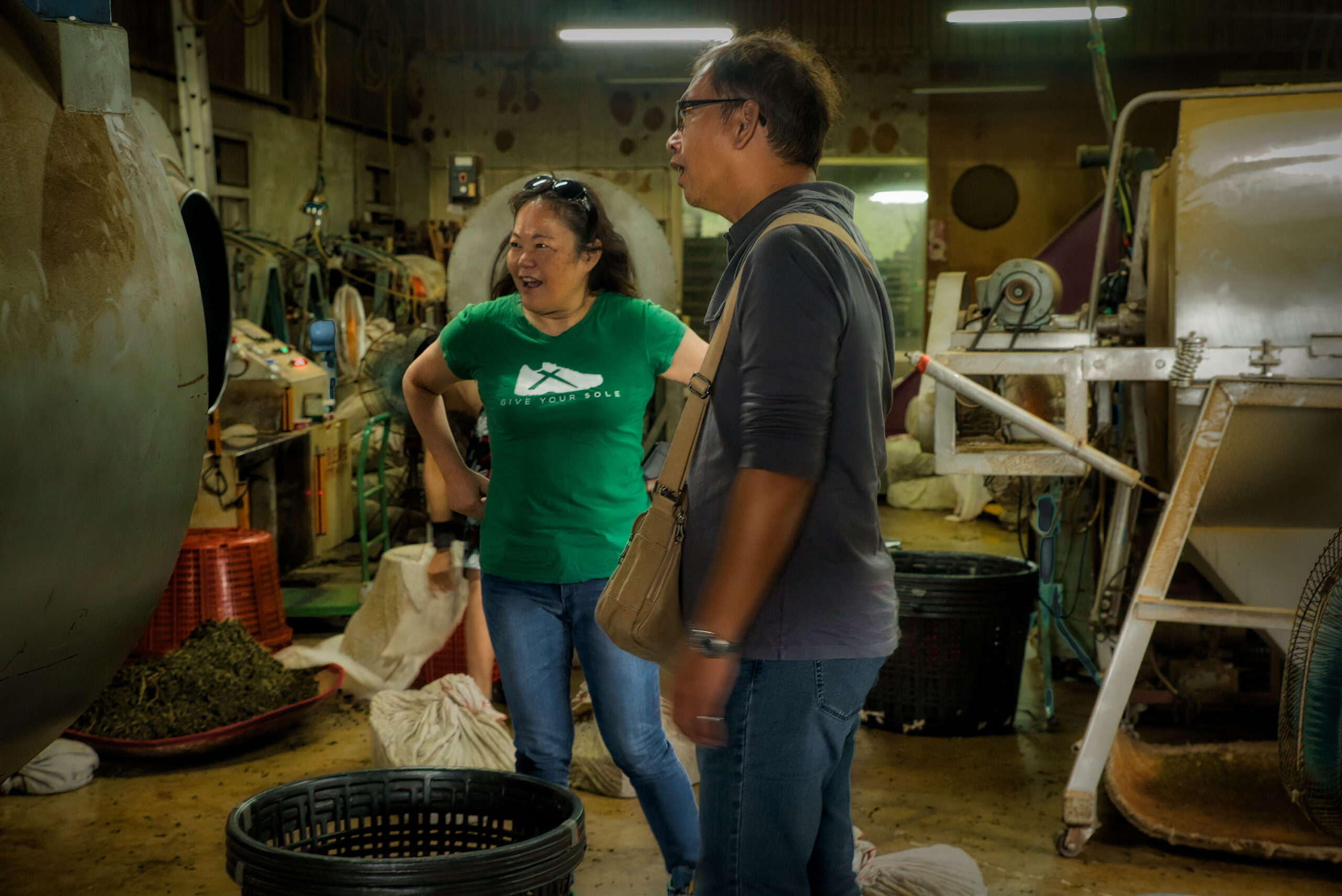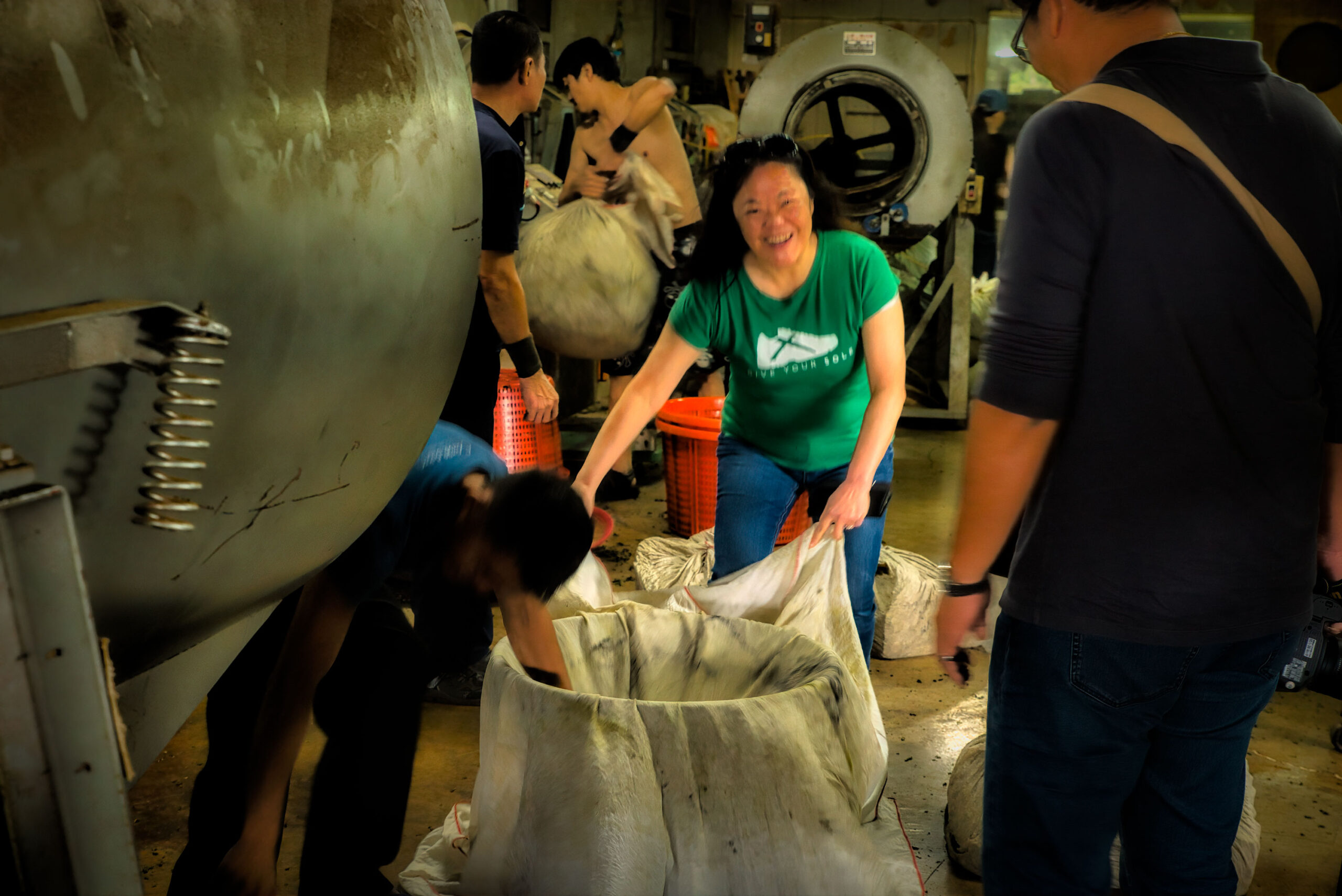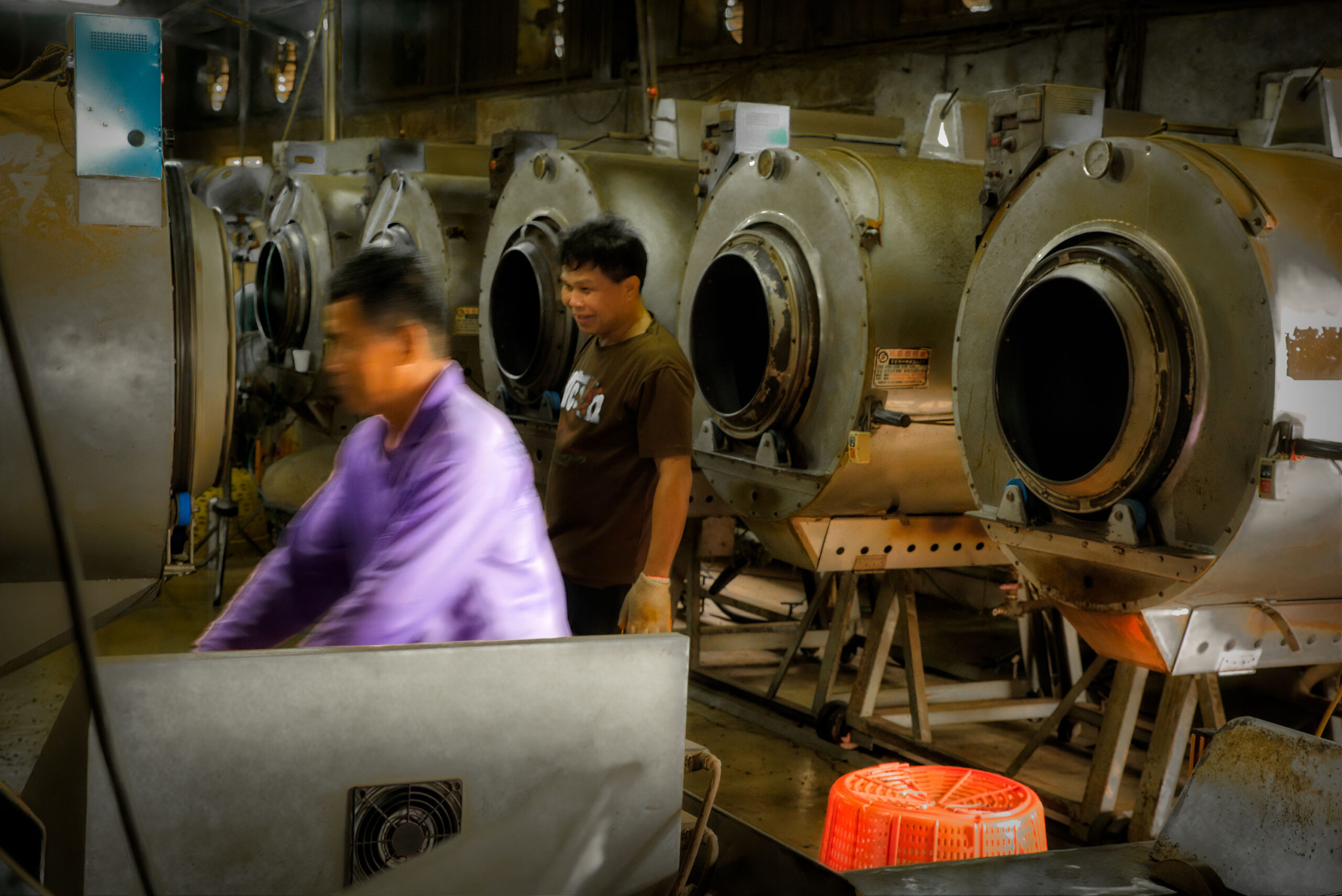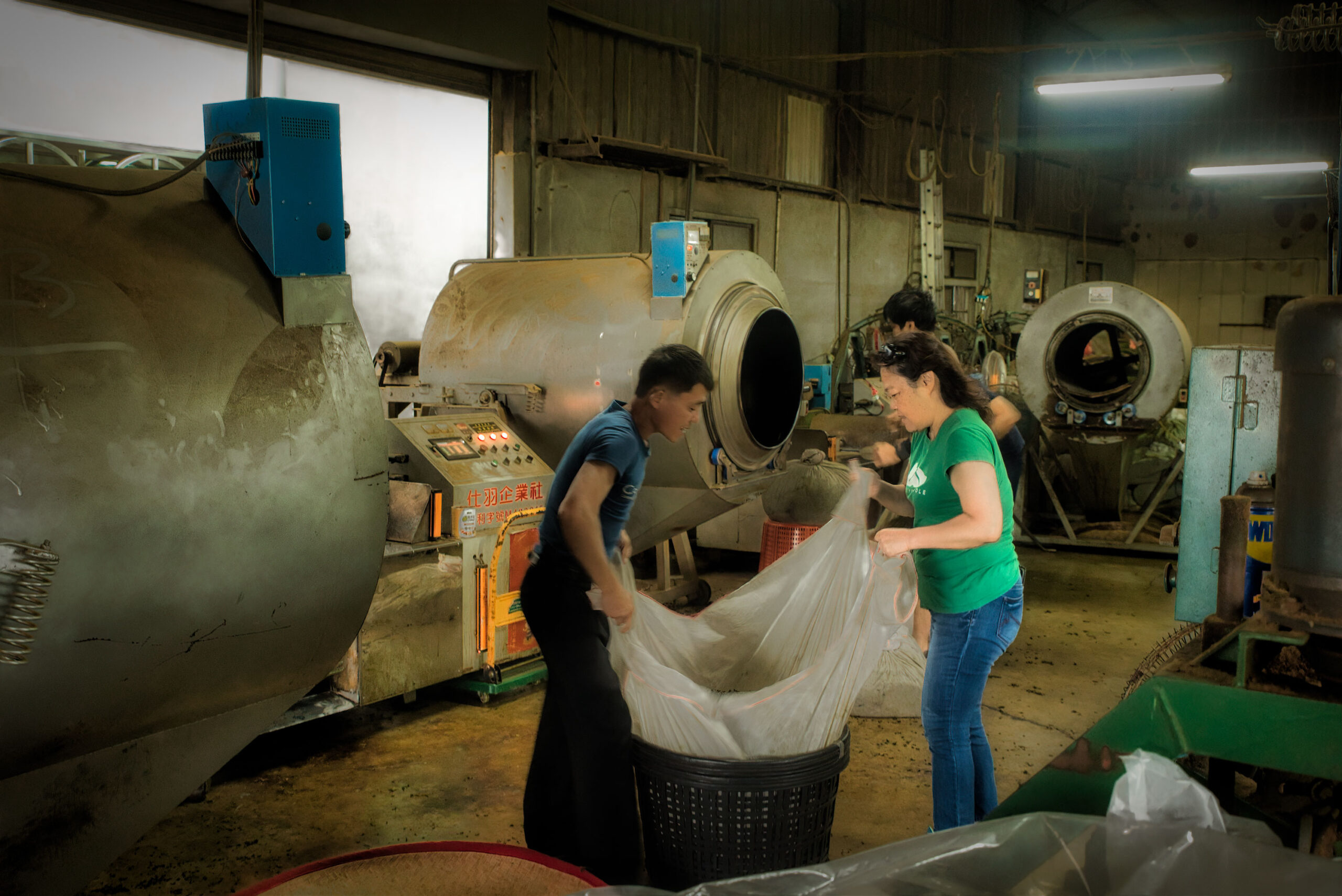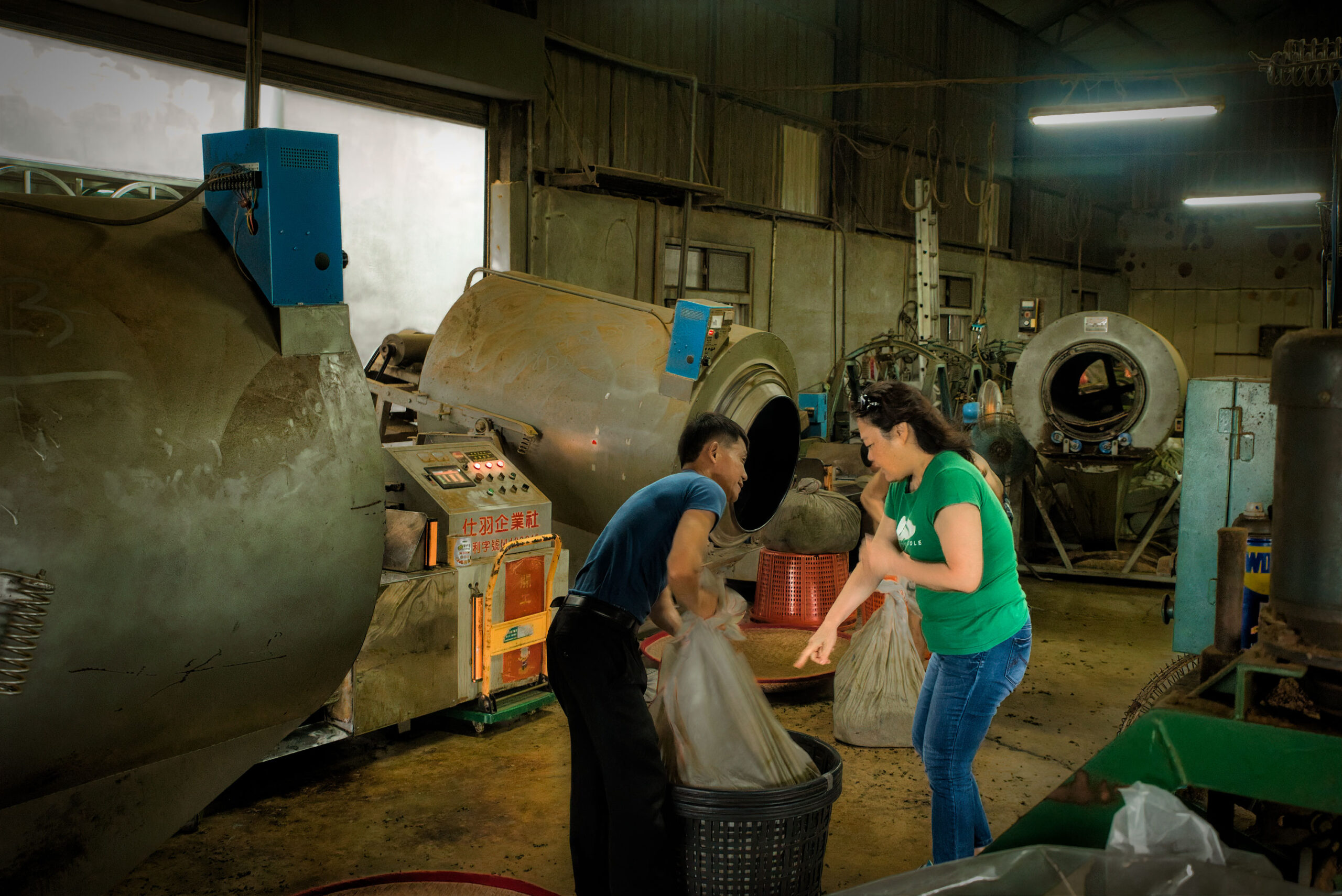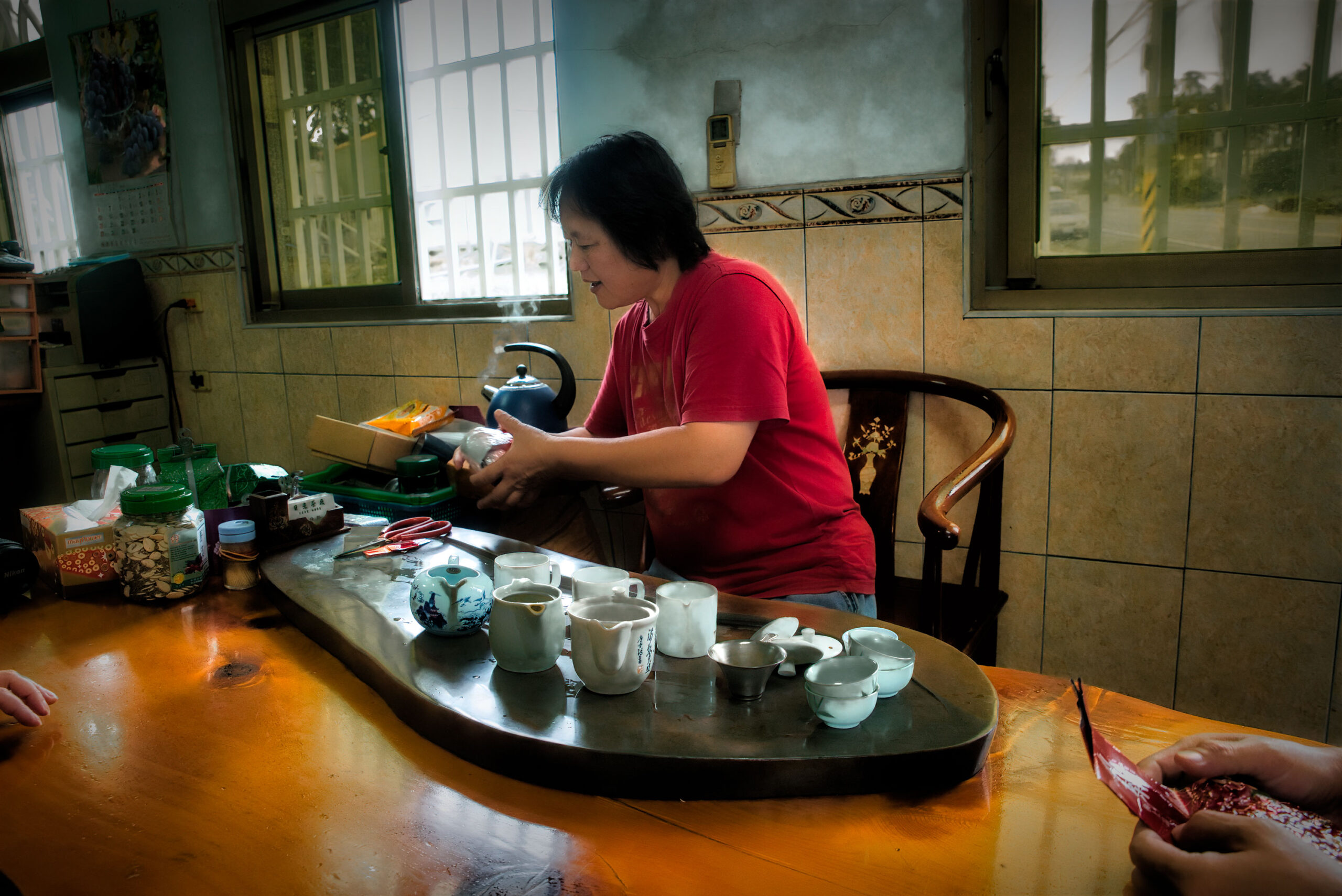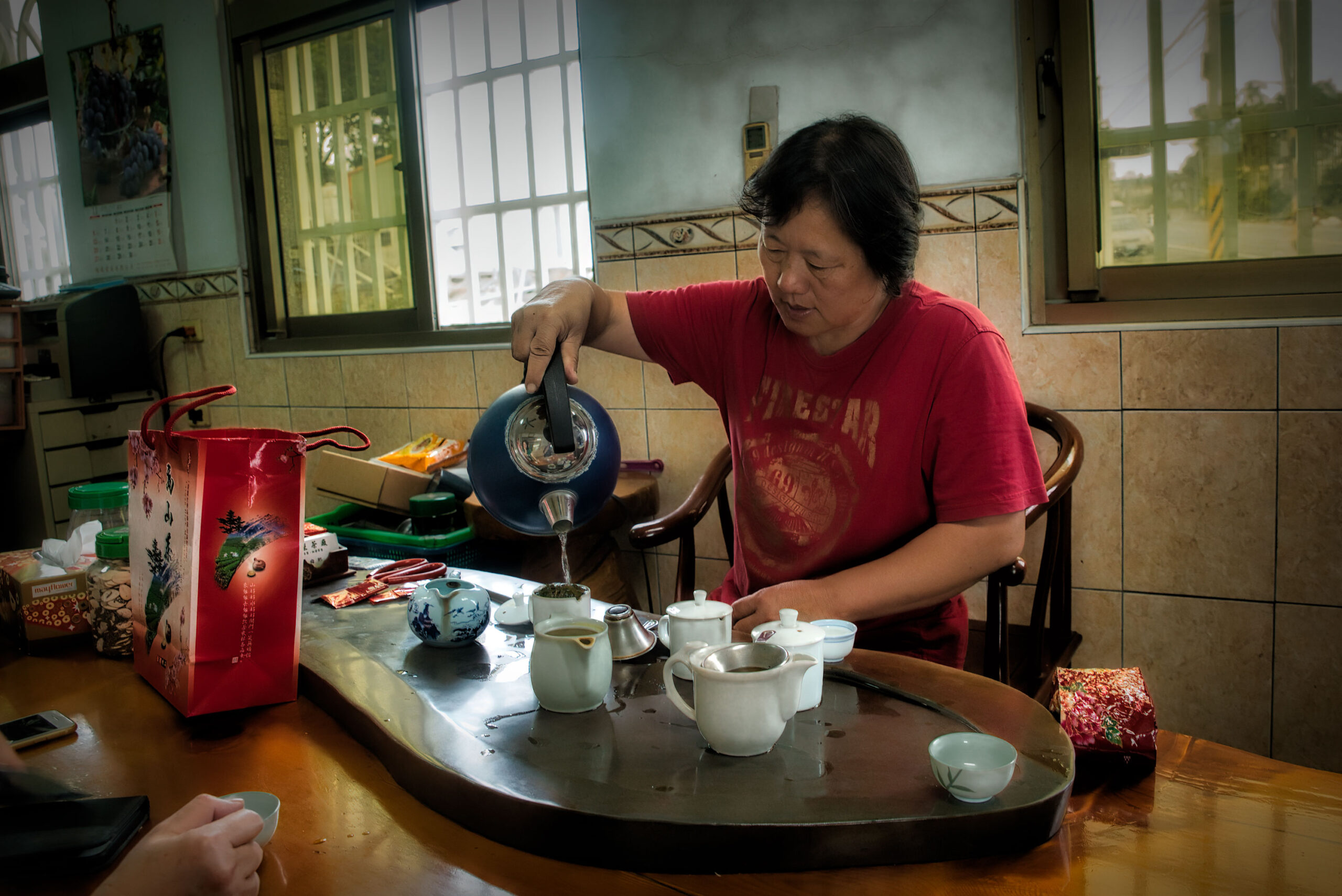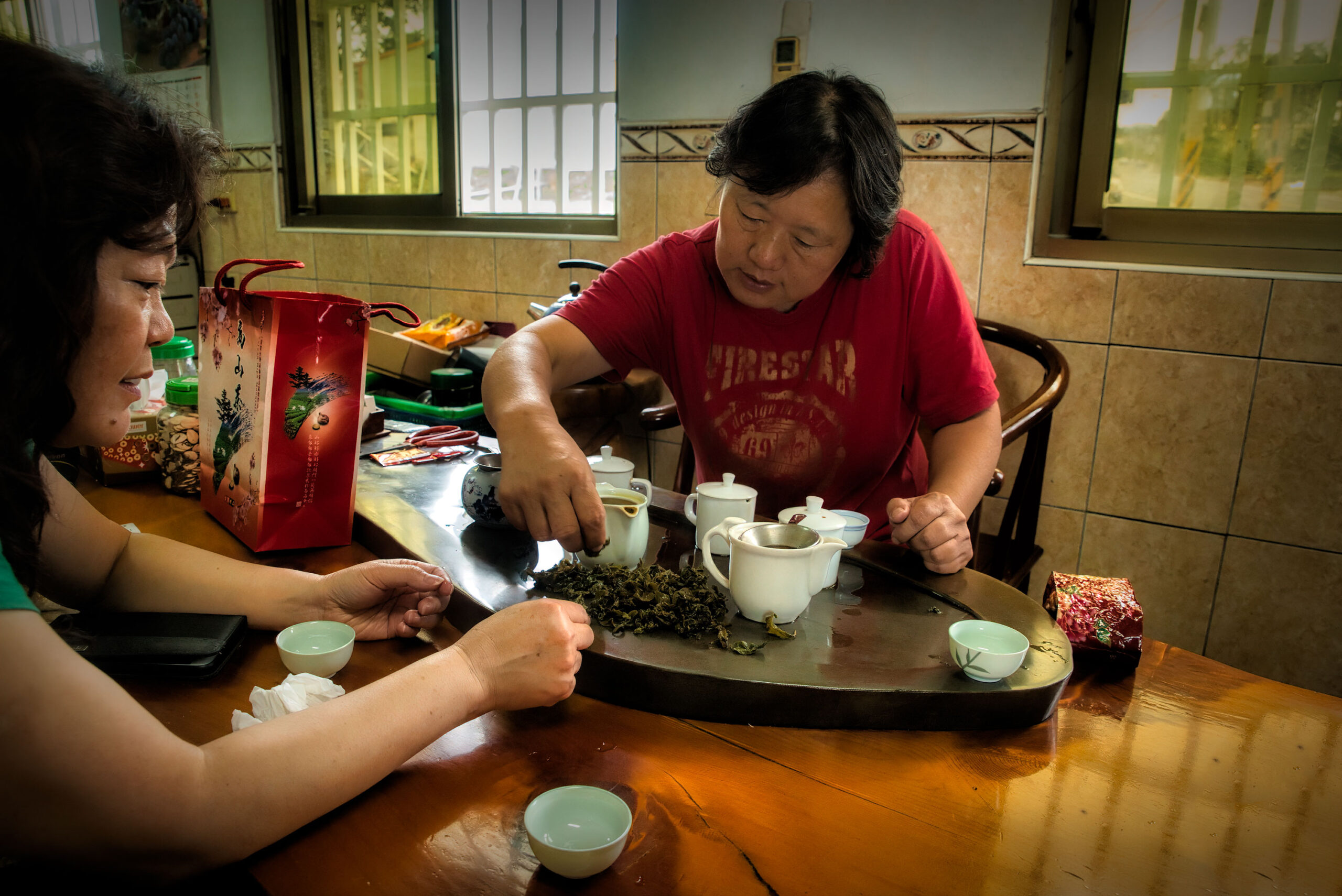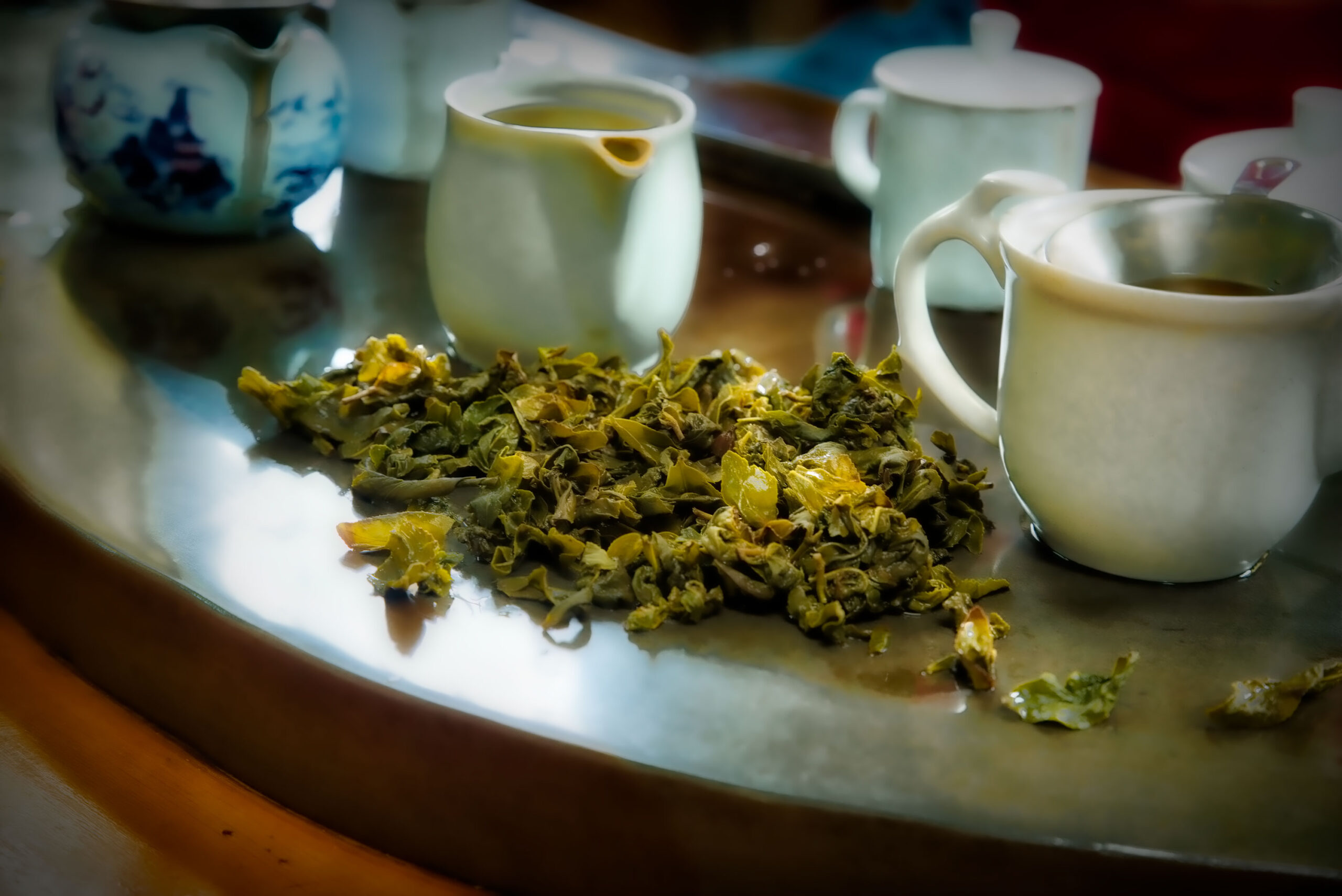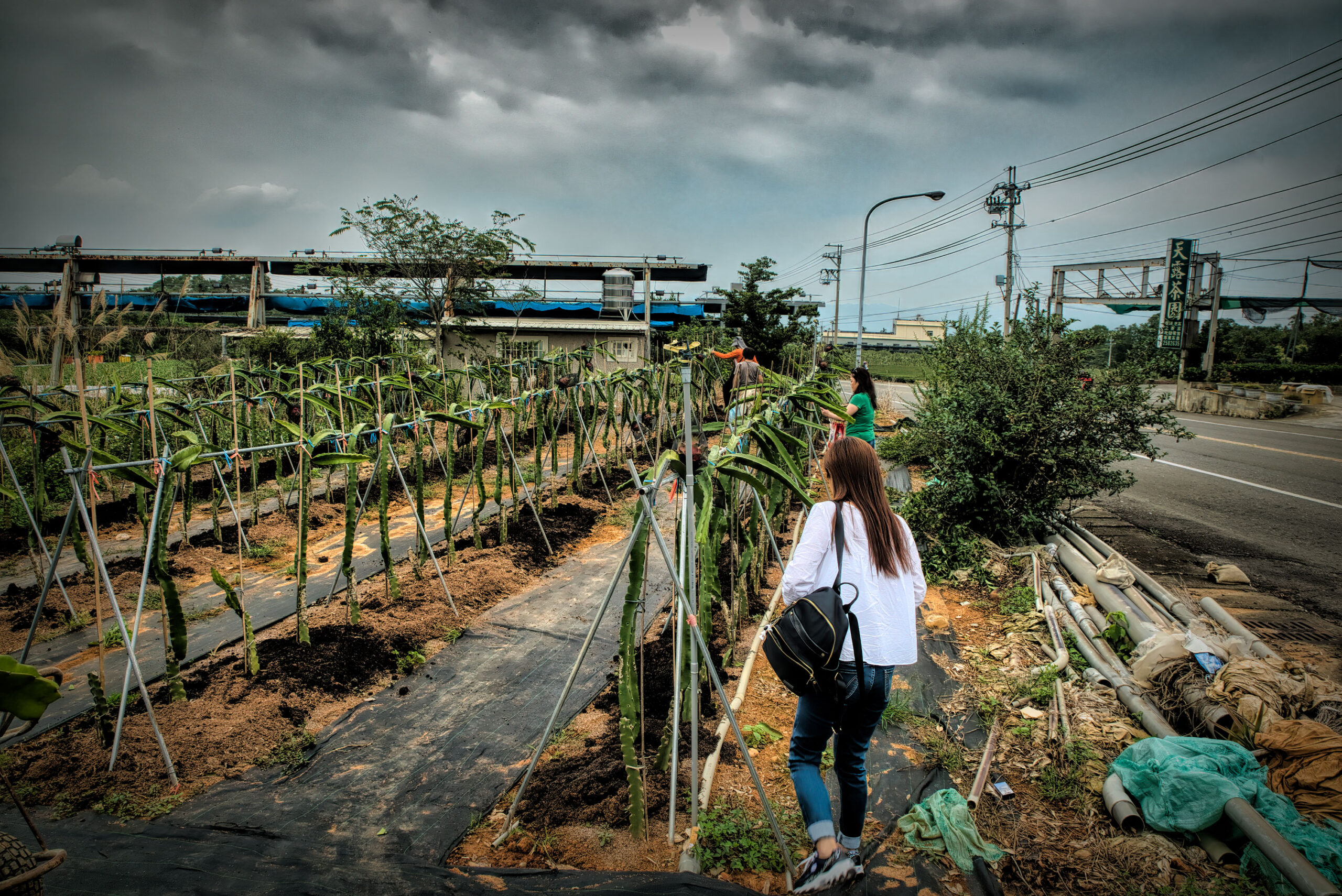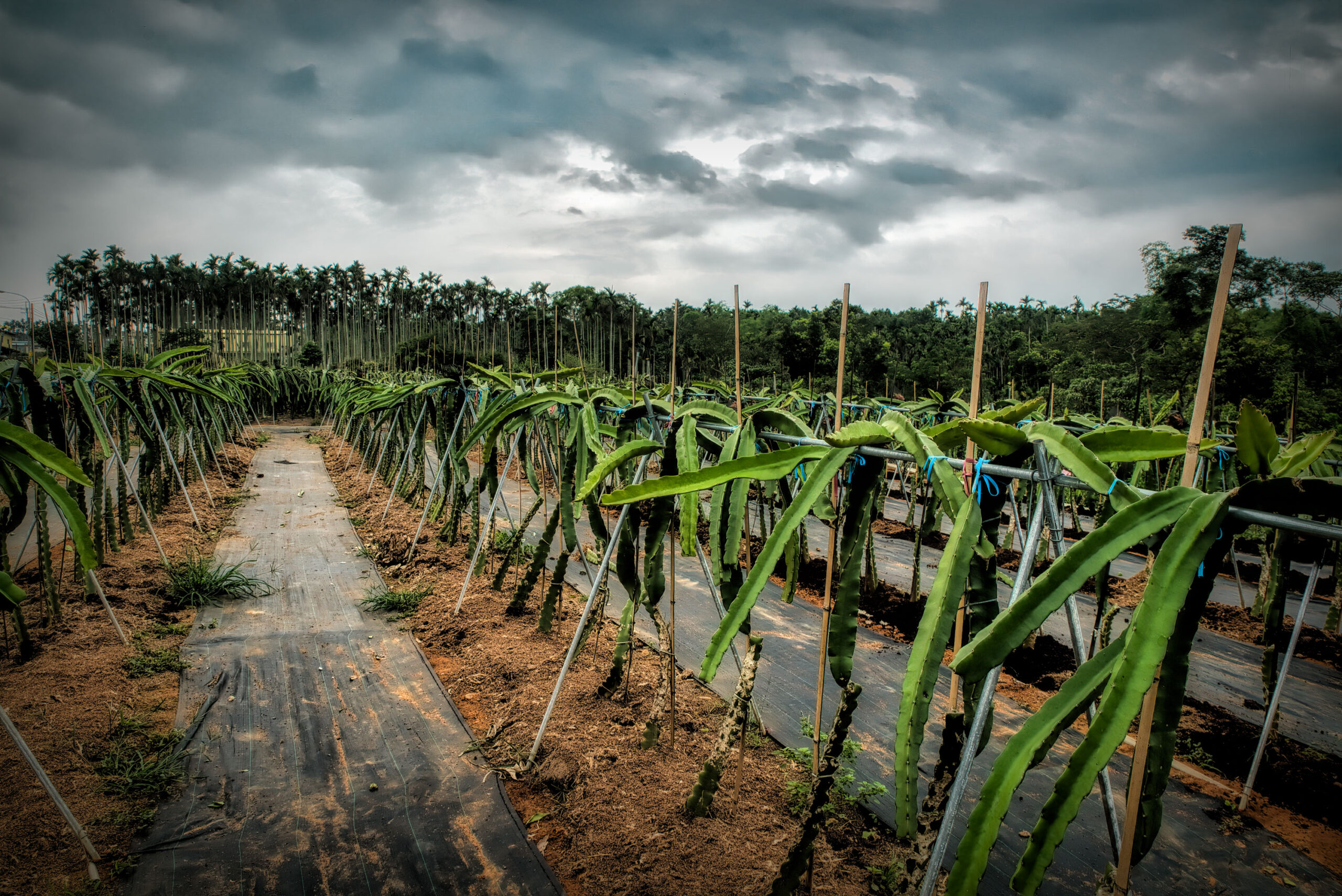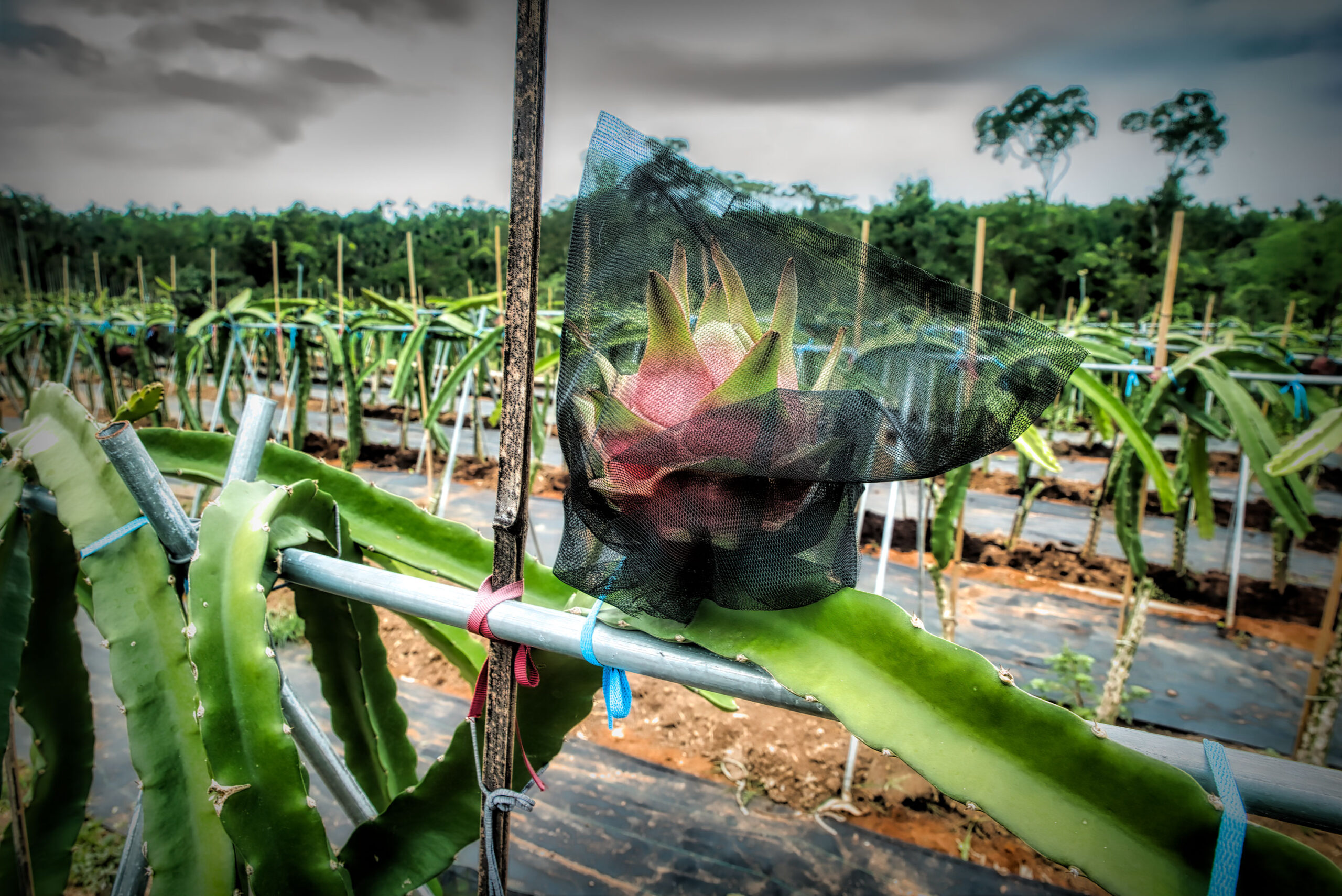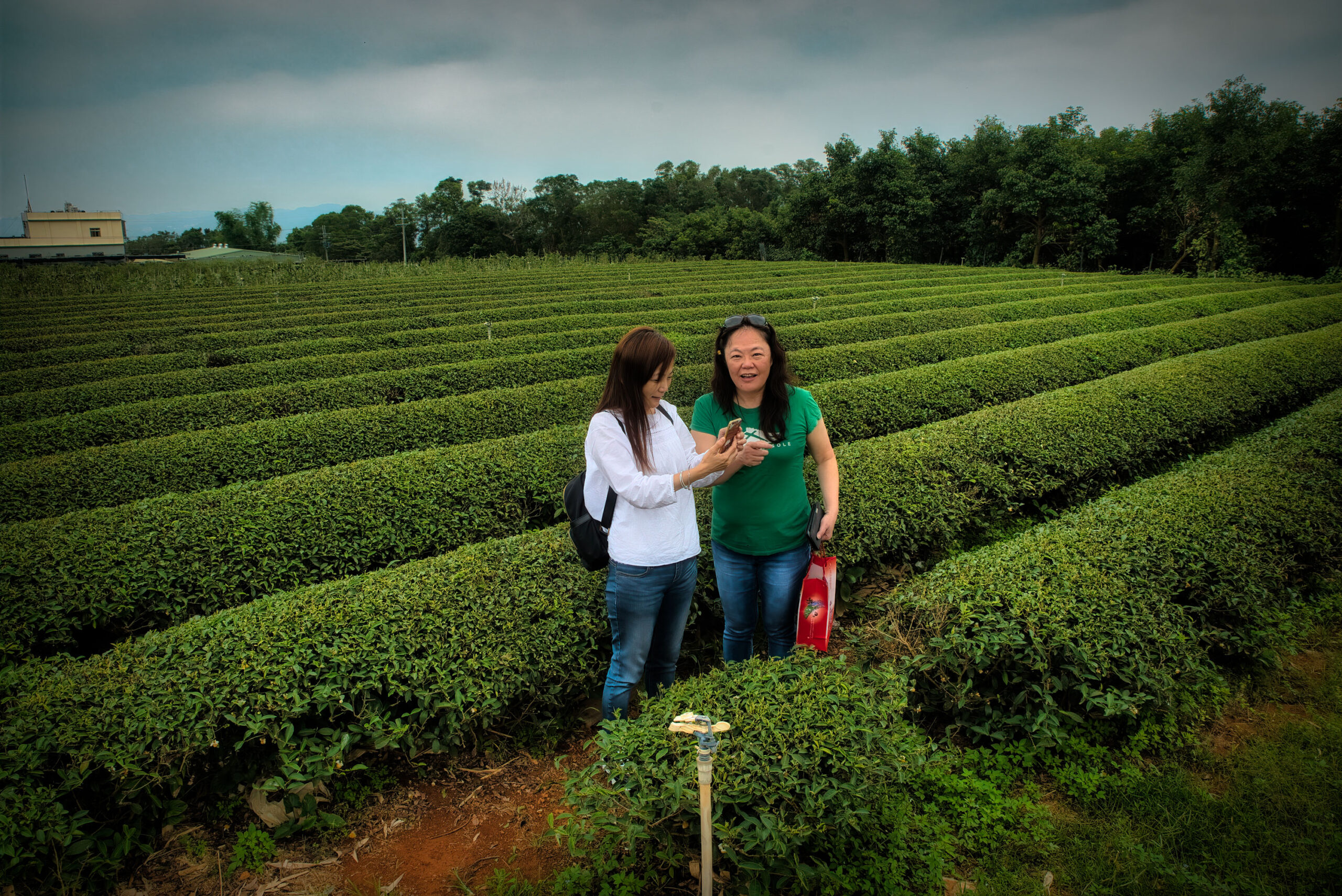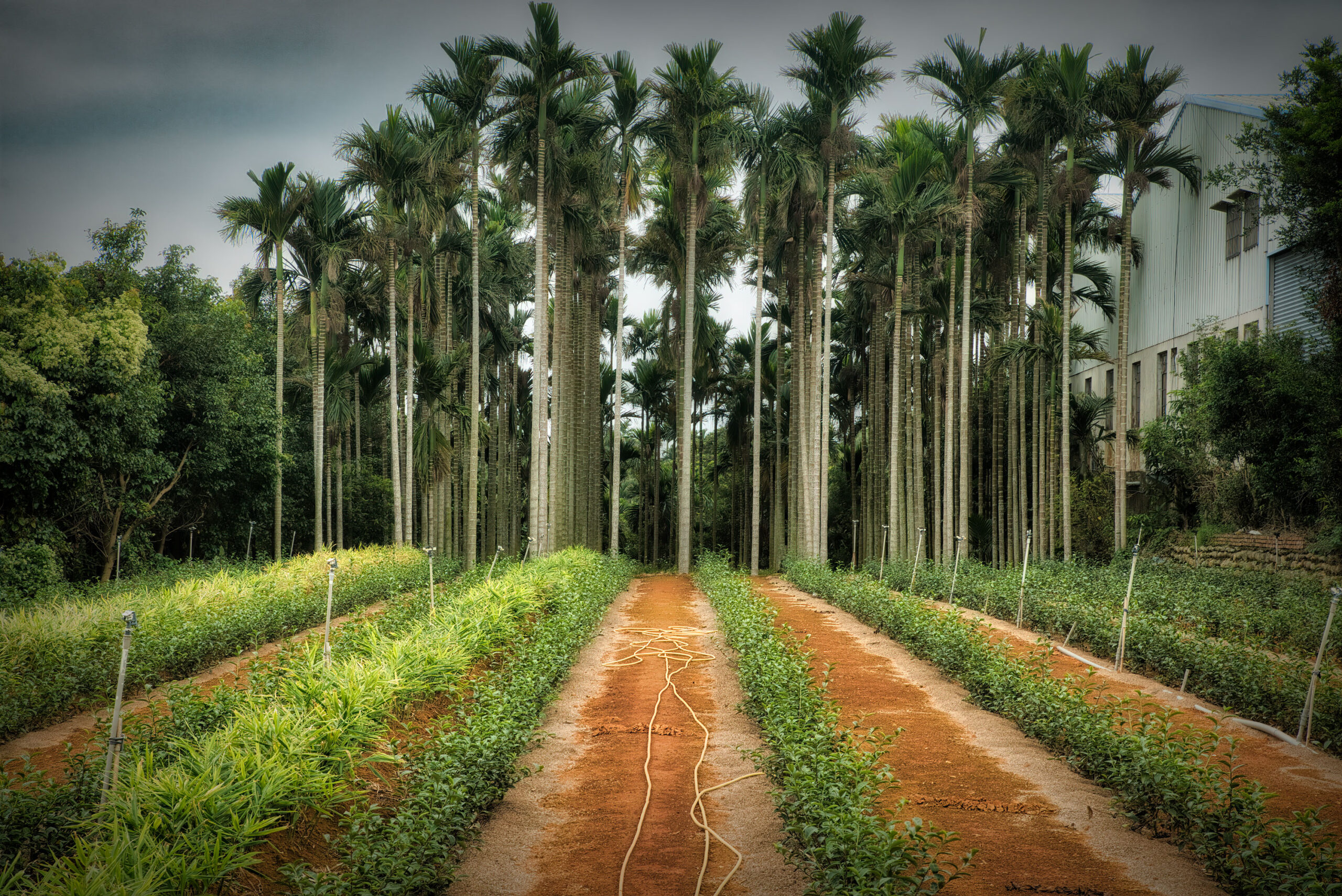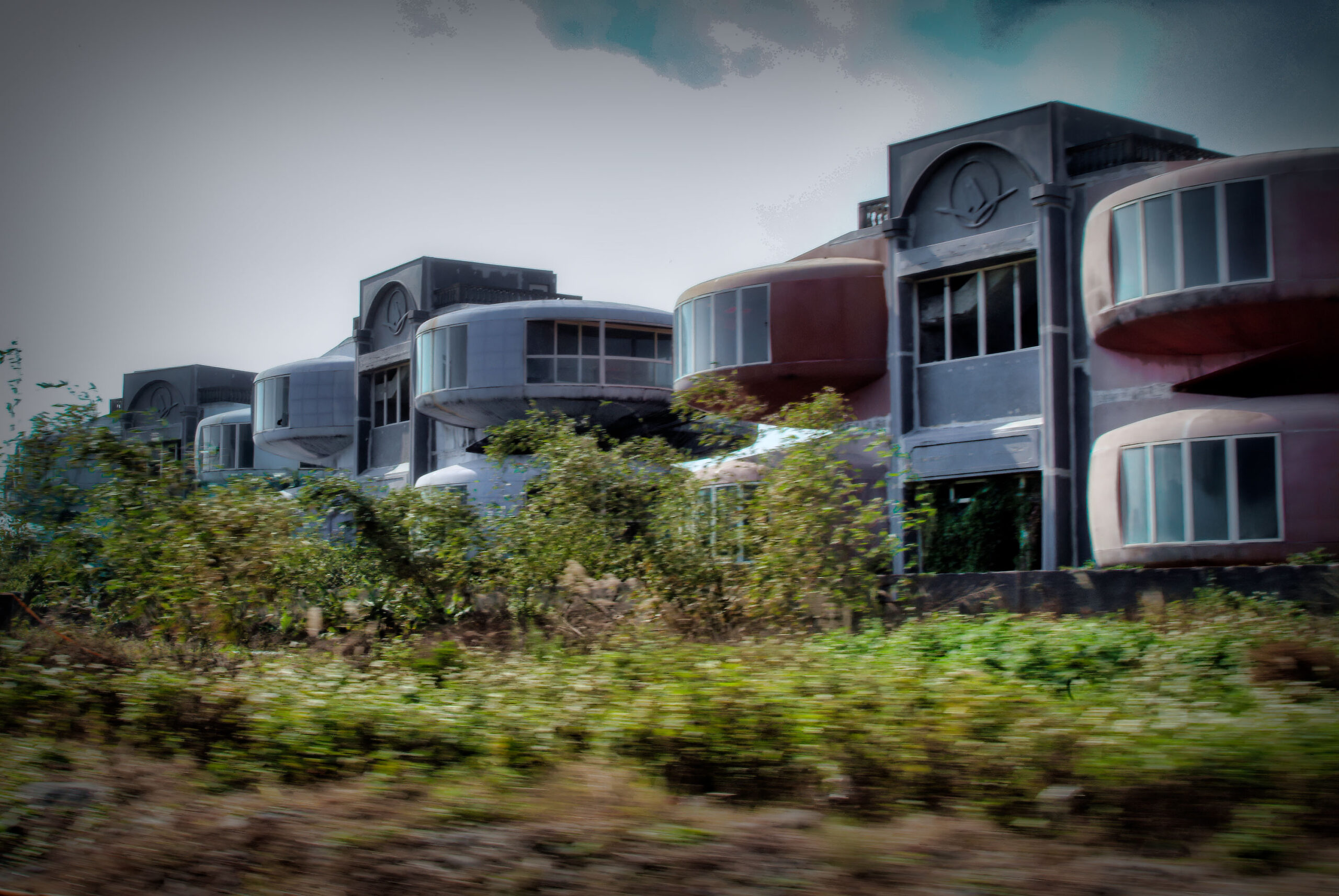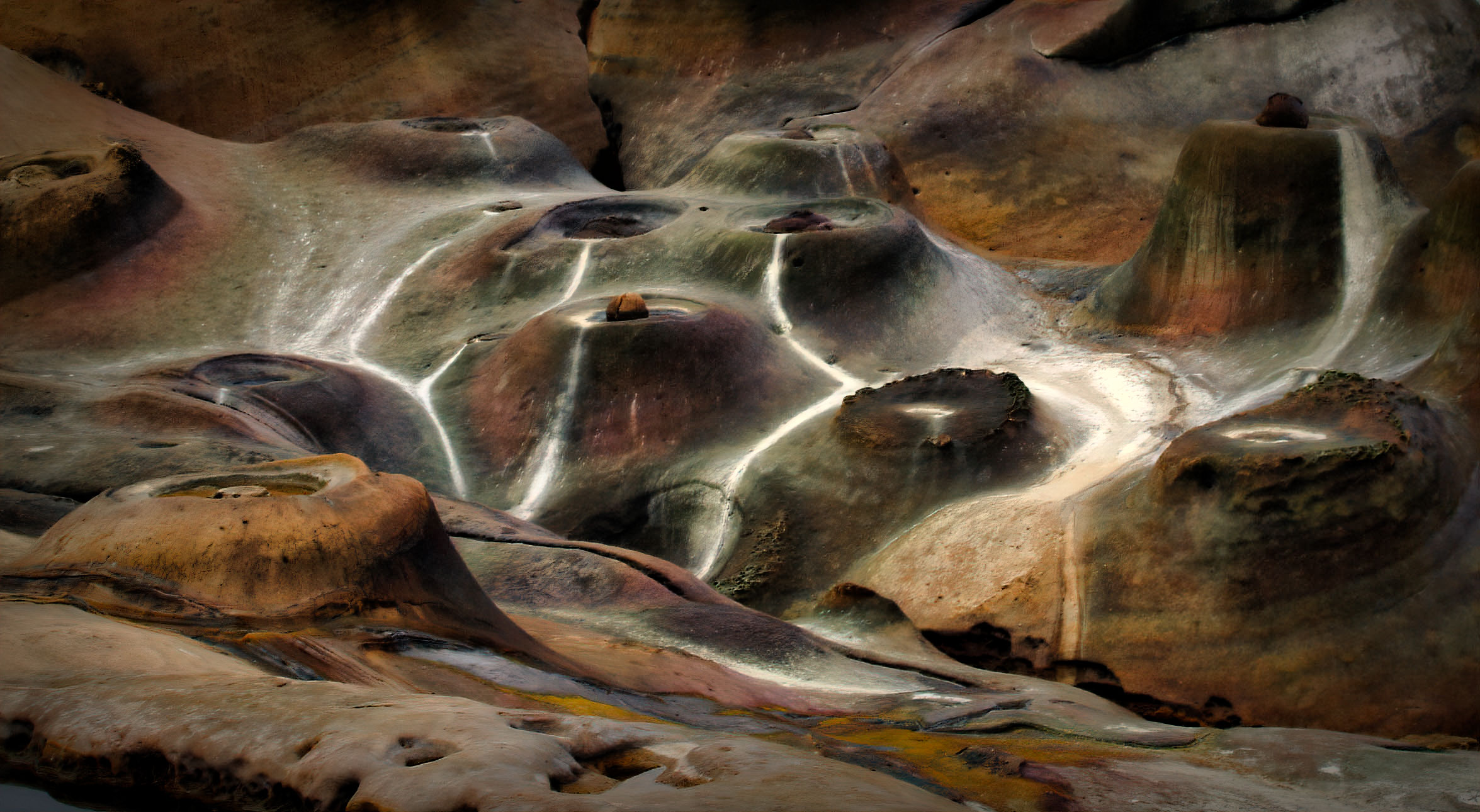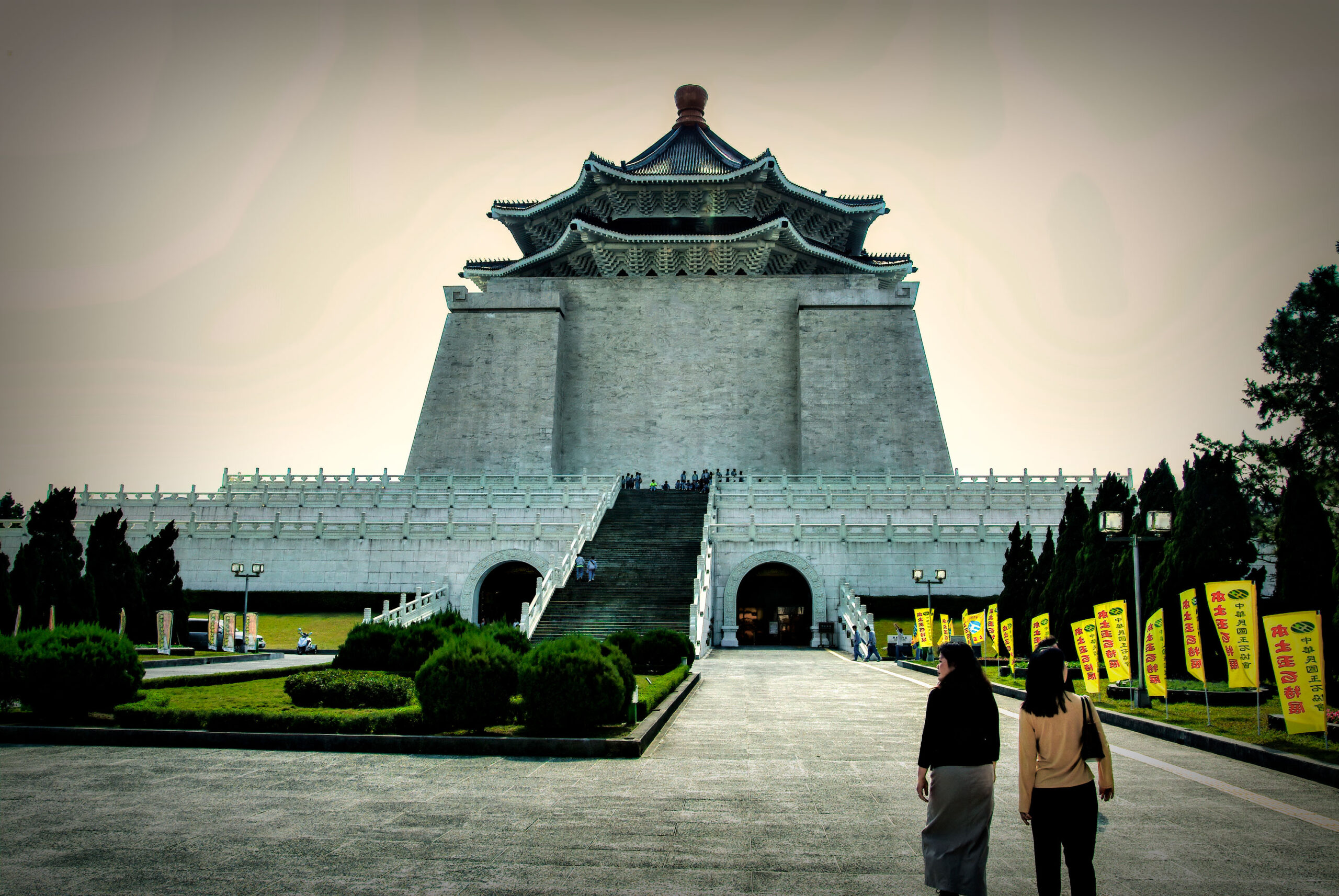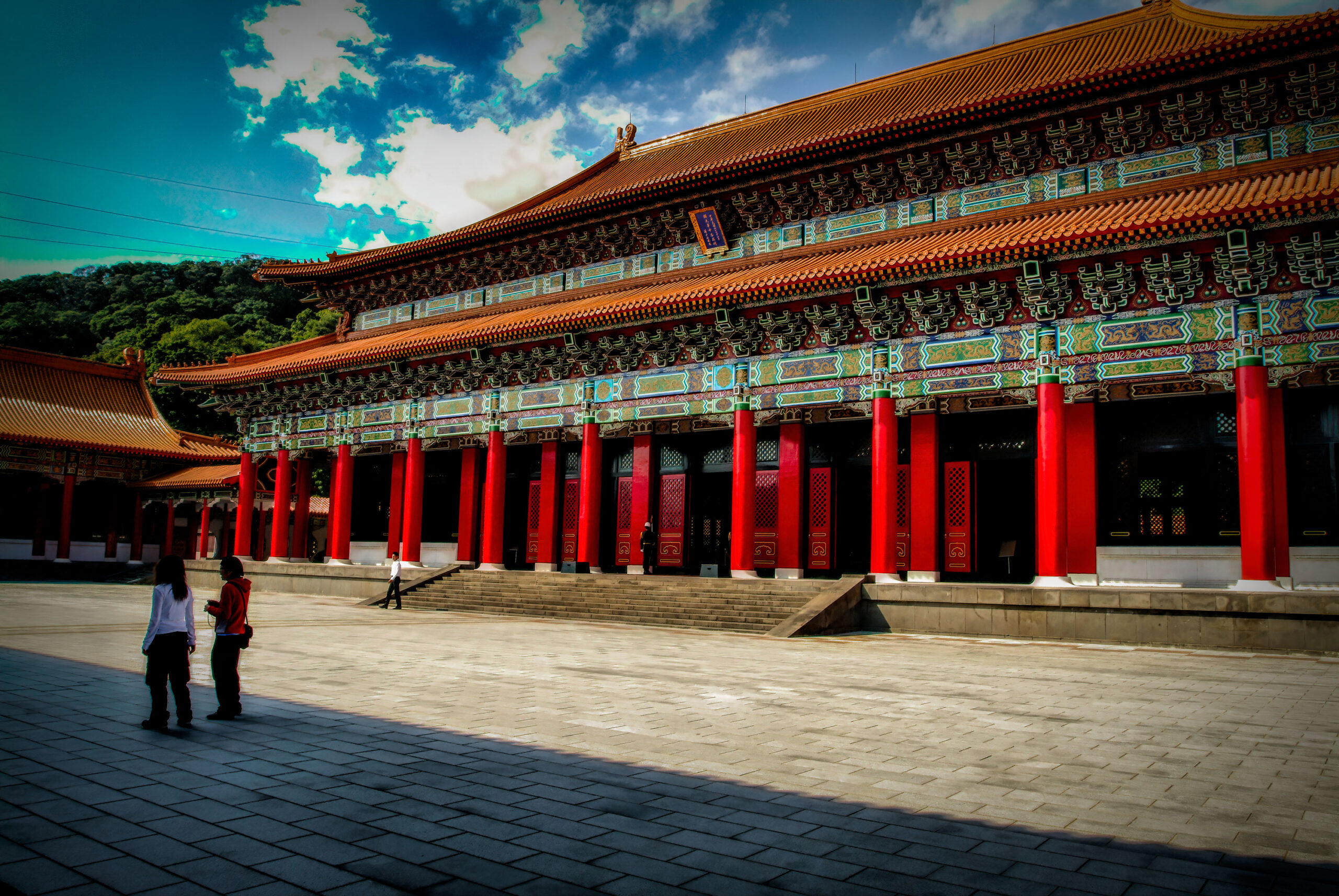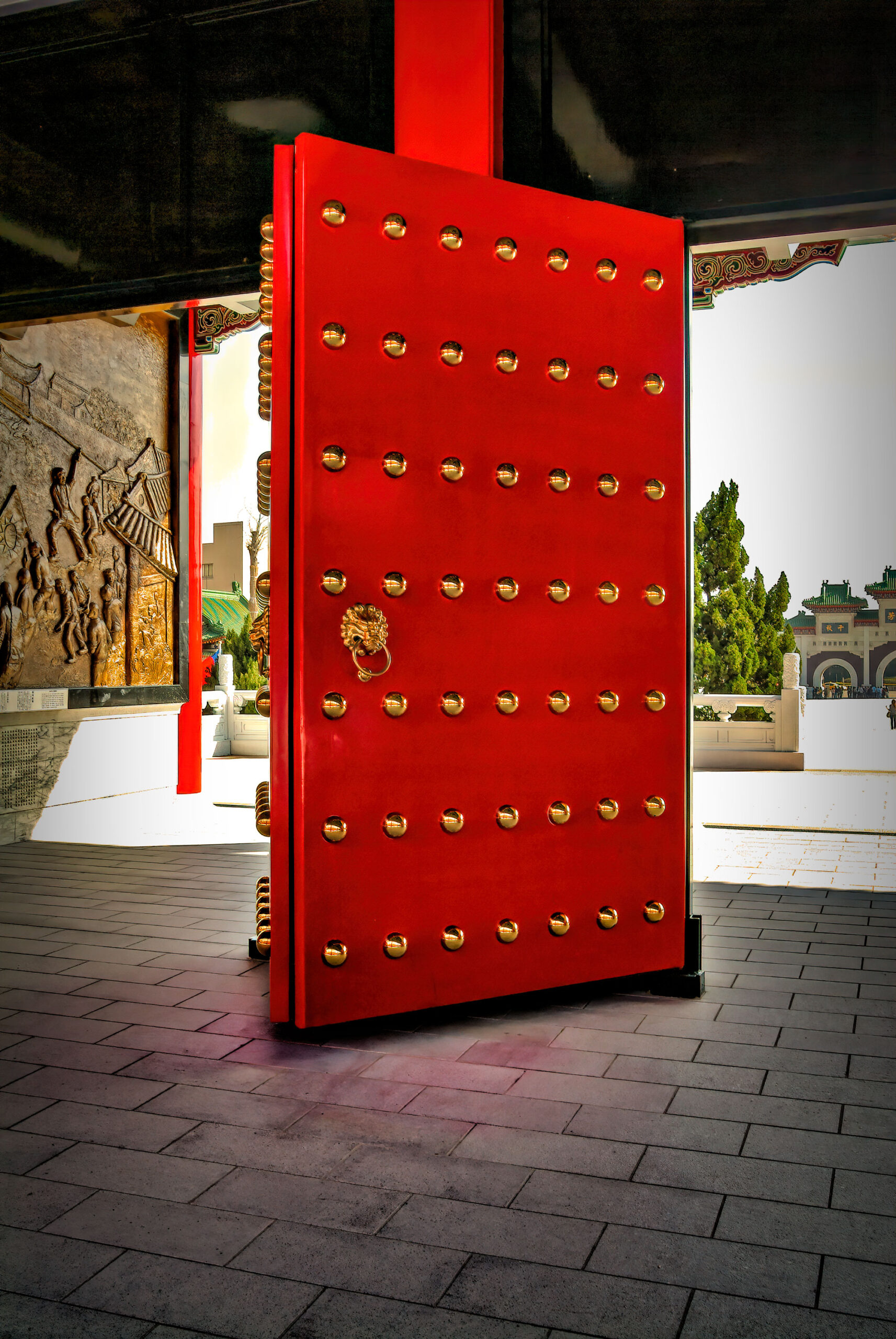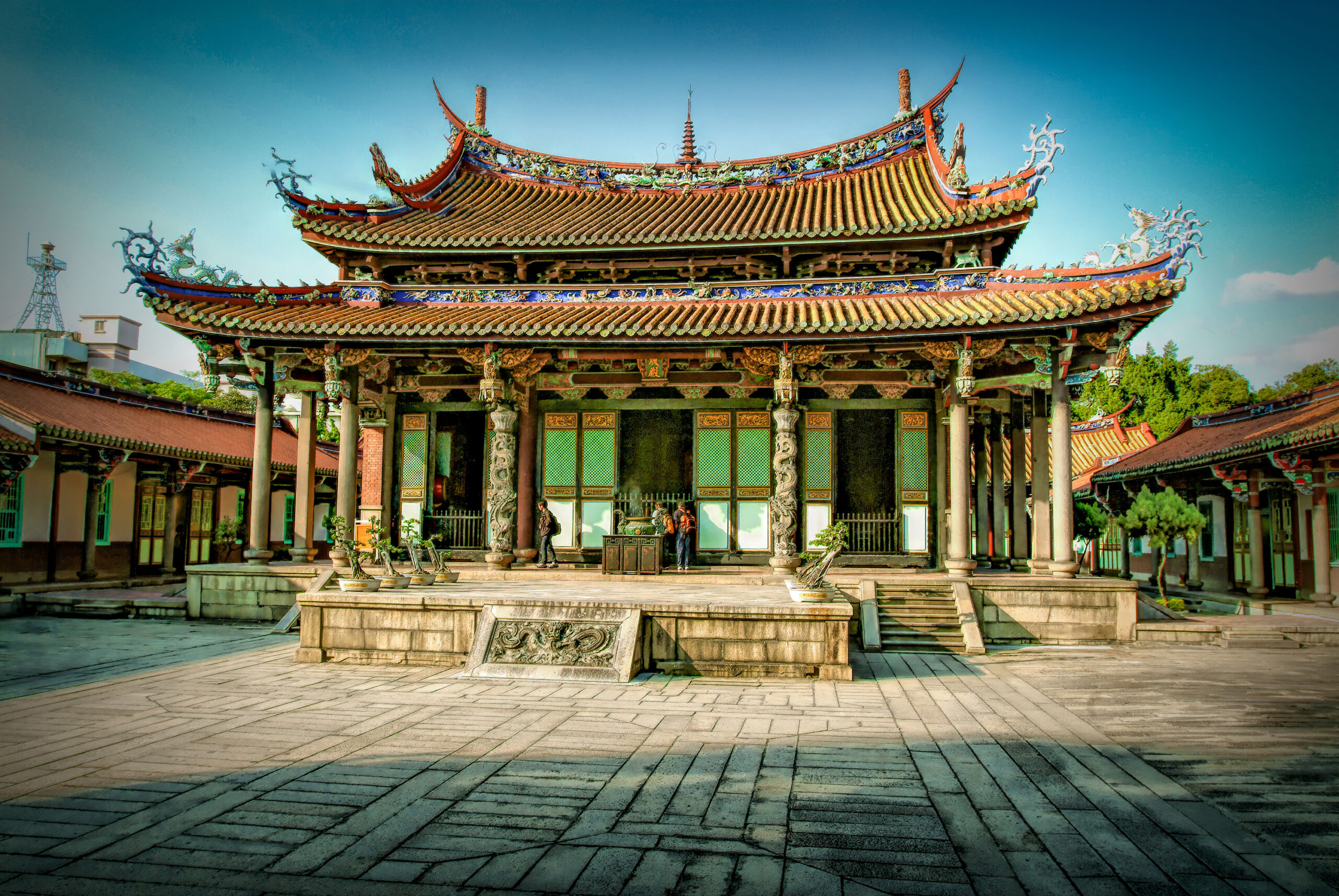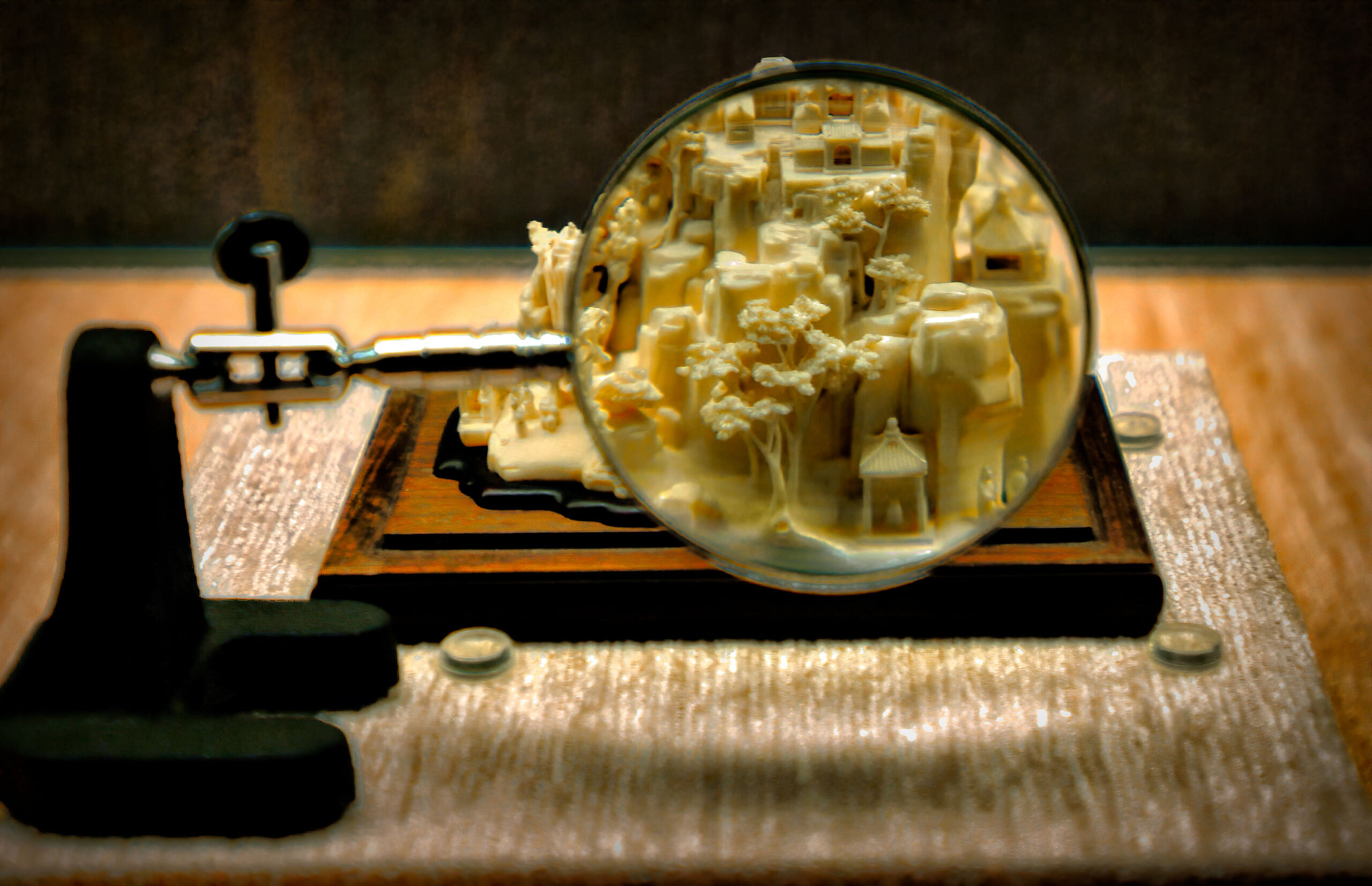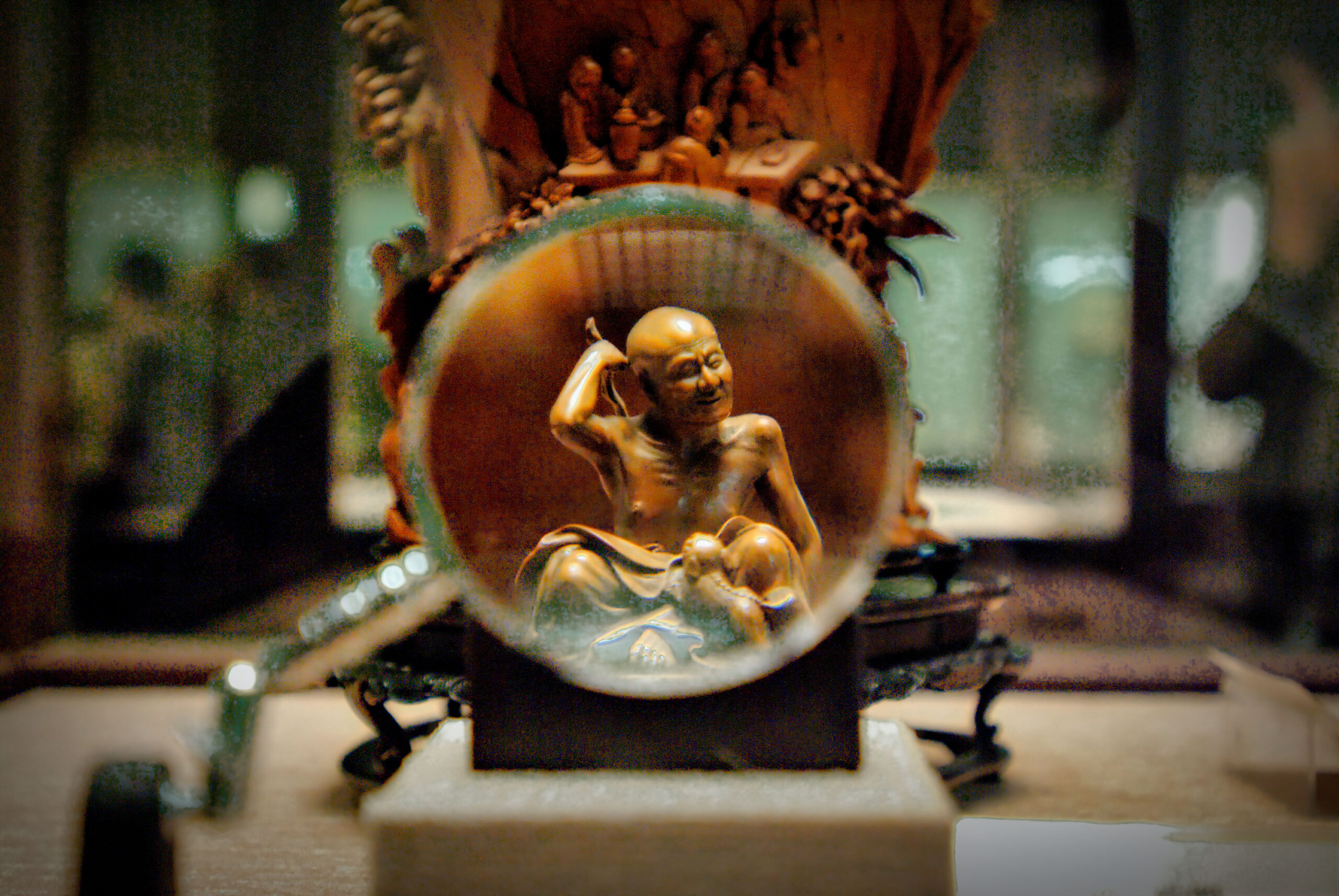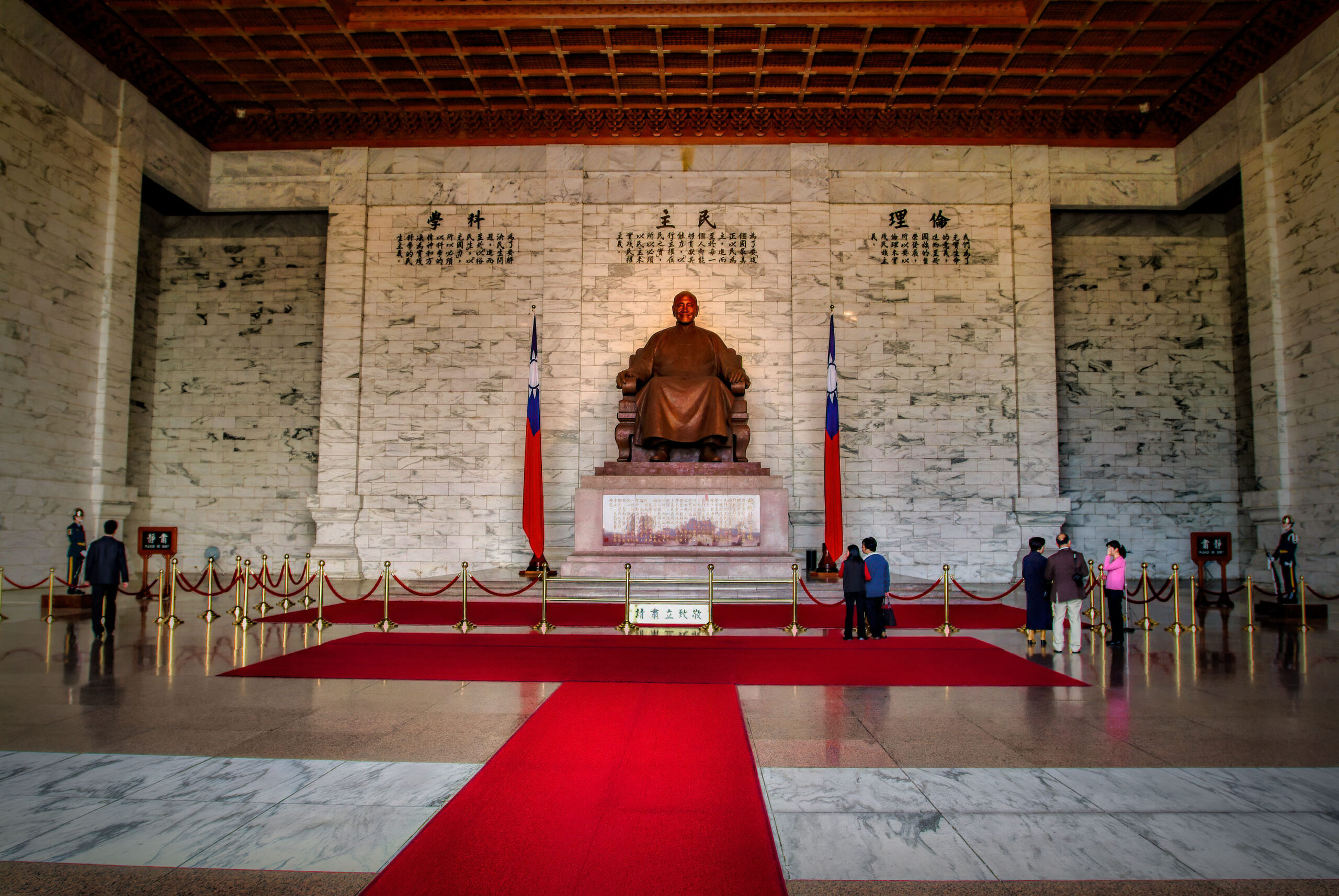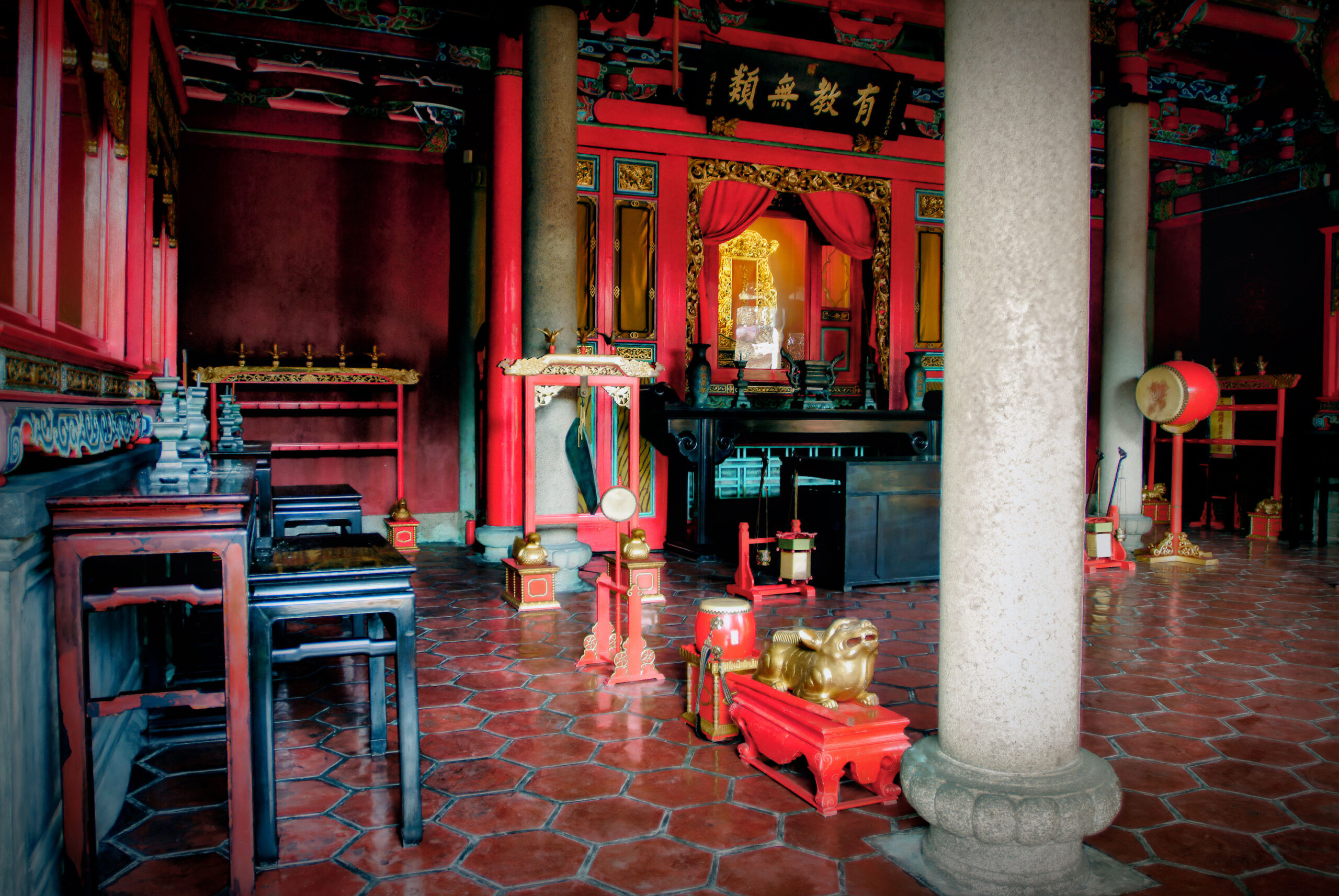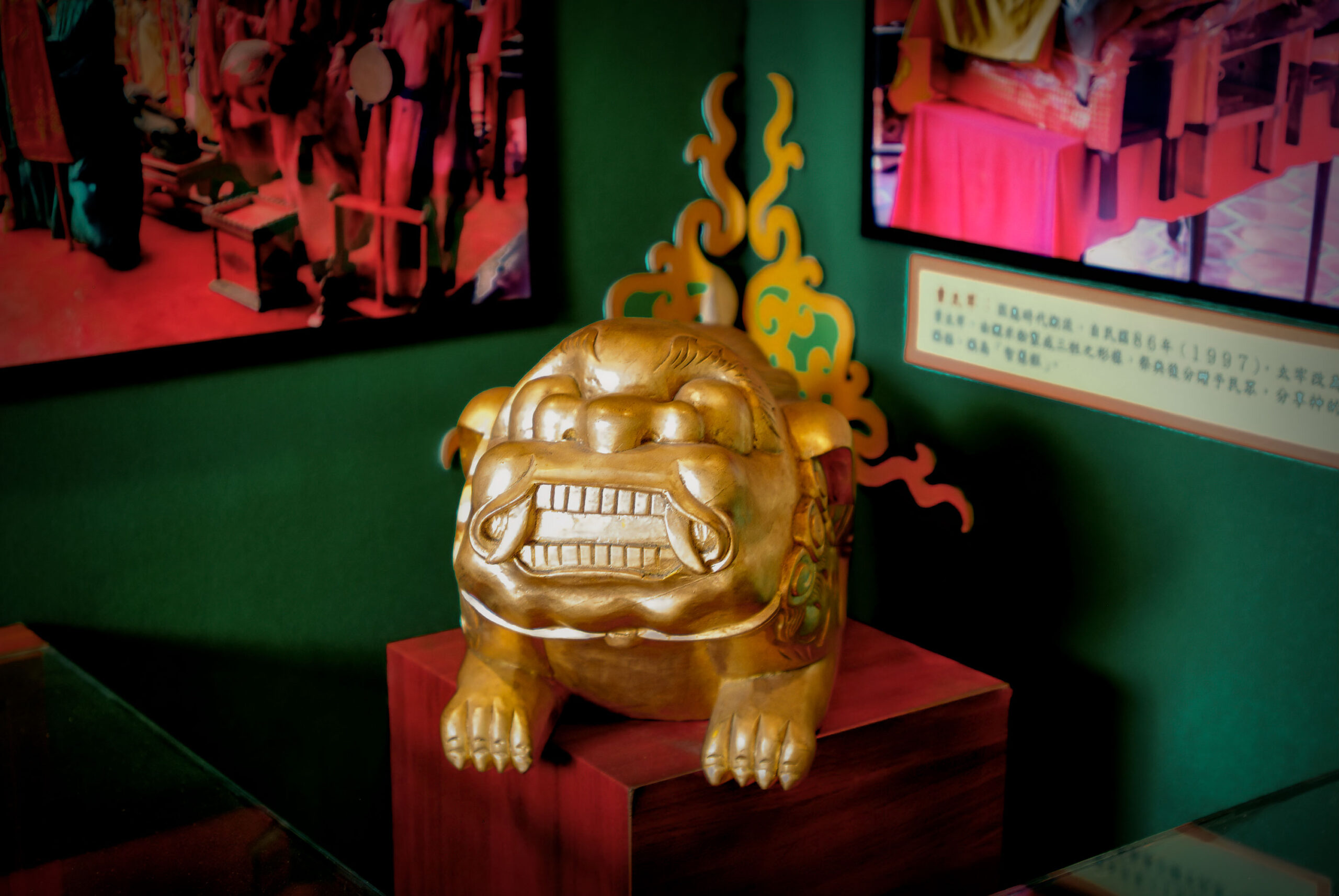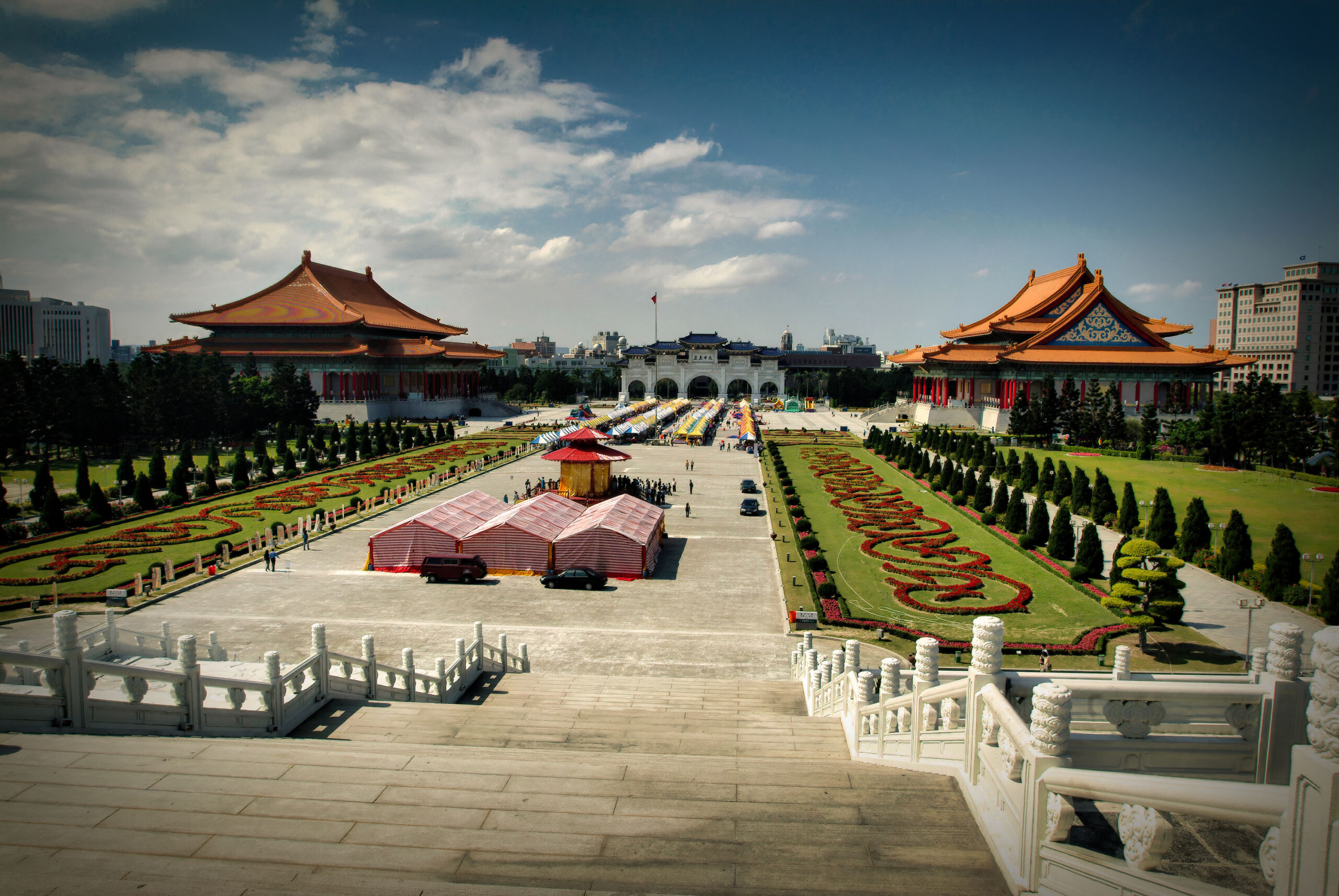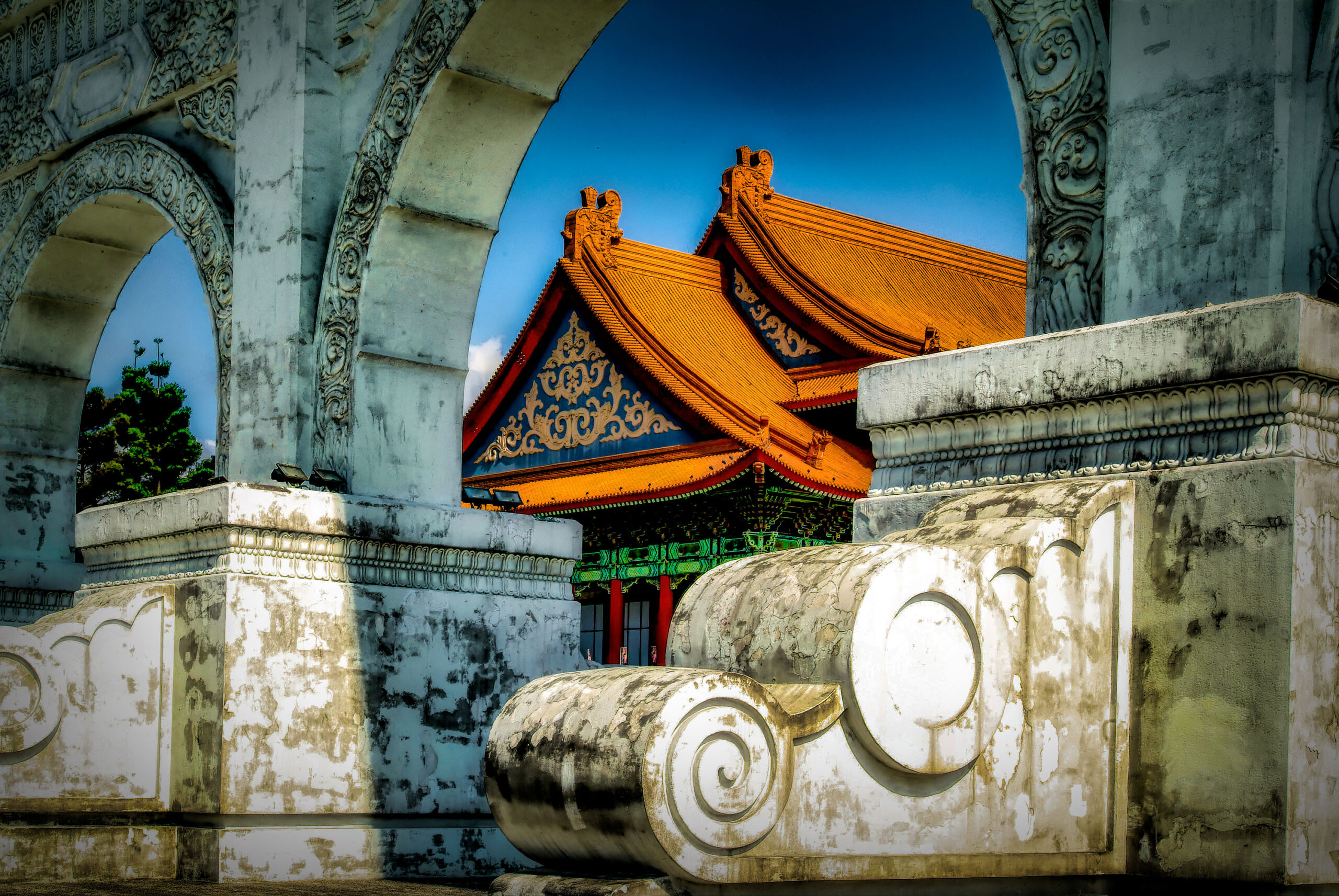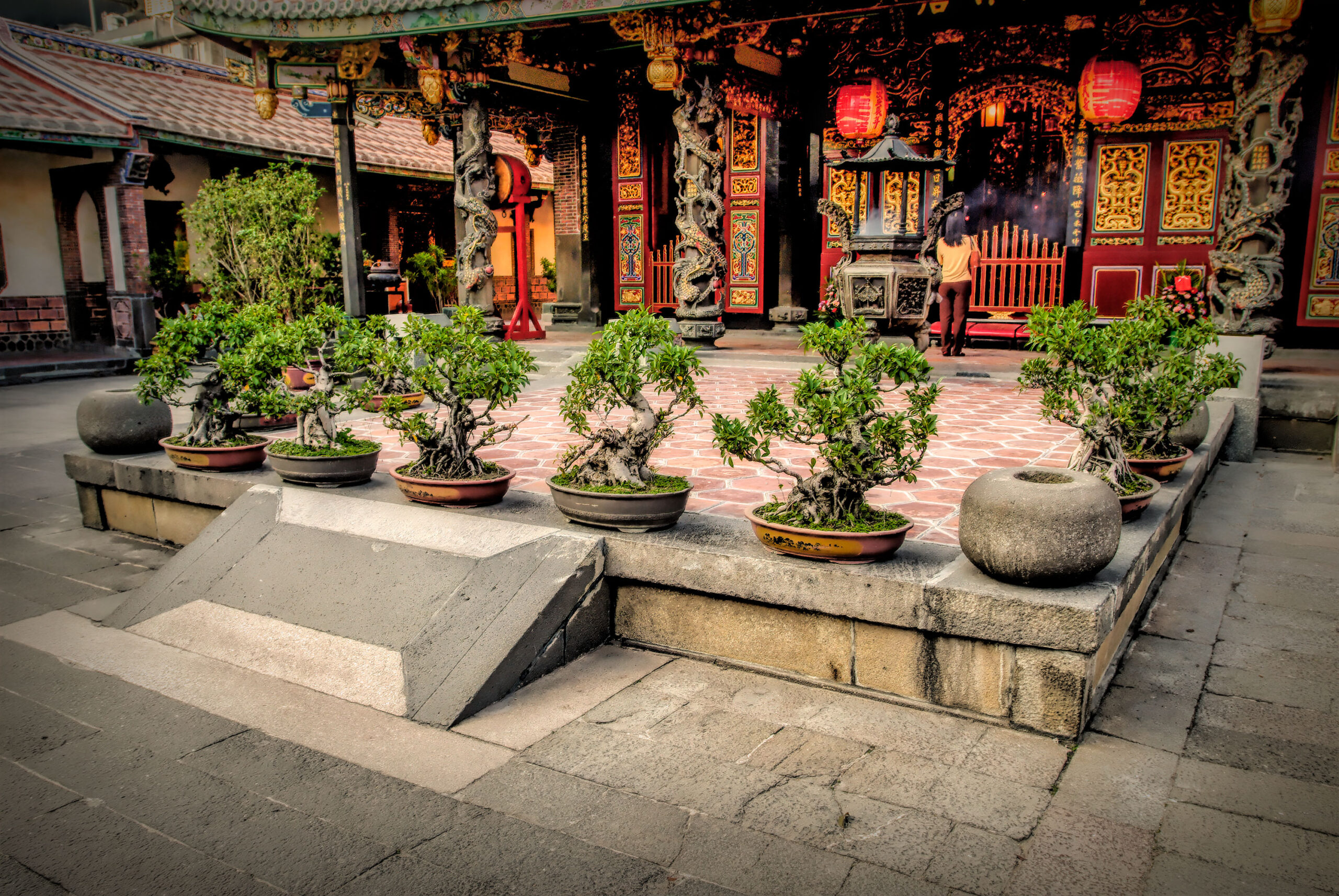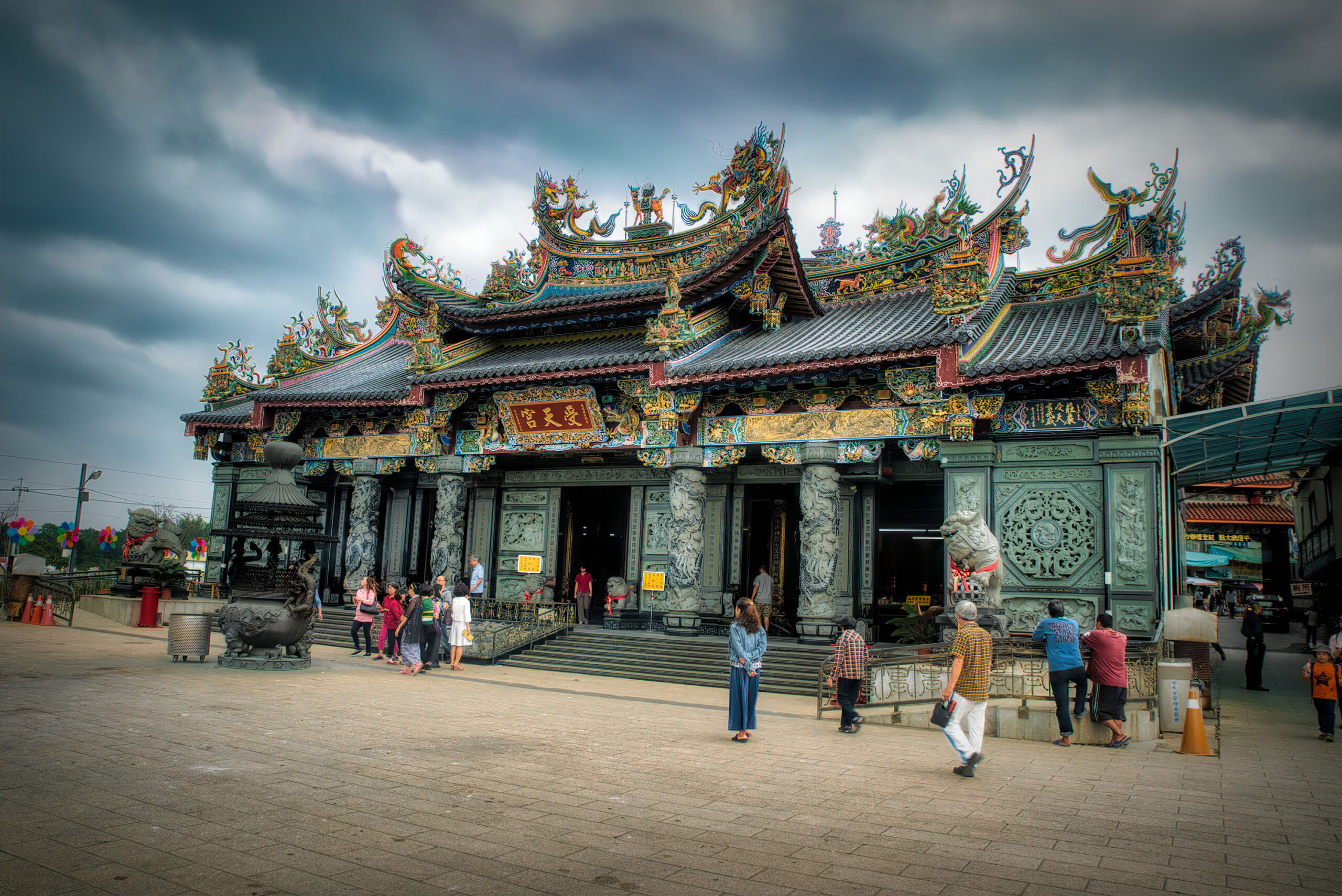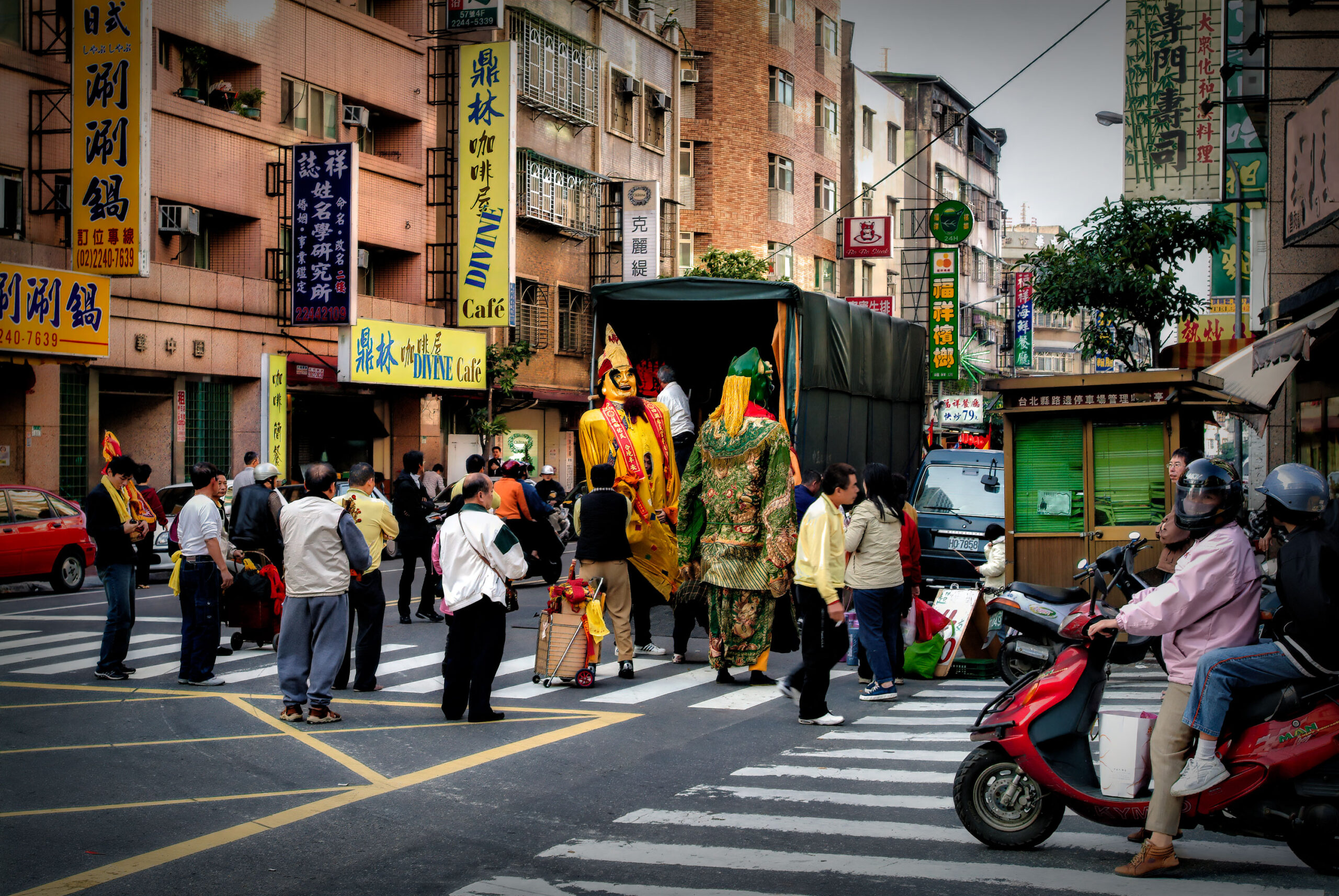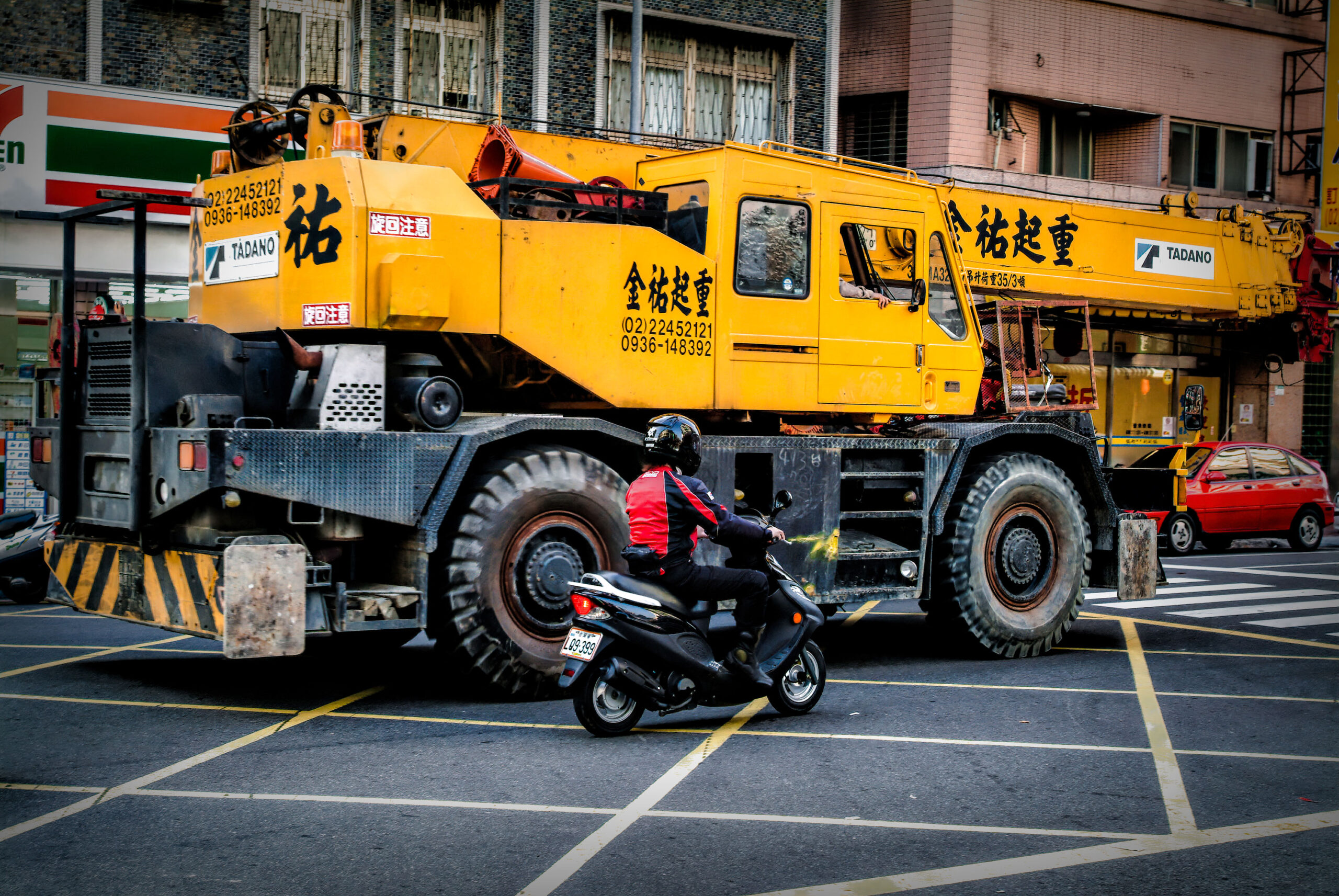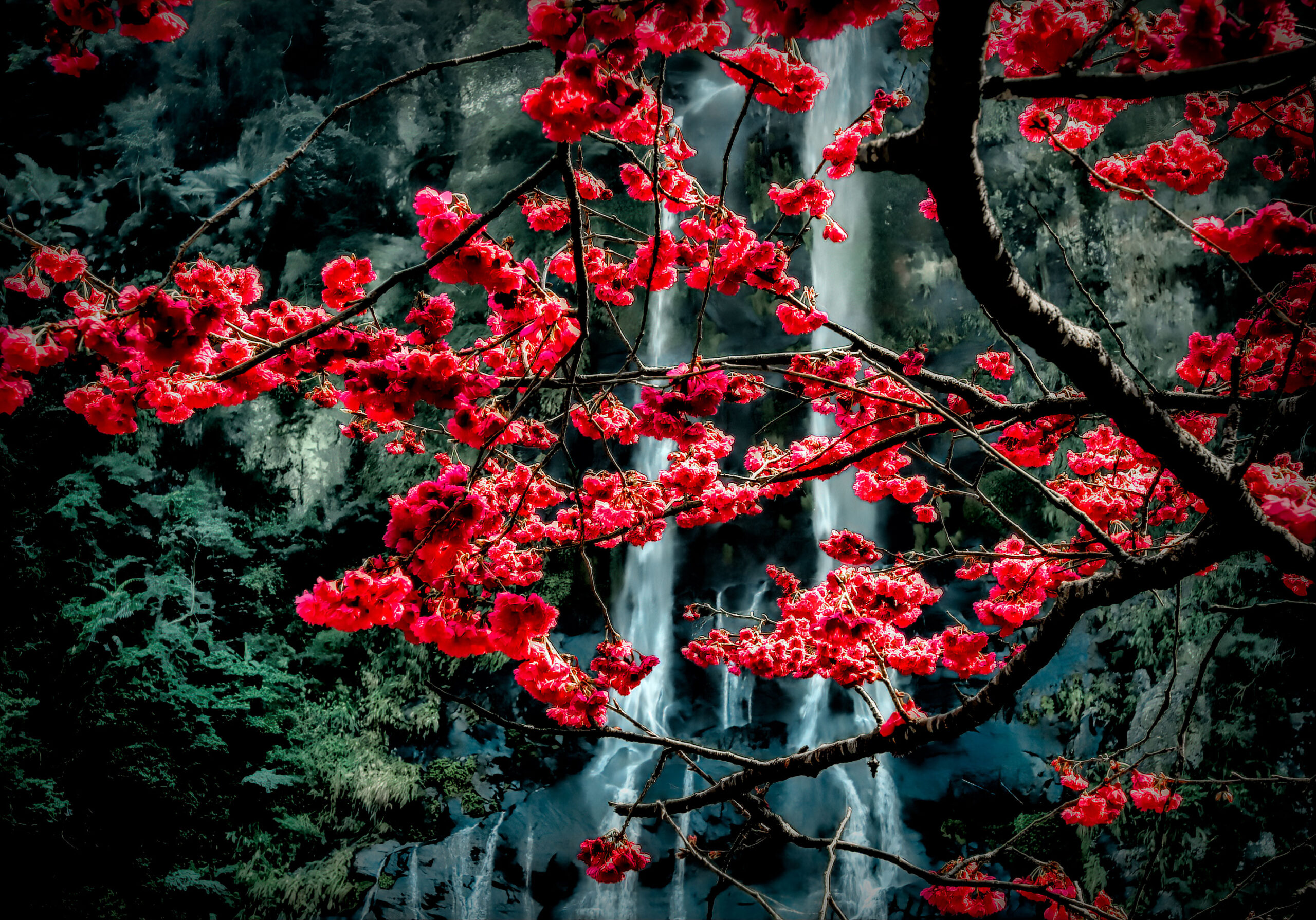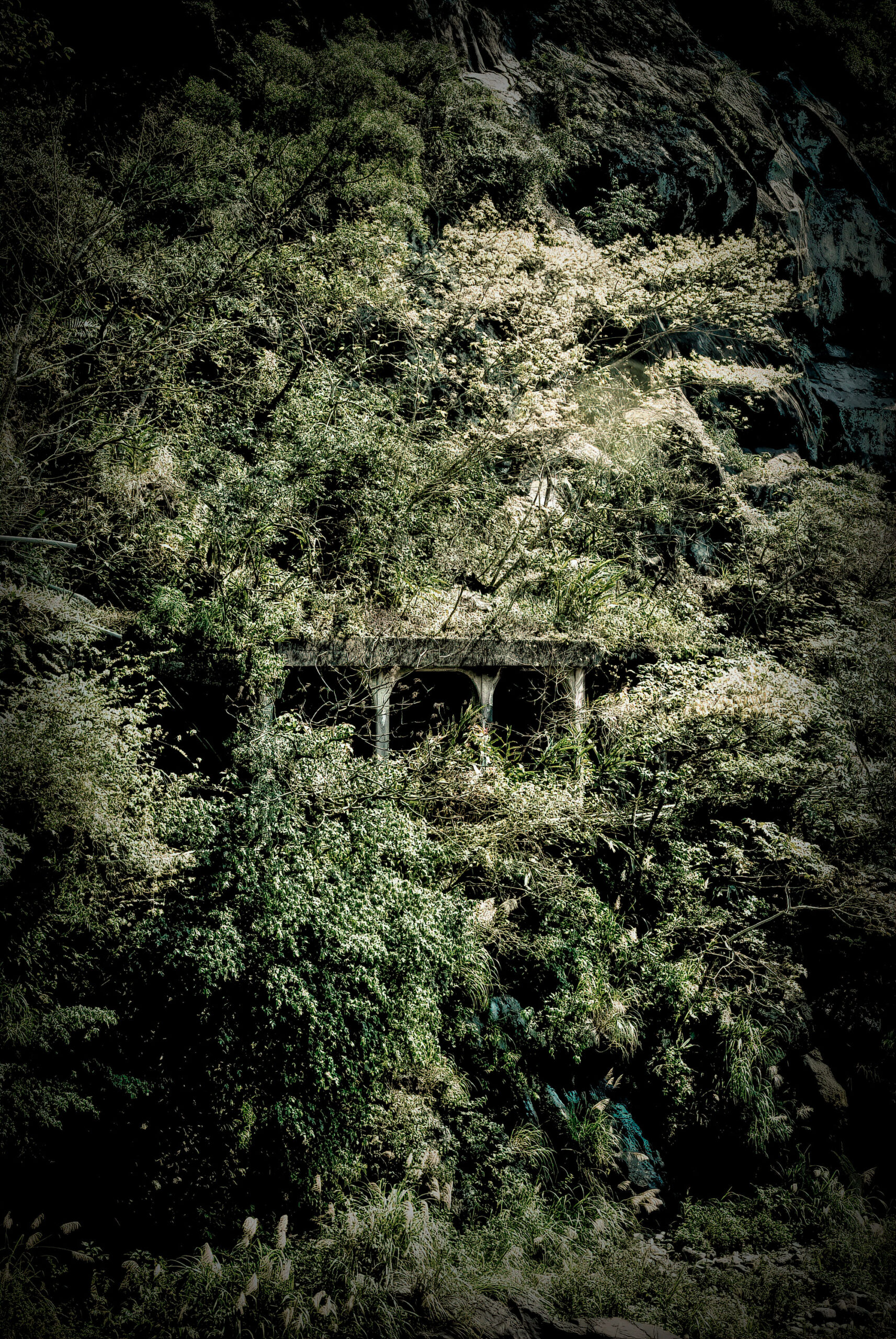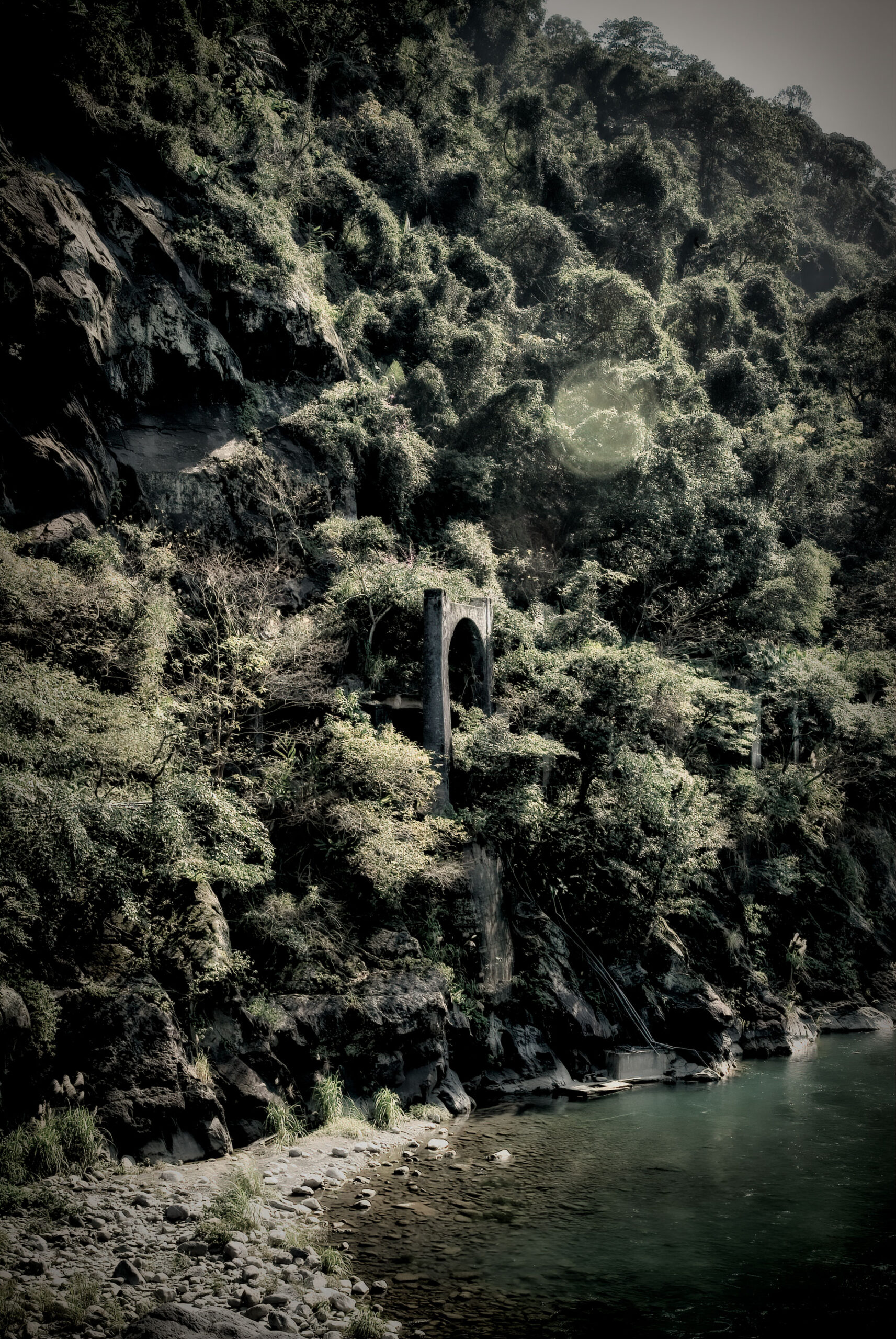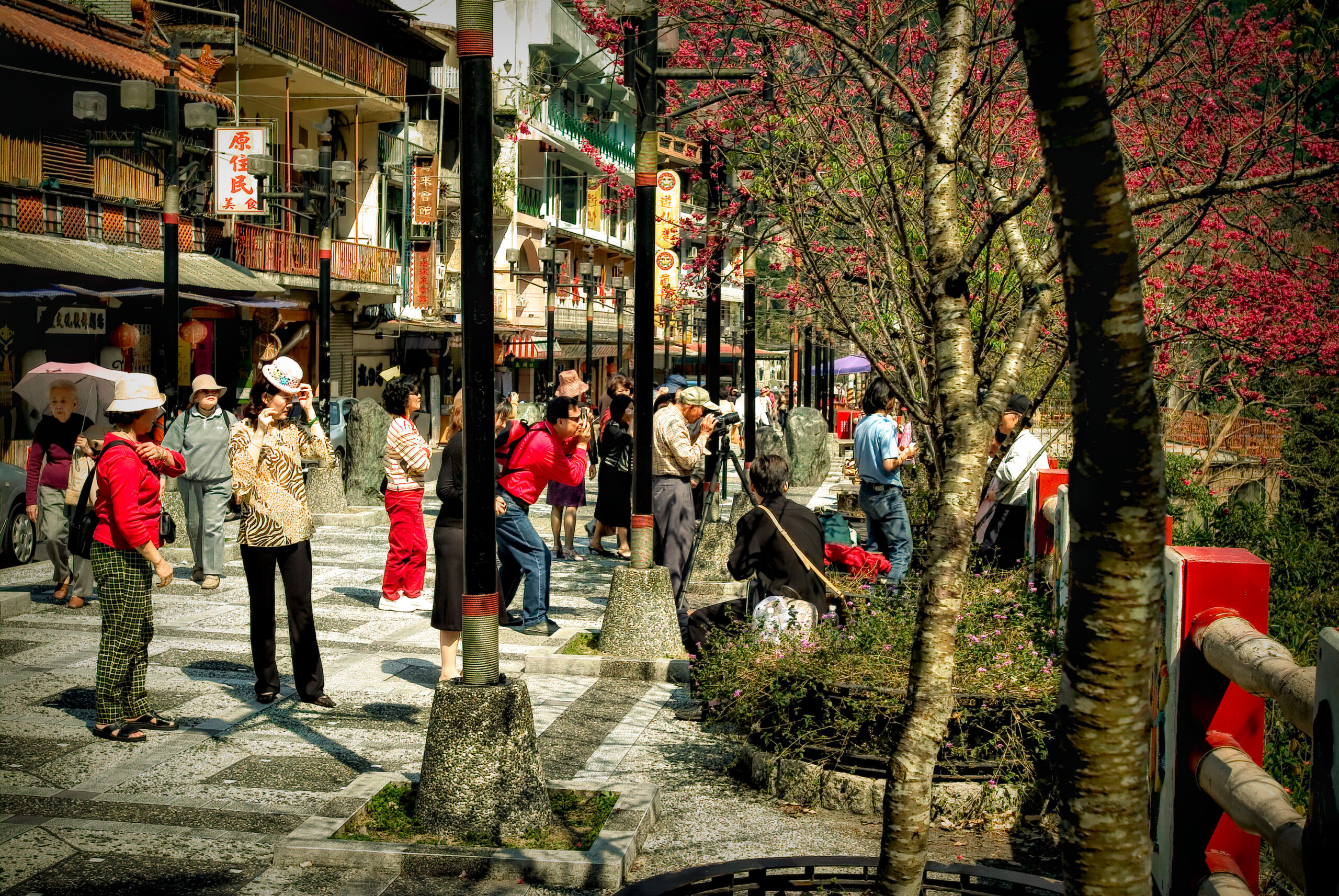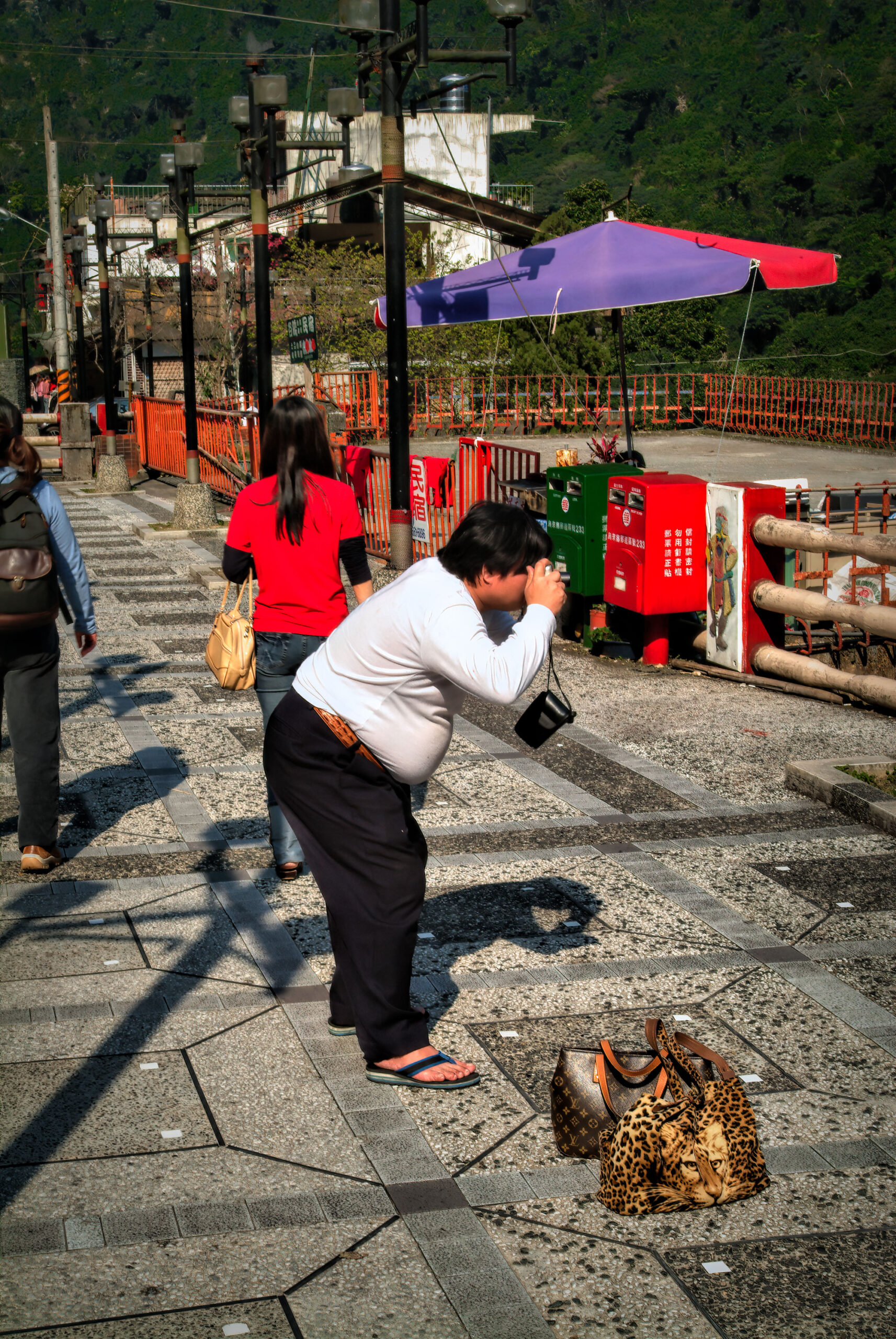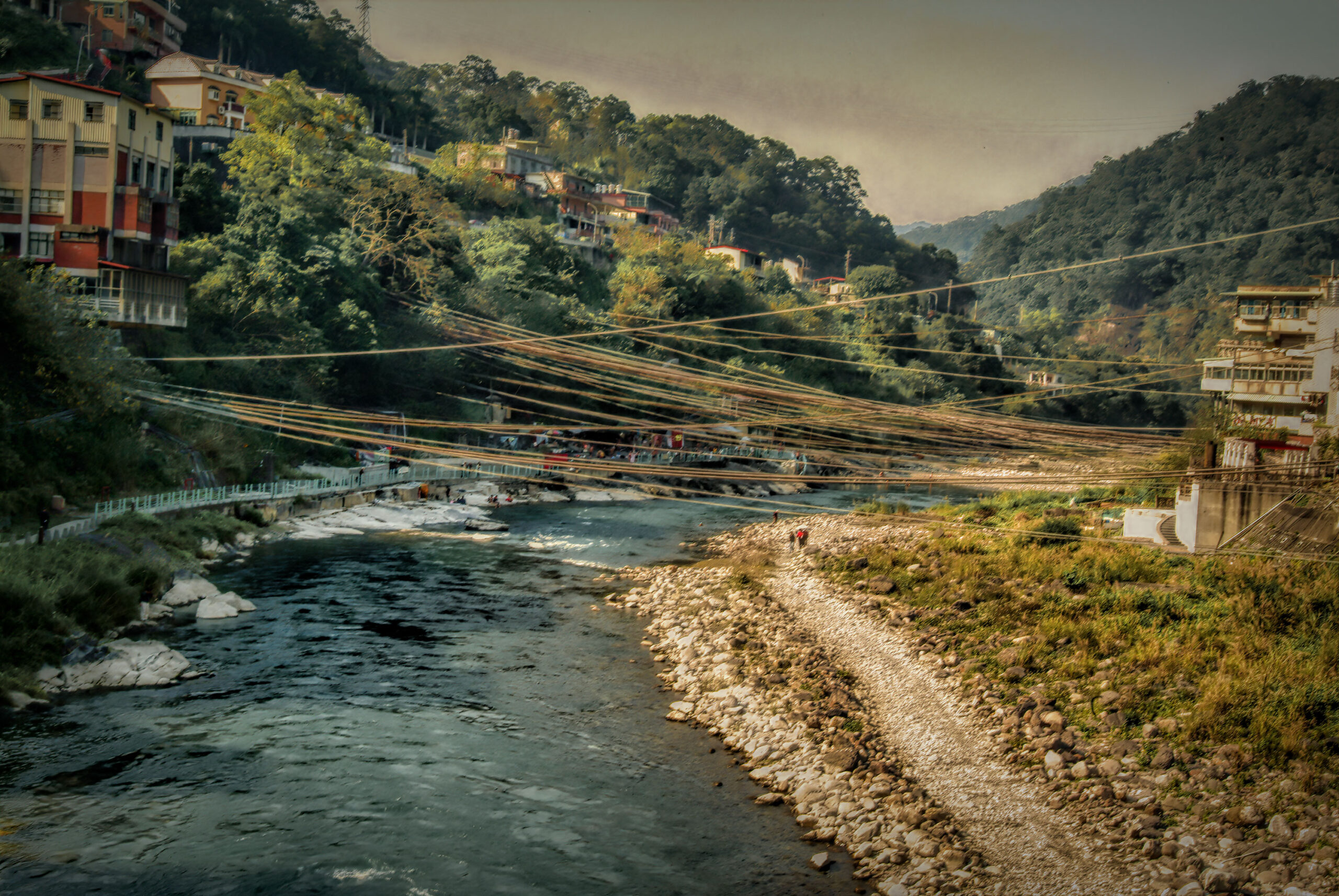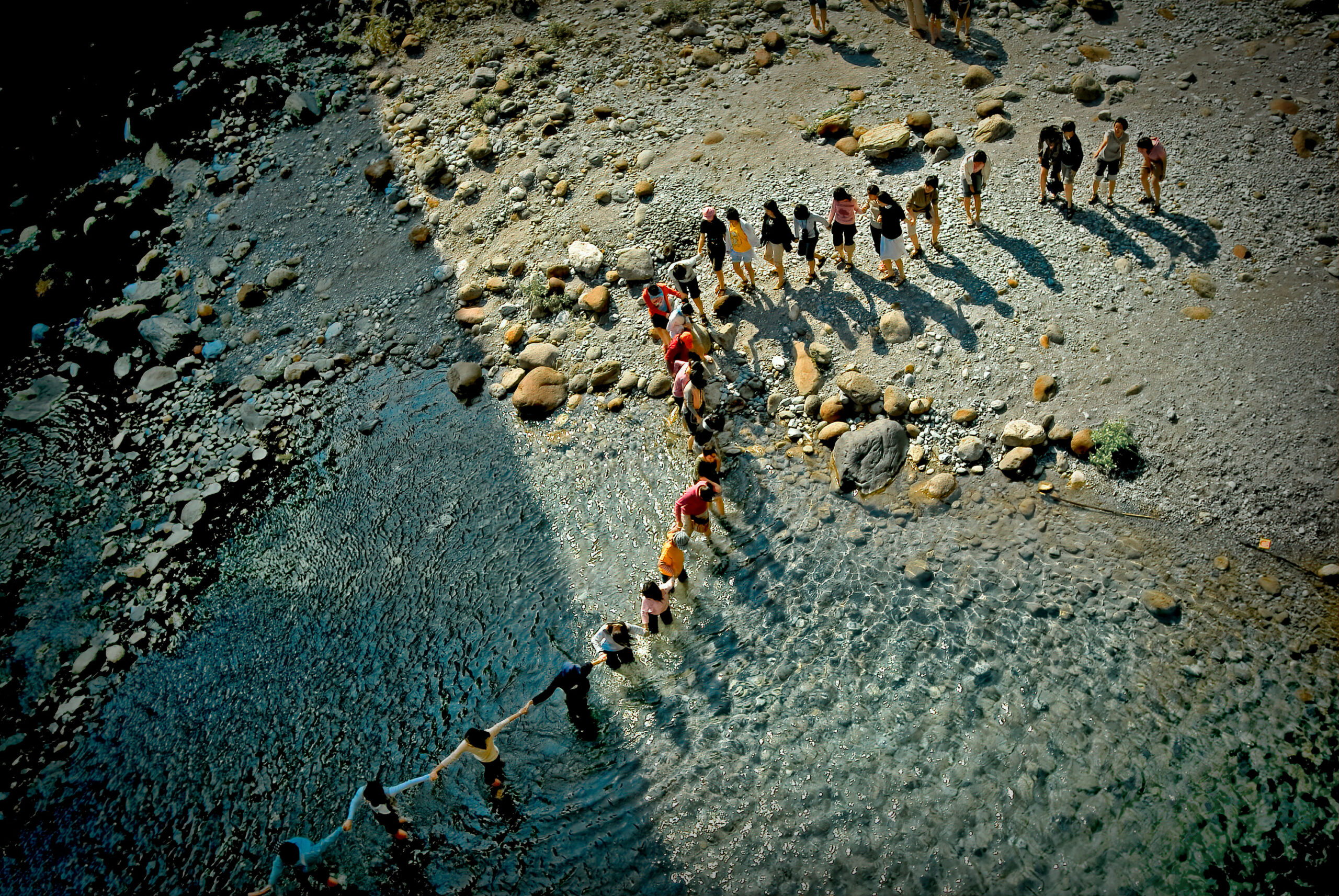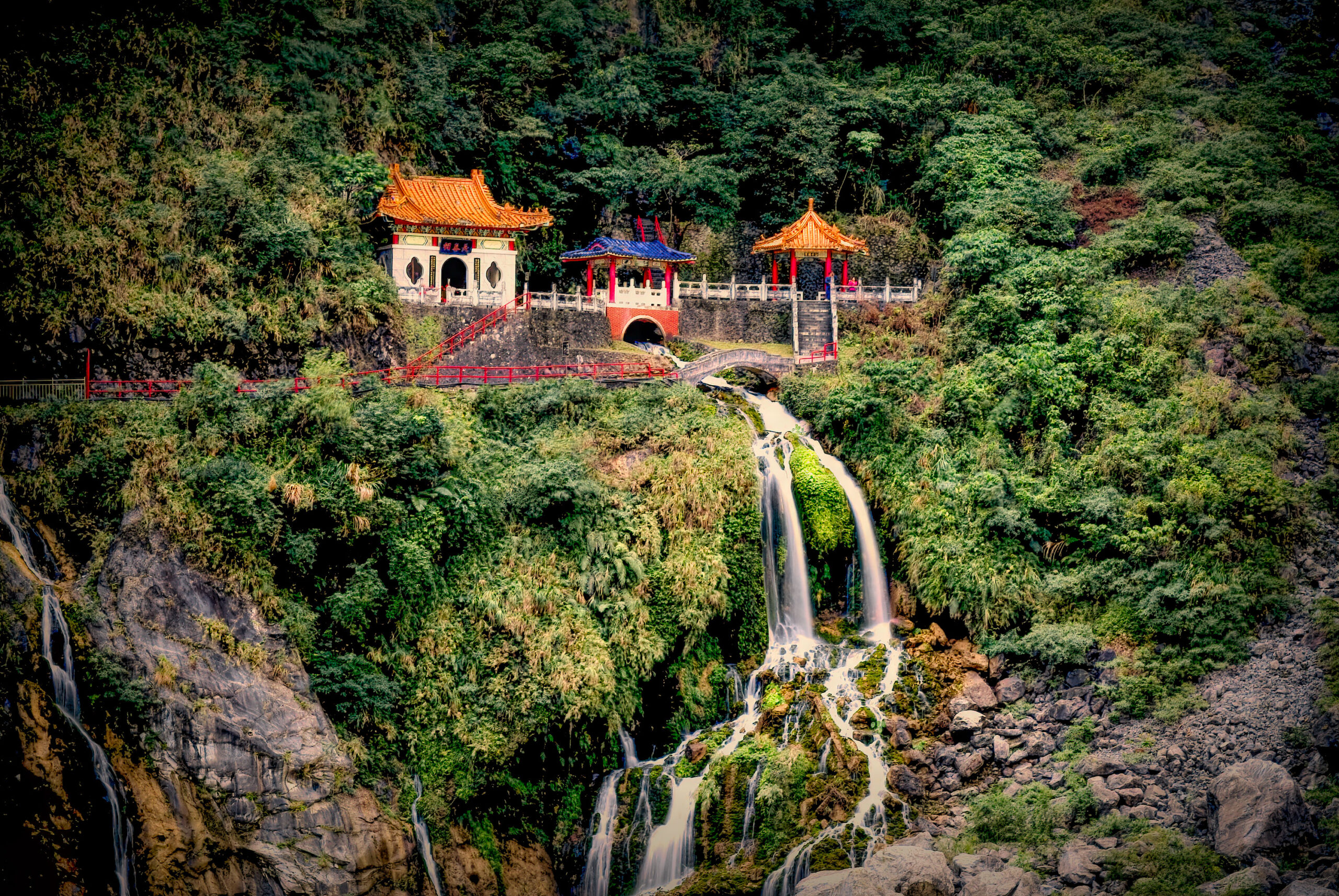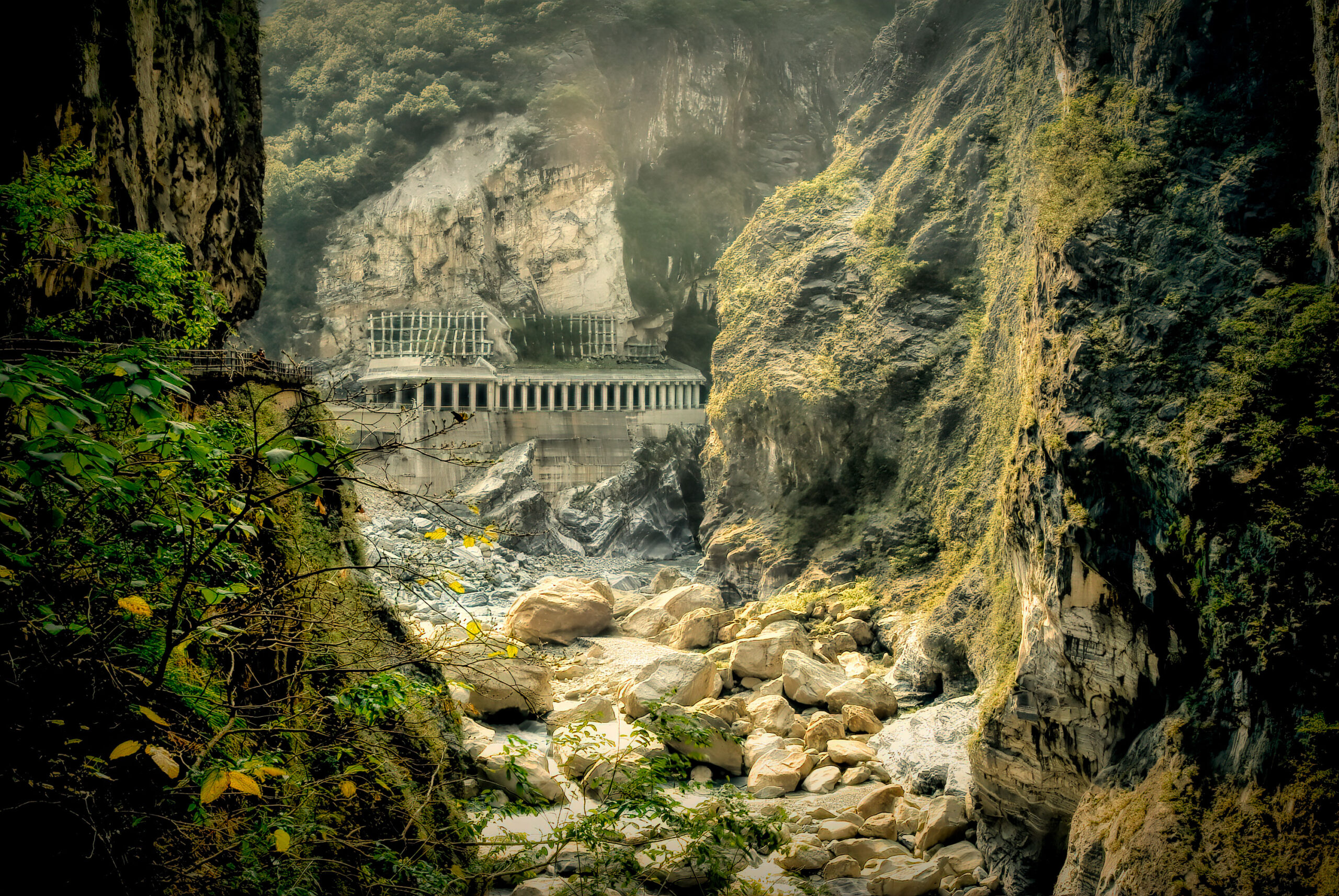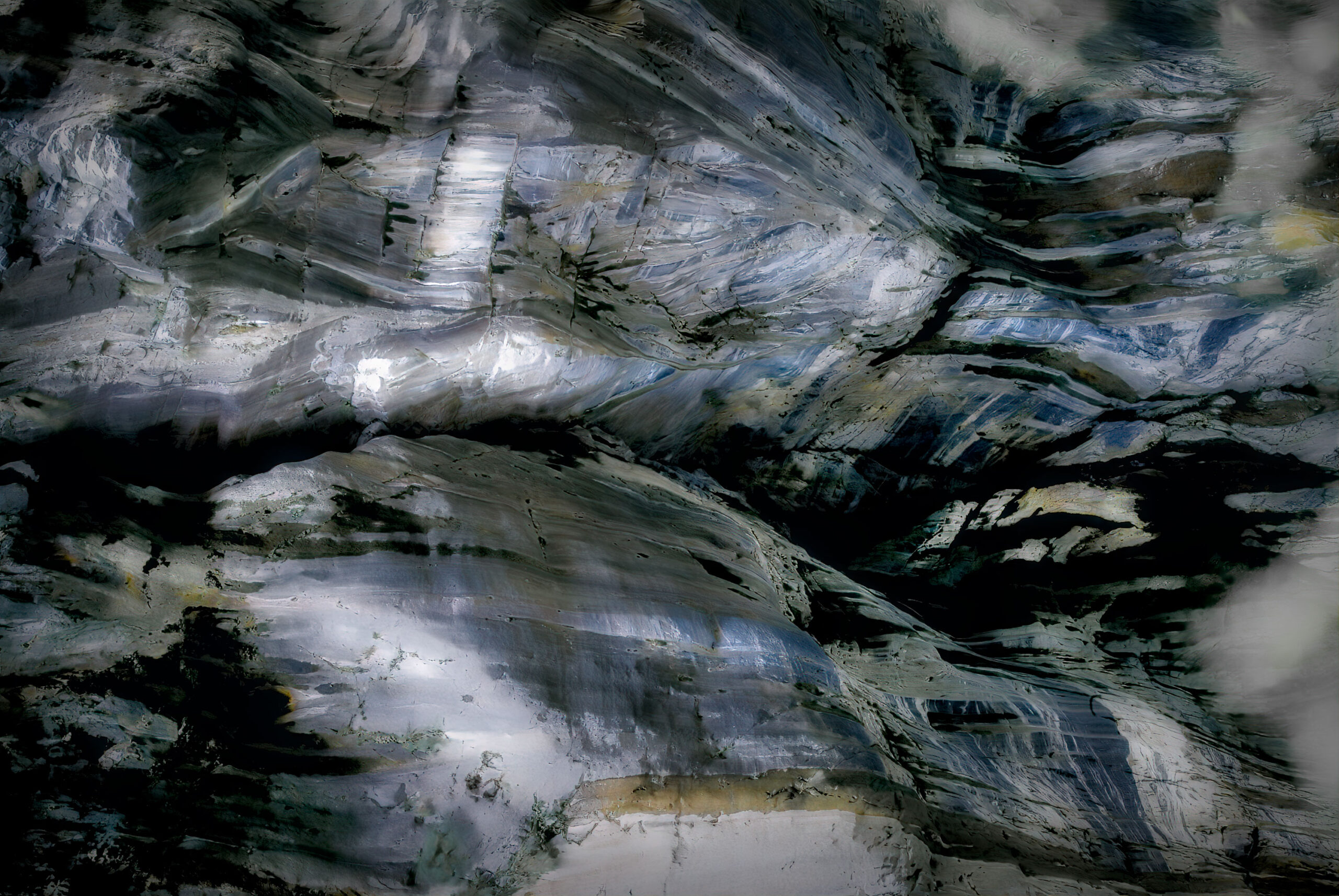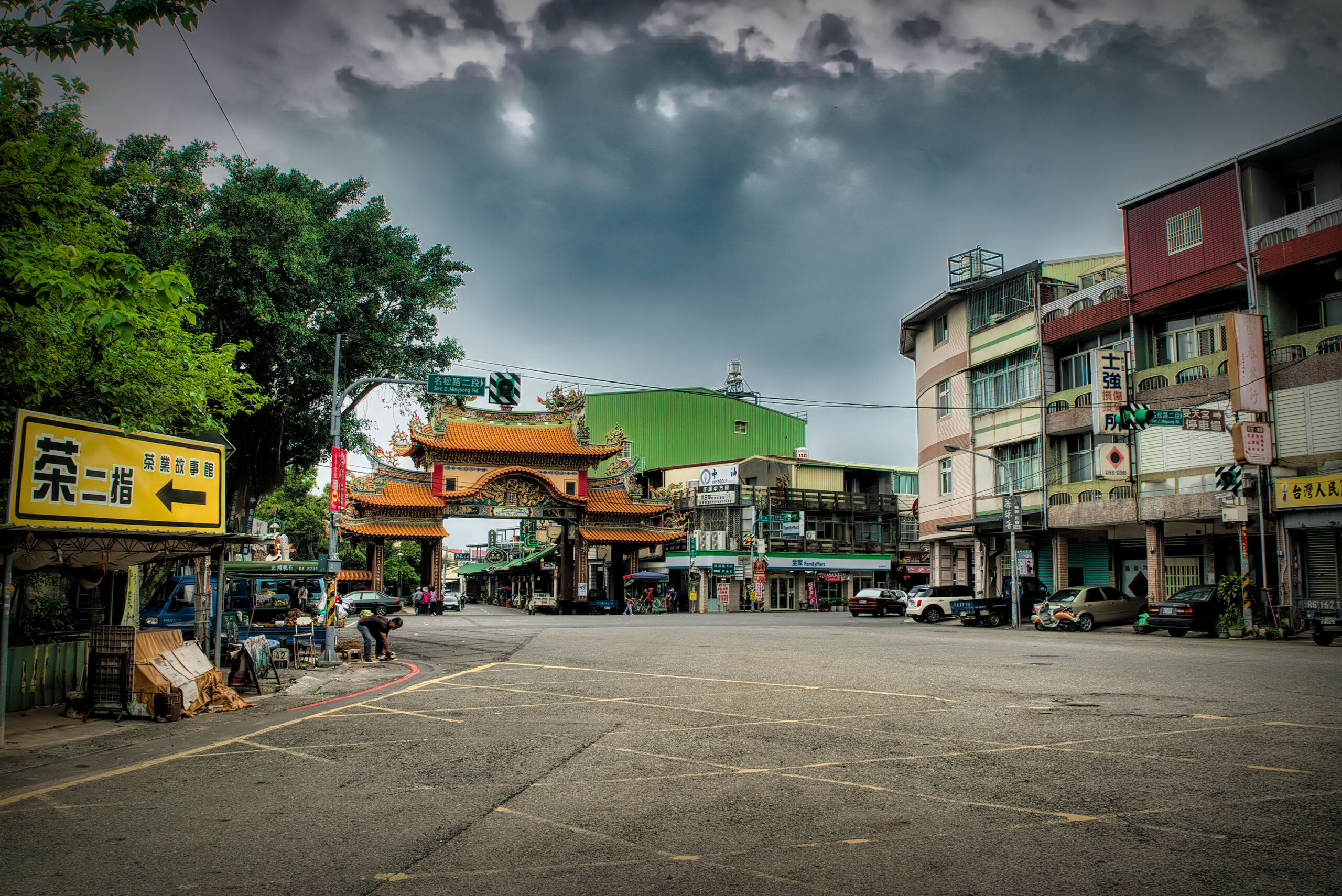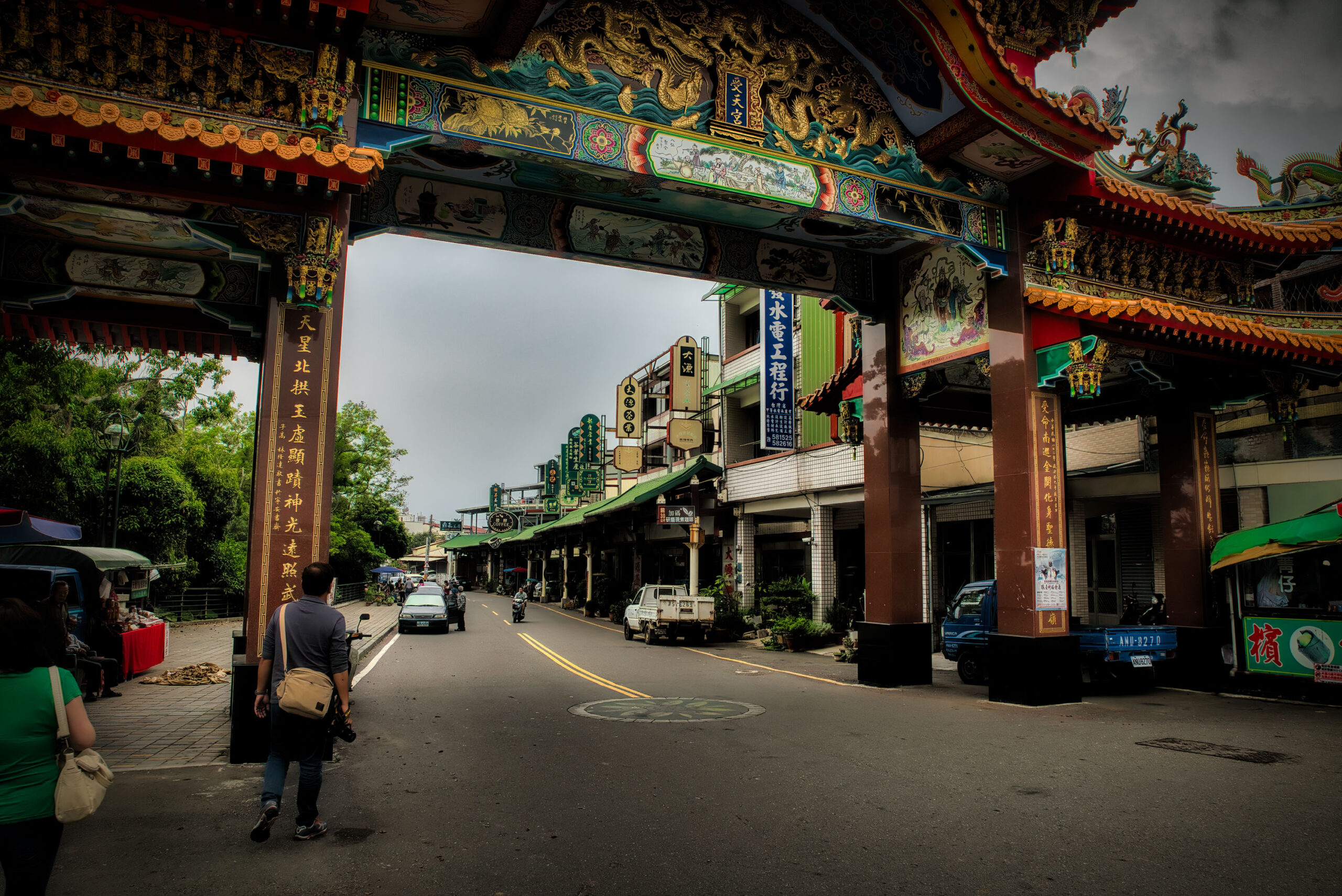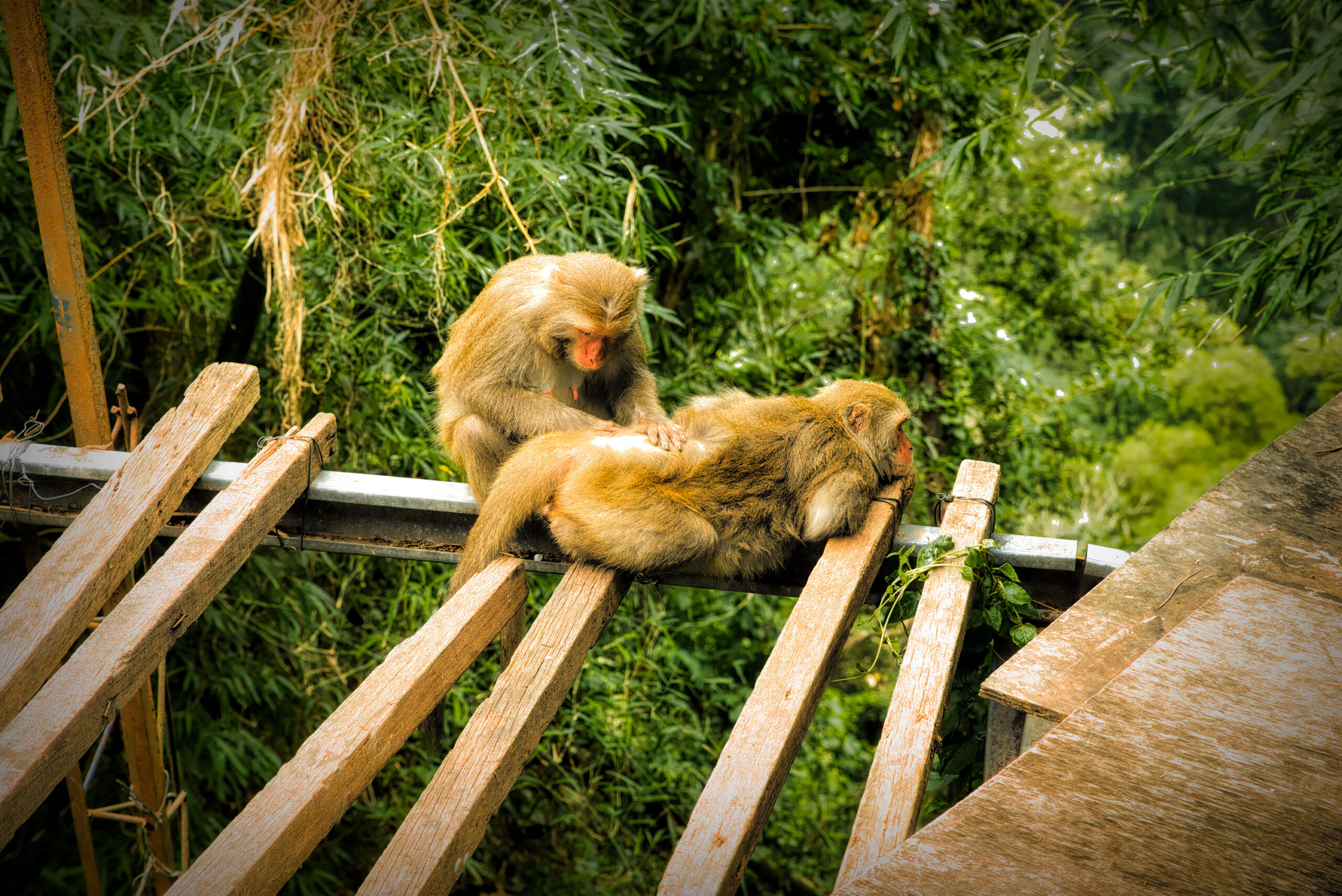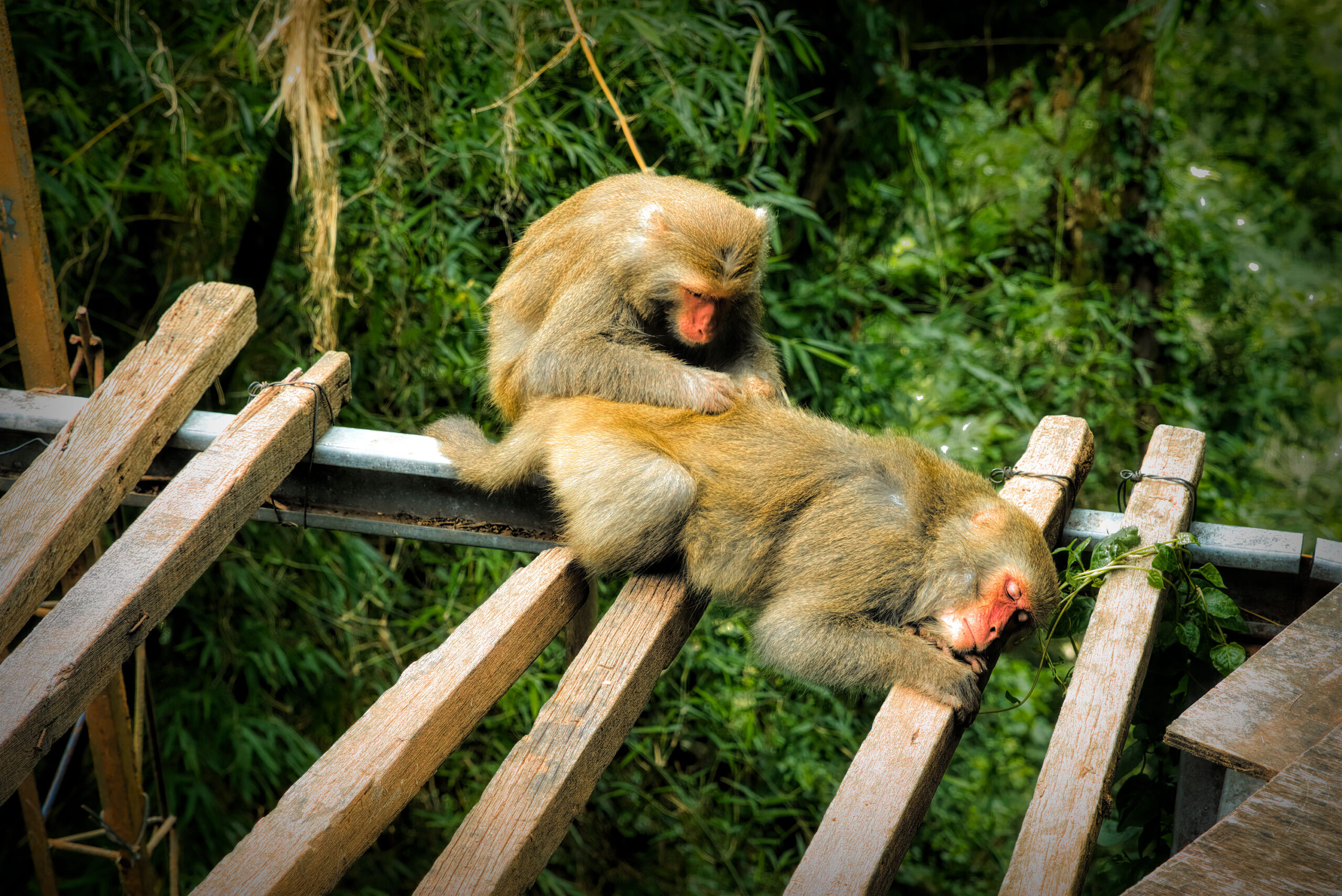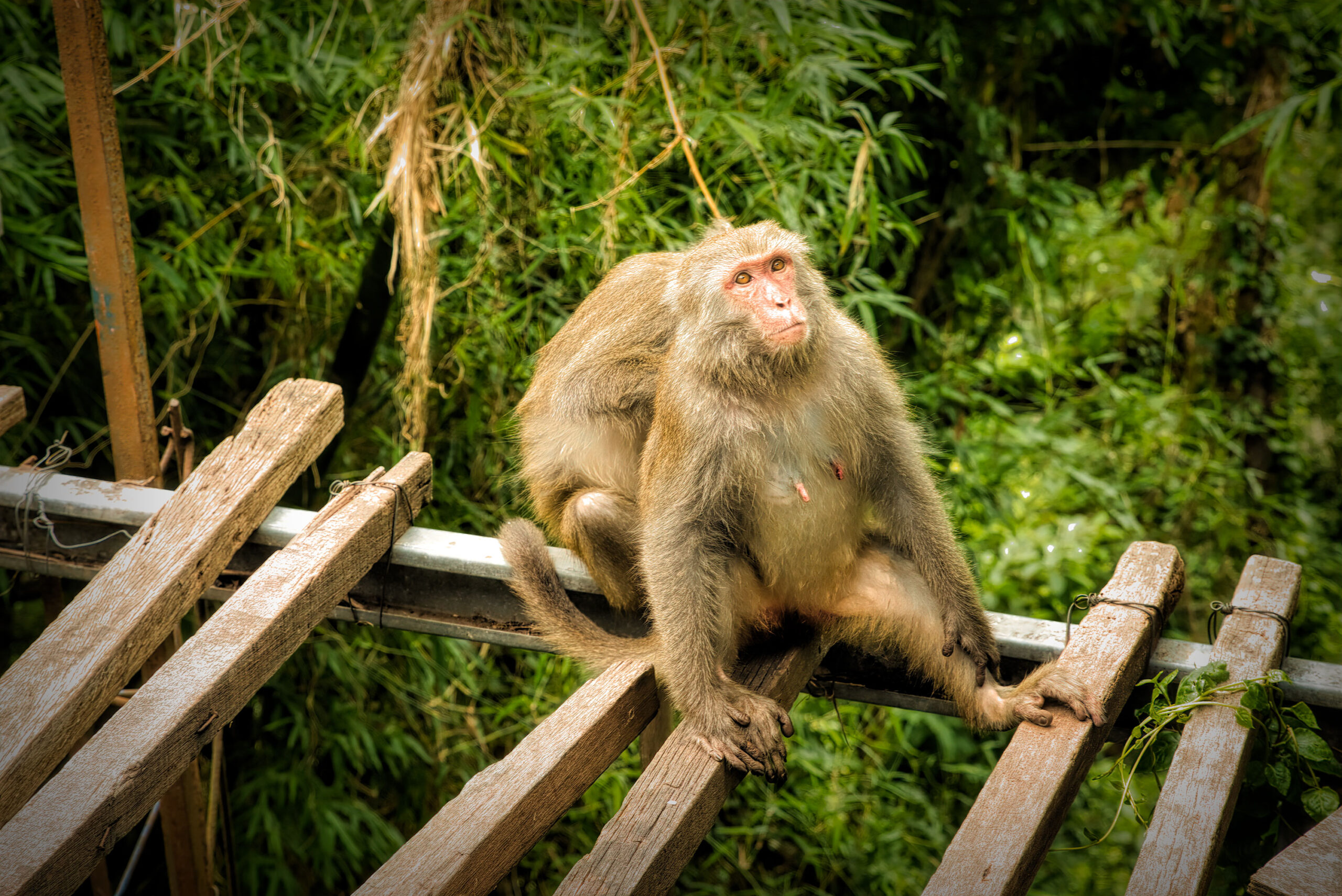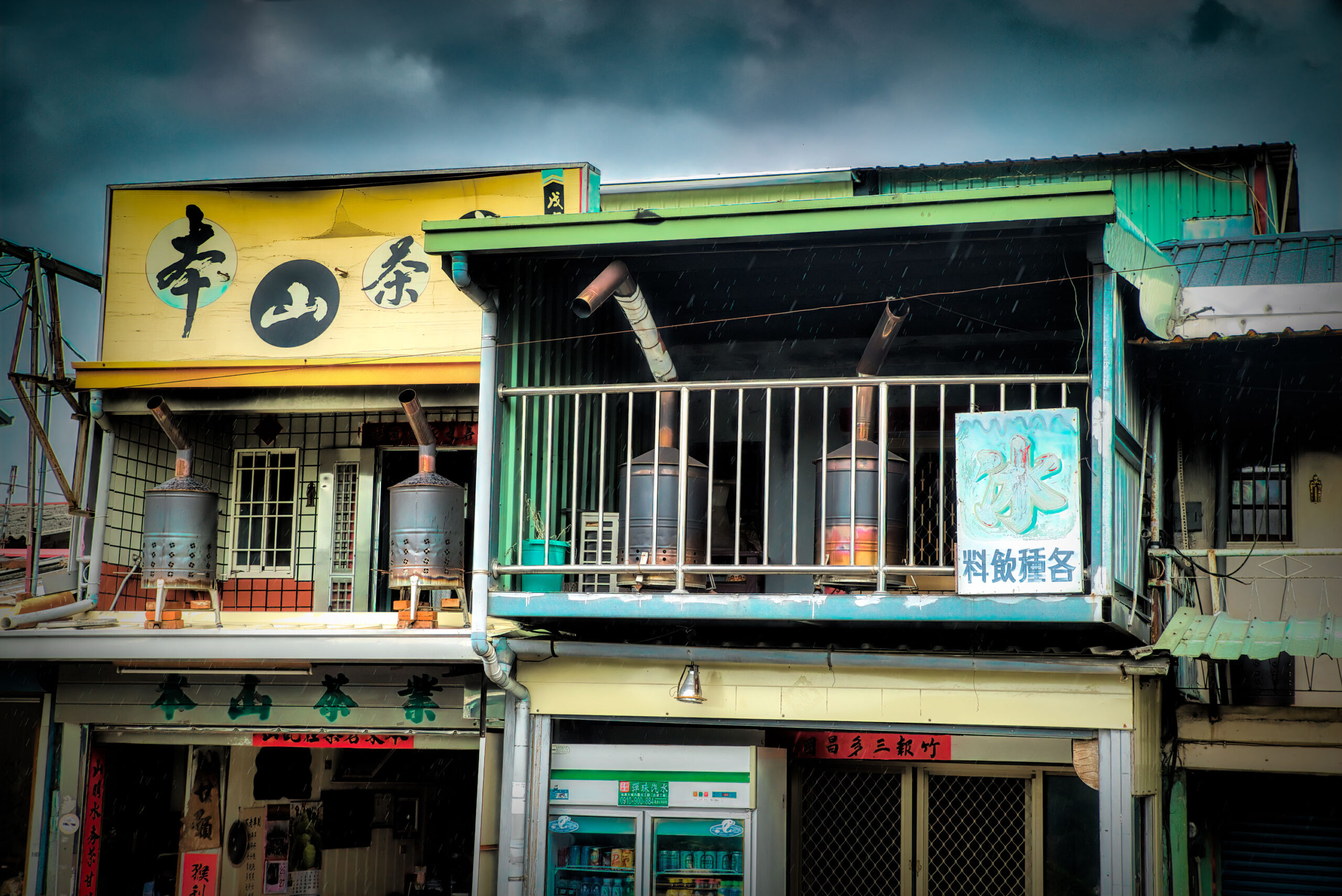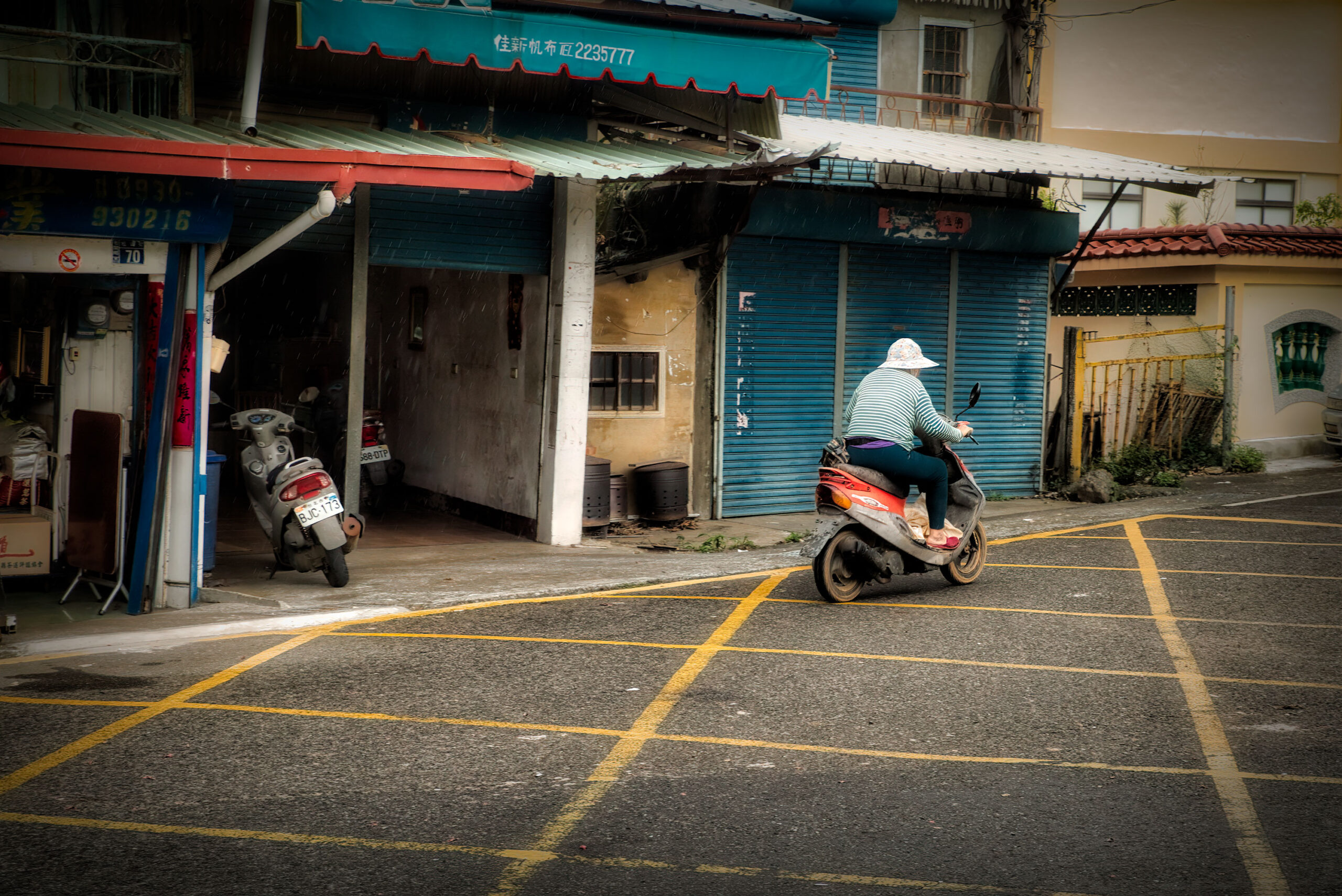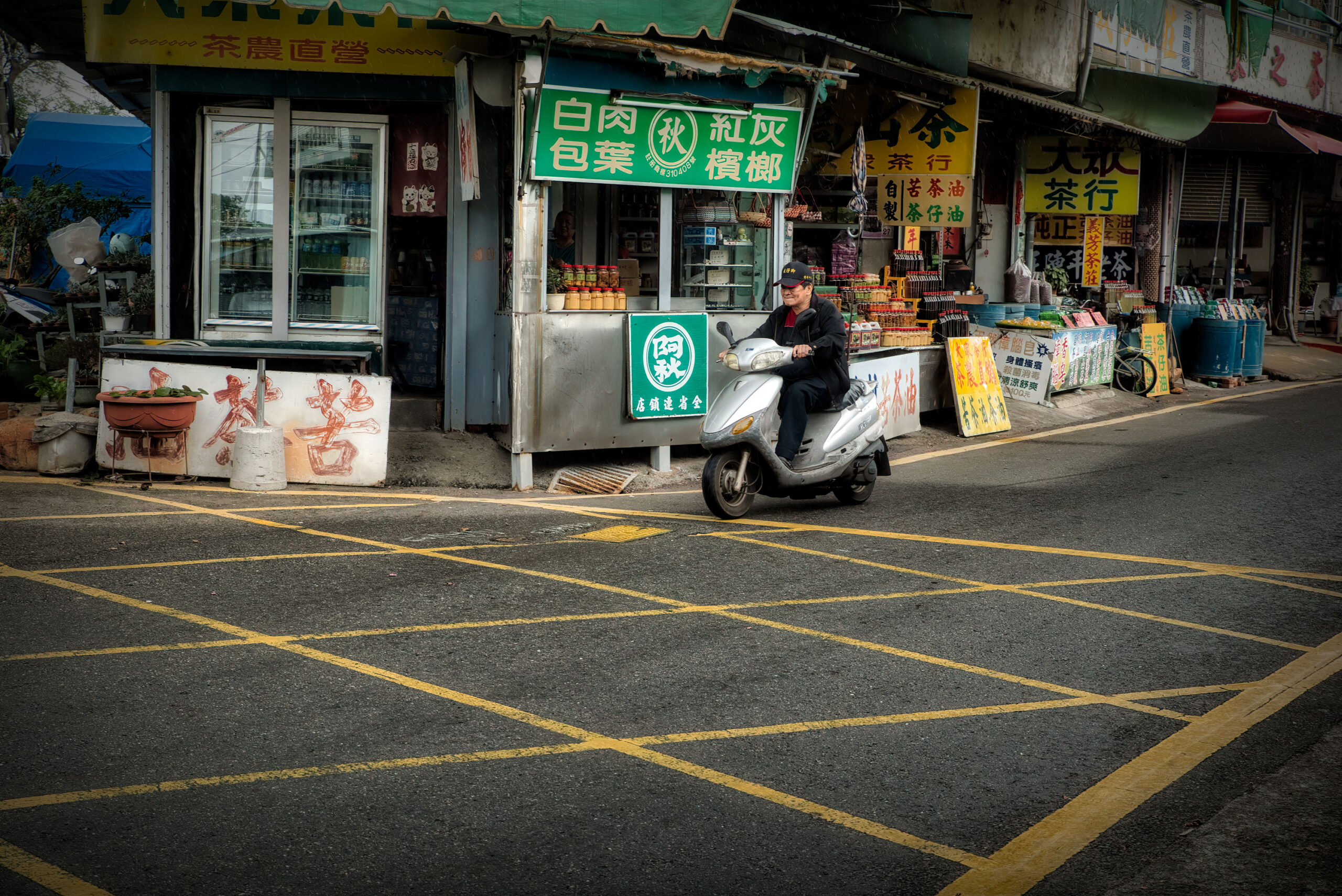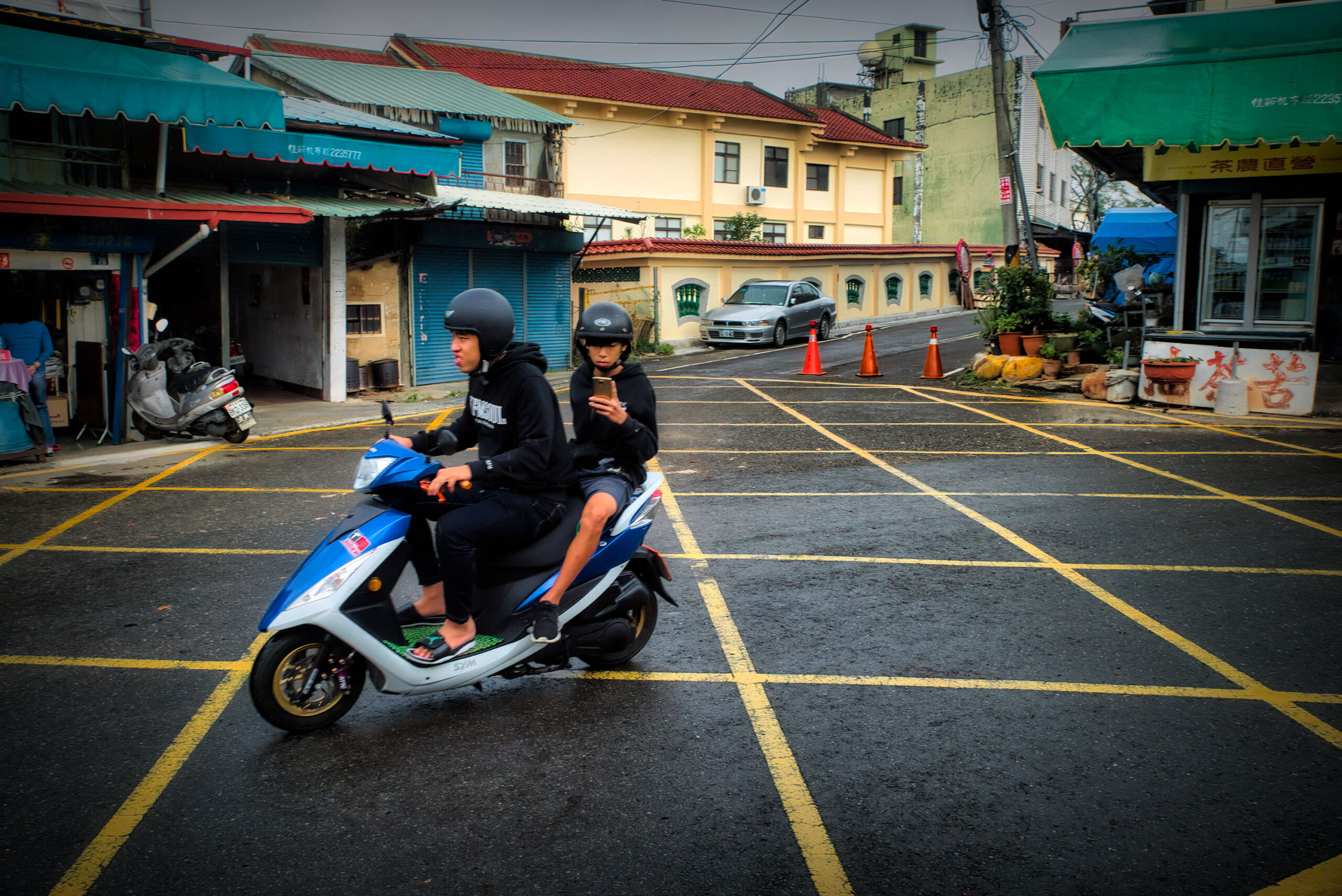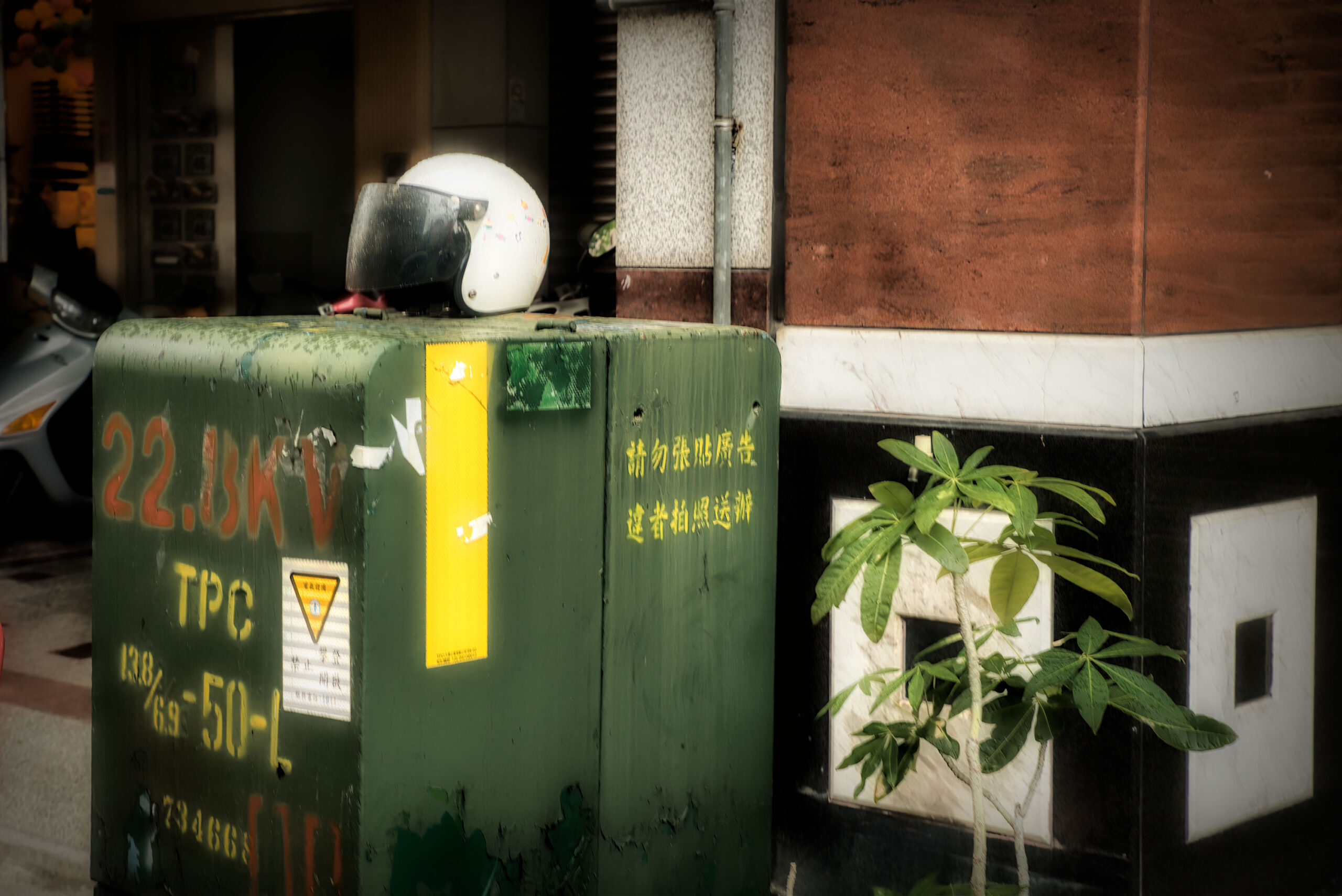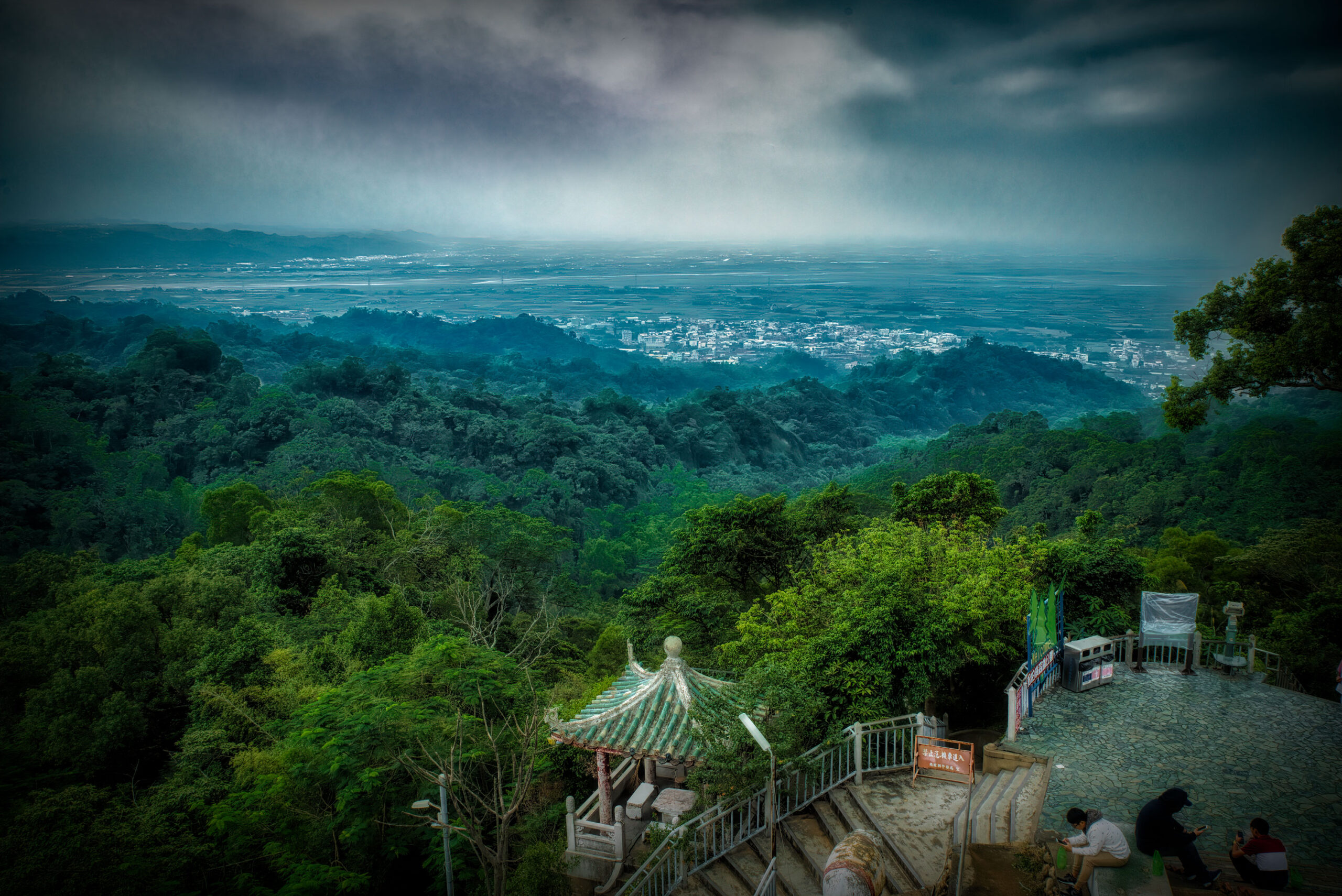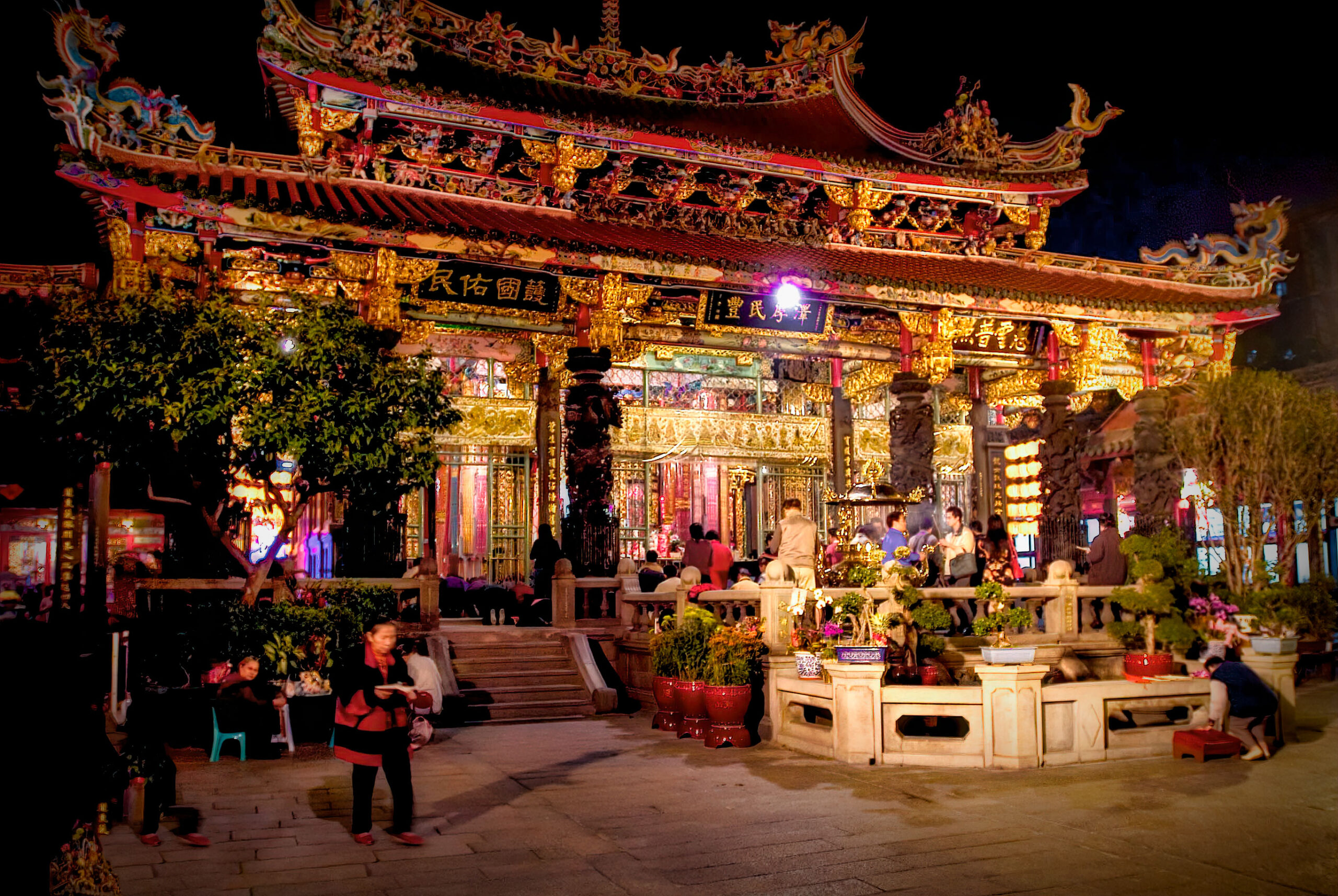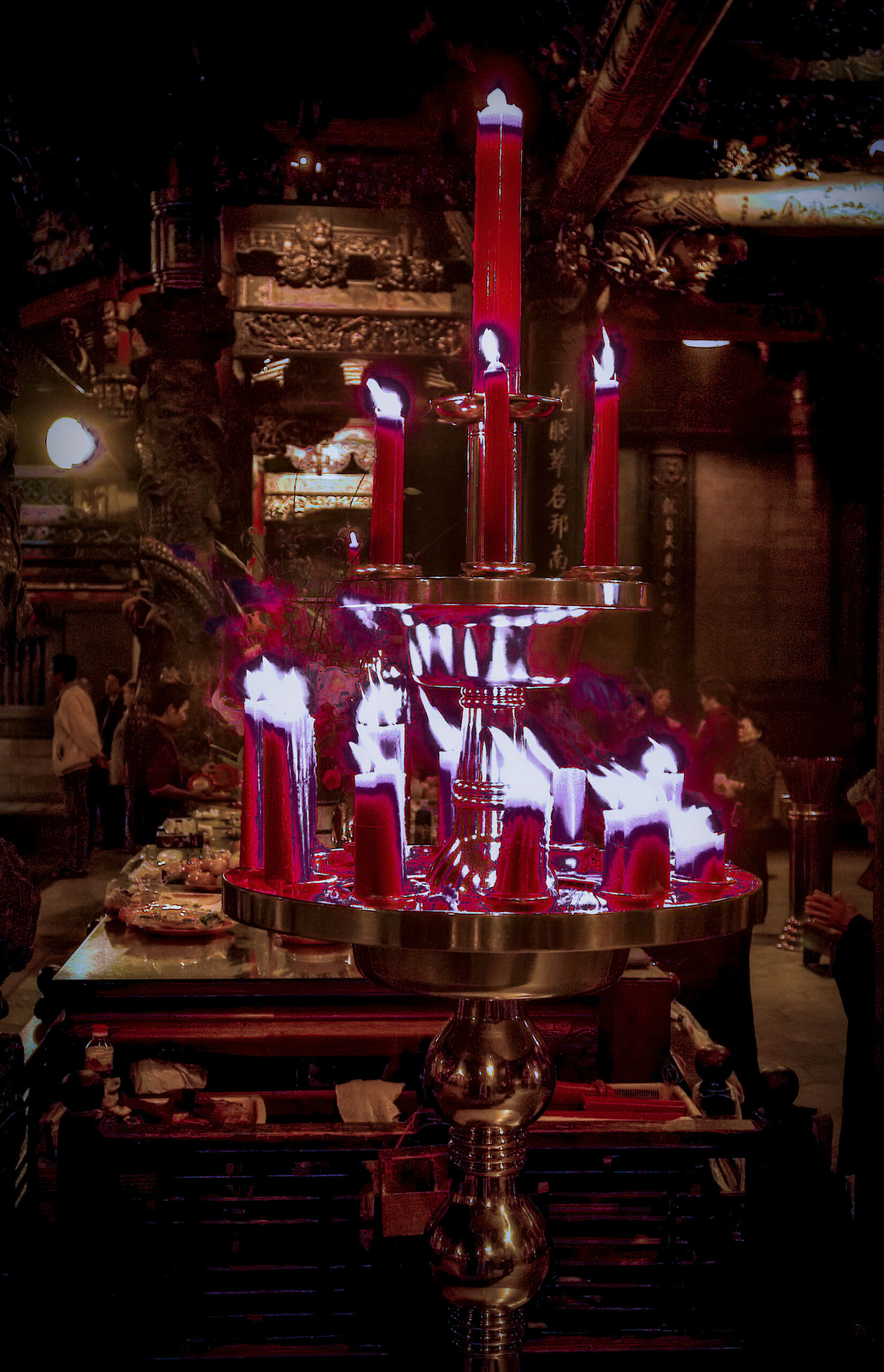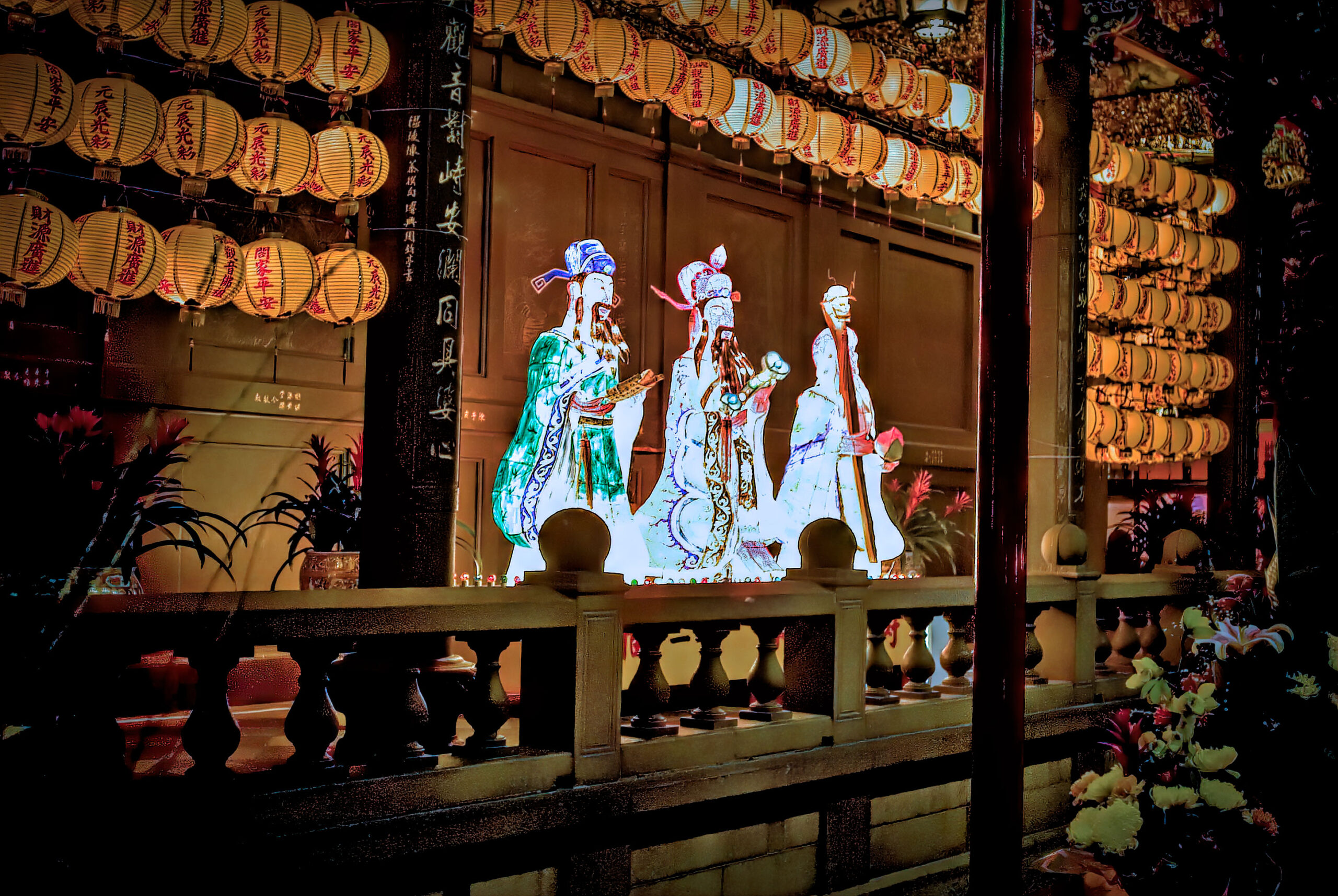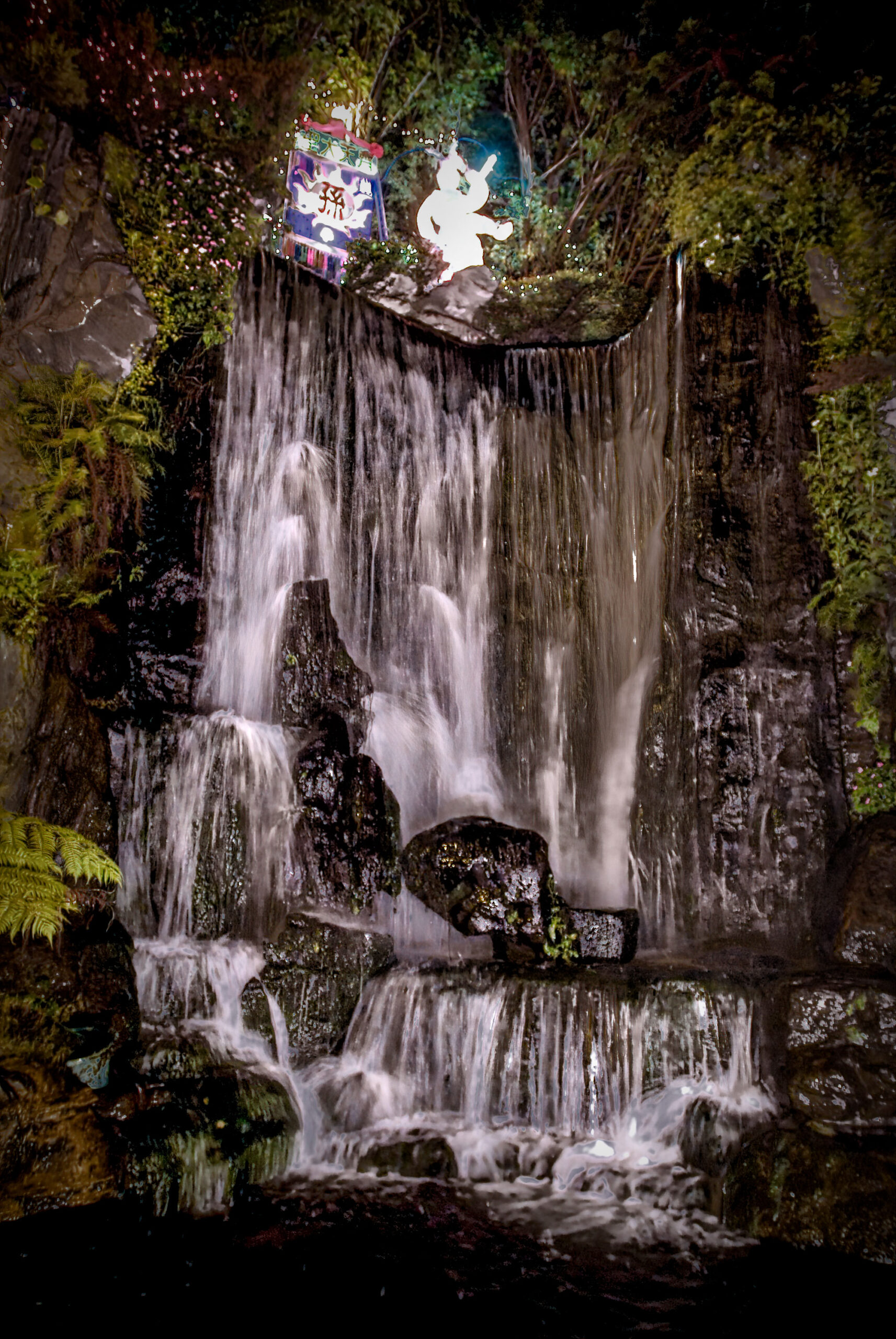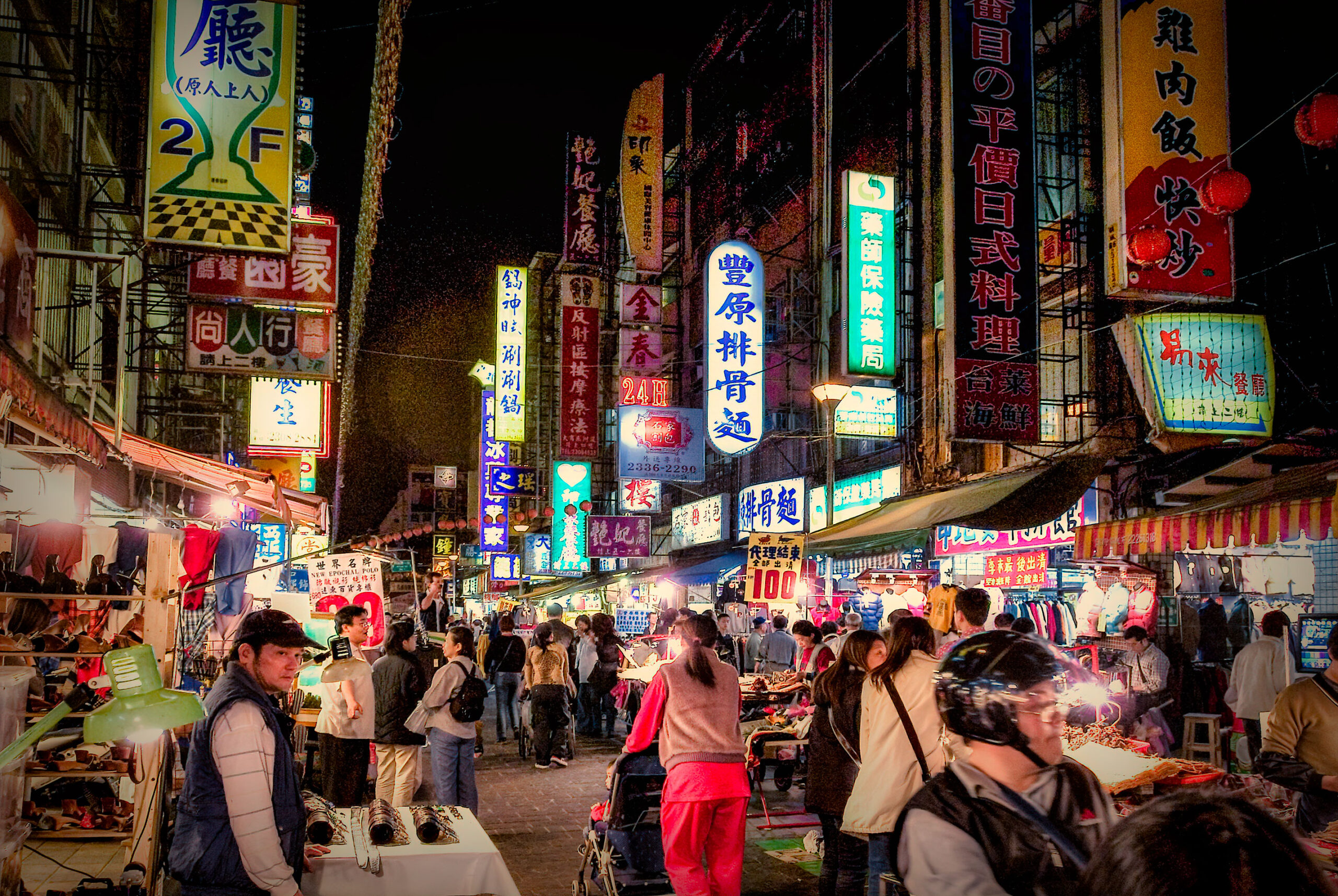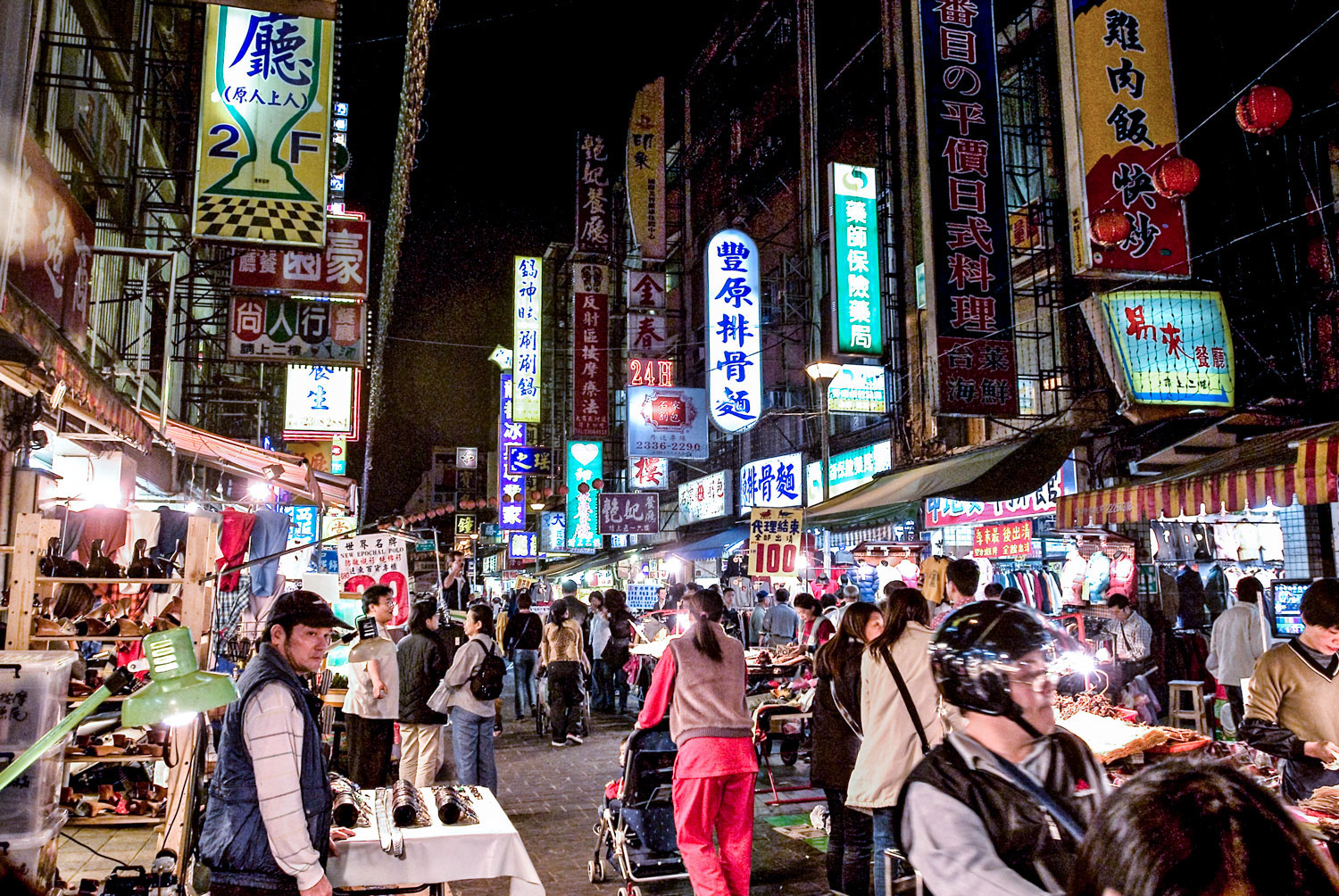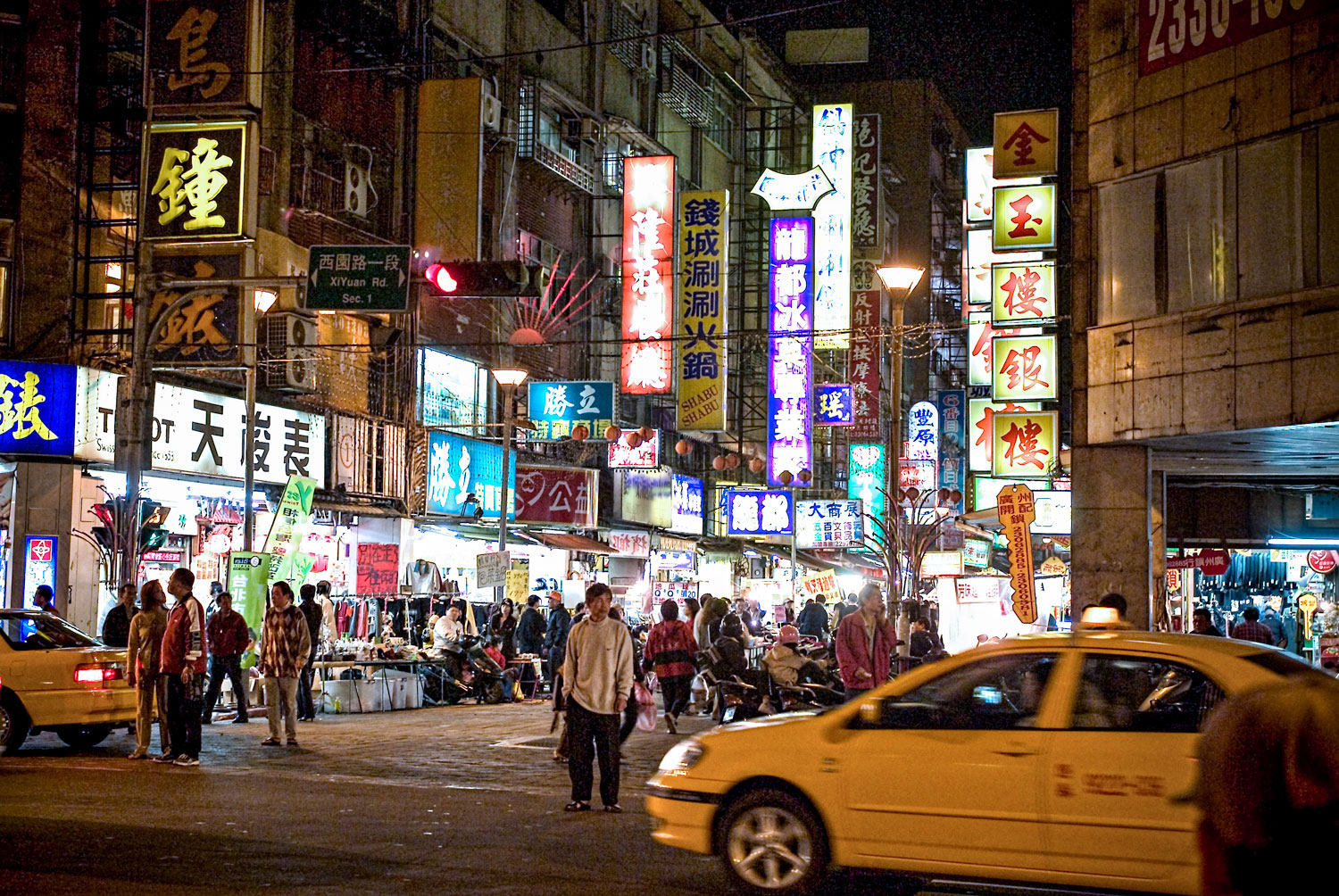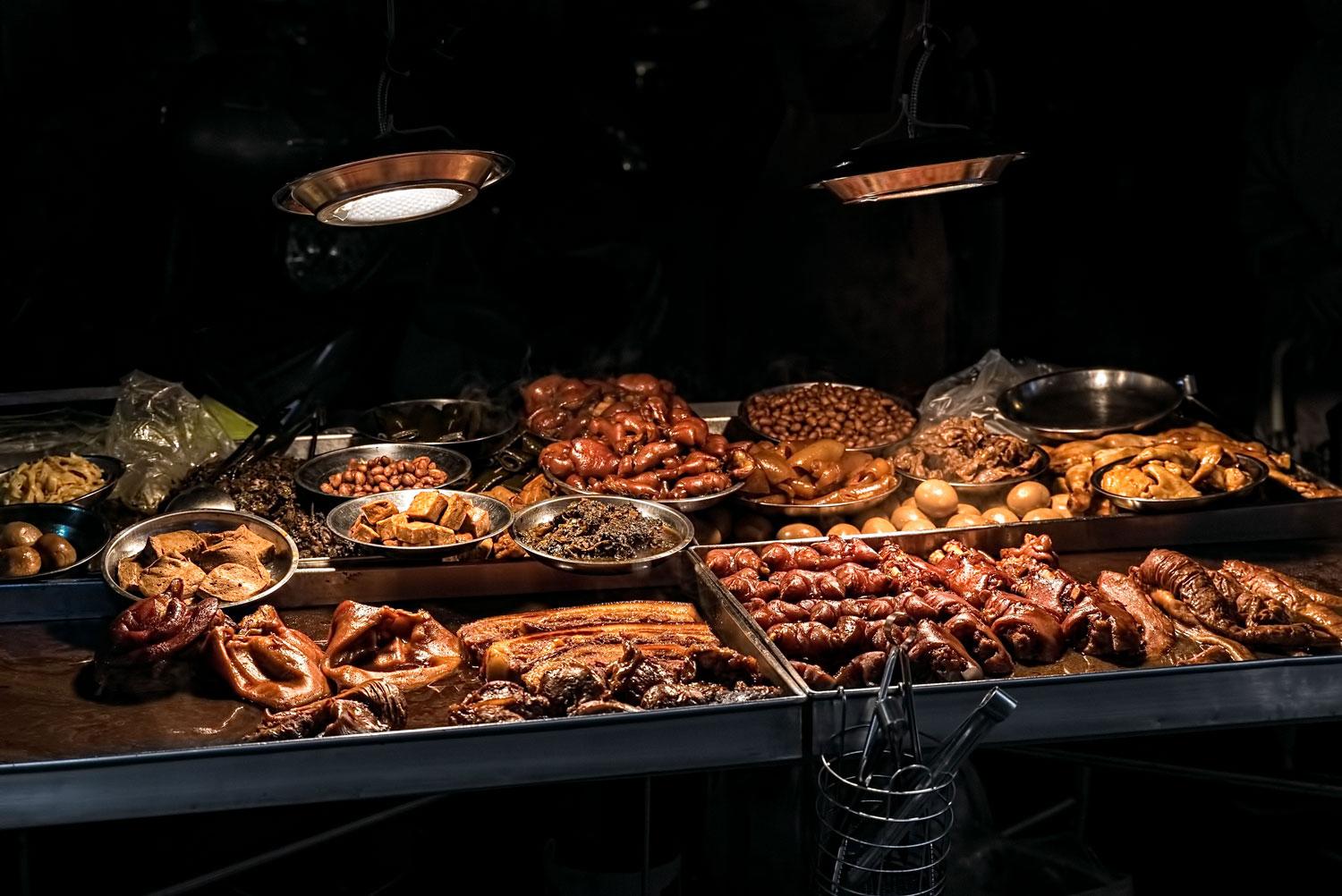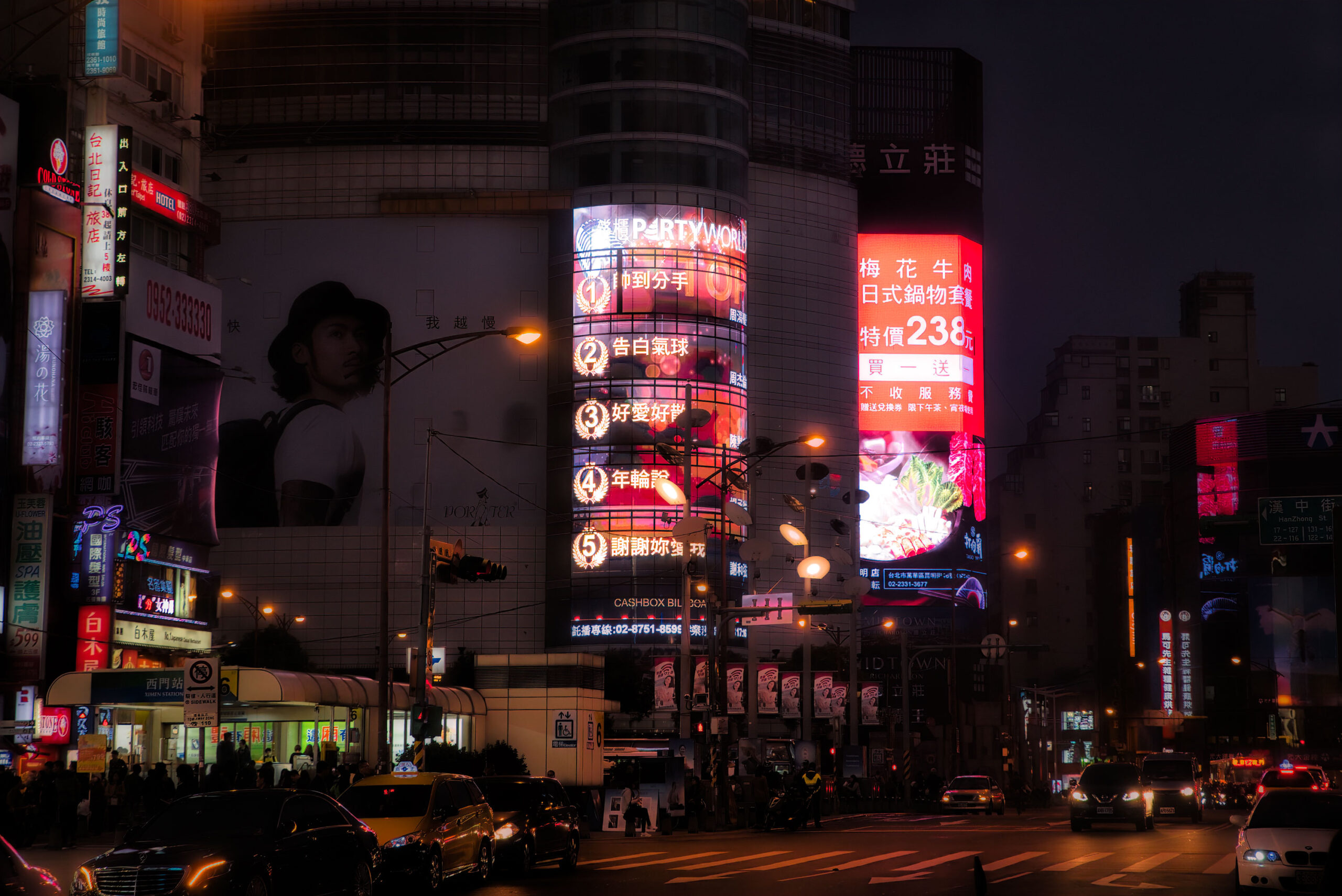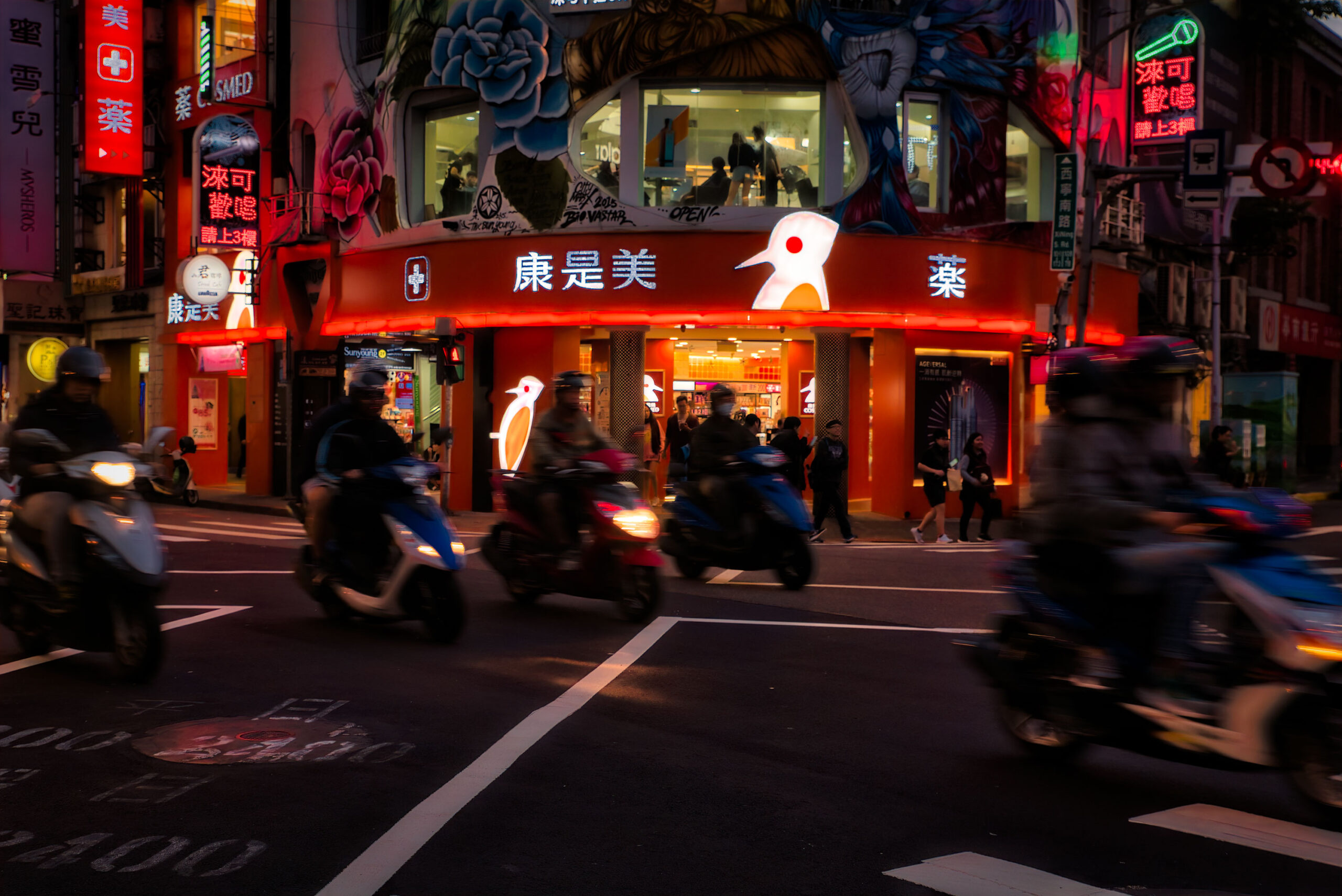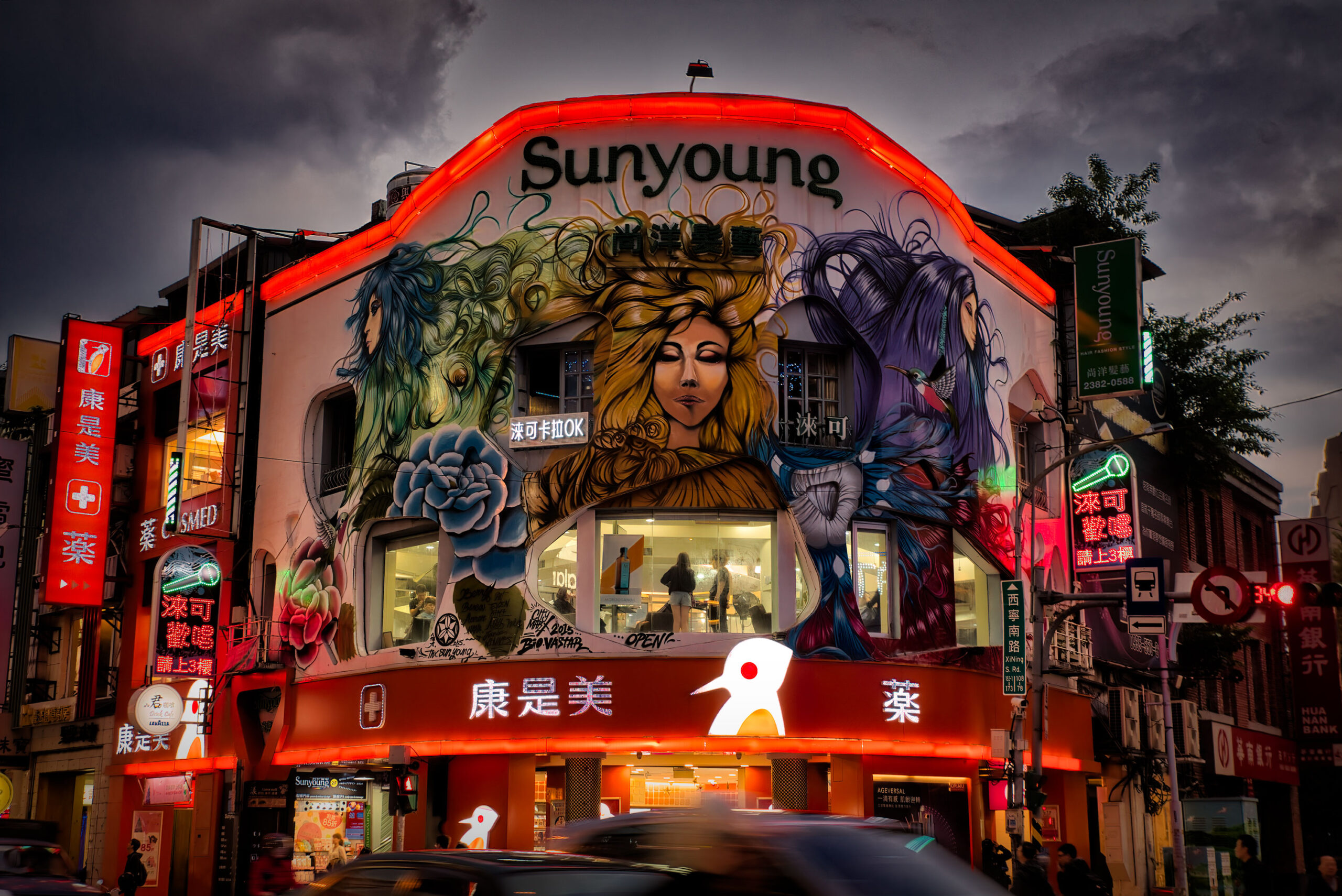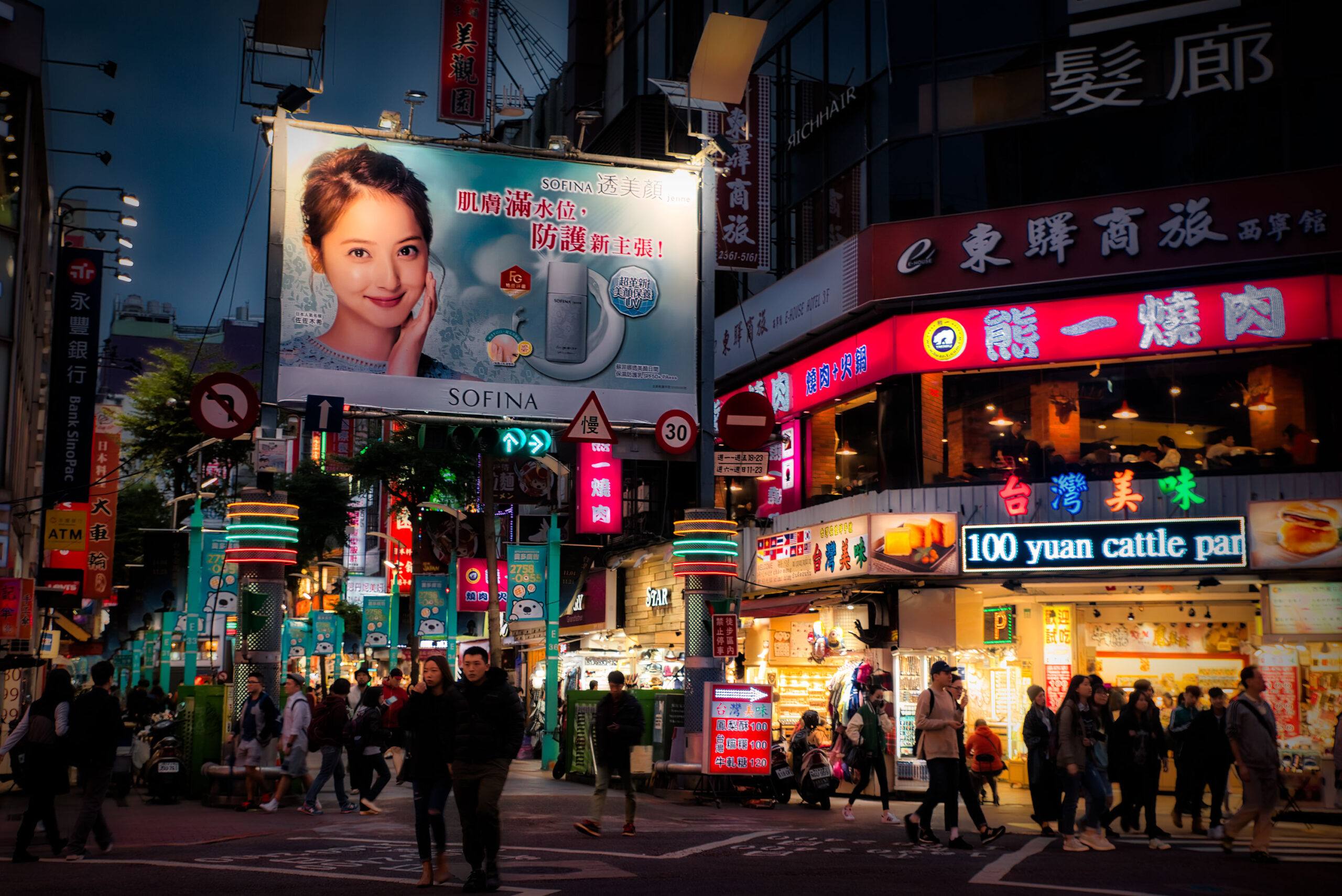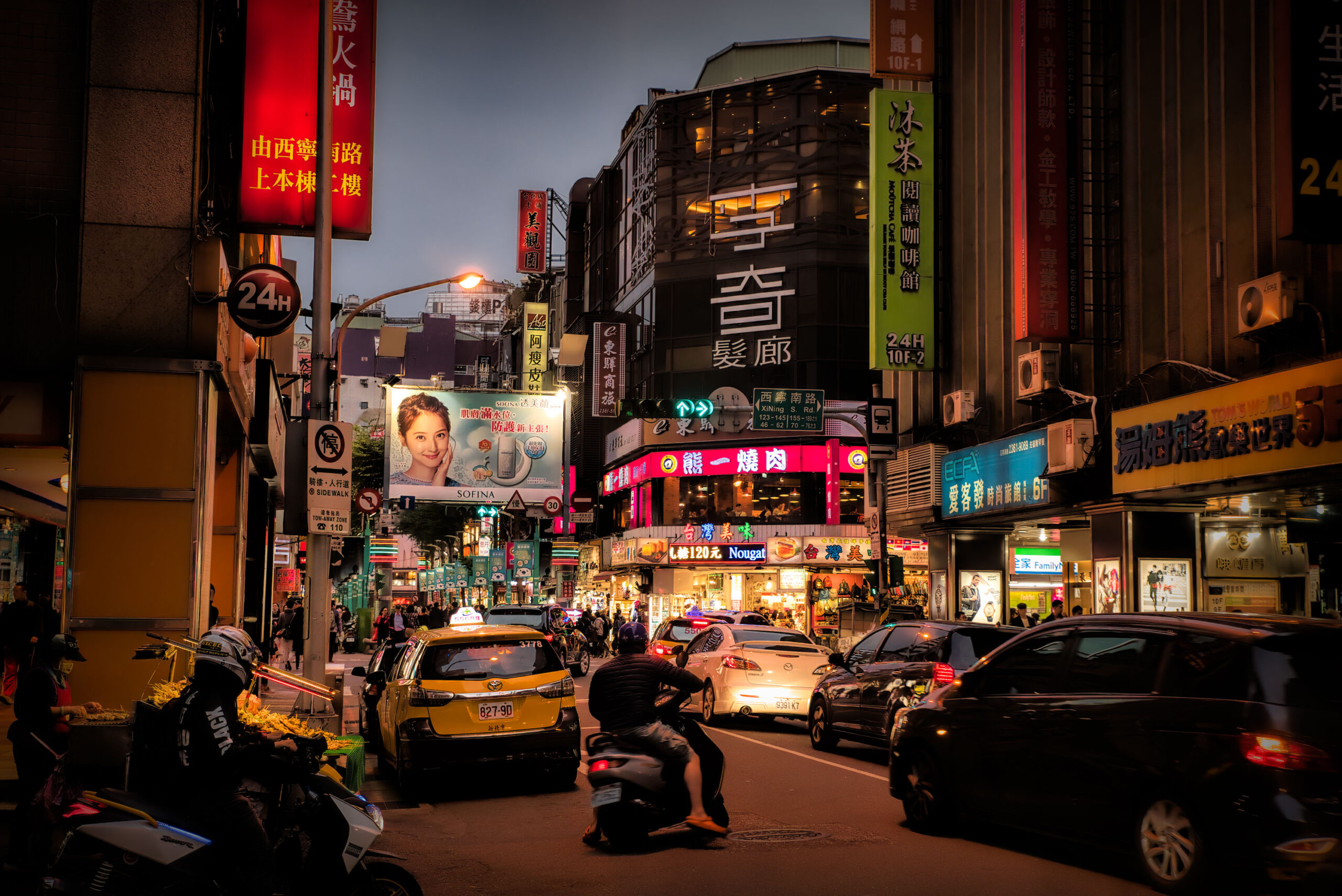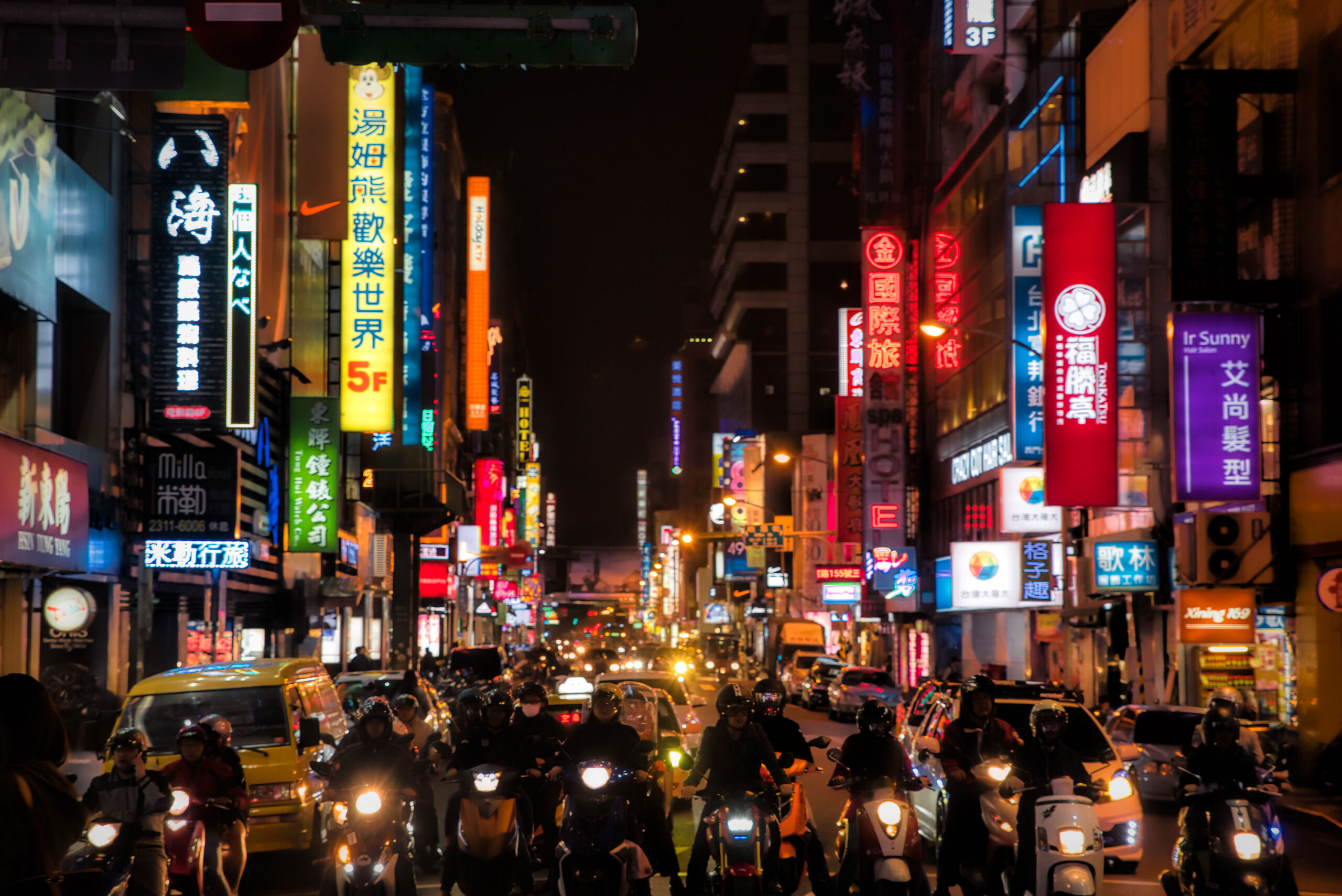Taiwan - The Beautiful Island
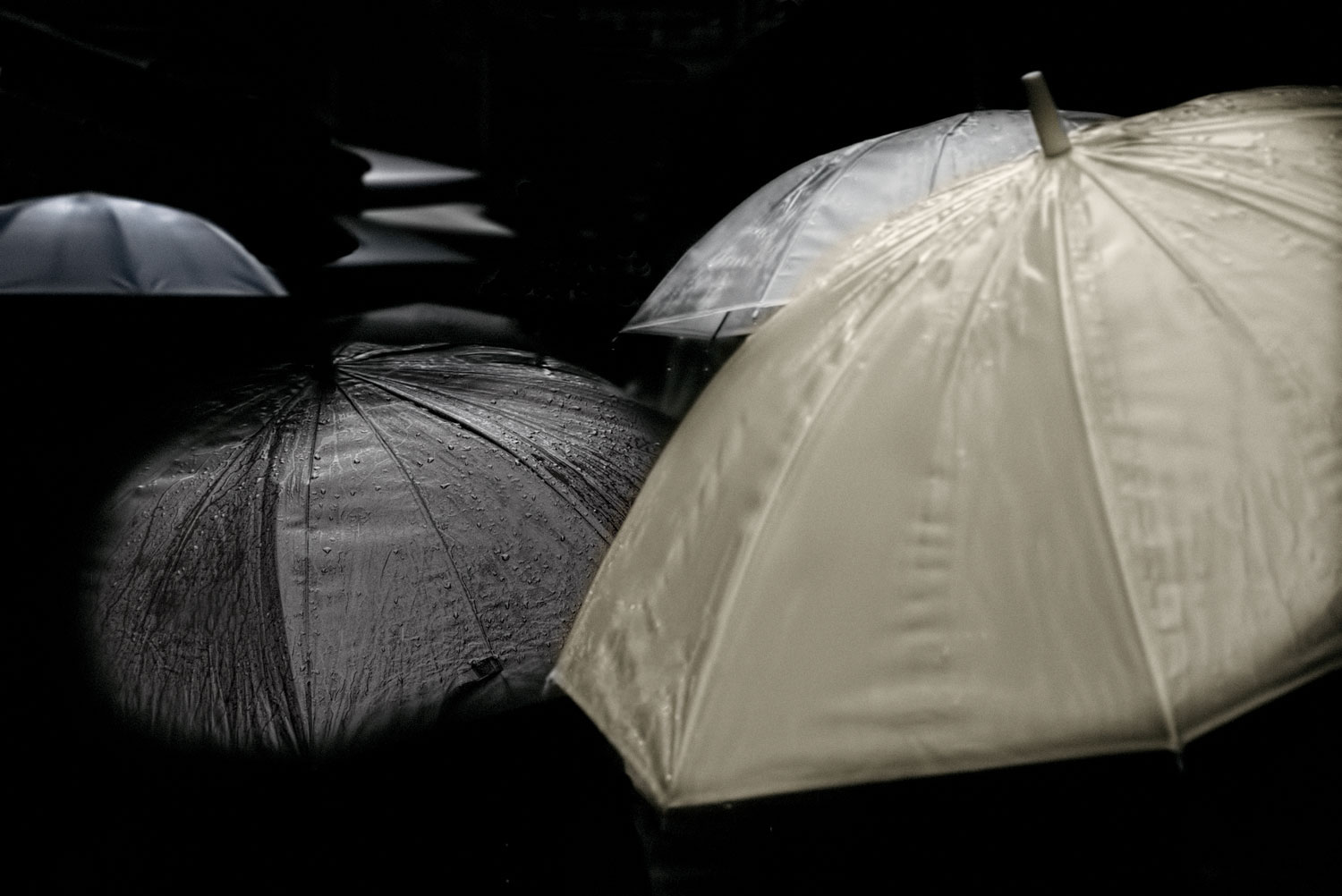
Arriving First Time—
14 hrs flight time after a fine meal in the International terminal at LAX we land at Taoyuan International Airport (TPE). We have been up for the better part of a day, and the time change is sapping our strength. We lost an entire calendar day flying west across the International Date Line. We left LA on a Saturday night and arrived in Taiwan on Monday morning… The fetching Lucia’s Brother, Ling Fu, picked us up, and immediately we started a tour. The airport is about 40km (27mi) west of Taipei, and Ling Fu drove a scenic route to Taipei. We stopped several times, mostly for my enjoyment, and Lucia had not been home for several years. We were exhausted from the flight, but did enjoy stopping in little villages off the main highway and tourist route. Starting to get a real taste of Taiwan, we parked on the main street in a small village somewhere in the mountains. Getting out of the car, I noticed a young girl walking around on tin can stilts with strings on each can to keep them in place under her feet. She was clomping along towards us maybe wondering, will things look this big when I grow up? Suddenly, she stopped, her back rigid, hands pulling hard on the strings as if to become even more still than she was in her frozen stance. With her mouth gaping open, she stood motionless, staring at me we locked eyes. That was too much for her apparently. She turned away for the safety of her home. This could have been the first sight of a Caucasian with a beard, and I was significantly larger than anyone else. I did not have the foresight to have a camera ready.
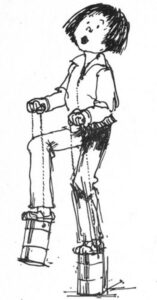
After scaring the crap out of a local girl we continued on. Visiting small shops in rural areas outside of Taipei I thought that I could have seen every mushroom I the world in just a couple of hours. At least we didn't have enough sleep to appreciate Ling Fu's effort! Then on to Taipei. I had lived in LA for 20+ years, been in Chicago, NY City, etc. Big cities no problem, right? I thought we could rent a car and drive around ourselves like we had done before in Europe, I quickly changed my mind when we arrived in Taipei. The traffic was incredibly dense, scooters everywhere, many of the streets had skewed intersections (they crossed at many different angles), with scooters whizzing by on both sides of our car. I became disoriented fast, it was cloudy, I could not establish which way was north, couldn’t read street signs or find our location with a map. Sooo, no way am I going to drive! Keep in mind, this was before smartphones, GPS, etc. Ling Fu got us to her mom’s place, somewhere in Taipei. We exchanged greetings, of course, we had to have a meal, and we easily went to sleep. Later, I woke to the sound of Beethoven, wait, I’m in Taiwan, right? I sat up and yessrei, Für Elise was flowing through the open window early in the morning… The fine sanitary workers who collect the garbage in Taipei play Für Elise over loudspeakers as they go about their business.
Still disoriented from travel time and losing a day, we were groggy. When we awoke and put on notice that we needed to get up and follow her mom and brother to breakfast and the morning market. Unlike anywhere I have been, just a simple walk to the street provided more eating choices than can shake a stick at. There is no real need to cook at home, many do, but not like in the States. All meals at almost any time are just a quick walk from wherever you are! No Denny's or House of Pancakes, those are nowhere around, rather small mom & pop establishments serving asian breakfasts, lunch, and dinner! Almost all are takeout, designed to order, buy, and take home. Now you're ready for the local market!
Locals primarily shop for vegetables and meats at traditional day markets in their neighborhoods. Early bird gets the worm, the best time for the most selection and freshest products is early. The variety is amazing, meats, fish, vegetables, fruit, spices, mushrooms, and things I couldn't identify. You can pick a live chicken and have it butchered, cleaned, and ready to cook right in front of you while you wait. There are supermarkets for other necessary products, but produce and meat/fish are traditionally purchased in the local street markets.
Another thing an awkward visitor may notice is the overwhelming number of scooters. Young, old, and everyone else use these scooters as their primary source of transportation. And a quick walk in the neighborhood her mom lives in you'll find street markets that are very heavily attended. You can walk through, you can drive your scooter thorough and even some you can drive a car through.
There are around 14 million scooters in Taiwan. They are the dominant form of transportation because of Taiwan's high population density, cost, and available parking. There are 23 million people in Taiwan, so you could say that every other individual has a scooter. The mostly temperate climate makes a 12-month scooter season. It does rain a lot, but the intrepid scooter wranglers have learned to handle that. They are also very good at juggling groceries, kids, and other traffic while on their scooters. For a little perspective, Los Angeles has a population density of 1031/mi², New York City is 2527/mi². Taipei has 3945 people in every square mile. That helps explain the prolific scooter phenomenon, and consider the area in each example. LA covers about 502mi², New York City covers about 468mi², but Taipei only covers 105mi². I noticed when outside of Taipei fewer scooters and more cars and trucks, and these cars and trucks are much smaller. Space is a concern here.
On my first trip to Taiwan, the fetching Lucia arranged a tea experience in a small business close to her mom's house. I did not know what the motive was. I have always really liked tea, especially Darjeeling and Earl Grey. She told me to come with her to this local business, which was closed, we went in and were invited to a tea ceremony. The tea was a local Taiwan home-grown Oolong. We sat down and watched them prepare and serve with a disciplined ceremony to get the end product just right. It was worth the wait, the most fantastic flavor! The best, greatest tea I have ever tasted. We were able to bring a package back home with us from the first trip and treasured it. On a return trip to Taiwan, we were able to go up in the mountains and visit a tea farming production company.
Mountain-grown Taiwanese tea is renowned worldwide for its exceptional quality, unique flavors, and the ideal natural conditions of Taiwan’s highland regions. The island’s tea culture has deep historical roots, and its mountainous terrain plays a starring role in producing some of the finest teas, particularly oolongs. Here’s a rundown of what makes these teas special, their history, and their modern significance at least as I understand.
The Perfect Environment
Taiwan’s mountainous regions—like Alishan, Lishan, Shanlinxi, and the Central Mountain Range—provide the ideal conditions for tea cultivation. Elevations often range from 1,000 to 2,600 meters (3,300 to 8,500 feet) above sea level. The combination of high altitude, cool temperatures, ample rainfall, and misty air slows the tea plants’ growth, allowing the leaves to develop concentrated flavors and complex aromas. Rich, well-drained volcanic soils add another layer of quality, while the frequent cloud cover protects the plants from harsh sunlight, enhancing their tenderness and sweetness to our benefit!
Historical Roots
Tea cultivation in Taiwan began in earnest during the Qing Dynasty (late 17th to 19th centuries), when Chinese settlers from Fujian brought tea plants and expertise. These settlers, familiar with oolong production, found Taiwan’s climate and terrain remarkably similar to Fujian’s Wuyi Mountains, famous for their own teas. By the 19th century, Taiwan was exporting tea, particularly after British traders like John Dodd promoted Formosa tea (as it was then called) in the 1860s. Under Japanese rule (1895–1945), tea production modernized, with a focus on high-quality exports, laying the groundwork for today’s mountain-grown specialties.
The previous information was dug up by research from the internet. Our time spent at the tea farm seemed to back up the research. Watching people harvest, dry, and process the tea leaves into an unbelievably tasty drink was very impressive. This was a small, privately owned tea farm. Their goal is to produce the finest tea, not mass-produced consumer tea. Can't imagine the scale of a supplier for Lipton or Twinnings as an example. If you love tea, a trip like this will fascinate you!
Some miscellaneous rambling travel. There are many museums, temples, etc. in Taipei. The coastline of Taiwan offers parks, marina's and commercial shipping. Everything that goes in and out of Taiwan does it boat. They have for years been building great sail and power boats for personal use. I lived on a CT-41 sloop rigged ketch for several years that was built in Taiwan.
Taroko Gorge is a very popular destination, it is a fantastically beautiful marble canyon. A very western friendly motel is available with great views and as an added bonus - California Wines...
Taiwan is small, you can travel the length of the island in one day. But the visual bang for your buck is very hard to beat.
Night Markets
Taipei is famous for its vibrant night markets, a cornerstone of Taiwanese culture, offering a mix of delicious street food, shopping, and lively atmosphere. Here’s a rundown of some of the most notable ones based on their reputation and unique offerings:
- Shilin Night Market: Often considered the largest and most famous night market in Taipei, Shilin has been around since 1909 and is a must-visit for tourists. Located in the Shilin District near Jiantan MRT Station, it boasts over 500 stalls. It’s known for iconic Taiwanese street foods like stinky tofu, oyster omelets, and fried chicken steak. Beyond food, it offers a huge variety of souvenirs, clothes, and a fun section of children’s games, making it great for families. It’s busy and tourist-heavy, but still a classic experience. Hours are typically 4 PM to midnight.
- Raohe Night Market: A favorite among both locals and visitors, Raohe is one of Taipei’s oldest night markets, stretching 600 meters along Raohe Street in Songshan District near Songshan MRT Station. It’s renowned for its black pepper buns, herbal pork rib soup, and Michelin-rated stalls like Dong Fat Hao for oyster mee sua. The proximity to Ciyou Temple adds a cultural touch. It’s less overwhelming than Shilin but still packed with variety, operating from 5 PM to 11 PM.
- Ningxia Night Market: Located in Datong District near Zhongshan MRT Station, Ningxia is smaller and more food-focused, making it a paradise for street food lovers. It’s famous for its oyster omelets (especially at Yuan Huan Pien, a Michelin-recognized stall), fried taro balls, and pork leg rice. Its narrow layout can get crowded, but it’s less touristy than Shilin, offering an authentic vibe. Open from 5 PM to 1 AM.
- Tonghua Night Market (Linjiang Street Night Market): Near Taipei 101 in Da’an District, accessible from Xinyi Anhe MRT Station, Tonghua is known for its local feel and authentic Taiwanese eats like gua bao (steamed buns with pork) and pan-fried buns. It’s quieter than the bigger markets, appealing to those seeking a less hectic experience. Hours are roughly 6 PM to midnight.
- Nanjichang Night Market: A hidden gem in Zhongzheng District, near Longshan Temple MRT Station, this market is less touristy and loved by locals for its traditional flavors. Highlights include tube-shaped sticky rice and savory pork buns. Its old-school Taipei architecture adds charm, and it’s open from late afternoon to around midnight.
Each market has its own personality: Shilin for the full tourist experience, Raohe for a balanced mix of food and culture, Ningxia for food purists, Tonghua for a local vibe near major landmarks, and Nanjichang for an off-the-beaten-path taste of Taipei. They typically come alive after 4 PM and run late, so plan to bring cash (most stalls don’t take cards) and comfy shoes for walking. If you’re picking just one, it depends on what you’re after—Shilin for the iconic scale, or Raohe/Ningxia for top-tier food with fewer crowds. What’s your priority—food, shopping, or atmosphere? That could narrow it down!
We saw snakes and snake meat for sale booths at the night markets, strange, you may think. Even stranger for me was the in-your-face signage in Mandarin and English saying "NO PHOTOGRAPHY". Since I was carrying a camera, their attention was trained on me. Didn't try to capture a sly image when they weren't looking... Without informed information, it appears that the visuals would probably not enhance sales!

